Portugal, London, and: Merry Christmas!
Friday, 23/12/2016

Our strategy to sneak up to Germany and central European winter via destinations known to and loved by us turned out to be golden! Not least because this, as stated before, means coming closer to our own comfort zone too, a kind of relaxation we could very well do with, particularly at the end of our travels, and given our rather numerous destinations throughout! For the house in Portugal we spent more than for any other accommodation we rented for three weeks at a time anywhere in the world (except Singapore ;-)), but that was very well worth it.




All above: ‘our’ hideaway in Portugal, Casa S. Miguel in Azinheiro close to Faro in Algarve, a true oasis… and with a cosy fireplace for chill evenings!
Again received with true Portuguese hospitality by the landlady and her family we were provided not only with a whole range of basic food for the start, but also with a bottle of wine and Kaki-fruit and Tangerines from the house’s garden, so we felt at home again immediately. For us particularly the peace and quiet were very soothing after the noisy flat in Barcelona! Staying in a hotel in London, our last travel destination, albeit a very affordable one, will be a final treat too! In addition, the winter storms of Algarve reacquainted us with winter as to be expected, very well sufferable in front of a cosy open fireplace.




The familiar, very pleasant accommodation and surroundings, as well as the, at times, rainy weather, also allowed us chance and leisure to spend a lot of time on preparation of our return, ranging from finalizing blog posts (don’t miss the two conclusion blog posts complete with our travel-resources!), from contracts to be reinstated, to new contracts, talks with public authorities, preparation of Claudia’s myoreflexology in Cologne, negotiations with employers, and the like.



Portugal is one of the best kept holiday destination secret of Europe, except for the British, who discovered this magic place for themselves early on but kept the secret ;-)), because of the current shortage of European holiday destinations some German colleagues discovered Portugal for the first time this year, which is good to hear, because the Portuguese need the business. Here there’s truly something available for everyone, and often you can find nature coming across as unspoilt as it gets! And everything is still very affordable. For us an extra helping of charm is added by Portugal conveying to us in many respects a ‘South America light’ feeling, but so much closer, and nevertheless unique, with its Fado, its partly very simple but always delicious dishes, its port wine, vinho verde, its Azulejos, its Quintas, its unbelievable variety in every part of the country, and a lot more!



How often have we dreamt of not returning home from any destination we’d holidayed at, but instead take that other plane, leaving for London! Never worked of course, but now our dream came true: from Lisbon not at all home, but to London! Happy Lifevoyagers indeed! London of course deserves a ton of blogposts, as fascinating as it is and always will be, so this is just a tiny declaration of love: We’ll never tire of London, as much seems to be sure.


This time it was our great pleasure to guide our visitor-friends, who’d been delighting us with their company for short stints in Singapore and Barcelona too, they’re London first-timers. So from the stay at mega-value-for-money Travelodge London City Airport Hotel, via a wonderful way to travel into town: Emirates Air Line from Royal Victoria Docks to Northern Greenwich, Thamesclipper from Northern Greenwich to London Eye, passing The O2, Canary Wharf, Maritime Greenwich, Tower Bridge, Tower of London, HMS Belfast, Hays Galeria, The Shard, Southwark Cathedral, City of London with Gherkin, Cheese Grater and Walkie-Scorchie, Monument, St. Bride’s Wedding Cake Steeple, Shakespeare Globe, Tate Modern, St. Paul’s Cathedral, OXO-Tower, Somerset House, Savoy Hotel, Charing Cross Station, Clock Tower of Big Ben, Houses of Parliament, and London Eye, what else to ask for as a first impression? Both Emirates Air Line and Thamesclipper, are much cheaper when using Oyster-Card rather than buying individual tickets.






Afterwards a yummy snack lunch at Borough Market, including gluten free delicacies, then onwards on foot, that way we managed to visit Royal Courts of Justice dropping in on a court session for a few minutes, robes and wigs and panelled courtrooms as impressive as ever, Somerset House with its beautiful ice rink, Savoy Hotel for an impression, Carol Singing at Trafalgar Square, ‚Dinner‘ at Hummus Bros (yummy!), then Picadilly Circus and Regent Street in its Christmas decoration glory, and off to home for a night cap, ALL pubs in London being ful to bursting with office Christmas parties… and that was only the first day, you get the picture… ;-)). Anybody looking for our insider tips for London is very welcome!


The flight home on December 20 from London Stansted to Cologne/Bonn was uneventful, and while approaching we were granted the joy of a view of the AXA-(advertisement)Tower and the Cathedral (scried in this sequence ;-). Our Airbnb-hosts were already expecting us and invited us in to their living room for a chat, just as we like it best! We weren’t feeling particularly nostalgic, our time has been so special and rich, so we’re coming home content and satisfied, and above all immensely thankful. But because we’ve last been living in Hamburg for a decade, returning to Cologne, our home town, feels even more like a journey into the past than returning to Hamburg would have, a really weird sensation we’re still dealing with. Our conclusion of our two very special years is already in the making, but first we’ll have ourselves a very merry Christmas with our families, and a merry and peaceful Christmas to all Lifevoyagers-friends and –fans too!
Heartfelt thanks for your company, love to all of you, and see you soon in this space!
Claudia & Carsten, Lifevoyagers

On to Europe!
Tuesday, 22/11/2016

Above and below: Walter-Sisulu-National-Botanical-Gardens in Jo’burg, mind you, the turtle is alive ?!

After Namibia we’d truly earned ourselves ten days of relaxation, website decluttering, preparation for Europe and our return, in Johannesburg, THE hub from Southafrica to Europe. Fantastic private stay with maximum, loving hospitality at the dear sister-in-law of a dear colleague of Claudia’s, so we slowly unwound from our Namibia-Adventure. Peaks in adrenalin then only to be had while walking to the supermarket on foot and taking a taxi back, both for Jo’burg described as highly dangerous, but felt by us as harmless enough, even if only in hindsight…, and our first Uber-ride ever, and then to the airport, of all destinations, but all went well, inc. welcome-discount…
At the weekend during our stay our dear host, who we couldn’t possibly have more in common with during our chats in the evenings with a nice glas of wine, even took the time to take us on some outings, take us to mass in her parish, and take us out to a nice dinner in an Argentinian restaurant in Jo’burg Downtown, see all of these above and below! Again we hope to return to Johannesburg one day!

Sunday Food Market, total relaxation…?

‘Fare well’ dinner in Jo’burg, and there it was again, the huge, yummy steak, with corresponding knife of course!

Again Carsten flew Business Class and Claudia Eco, both on Air Miles, but Swiss Int. Airlines invited Claudia to the Business-Lounge, how nice, and how convenient! Tonic water, wifi, bubbly, sushi, what else can you ask for?
From Jo’burg we were off to Zurich, welcoming us with central European autumn, but also with our utter comfort zone, and we treated ourselves to a tram-drive into town and the purchase of our favourite chocolate truffels on our 6 hour layover, and then on to the Mediterranean, to Barcelona, one of our favourite European cities, no extra Airmiles!

Panorama-photo of the view from the roof-top-terrace of Restaurant 1881 per Sagardí of Museo d’Historia Catalunya, where you can even enjoy just a coffee or a drink, definitely an insider tip ?!

Lifevoyager’s luggage nicely unpacked and stored, fan, bed-linen, towels of course belong to the tiny flat, nicely central in the old town, but more expensive than anywhere else in the world (even when we looked further out, outside of Barcelona), and unfortunately both the Spanish and their houses live their lives mainly at night, so no good night’s sleep to be had, we had to use earplugs again… although advertised as ‘quiet’… The only downside of our visit to Barcelona.

Above and below: This is how Barcelona with its nice and numerous city beaches can look in November, above at a weekend, below midweek a little farther out, so no ‘slowly accommodating to European winter’ for us… Despite two years of mainly summer we enjoy the sun in this city, at times with ‘chill’ temperatures in wind and shadow, a lot!



Tapas-Menu in Restaurant Elisabets 1962 of an evening (gambas are still missing in the photo) contains no less than 11 Tapas, one drink (even Sangria, beer, or wine), a coffee and a shot, at 16,50 Euro, for us it’s one of the best offers of this city, because this feeds two! On our first visit with friends we carelessly for four persons ordered three extra Tapas with the two Tapas Menus, and then nearly didn’t manage it all! It took a lot of research and a few expensive failed attempts, before we identified this one!

Every now and then Barcelona reminds us nicely of Buenos Aires, here the fountain in Parque de la Ciutadela, and below the beautiful parakeet rabble!


And of course the parks are our favourites here too: Above Parc del Labirint d’Horta, below Parque Güell in the mainly freely accessible areas, only the ‘center’ around Gaudí’s salamander costs an entrance fee for a visitor slot, years ago we got to enjoy it still for free, Barcelona is a longtime love of ours…

Gaudí with his combination of esthetic beauty with necessary practicalities never fails to enthuse us, here the chimney designs of Palau Güell, well worth seeing, and free on the first Sunday of the month!




Even Claudia’s two eldest god children, who visited us here, see below in lock-step ?, were impressed by Palau Güell!


In Granja M. Viader you can enjoy, beside some gluten free delicacies (baguette with ham and cheese, sponge fingers, Magdalenas, etc.) a ‘portion of whipped cream’ (s.a., unsweetened, more like clotted cream, but a little more fluffy!), a ‘portion of hot chocolate with whipped cream’, or a ‘portion of whipped cream with a little hot chocolate’, apart from the usual dairy, cake and savoury products on offer, delicious!

Above and below: this time we nearly went up them all, the marvellous viewpoints of Barcelona, obvious, with that much time on our hands… a pleasure! From Montjuic, from Parque del Guinardó and from Jardines del Turó del Putxet there are very nice views, apart from Parque Güell and Tibidabo of course!




Blabbering being one of her strengths, the Brazilian students of journalism with video-project chose the right person to answer their questions about visiting Barcelona but also some philosophical ones, on top of MUHBA Turó de la Rovira … There will be no publication, we’ve been assured…?


On sunday while strolling around town again we came across this breathtaking contest of the different Castellers of the region (link to Wikipedia-entry), concentration and confidence in themselves and their partners of the youngest, highest climbers is unbelievable…
Also, we had the pleasure to listen to Ensemble Nobiles in another concert for a donation in the German catholic parish in Barcelona, after having discovered them for ourselves last year in Singapore, they travelled to Spain for a choir contest and ‘accidentally’ gave a concert in Barcelona too while we were here, how crazy is this? We’re now groupies, but miss the concert in Bonn on 18.12.2016 only by days (return on 20.12.). Heavenly treat!
In Barcelona beside our god children we’ve been visited by dear friends again, and did we find old friends again we hadn’t seen in 6 years, all of this such a pleasure! Barcelona is very well worth visiting in the winter months, because of the current situation in Europe we don’t even dare imagine the masses of tourists in summer, it was that full even on November weekends! This city is certainly worth one or more trips anyway! Now we’re on to Portugal in a house already known to us on Algarve, on top of this we have a rental car again, granting extra privacy too, so ultimate comfort zone, exactly what we need before returning! And then there is still London for the final…?
Meanwhile lots of love, thanks a lot for bearing with us till the end (nearly)! Please don’t miss out on Portugal/London and the conclusion afterwards ?
C&C, Lifevoyagers
Namibia – Total cost is too high!
Is there a country in the world that isn’t worth seeing? From our point of view: not really. But today we know there are countries where the cost for visiting them, or else each of their ‘must sees’ again, is simply too high, example Namibia:
The country consists mainly of different ancient deserts and sparse landscapes, nevertheless enchanting, beautiful, manifold, partly unique eco systems, which can, attention, only ever be sensibly inhabited by humans in symbiosis with the given conditions in these places, just like back in the times when the indigenous peoples did so successfully for thousands and thousands of years, and which originate even hundreds of millions of years earlier from the mega- and super-continents Gondwana and Pangäa.

Contrary to expectations the roof tent was cosy and well airable (is there such a word?), but our trust in the vehicle was already damaged massively when upon pick up it had to have another track and steering wheel repair, the consequence was an equally massive delay and pressure for time to reach the first accommodation in time, despite pick up early in the morning…

Bottom left: this shows the ‘gravel roads’ shattered by the vibrations of the springs (explation in German, sorry…) of countless pot hole battered vehicles we encountered nearly 50% of the time and the distances, you just cannot immagine how clattering this is, nearly impossibe to make a photo, so the other photos show more convenient gravel roads…

Our cosy and ‘secure’ home on the roof!

Camping wasn’t the problem…

No comment… ;-))
So the cost is too high,
paid by and still being paid by indigenous peoples, mostly nomads, when the Europeans, in Namibia namely the Germans, tricked them out of the right to their land and limited or destroyed their lebensraum/habitat, nomad living is no longer possible today because of the property rights and the hunting ban even for own consumption, the Germans killed 50% of a particular local people when striking down their uprising, to give just one tiny example, by the way: apartheid also ruled in Namibia when the country was still governed by South Africa. Today there are 2,1 mio inhabitants in a country double the size of Germany, 7% of these are white, and of these in turn one fifth is German or of German descent, however ownership of property is, despite very moderate but ongoing redistribution-efforts, still mostly in the hands of white people…

The camping ground in the Kalahari had individual sanitary facilities = cost too high for local nature…

The demonstration of the bushmen of the San people how they’d been living before their living environment was taken from them was very impressing. They love these demonstrations and value highly the willingness of the owner of the Game Ranch to accommodate them on his land and to offer his guests these bushmen walks.

Assembling a trap for an ostrich…

We felt honoured to have been granted a tiny glimpse into their former lives… We liked the Kalahari a lot!

Shuttle from campsite to main lodge of Bagatelle Kalahari Game Ranch, convenient and environment friendly!
The cost is too high,
paid by and still being paid by local nature including fauna, for the capers of the whites, be it because of, just for example, the quest for mineral resources, the eradication of the local wildlife, irresponsible water consumption for different goals including tourism everywhere at any cost, and by a parasitic, as opposed to symbiotic lifestyle in general. Even the discovery of a huge sweet water reservoir in 2012, which allegedly can supply “half the country, now suffering from draught for four years already, theoretically for 400 years” doesn’t help, similar to all other underground water which here is tapped into everywhere, without consideration that these reservoirs, as long as they exist, may very well have to be calculated into the balance of the total eco system, see drought…

Fish River Canyon, allbeit very beautiful and OF COURSE a superlative: second biggest canyon after the Grand Canyon according to one particular calculating method… But only to be reached by very long detours and accommodation at the cost of the local nature…

Breakfast at the Canyon now that we were there was an excellent idea, what a view…

The cost was too high,
even paid by German and European immigrants for a life totally against local nature, just like not least ghost town Kolmanskop close to Lüderitz at the coast, reconquered by the sand, or else, to us, soulless Swakopmund, allegedly residence of choice of many German retirees, despite the hazy, wet and rather chilly coastal climate, both surrounded by total desert. To settle European style in by far predominant desert climate is roughly as clever as the idea of Dubai, wrestled from total desert and run at unbelievable cost of every variety in total desert, the demise of which we or else the next generation will also be witnessing, in our minds…

Luderitz, named after the German merchant who took an interest in Namibia even before the Kaiser and Bismarck, ailing away today with extremely high unemployment and looking abstruse, with German looking houses in the desert roads, the railway has been under repair for years and so isn’t operational…

By far less important, yet to be considered anyway:
The cost is too high,
paid by your common tourist covering hundreds and hundreds of miles on caterpillar-rutted gravel roads of all ‘qualities’ from ‘must see’ to must see’ in a battle of material and waste of resources for man and vehicle defying comparison, both on the drive as well as in accommodation at places where ‘civilised’ (and therefore wasteful) accommodation was never called for, with all of the consequences all of this has for the respective eco system, effecting again in nature paying a cost far too high even today.

The breathtaking dunes in Namib-Naukluft-Park at Sossusvlei can, after a massive several hundred kilometer gravel road drive, be reached from the Sesriem Rest Camp within the Park by a 65 km tarred road. Below: one of the bizarre Quivertrees found in this country, and a Carsten who is relieved to have reached another destination without a break-down of the car or a tyre puncture, different from many other roof-tent tourists…


Picturesque ‘Dune 45’, another ‘must see’, at km 45 of the tarred road to the Sossusvlei-Dune, the latter only to be reached by another few kilometeres sand piste with four-wheel-drive, we just left that option be…

After another super stressing drive from Sossusvlei to Swakopmund we decided without further ado to change our route and to not drive the 500 km shattered gravelroad plus final climb to the plateau in Damaraland, but instead to drive to Weaver’s Rock close to Waterberg Park on tarred roads, thank the Lord they had room for us, what an oasis, but also a still operational reminder of the German colonial times…
When you then consider that of the not particularly cheap cost for such a tour rather little finds its way to the black or coloured majority of the population, then you know why the indigenous peoples are still paying today.
Of course white property and tourism business owners create a lot of employment ‘western’ style, of course history cannot be undone, of course indigenous peoples wrestled with each other for habitat before the Europeans came along to fight them for habitat, of course government’s policy for redistribution of property of the land by prior claim and educational and financial support for local coloured citizens in case of a sale of a ‘white’ farm is a very moderate one, particularly when compared with the neighboring countries, and of course we don’t have a remedial proposal or a solution either, except as one piece of the puzzle at least a much more rigorous eco-friendly tourism, thus fashioned either much more expensive and/or much more frugal (solely groups, symbiotic accommodation, etc.)

The wildlife, or what’s left of it, is no doubt fantastic. Bu whether poolwater drinking Oryx are desirable is to be doubted…

Pure awe, there it comes, the first part of a very big herd of elephants, to the water hole in Rest Camp Okaukueju in Etosha National Park, soundlessly approaching with elegant moves, the patriarch/matriarch always safeguarding the group (with African elephants actually both sexes have tusks)…


Peacfully united… ;-))

Deeply impressed, but very much stressed out lifevoyagers, Claudia’s escaping right eye talks volumes, truly happy faces, as usual in our selfies, look different…

And there they leave again, in total serenity…

You might get the impression the giraffes ‘on duty’ are posing for the tourists, but in fact we were just blessed with this scenic encounter! We met giraffes again and again, on our self-drive-tour through Etosha, of course again limited by the vehicle, the more kilometeres, the more risk of breaking down in the middle of absolutely nowhere…

Just a second… this cannot possibly be… can this be actually true? Shortly after Carsten mentioned he was hoping to see a Rhino at the Okaukuejo waterhole tonight, we encountered, again in the middle of nowhere, this guy, one of the last of his species, now please don’t make him angry…! How blessed we are indeed!


Few kilometeres ahead we found ourselves among a herd of wildebeest, also of the antilope species!

And short before the Camp, on our sundown trip, we met the herd of elephants again, here you can see at least three of them, two to the left of the copse and one to the right of the further most sun ray, in the shrubbery.

Nevertheless Carsten’s wish to see a rhino at the waterhole was also fulfilled, here to the right, with three giraffes to the left.
Would we have been able to know all of this before booking, and can we be accused of not having done our research properly? Yes of course, and we hope that we’ve now once and for all learned our lesson! After all the in all respects BY FAR most expensive part of our whole journey was also BY FAR least enjoyed by us, because our dismay regarding total cost (see above) and degree of wastefulness mostly prevailing… The roof tent on the other hand was very cosy and roomy, this didn’t bother us, contrary to prior expectations.

African sunsets… again just a selection… this is when you start to dream…

Our advice: the ‘must sees’ of Namibia are either to be visited very selectively, again in selected projects which are compatible to eco- and social-systems, rather in a group, not at all by an individual tour covering ‘everything’ at all cost, or else to be enjoyed in an illustrated book reveling in the knowledge that this ensures the conservation of an age old part of nature because one has decided against disturbing it.
We are of course deeply grateful to have been able to see all of this, but still total cost was far too high. Now we’re relaxing from the to some extent unfortunate Namibia Tour for nine days in Johannesburg, from where our Air-Miles flight takes off on 25th of October to Barcelona via Zurich, and we are back in Europe for the first time since 13 months!
Love to all of you and thanks a lot for your eye and ear! We’ll come back to you soon with another blog post from Spain,
Claudia & Carsten, Lifevoyagers
South Africa – A Garden Eden? Part 2
Hello again, in the second part of this blogpost there’ll now be less text and even more photos, all of which stress that this actually is at least a fantastic garden…
In West Coast National Park there are carpets of flowers that defy description in August and September, and a usually closed part of the park gets opened to the public, it’s impossible to get one’s fill of staring, the colours are unbelievable…:




With us, food is never a distant topic, so please find a choice here: delicious & affordable oysters on the Saturday market at Old Biscuit Mill in Cape Town, Sushi at Willoughby’s at the V&A Waterfront in Cape Town, disappointingly not as good as in Cologne or in Singapore, and gluten free Pizza with a chick pea base at Massimo’s in Hout Bay, paradise…, you can even pre-buy slices of pizza for people in need, excellent system!

Stellenbosch cannot be left out even/particularly by travelers like ourselves: 4-courses-winter-menu with accompanying wines plus bubbly for aperitif on the house for ca. 24 Euros, everything in excellent quality, so we treated ourselves to the most expensive restaurant visit of our whole journey, in the restaurant of the Clos Malverne winery, the view to the winterly vines in springlike temperatures speak for themselves, the photos of the four gluten free courses too… Even if the low price was the result of despicably low wages, which it of course might be, this is still more of a present to the customer, probably opportunity cost for advertisement, but of course as a company, you fist of all have to be able to afford these at all…



Cape Townians enjoy their veggie-fruit-lifestyle markets a lot, particularly on Saturdays, just like us, we liked this one best: ‘May the wors be with you’, Wors = Afrikaans for sausage, but pronounced like the English ‘v’, a message from the butcher on the market:

Fish and seafood are of course called for on every coast, we particularly liked the squid steak of Hout Bay’s ‘Lookout Deck’, bottom right, large, juicy and tender…:

National Botanic Garden Kirstenbosch, one of nine national botanic gardens in South Africa, on the eastern slopes of the Table Mountain Massif in extraordinarily beautiful settings with breathtaking views and sights, of course exactly our cup of tea, we spent a whole day here, you may pick nick at leisure, and the tree top walk reminded us a lot of Singapore:




Fauna on the side of the road, these just have to be photographed… Whether lizards of all kinds, penguin of the same kind as in Bahia Bustamante, potentially dangerous baboons with kid (!), guinea fowl, agama, Riesenheuschrecke, sunbird, toad or lady ostrich, and to think that of course we missed most of our fellow company…:





Visit to the cape of good hope, not even we could resist this, unique views and sights inclusive, this is the most south-westerly point of Africa:




Single blossoms cried out for our particular attention, especially the Pincushion-Protea on the second photo and the King-Protea, the national flower of South Africa, on the last photo of the blossoms series, but we also didn’t miss the smalles ones:




And there she was, our first King Protea in the wild in Assegaaibosch Nature Reserve, connected to Jonkershoek Nature Reserve, which sweated us with its 10 km off-road-one-way-round-trip, didn’t even deserve to be called a gravel road… Took us 1,5 hours, of course without the breaks and walks for gazing and marvelling, both not at all possible when driving…:



Silvermine Nature Reserve offered in just one afternoon an astonishing variety, again we had to avoid baboons (top left), lay the cape peninsula at our feet, o else False Bay, or else Silvermine Reservoir with numerous barbecue spots and opportunity for swimming (in summer), all fantastic…:


Harold Porter National Botanic Garden, directly connected to Kogelberg Nature Reserve, offers not only fine Fynbos-Gardens but also walks along the slopes of the reserves, excellently signed:



From Cape Town numerous other Nature Reserves and National Parks can be visited, let alone the uncountable private game resorts offering mini-safaris, but we’re going to wait till we return in order to then visit Krüger National Park too, we would always come back in September too because of the perfect temperatures for walking, no sign of even sub-topical humidity. Until then we hope to have gained more knowledge of whether and how to contribute at least a tiny little bit to a reconciled future of this country…
Now we’re off to Namibia on a 4×4-roof tent-tour, just the two of us but organised, we are veeeeery excited and are going to report!
Love to all of you and thanks a million for your continued interest!
Claudia & Carsten, Lifevoyagers
South Africa – A Garden Eden? Part 1 …
In retrospect: first breakfast after arrival in South Africa, so still a week before the farm, in Leopard Rock Café with a view to Goribi Gorge, what else can you ask for? All following photos until further notice also still from before the Workaway-Job: 

One fact is indisputable: regarding to nature South Africa plays right up there in the top league worldwide, in our eyes doesn’t have to hide behind for example New Zealand, we’ve seen landscapes in South Africa that cannot easily be equaled elsewhere, and the diversity is an added bonus, we hope the photos show this! Access to these beauties is easy for people with a car who can spare a little money (doesn’t apply to the majority of the locals…): Organised either in National Parks with higher entrance fees, or else in Nature Reserves, more affordable, the visitor is provided with good infrastructure and information, and can enjoy strolls, day walks or even multiple day hikes. We made a lot of use of the strolls and never tire of ‘goggling nature’.
Addo National Elephant Park, Elephants and more, in amazing landscapes, all of this in just one afternoon, there were also warthogs but they were camera-shy?:






Upon arrival we were of course aware that violence and crime still play a big role in South Africa, more in some places, less in others, and there also was, on top of the alert of the German Foreign Office, at least one respective hint of one of our accommodation hosts on our journey from Durban to Cape Town. Similar to in Colombia we tried to protect ourselves from potentially dangerous situations by using common sense, for example never leaving the car behind once fully laden, no things left visibly inside the car when parking it, not being in the streets after dark, we don’t wear any valuables on our persons anyway, but these are of course just the minimum measures with dubious effect once someone really meant business.
Robberg Nature Reserve in Plettenberg Bay, perhaps our most beautiful walk… Don’t miss the seals on photo two and the Dassies on the last photo!:





On one hand we so far only ever had contact to nice and friendly people of all origins, but in everyday life our general feeling is, not least because of the crassest clash of the terribly poor and the terribly rich so far, that the former opponents of Apartheid times still have to process so much history and equally current problems, that still a lot of time and, if ever possible, forgiveness is needed, and as a result there is tension in the air more or less permanently, and we as ‘whites’ virtually feel guilty automatically. In addition we finally knew how a minority really feels once driving through all black towns on our way from Durban to Cape Town, simply by our being present.
Cape Agulhas, this is where man decided Indian and Atlantic Ocean meet, rather than at the Cape! :

What we had not been fully aware of upon arrival, is the following information, particularly in combination, which of course only touches all the issues only in the slightest…:
- The whites in this country only amount to just under 15%, with a tendency of decreasing further since end of Apartheid 22 years ago, but even then there weren’t more than 20%, a small minority suppressing the big majority, a recurring pattern of colonialisation…The ‘Homelands’ had been created by the Apartheid government to ‘hive off’ ghettos out of South Africa to increase the percentage of whites in South Africa…
- Cape Town as such has less than 500.000 inhabitants, only the huge metropolitan area of Cape town with its more than 2.400 km² counts 3,7 mio inhabitants, but this figure is always given as inhabitants of Cape Town, from our point of view again all kippers and curtains…
After four weeks far outside our comfort zone we managed to snatch for the next four weeks an Airbnb bargain at lovely Dusty’s (remember: min 28 days tend to be MUCH cheaper than a single night times 28, try yourselves for fun! And of course we’re off season, in the last winter month of the Cape!) in this bay, Lllandudno, underneath one of the Twelve Apostle Peaks of the Table Mountain Massif to the south of Cape Town, and are enjoying thoroughly, see for yourselves…:


- Apartheid started in 1948, when racial segregation, in a ‚clever‘ move, was cemented into official law, with all consequences, by the whites. Before, there had at times been limitations to the right to vote for women, but not for black/coloured people, after the end of slavery of course. It was also during Apartheid that the ghettos of the Townships (predominantly wood & sheet huts) were created, the biggest Township of Cape Town, Khayelitsha, counts more inhabitants than Cape Town Central, let alone all of Cape Town’s Townships together, so the Townships still exist today at least for the following reasons:
- Mega-fast and –heavy urbanisation/rural exodus after the end of Apartheid, but still continuing and increasing today, with all its ugly consequences, and the biggest span between rich and poor worldwide (see Gini-Coefficient), 57% of the national income are allotted to the richest 10% of South Africans, 1% to the poorest 10%.
Still all Llandudno, difficult to leave this bay at all for outings, but the Atlantic is of course verrrry cold… The surfer actually is Carsten with a wig… don’t panic, just kidding ?:


- South Africa receives a lot of African refugees and records an increasing number of applications for asylum, this increases averseness to foreigners particularly among the poorest of citizens, both of which of course often meet in the Townships, so there is, not least because of these facts, a tension within the black population too, to say the least. (The word ‘coloured’ is deliberately not used here, because this term was used very differently in Apartheid than generally used in the rest of the world, explaining this would be taking it too far here. Also, it simply isn’t possible to be ‘politically correct’ in writing any of this, it’s a can of worms…).
Llandudno the third…


- To this day it has not been achieved to provide all Townships at least with drinking water-supply and, equally important, -disposal (hygene), disposal of waste, electric power, affordable public transport (a basic prerequisite for being able to reach a potential working place), among others, of course a relocation is not at all sensible because of a) number of persons affected and b) existing social structures, often the only bright spot in a Township and an important resource too. Higher education costs money, even more so University, and reliable, good quality medical aid does too, money a very big part of the population does not have.
…and Llandudno the last, stop it now… ?

- Even among whites there is, at least historically, tension between the Afrikaans speaking Boers (also called Afrikaaner), descending from the first Dutch colonial settlers, and the English speaking descendants of the English occupiers and later attackers in the Boer-wars, the latter invented the concentration camps, for the families of the Boers to bring the Boer fighters to their knees.
Oh, nearly forgot, there are also the sunsets in the bay and the contented Lifevoyagers:


- Afrikaans, the language of the Boers and only official language during Apartheid, for a lot of black people is a synonym for Apartheid, but not for the Cape Malay people, these are the descendants of the slaves the Dutch captured and brought here from Mozambique, Madagascar, Malaysia and Indonesia in the 17th century because the local, mostly nomadic hunter/gatherer- and pasture-people weren’t of any use to them, of course the latter have been driven off of their ancestral grounds by the whites. The Cape Malay people, often muslims, have created for themselves, not least by the Afrikaans language and the end of slavery in 1833, an own particular identity, cultivate it to this day, and are therefore proud about their language Afrikaans, even although ‘coloured’. South Africa today has no less than eleven (11) official languages.
Central Cape Town, with colourful Cape Malay quarter Bo-Kap and the view from Signal Hill to the harbour and to Table Mountain:

For any of you interested any further we recommend this article for Konrad-Adenauer-Stiftung (in German), often also our source for the points above, plus additional research, but please note it errs in the question of ‚most applications for asylum worldwide‘), it really is most applications under assessment‘ accumulated across years, this is a case of misinterpretation of a figure given by the UNHCR.
All of this can be noticed increasingly in the Eastern parts of the country, a little less so in the Western parts, increasingly in the country, a little less so in bigger cities, but in our minds it is always present, which is why we would definitely not choose to live here. It is however, important to note that we have, because of the affordable rental car (thanks to prices and exchange rate) and the respectively longer rental period, seen much more of the interior of this country than in the countries in South America, for sure there are similar proportions between rich and poor there, as lastly experienced by us in Rio de Janeiro in 2014, but the end of obvious suppression of the indigenous people dates back much longer and the parties aren’t so visibly split between black and white as in this country, this of course not mending anything. This shows that we all can select our own reality of perception and fade out the uncomfortable… In our case this wasn’t done on purpose, but effect of the limited budget (staying is cheaper than moving) and Carsten’s motion sickness in all vehicles not driven by himself, resulting in no bus journeys cross country in South America.
But because of the fascinating nature and the hospitality in general we already think about returning to visit here one day! This will also be emphazised by the second part of our South Africa – A Garden Eden? – blogpost, coming soon!
Lots of love, take care, C&C, Lifevoyagers
South Africa – Workaway-Job at Sans Souci Farm!
Friday, 09/09/2016
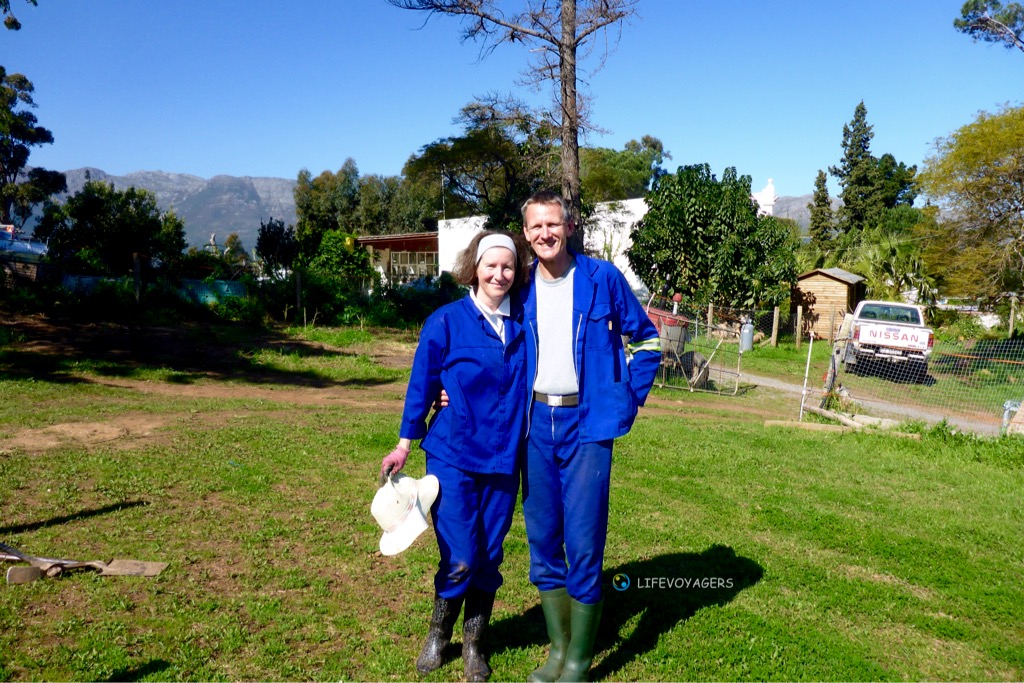
We were nearly always that lucky with the weather, aren’t the colours delightful?
To be able to work in South Africa, where from day one we’ve been experiencing nature as very divers, ever so beautiful, and manifold, in just these surroundings in fresh air, with plenty of sunshine and moderate temperatures, is a blessing! With a view to Sir Lowry’s Pass and surrounding mountains, or looking down at Gordon’s Bay and the Atlantic Ocean, on the farm premises of meadows, pastures, trees, gardens, we were surrounded by numerous wild peacocks, guinea fowl, wild geese, farm animals like goats, four donkeys, numerous chickens, five pigs, and eight dogs equally loved by their four owners and all farm inhabitants alike: Buck, Buster, Badger, Ruben, Vera, Blue, Zoe, Bart, of course each of them with their very own individual personality.
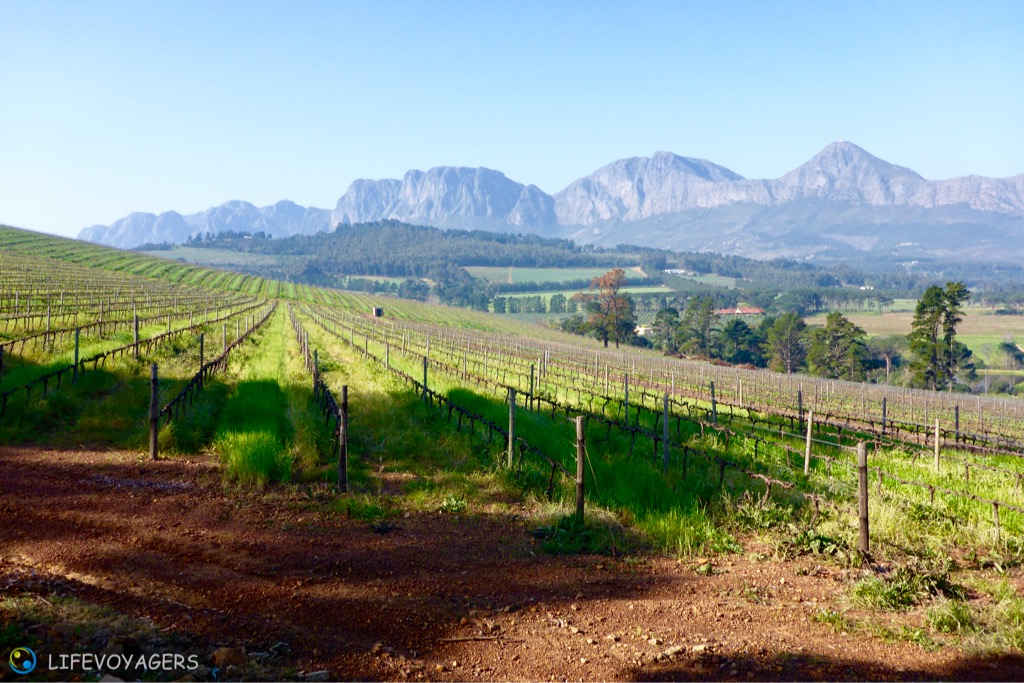
View from the farm at Sir Lowry’s Pass and surrounding mountains, Stellenbosch is a little to the northwest, but there is wine here too, on the neighbouring estate!
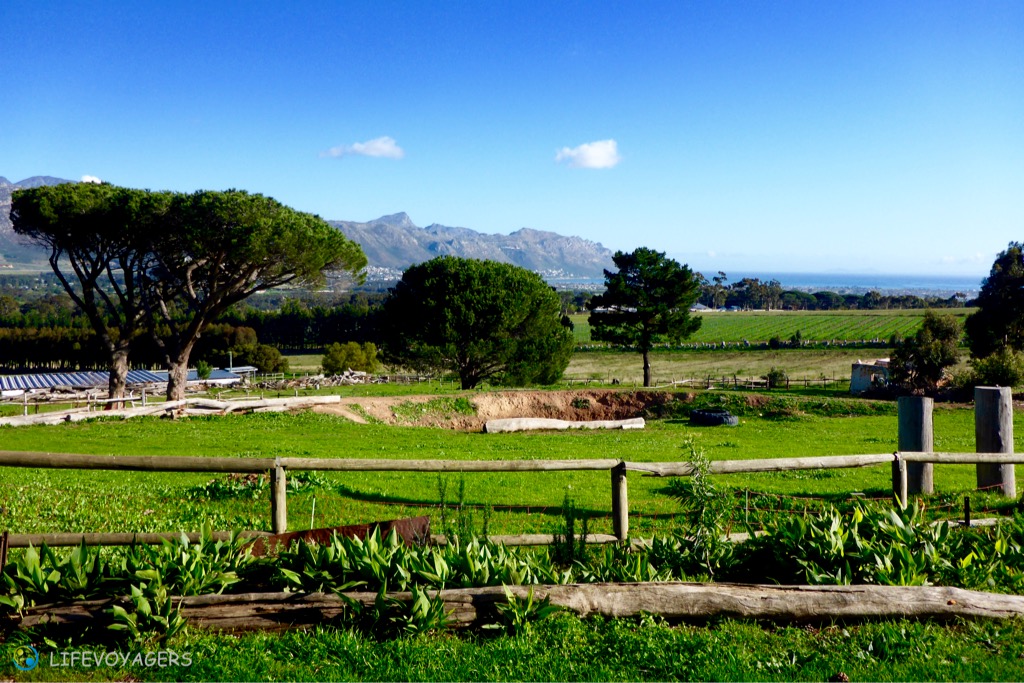
And the view at Gordon’s Bay…
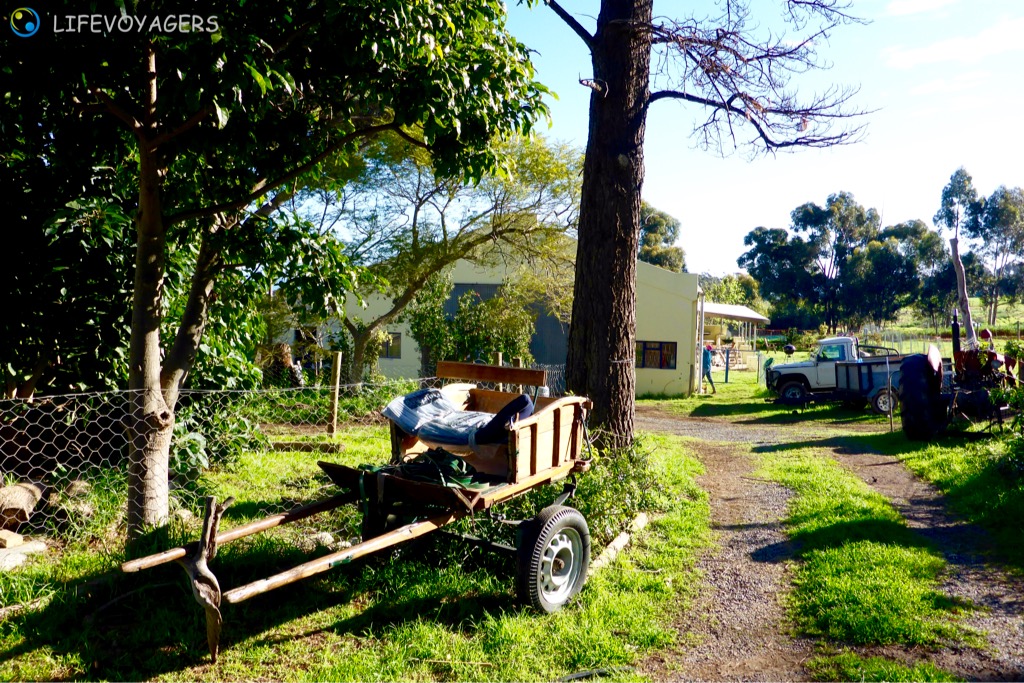
Donkey cart and in the background Claudia on her way into the farm office, there were Landrovers on the farm too, much to Carsten’s delight!
To be patiently, tolerantly, securely, hospitably and warmly accepted, for four weeks, without any reservation, into the functioning, effectively very heterogenic small community of a farm striving for self-sufficiency, as untrained and unqualified help for the respective job, is a blessing as well: regarding the ten people living on the farm permanently there was an age range from 1 year to 92 years, were both black and white represented, different cultures and backgrounds, of course both sexes, volunteers like us/hired staff/free lancers/owners, family/singles/couples.
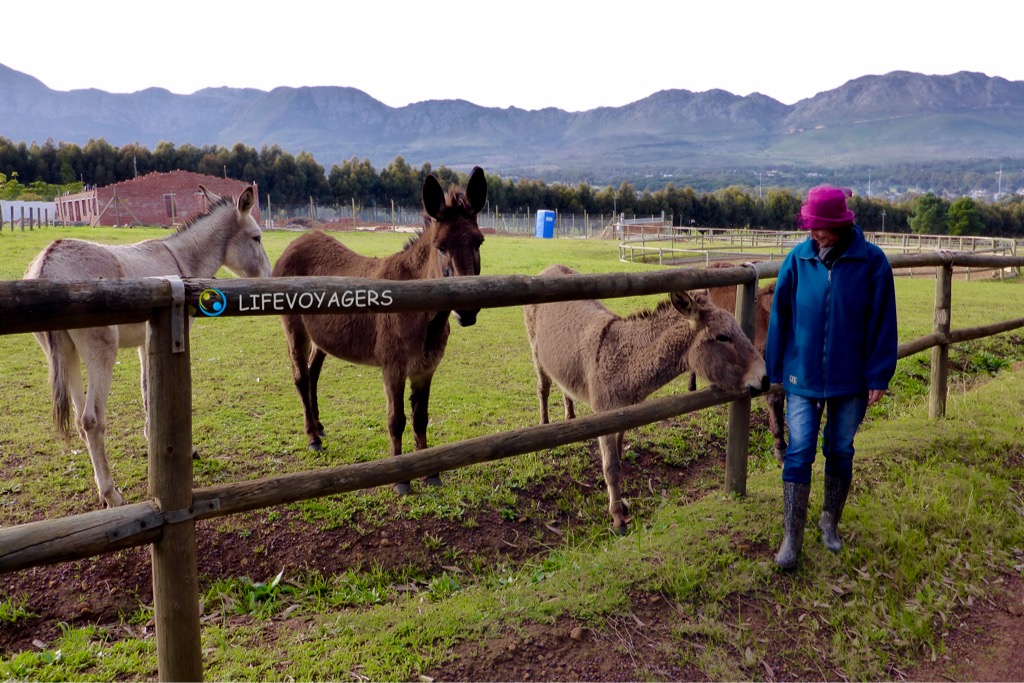
Twinkles, Annie, and nosy Fred, Septic hides behind Claudia!
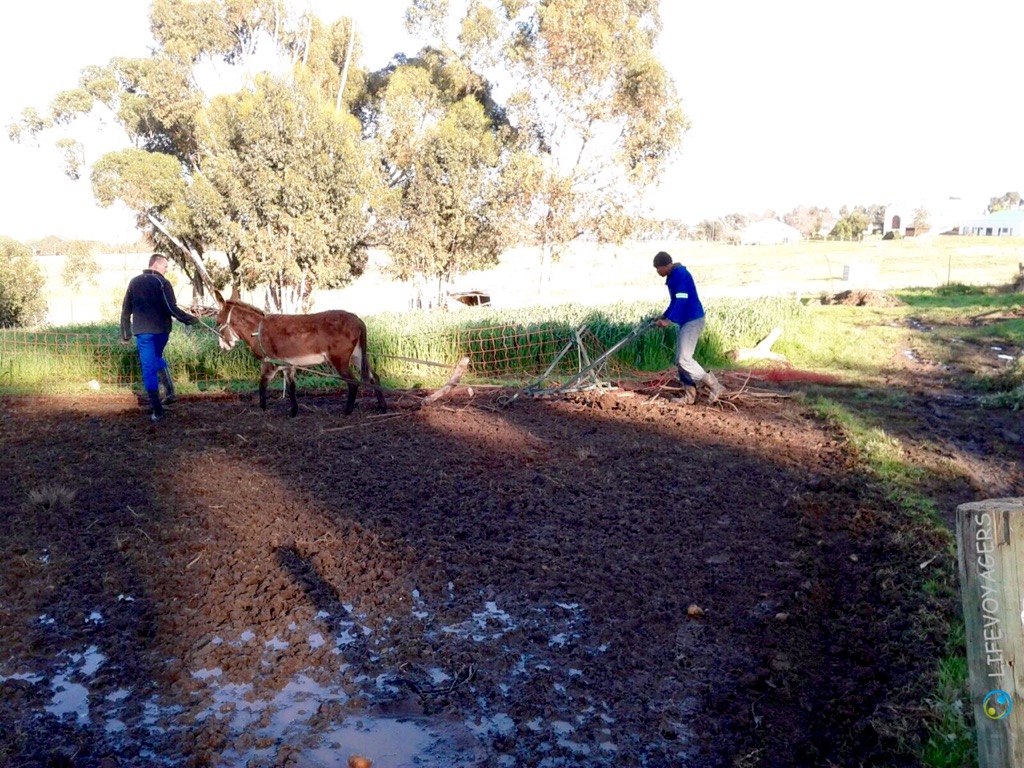
Onceover ploughing for the pigs’ meadow please, whether Phumulani’s cult-call ‘Walk on, Septic!’, was meant for the donkey or for the donkey guide remains open, each of us had a go (below), while Phumulani, as often, did the hardest part…
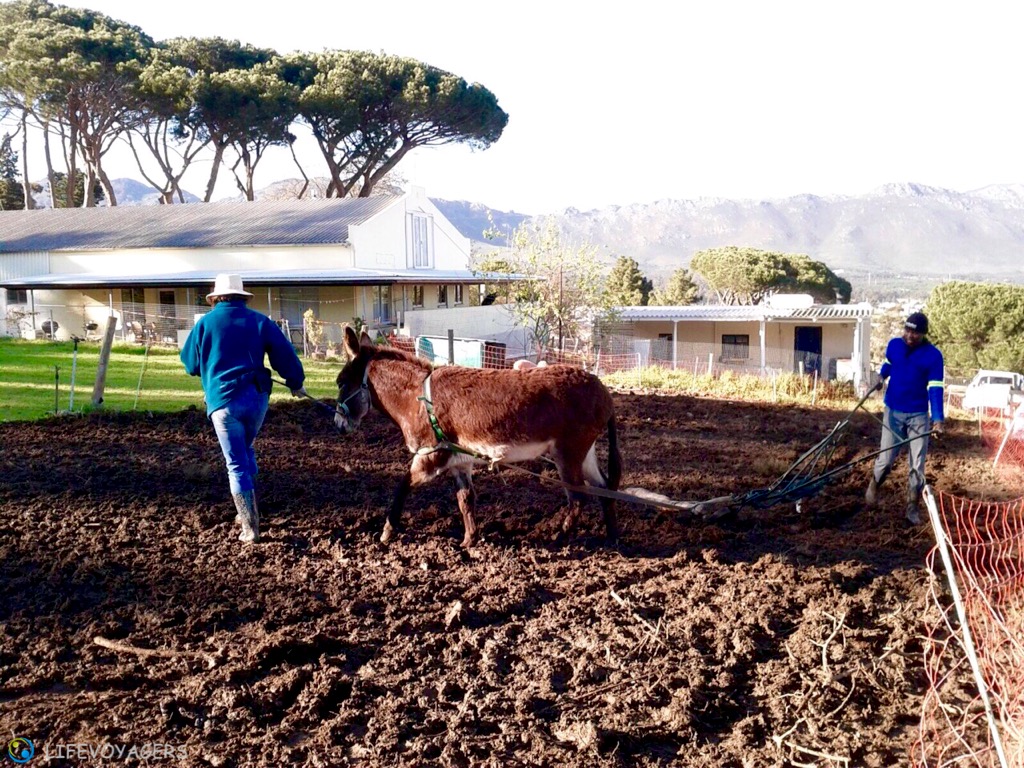
With manager Ryan and colleague Phumulani we not only pronged gardens and supplied them with compost, weeded big style, saw, planted and harvested veggies, fed chickens and pigs, collected eggs and prepared them for sale, moved chicken coops and pig shelters including their inhabitants, put up electric fences, groomed the four donkeys Annie, Twinkels, Fred, Septic (fell into the septic tank early in his life, hence the name ;-)) and plowed with their help, fetched muck, slaughtered pigs, goats, geese and guinea fowl, plucked/skinned/depilated and gutted them (this was where Carsten drew the line, which was accepted without coment), but, because of the self-sufficiency aimed at on the farm and the respective attitude of DIY, also built, capentered, plumbed, repaired and fabricated, on small or big scale, mostly, but not always, as assistants, very much to the liking of the McGuyver-Type manager Ryan personifies, such a wealth of resources on one hand inspires massively, on the other hand sometimes a healthy effort/yield ratio could be doubted, but then again that wasn’t our decision.
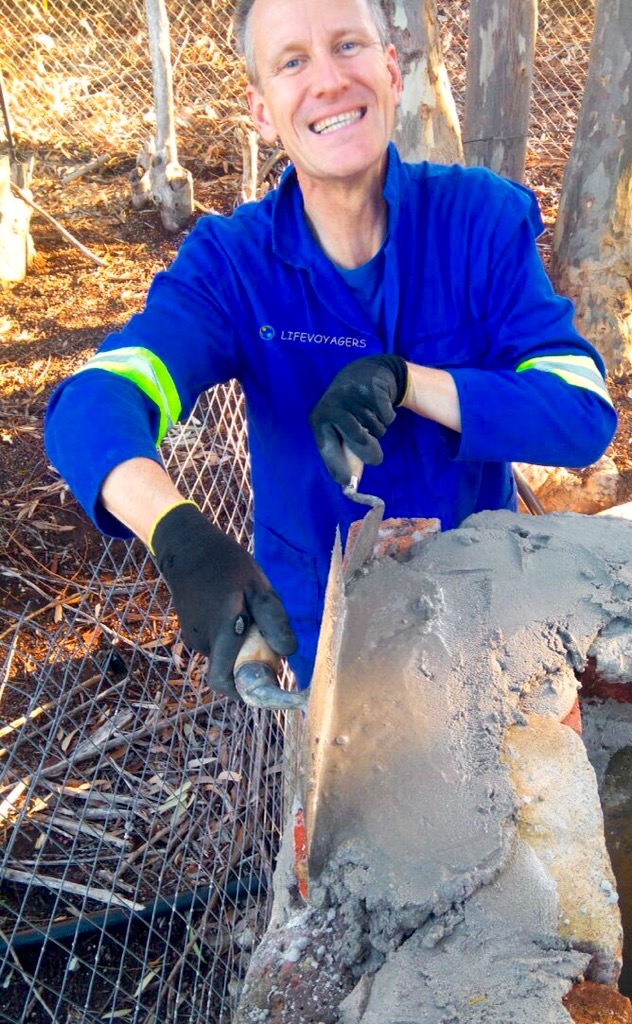
Pulling faces is part of the process (above), but when facing a new skill it’s concentration that matters too (below), please note the Harry-Potter-gash, that was a close shave when doing the previous task…
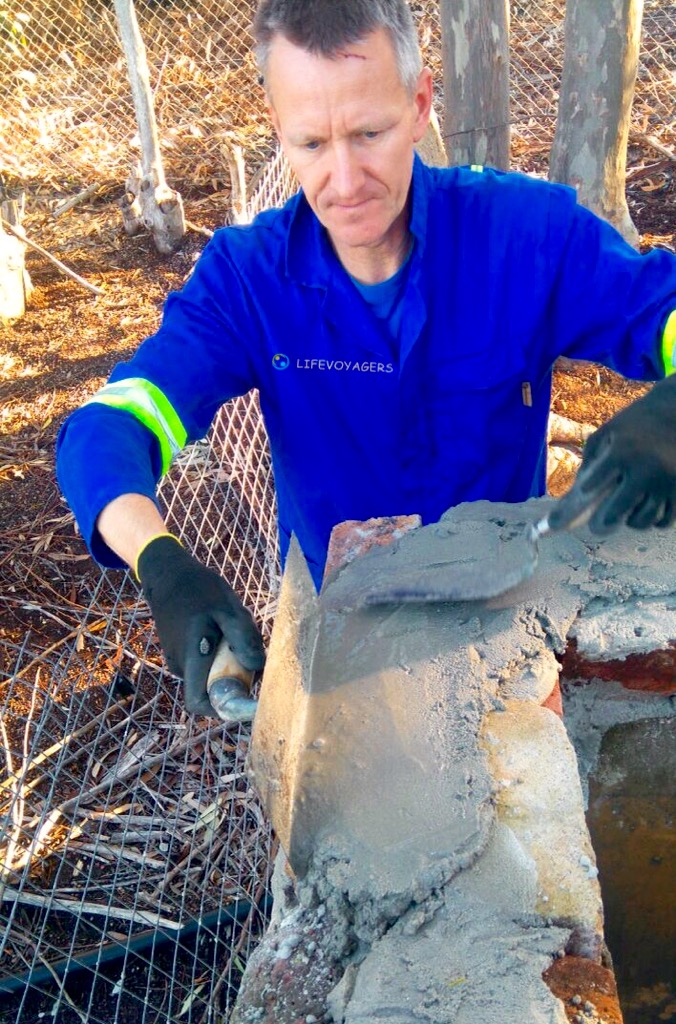
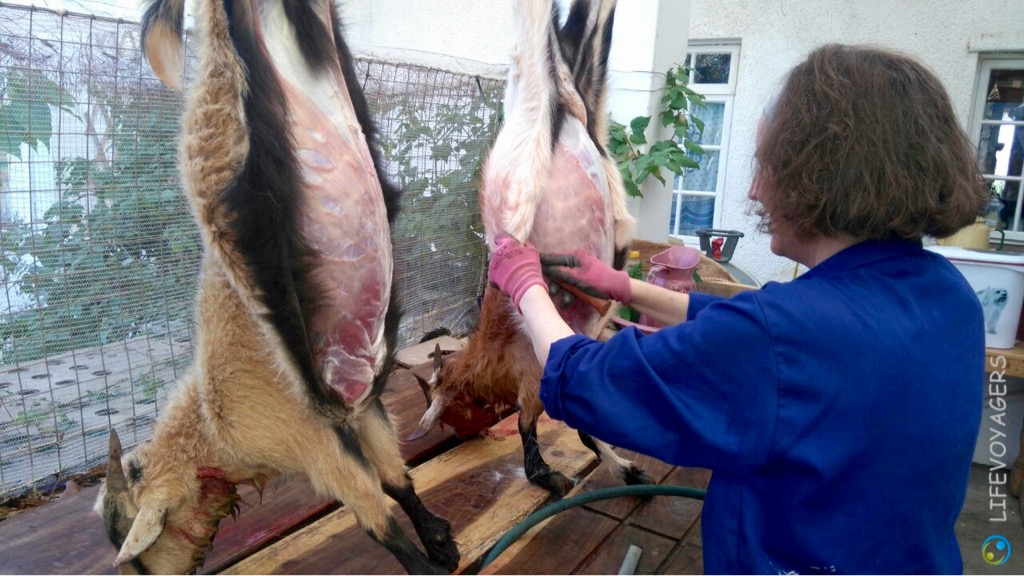
Skinning goats needs concentration too, what with the use of the animal coat and unhurt meat! Didn’t we learn a lot?!
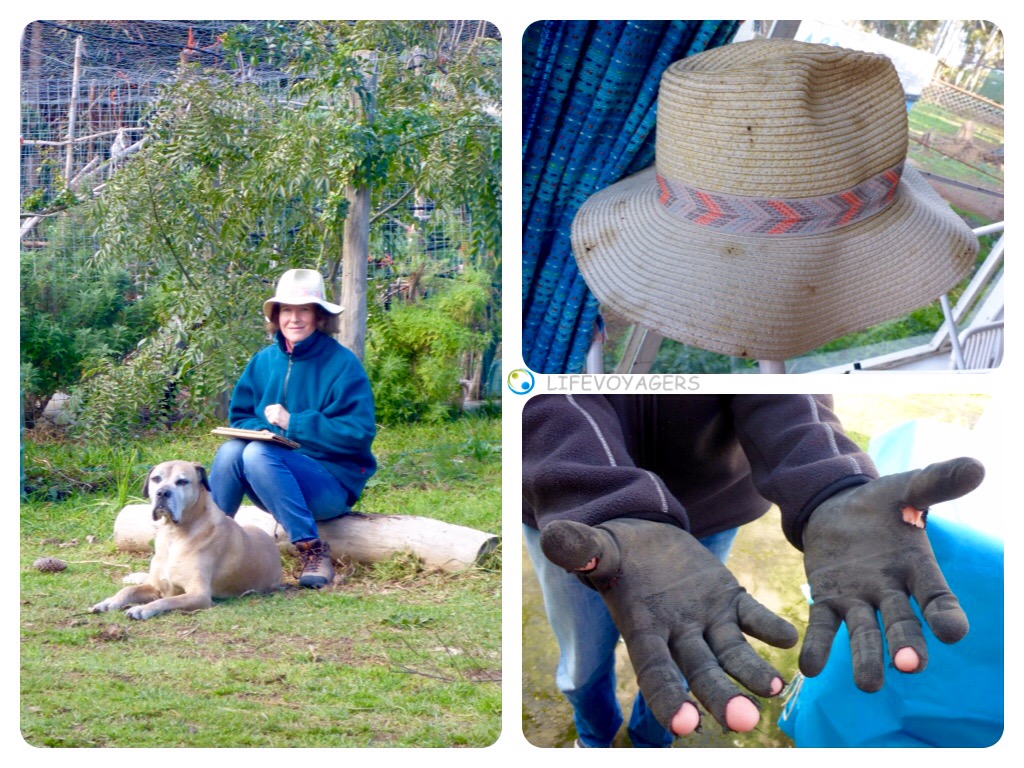
Left: Claudia searching for the best wifi-signal, and well protected while doing so! Top right: 3-Euro-paper-hat made in China, bought in Santiago de Chile, unfortunately ultimately smuched when Claudia tripped in the pigsty feeding the pigs their anthelmintics… Bottom right: These are now ultimately done in after both Bahia Bustamante and Sans Souci Farm (more Lifevoyagers photos on their facebook site!).
This kind of work often was, for us city-people, now in the country, desk-jockeys, now in agriculture, both mid-lifers, no longer twenty, nor thirty, at that…, bodily very challenging, on the other hand nothing that couldn’t be balanced with plenty of KiD-excercises, but just as in Patagonia, the chances to get hurt were rather like there was an opposite rule like: It has to be ensured, that the workaway-jobber is, at all times, surrounded by at least two, even better three, significant occupational safety risks! So you had to be very cautious… Nonetheless we’ve been provided with good working clothes, willies, and radios, the latter very helpful on the huge farm premises and also in case of a never occurred emergency, but as it were a childhood dream: „Claudia for Ryan, Claudia for Ryan, are you receiving? Yes, Claudia, Ryan here, you can send for me!“
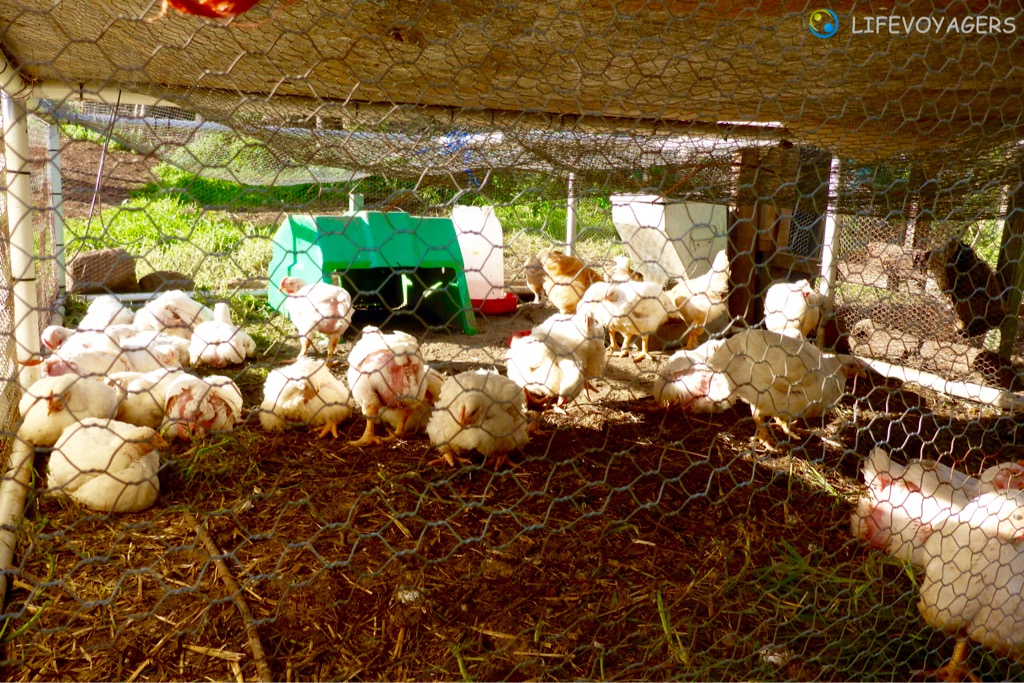
Jung chicks while raised for consumption, always hungry!
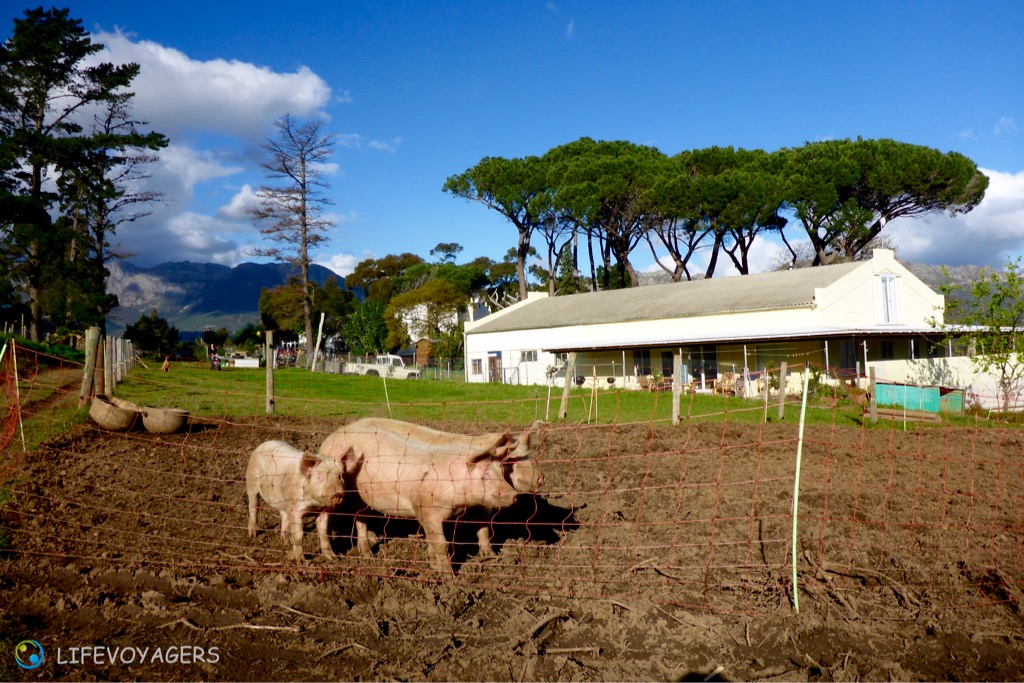
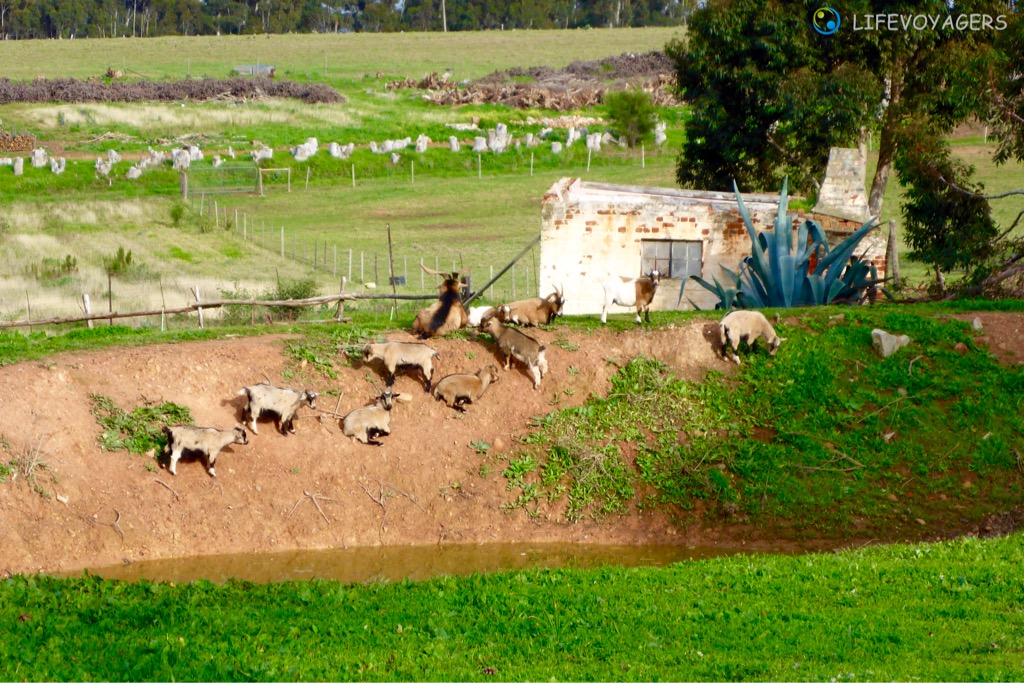
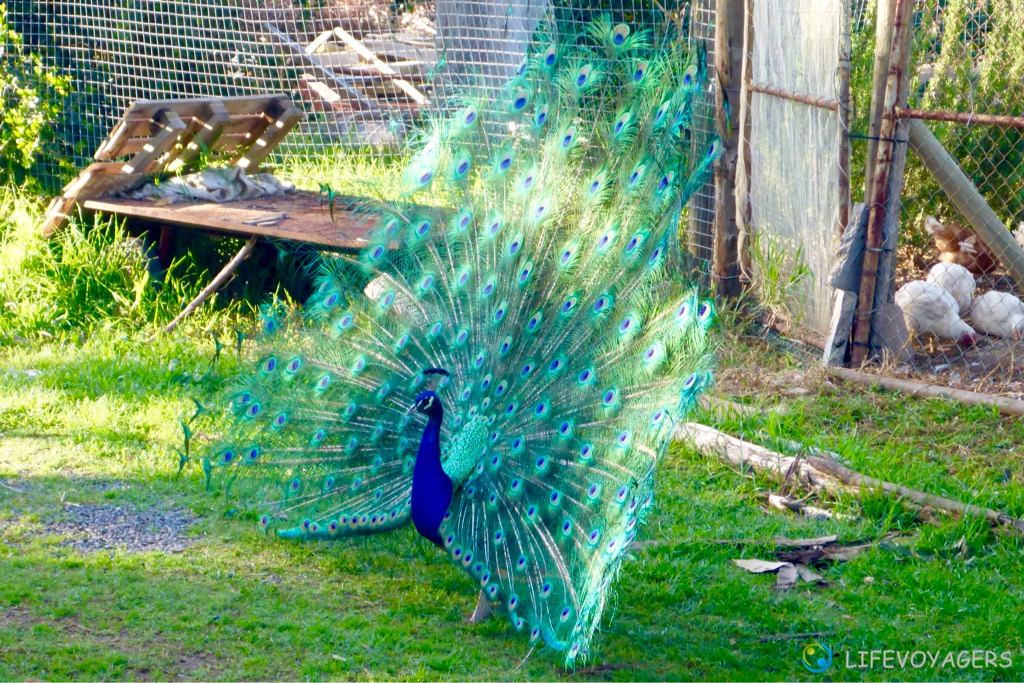
In all of that we’ve been supported by both Ryan and Phumulani’s patience, lenience, and humour, as well as the rhythm of 4 x 8 hours of work minus 30 min tea break plus 1 hour lunch break daily, and afterwards 3 wonderful days off. Lunch break wasn’t long enough to cook and also tended to be used for a 10 minute power nap too, the strategy was to pre-cook lunch for two days in the evening (was also nice and warm near the gas stove ;-)), and enjoy cold the next day, that works well with pasta like pasta-salads, cream soups which tend to develop even more aroma when enjoyed cold, and with frittata made from a lot of eggs, veggies and cheese.
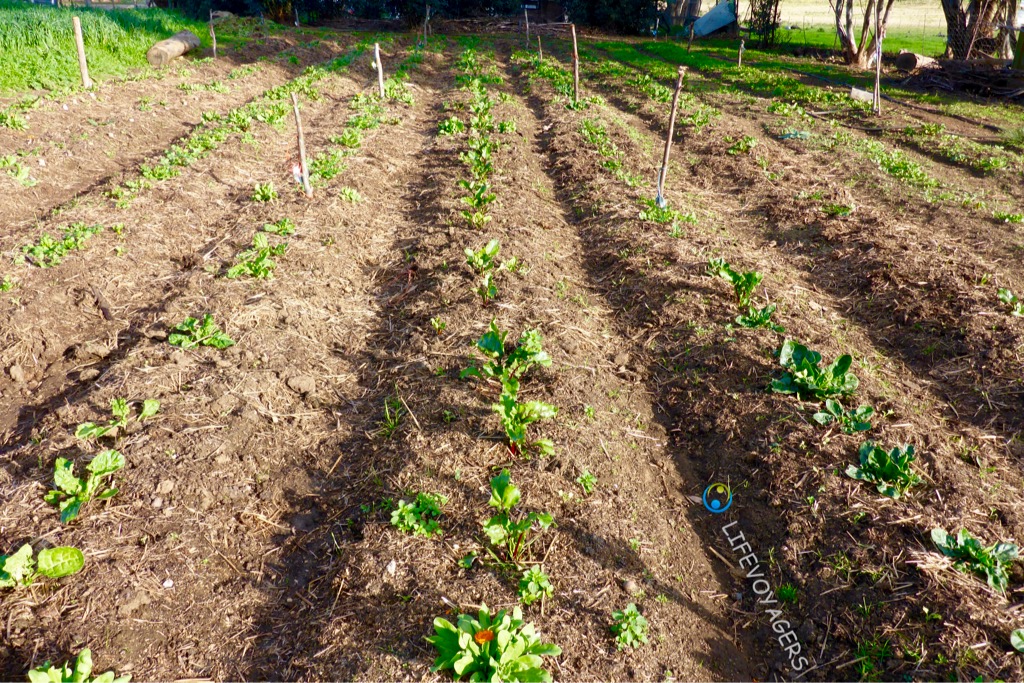
Koriander, Spinach, Swiss Chard, and still very tiny kale plants, planted by Volunteer Alexandra, from Switzerland, Phumulani and ourselves in our first week, a pity we missed taking a photo of the two gardens which were ready for harvesting already, see part of our harvest below, yummy!
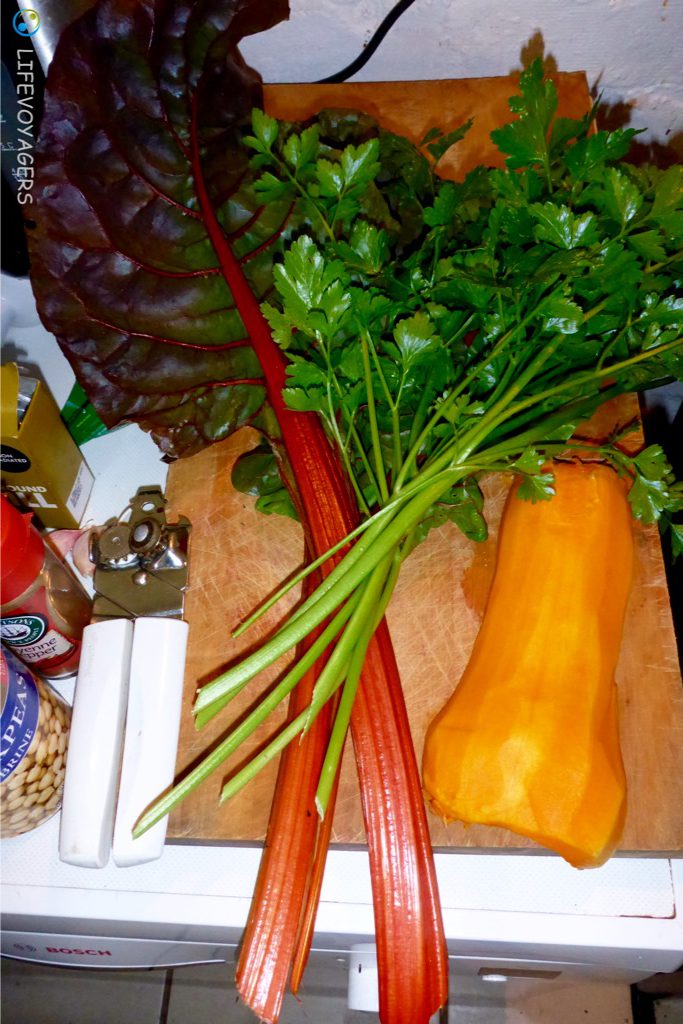

Greens of beetroot, has all been used, together with canned mild Chakalaka and gluten free pasta, yummy again!
We experienced true South African hospitality also from the owner of the farm, who not only shopped our food supplies with us without complaint but in the end even let us loose with his car and credit card for shopping, but also invited us to his self cooked dinners with lovely wines and sparkly a few times and once even took us for a lovely breakfast in a local inspiring restaurant complete with breathtaking scenic drive along the coast around Kogelberg Nature Reserve afterwards, what a treat, and finally organized a farewell Braai (barbecue) with all farm inhabitants for us, the ‘for us’-part he would of course deny, since joint Braais are happening here all the time… ;-)).
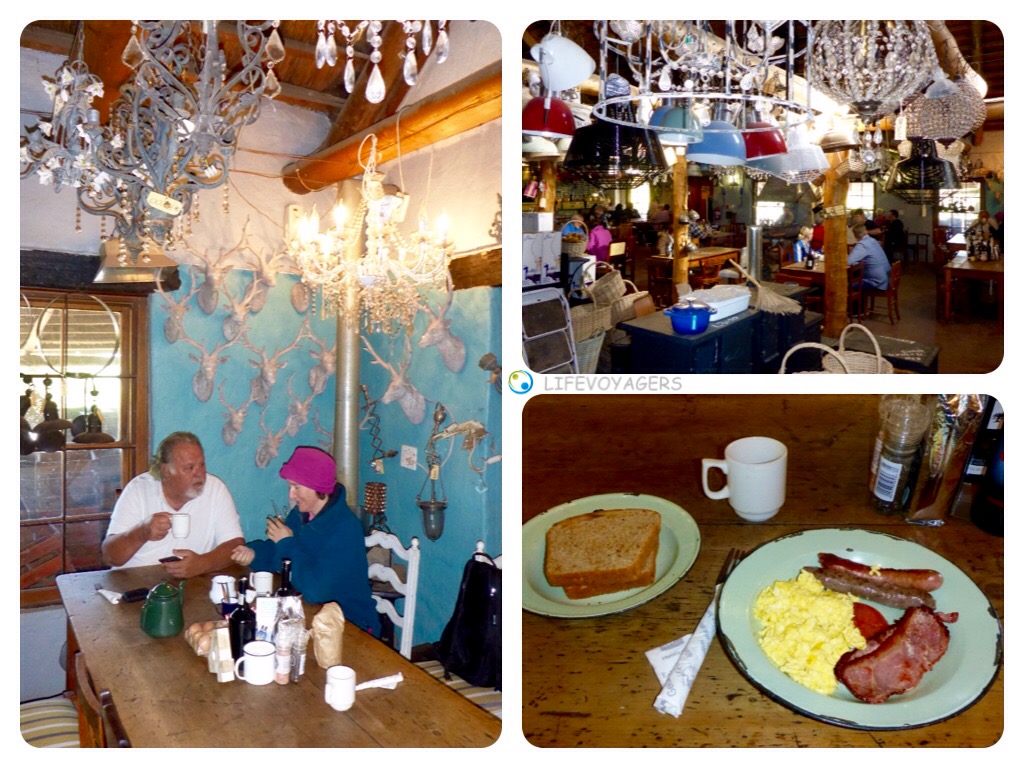
In our accommodation, which we had to ourselves, there was clean, cosy bedding and sheets, ample clean towels, a marvelously equipped kitchen, running hot and cold water in both kitchen and shower, all floors were tiled for easy cleaning, we were allowed to use the owner’s excellent Miele washing machine, for cooking we could freely use farm eggs and veggies without restraint, the crisp freshness for example of a self-harvested beetroot complete with greens just cannot be topped, we are now spoiled for any supermarket vegetables…
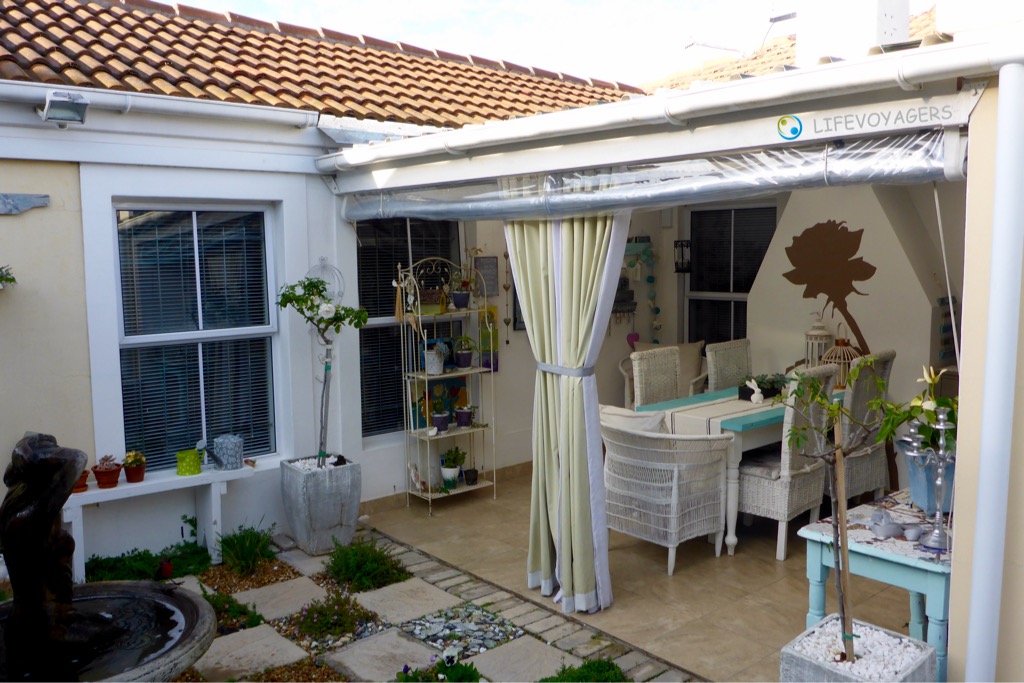
Above: Our last accommodation before arriving at the farm at lovely Linda’s place in Somerset West, and below the contrast at the farm… (ok, that comparison is a little unfair ;-)):
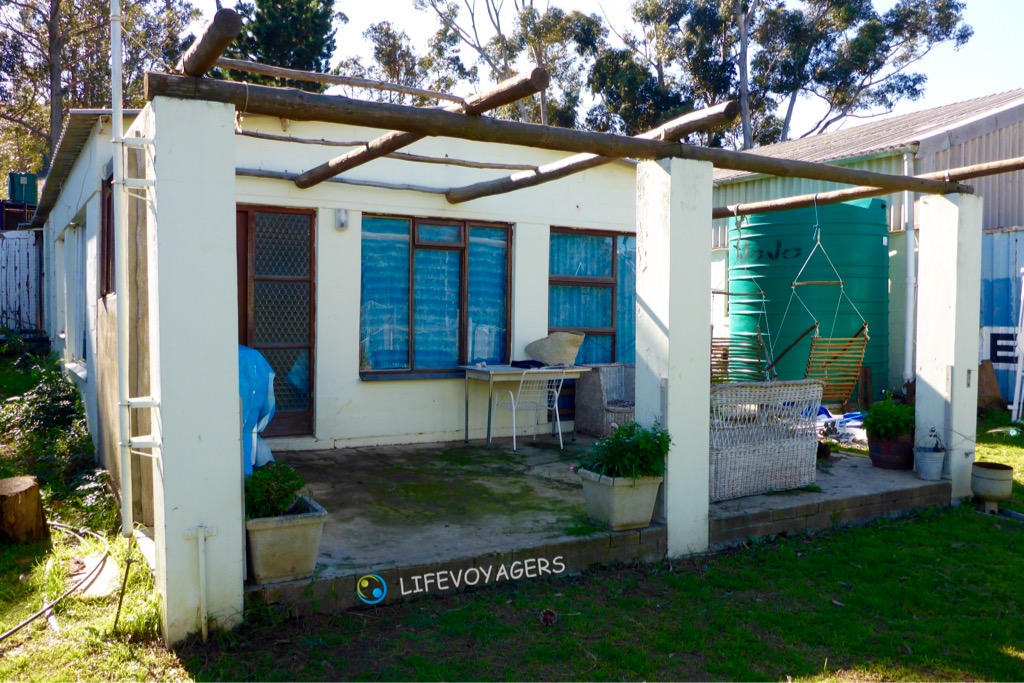
The difficulties of this workaway-stay for us again resulted from our accommodation though: In South Africa’s winter evenings/nights/mornings are quite cold with 5°C, and this meant in our mainly non-insulated bitumen-corrugated roofed accommodation with partly non-fully-closing windows and a tiny wood cooking stove in the living room, which was neither size-wise nor functionality-wise suitable to heat the rather large room, so that evenings again couldn’t be spent there but rather turned into bed early, and breakfast had to be taken very well wrapped with breath showing, the bedroom was ever so slightly insulated with at least a tiny heating device on the wall, without which it just wouldn’t have worked… As soon as we stepped out of the door to start work just before eight in the morning, still nicely wrapped, it soon warmed up with the ascending sun to a nice 24°C to 27°C so we could shed layer by layer, also with increasing work ;-)).
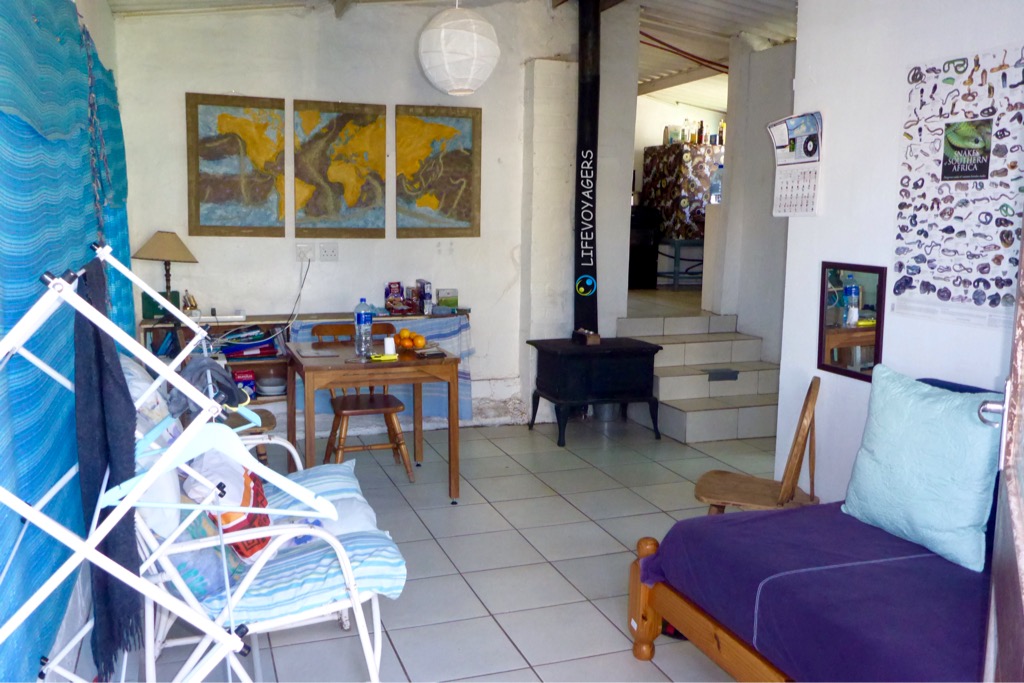
Living room with a view to the kitchen, please note the poster on the wall to the right, ‘Snakes of Southern Africa’…, and the tiny wood-stove with even tinier firing compartment, not really suitable for heating…
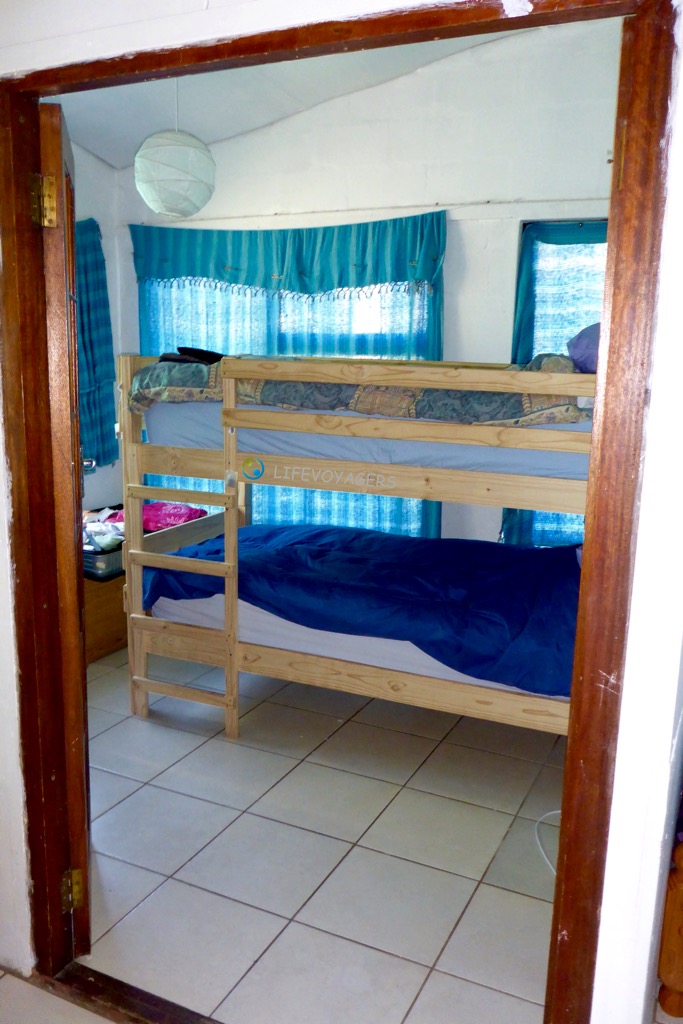
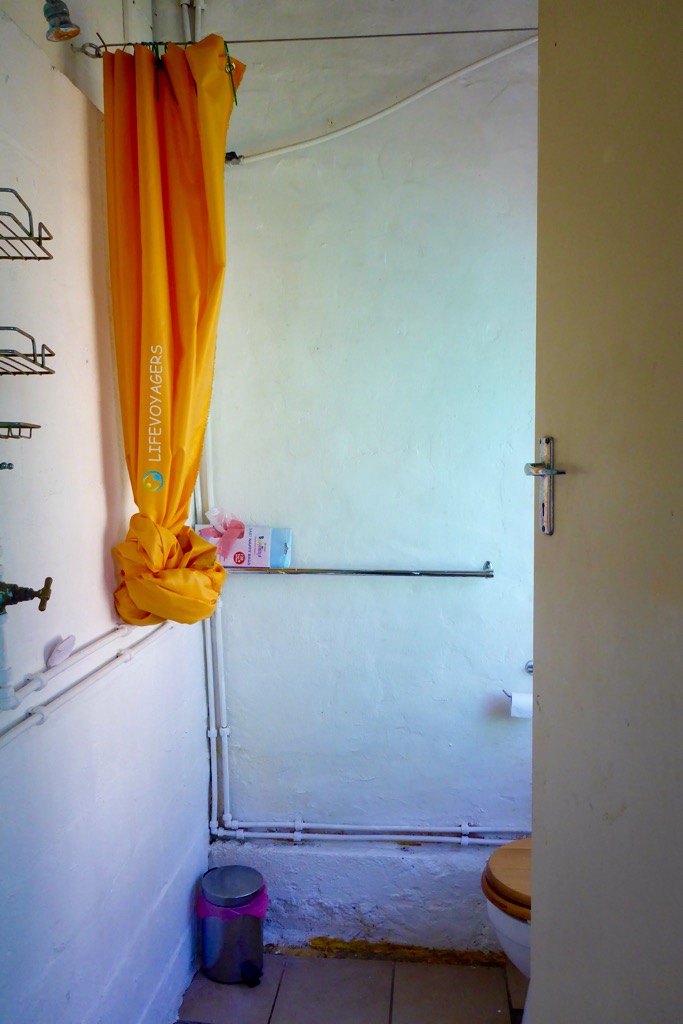
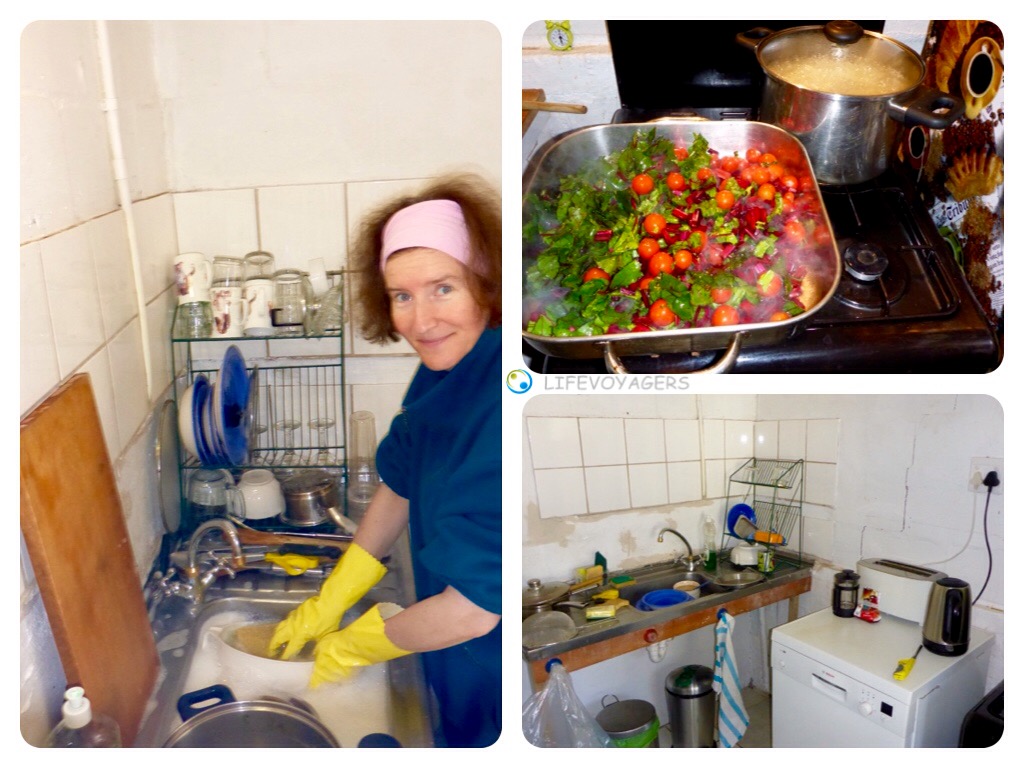
At night the background noise was difficult, with the rooster right beside our accommodation, and his wake up call in the worst case as ‘early’ as midnight, if you were unlucky complete with snooze function and another call every two hours until the morning, with the peacocks and their occasional cries, one or two times a week with the donkeys in the immediately adjacent stable, and with the radio mast on the premises with its irregular humming and buzzing, at one stage we just had to start wearing ear plugs, you just need a good night’s sleep for putting in a day of hard work. There was a broader single bed in the living room but it was too cold to sleep there, so we slept in the single bunk beds in the bedroom. Cold and night-time noise thus were most difficult, with the abundant permanent and surprisingly manifold dirt on a farm we wouldn’t be able to live in the long run but managed for four weeks. Nevertheless bed and board are incredibly valuable, and probably every inhabitant of the Sir Lowry’s Pass Village Township, if it even can be called that at all, would have been prepared to swap their pieced together corrugated iron hut with mud floor, without even running cold water, with whatever kind of heating, if any, for our accommodation, that again made us feel humble…
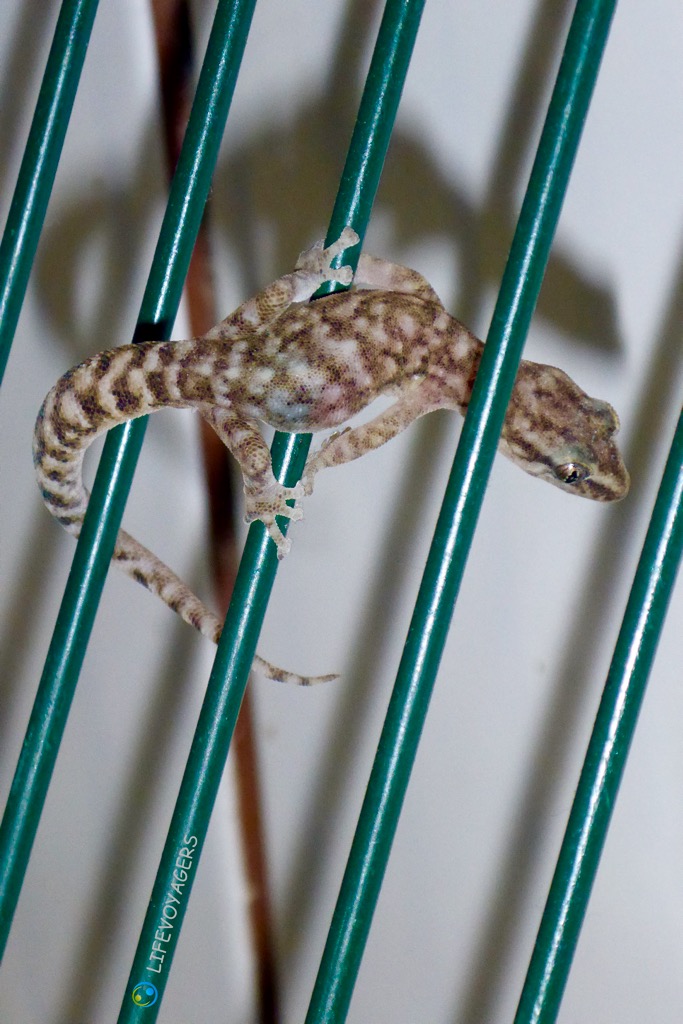
Tiny visitor to the kitchen on the dish rack in the evening, we figured he would probably get out as he got in…
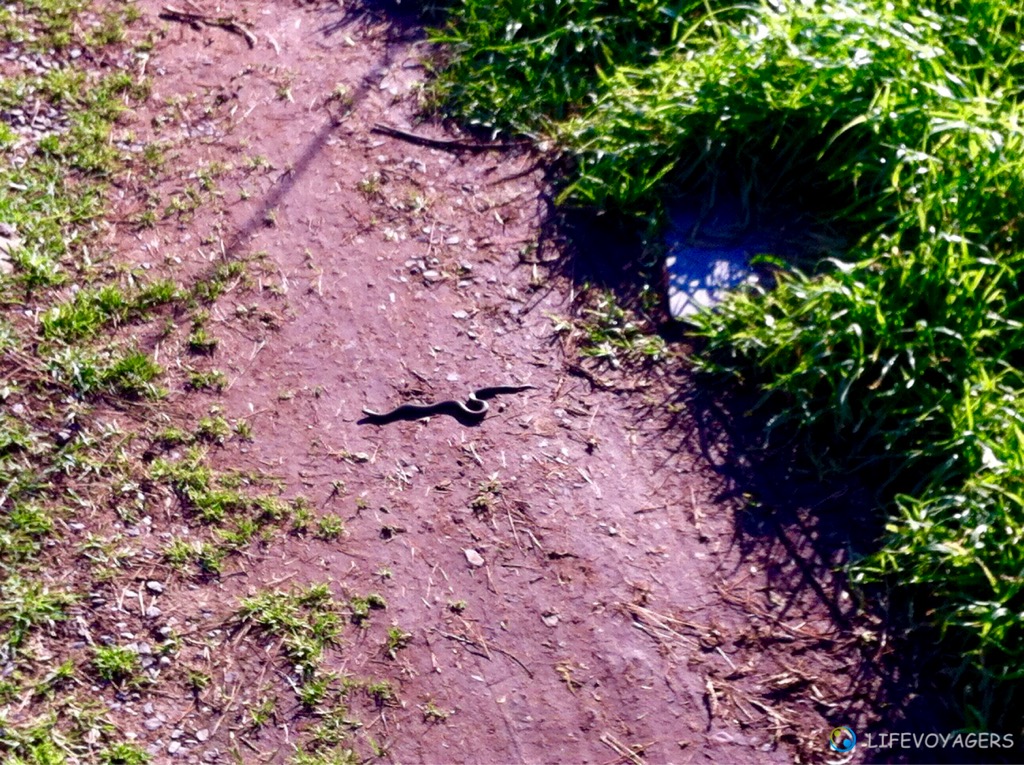
The only snake we came across in the wild conciously personally was a harmless little slugeater, whew…
We never new beforehand that Ryan was a fan of snakes, also catches them professionally for the surrounding farms, thus rescuing them from certain death by the farmer’s hands because of a) fear of fatal bites and b) far spread and deep routed superstition regarding snakes, in winter he keeps them hibernating in special well secured boxes with enough light and air in the farm office, they often don’t feed for up to months, so a particular kind of cobra hibernated in the farm office during our stay, of course venomous, we lovingly called it Otto, even a telcon with AXA Germany’s personel department from the farm office because of the proximity to the router didn’t disconcert Otto. Ryan caught two more snakes, but not on the farm premises, one venomous, one non-venomous, but a puff-adder, highly venomous, and a bigger darker snake had been seen on the farm premises but escaped Ryan successfully, right on the meadows where we’d just been beheading/weeding a particular weed just before it seeded… But according to Ryan it needs a massive disturbance of these animals before they attack, they sense an approaching human from far and are likely to flee, so it should even be rare to accidentally step upon them, but anyway it was important to be aware of this risk at all times.
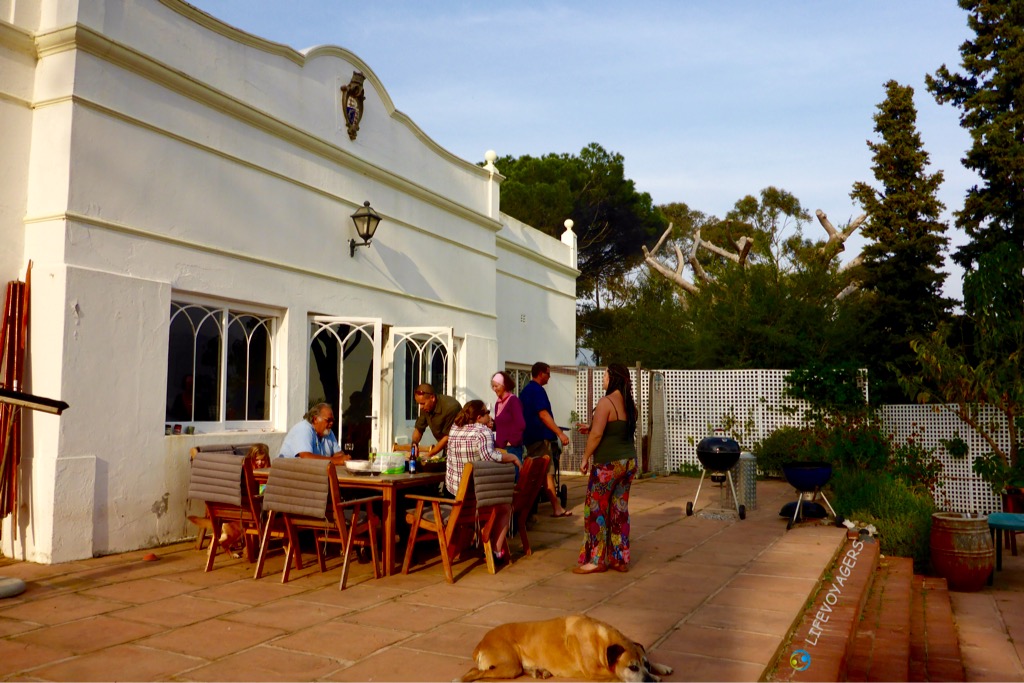
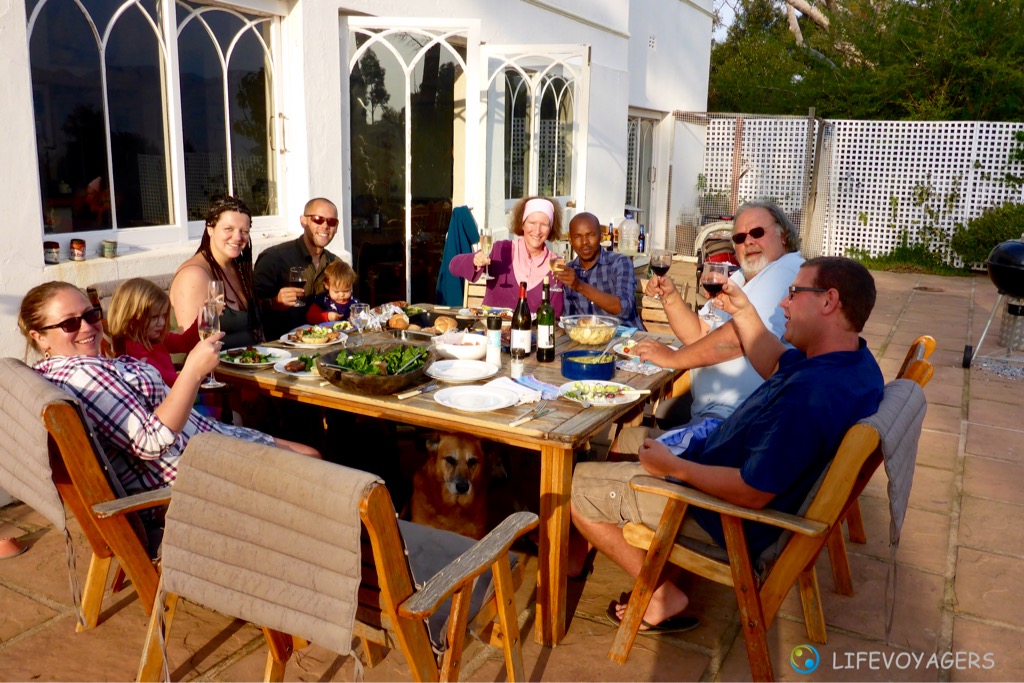
Farewell Braai in best company while the sun is setting… sigh… who could wish for anything else?
Conclusion: What an exciting way to get to know different life concepts of highly interesting people and their habitat, and to spend valuable time with them despite all unfamiliar things and inconveniences, to learn from them, to swap ideas with them and laugh together, rarely have we met a more humorous, relaxed community, we thank you ever so much, dearest people of Sans Souci Farm: Gugu, Sage, Akira, Michelle, Ryan, Deon, Charlie, Caroline, Bruce, and Phumulani!
C & C, Lifevoyagers
São Paulo, a huge and nevertheless attractive city!
Friday, 19/08/2016
The largest city in the Southern Hemisphere, thus also the biggest city in South America and Brazil, with 21 million inhabitants in greater São Paulo and 12 million in the city itself, of which we heard HALF of them, that means 6 million people, live below the already very low poverty limit and/or in favelas, or are homeless, the latter often because they are addicted, which can be cause or effect, and the shelters at least provided in no small numbers by the municipality can only be used on condition of supported drug withdrawal.
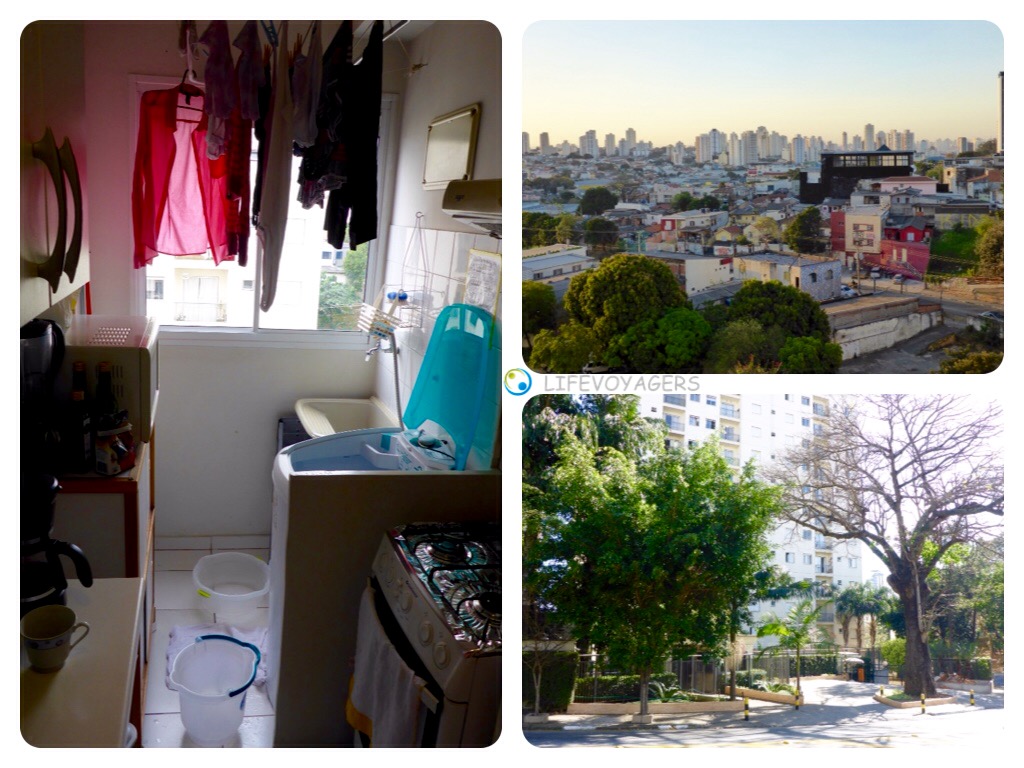
Wonderful apartment and wonderful landlords to the south of the center of São Paulo in one of the towers of the condiminium (bottom right), fotos here, with an interesting view (top right), but also with a strange ‘half automatic’ ‘washing mashine’ that didn’t rinse nor spin, hence the dripping wet laundry in the kitchen (after wringing by hand of course)… The washing machine has meanwhile been replaced by a fully automatic one, so our nice hosts followed nearly ALL of our suggestions for improvement!
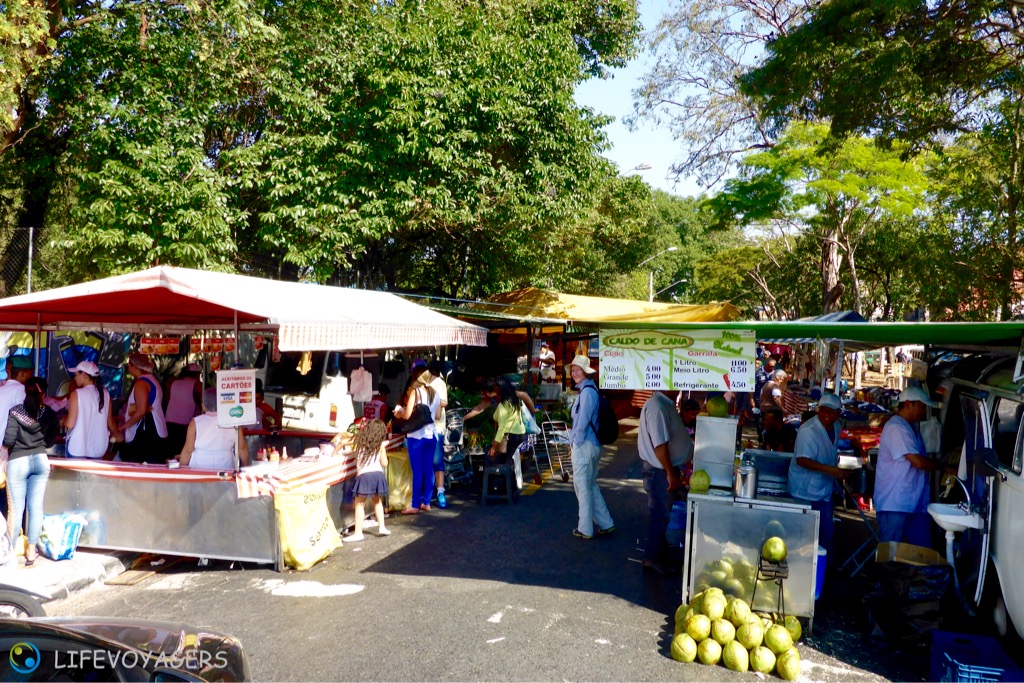
Nice Sunday fresh produce market just round the corner from our apartment, fruit & veg offers much better than in supermarket, both for quality and price! The woman with the black backback is of course in the foto again… ;-))
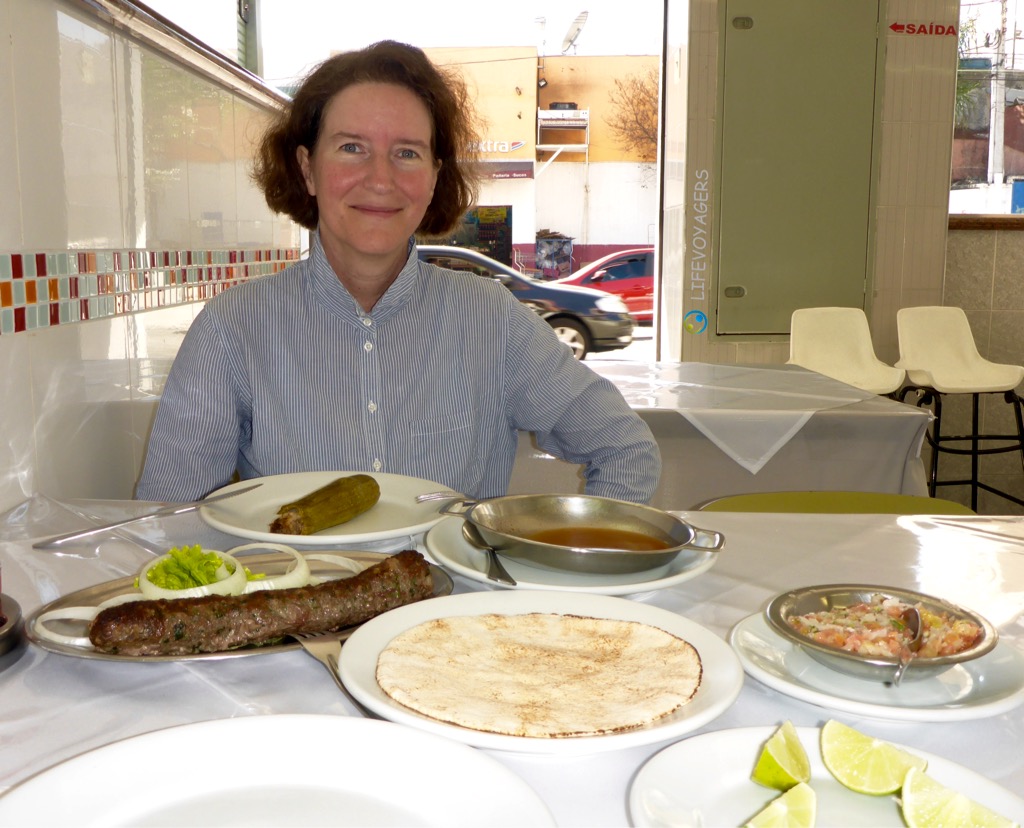
Yummy oriental food in restaurant Esfiha Vergueiro just up the road from our apartment! There are many of these type of restaurants in this city, very affordable and good quality, excellent service.
So though a monster in size of population, we like São Paulo a lot: despite extremely limited possibilities of communicating in English or Spanish, and here they would have a real demand for these because Portuguese is spoken in far less countries in the world than the other two, luckily we do have minimal knowledge of Portuguese, despite a very complicated system of public transport in case you need buses in addition to the Metro, including messy information on rechargeable, i.e. cheaper cards, and the return journey nearly never matches the journey towards your goal, sometimes there just is no counter-bus stop, despite a counter lane, all of this has to be very well researched before leaving if you don’t have a local sim, and so far we managed for 1,5 years without one, despite modern, cosy, safe, beautifully decorated flat with great landlords and super fast wifi upon asking for a speed up, but without hot water in the kitchen, a really great electrical shower in the bathroom with a electric screw joint openly upon the tiles above the shower head, luckily above the water…, “halfautomatic” “washing machine” that washes with manually added cold water only and doesn’t rinse nor spin, water is released again manually, we had overlooked this when booking, plus: how bad can “half automatic” be anyway…, we took to the city anyway:
São Paulo has it’s very own charms, even without an extensive well preserved old town, for the several economic booms of the country in the 20th century each resulted in ruthless demolition of a lot of the old buildings, but this again resulted in an eclectic mix of architectural styles and epochs to be admired, not all of them beautiful to look at, but still worthy to keep maintained as representatives of their time. Exploring them is a lot of fun!
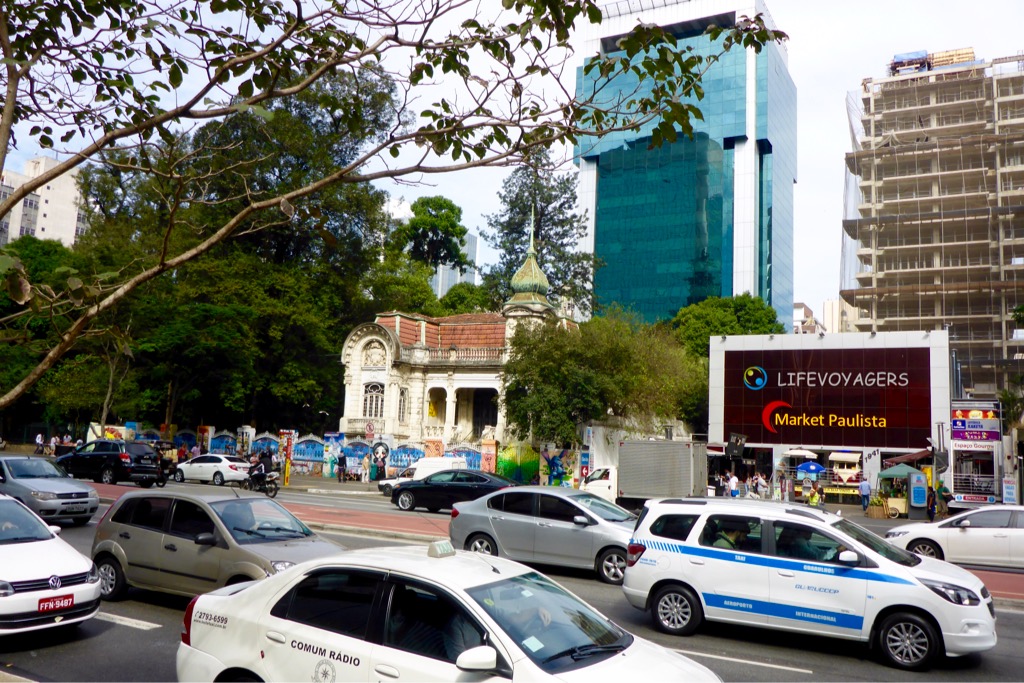
Avenida Paulista is said to be the place where it all happens. Our impression was that the financial center moved west from there, and on Avenida Paulista you have an interesting mix of architecture mainly from the seventies and eighties of the last century, and also a lot of street vendors and homeless people, the weirdest mix with the office people…
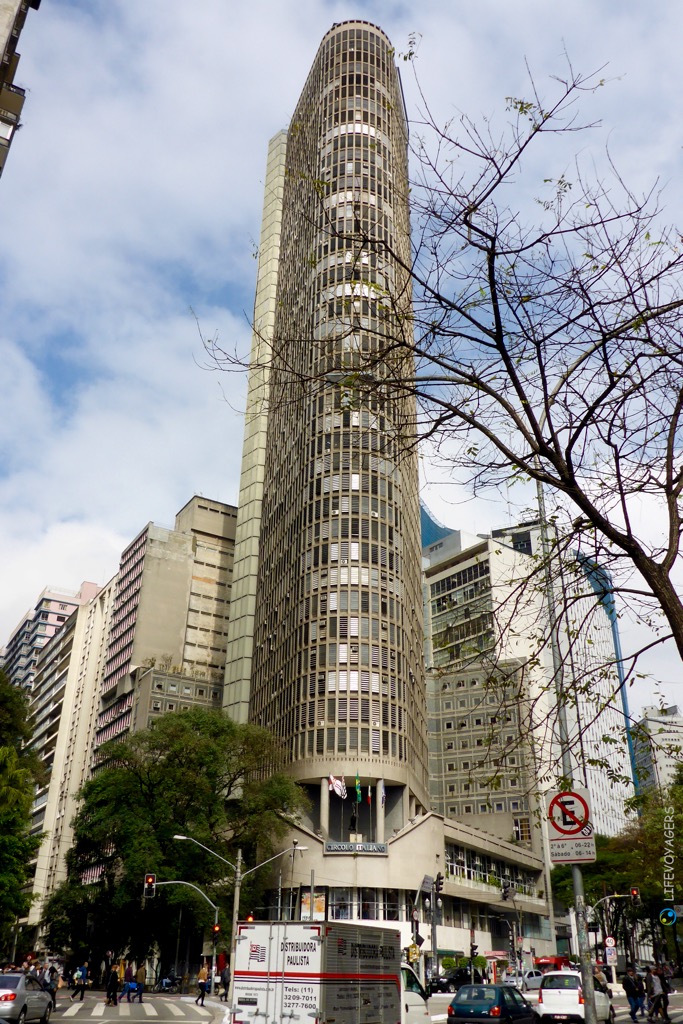
Edificio Itália, built from 1956 to 1965, would you have guessed?
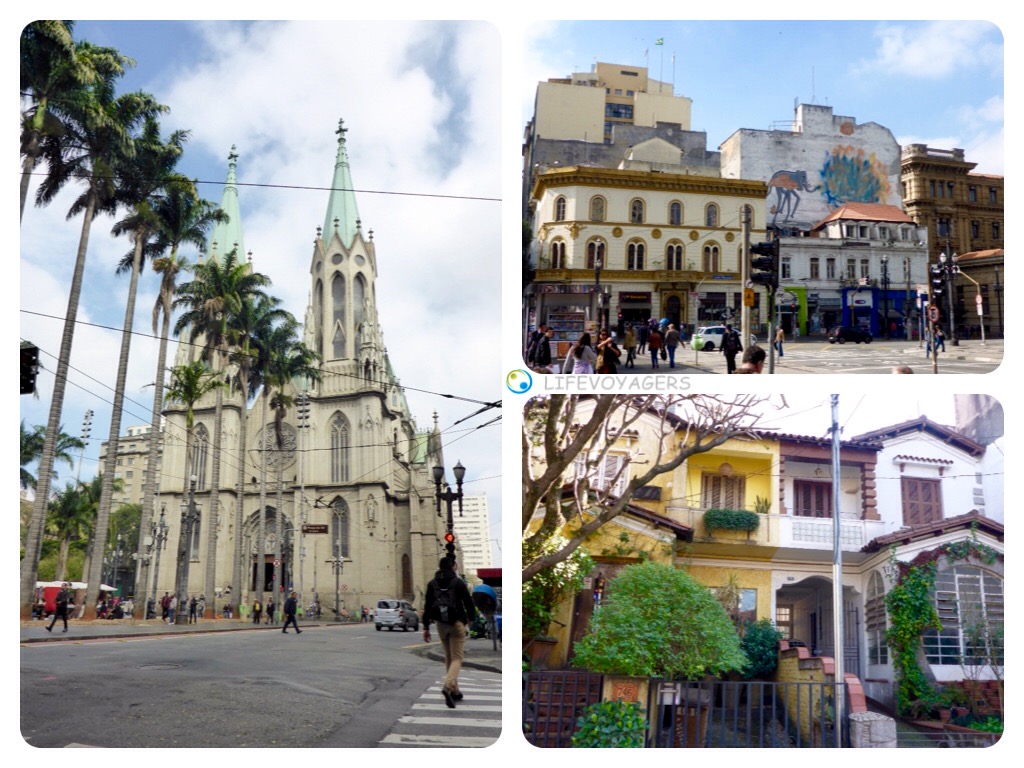
Back in the times South America was obsessed with European architectural styles, look at the cathedral (left), and the mix of architecture with a glimpse of the copied opera house of Paris (top right), but also residential neighbourhoods with semidetached houses in different styles in Vila Madalena and Pinheiros quarters of town (bottom right), this is also where part of the nice nightlife is concentrated
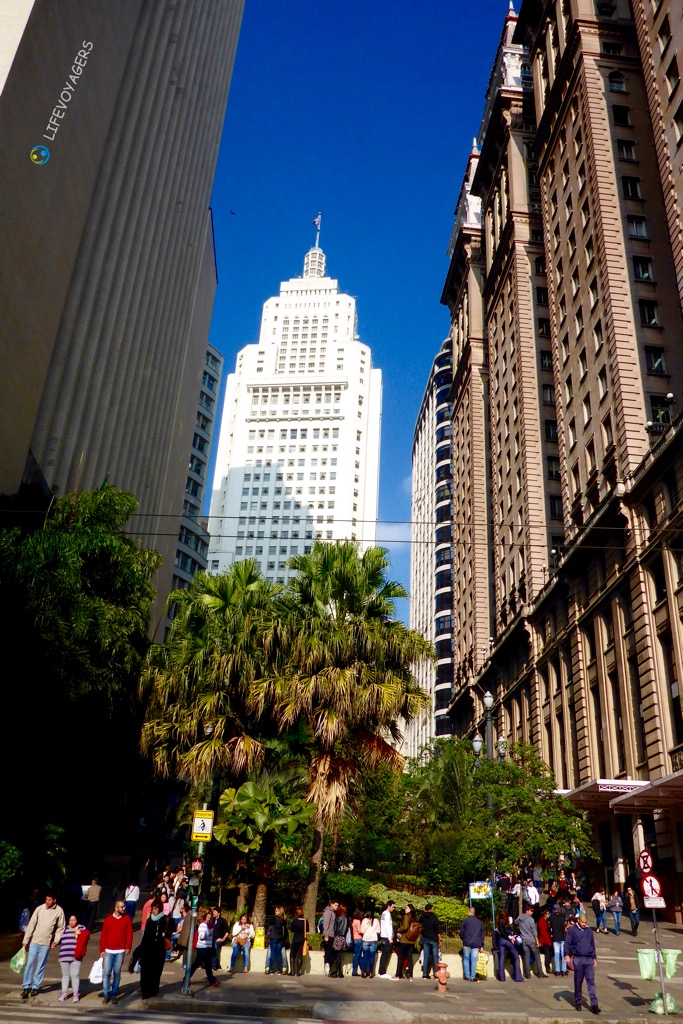
‘Old Downtown’ has a lot of current and former bank buildings, you can climb some of them, these are people queuing round the garden for !
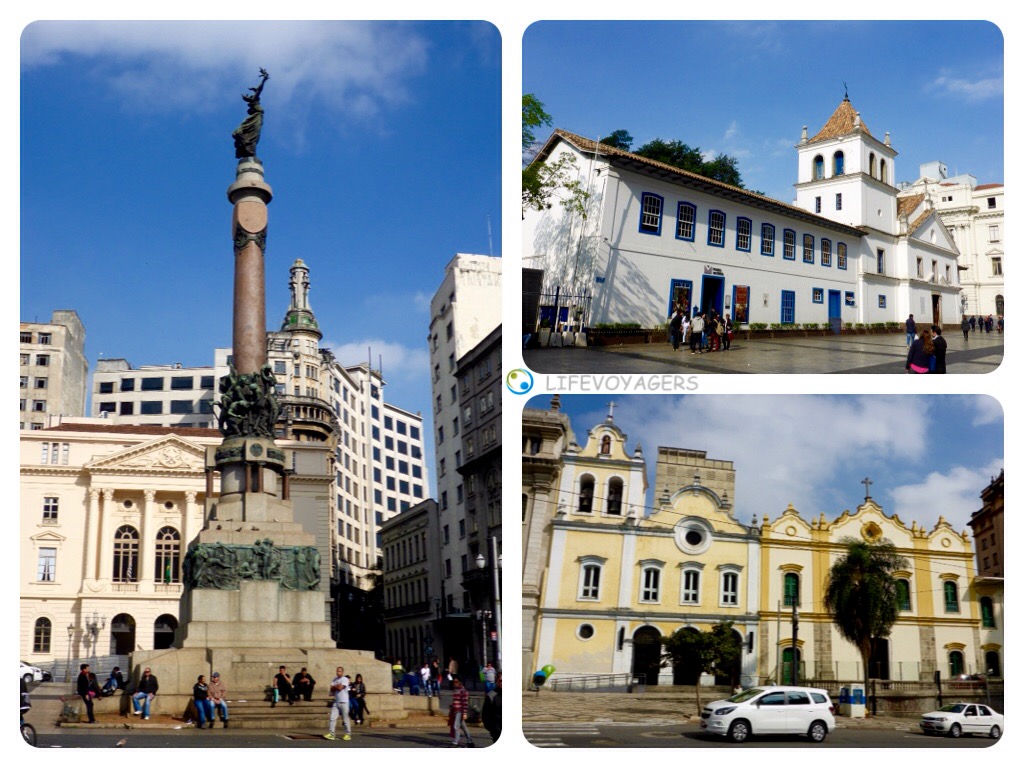
Still ‘Old Downtown’: founded by two Jesuit monks, the Jesuits made too many friends with the indigenous people and spoke their language for the liking of the Portugues (as in other South American countries for the Spanish), and were thus later expelled from the country and had to flee. On a patch of ‘their’ land there still is the University of the city.
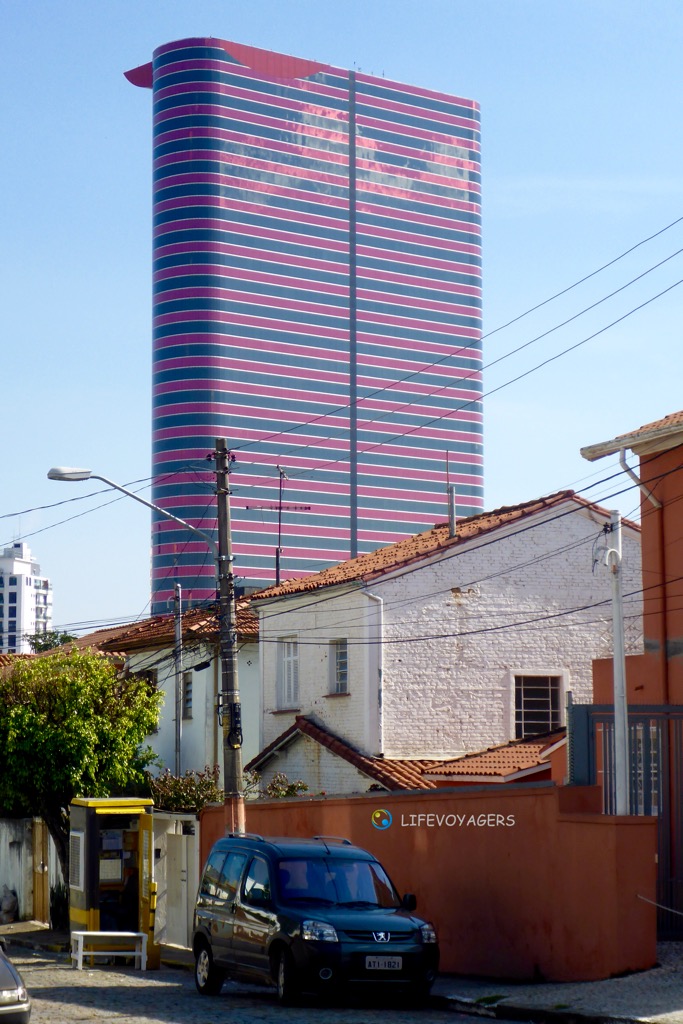
But also very modern architecture can be seen, Complexo Ohtake Cultural by a Japanese architect, one floor dedicated to a gallery open to the public, in contrast to the residential buildings in the front
São Paulo is much more relaxed than Rio de Janeiro, probably because rather sub- than tropical, in Rio the Latin American temperament is much sooner provoked to boil over, whereas here levity, relaxedness and the sunny side of the Latin American temperament prevail. Perhaps that’s also the reason why São Paulo is much safer than Rio, where we felt rather limited by the state of crime and risk in 2014.
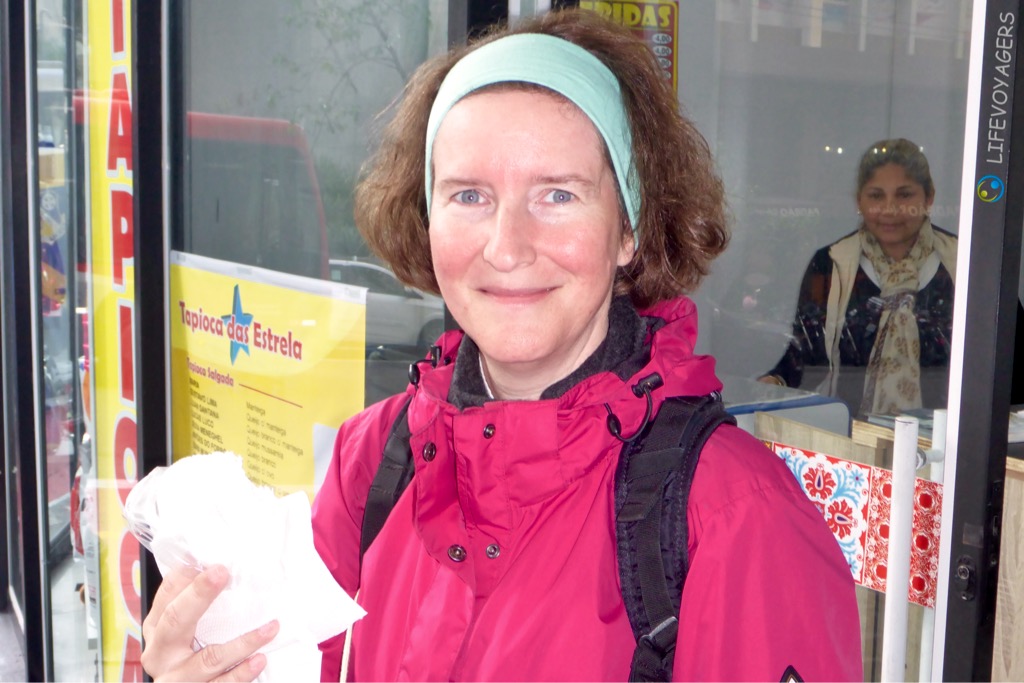
Claudia happy with a tapioca pancake filled with cheese and herbs, with content vendor in the background. Yummy and gluten free!
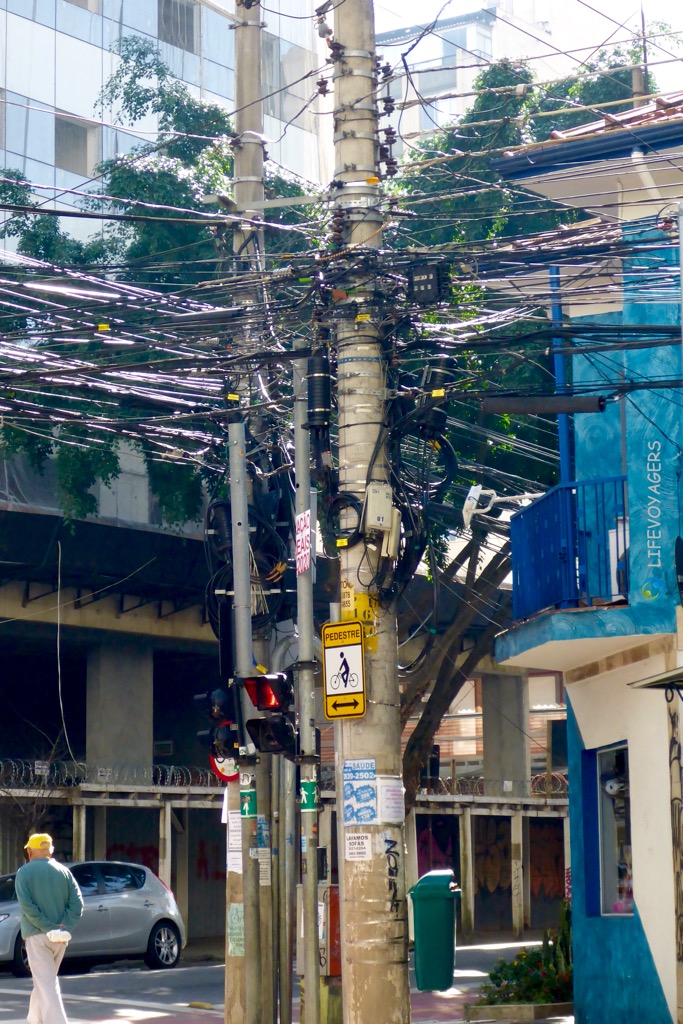
Electrical wiring South American style. Not worse than their Asian colleagues actually! And that’s probably official municipal wiring, can you imagine the general craft results in the private sector…
For it’s size São Paulo boasts a lot of subtropical greenery and leafy streets, alleys and squares, has a ton of local and foreign culinary delights on offer, varying also in quality of course, very different quarters of town cannot be trumped in their number, winter of the Southern Hemisphere provides a nice climate compared to a very nice spring in Central Europe, with low and high peaks of course, but mostly fantastic, and even in summer it probably wouldn’t be too hot and humid, a perfect combination would be Buenos Aires in summer and São Paulo in winter of the Southern Hemisphere, if dreaming is allowed… ;-)). In short: we hope to return here too and also explore other parts of Brazil’s!
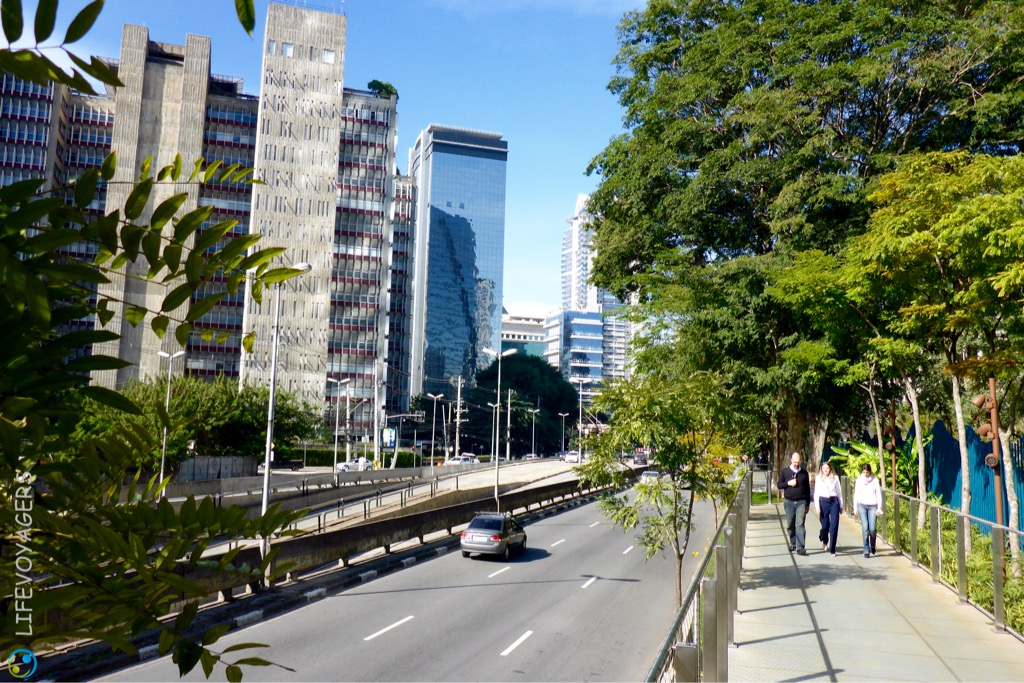
The new fincancial center to the west of Avenida Paulista, where Claudia also visited a long time AXA Corporate Solutions colleague
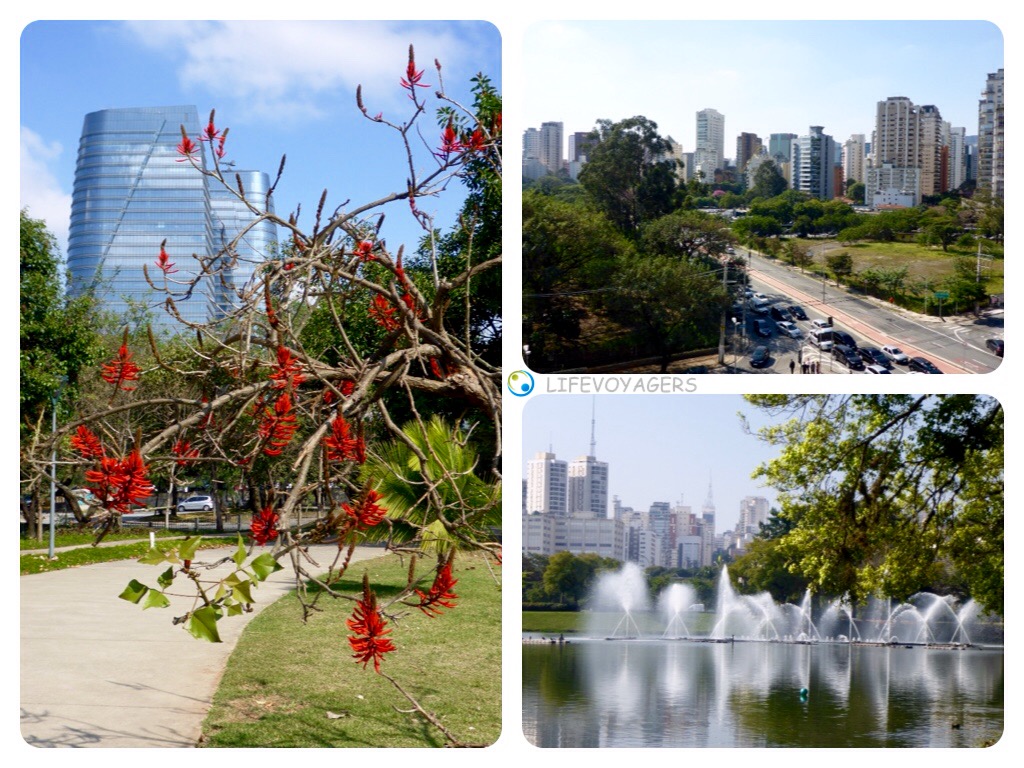
But also nice green parts in the new financial center in Itaim Bibi, Vila Olímpia, and Jardins, and in the biggest park Ibirapuera (bottom right), with a ton of possibilities for leisure activities
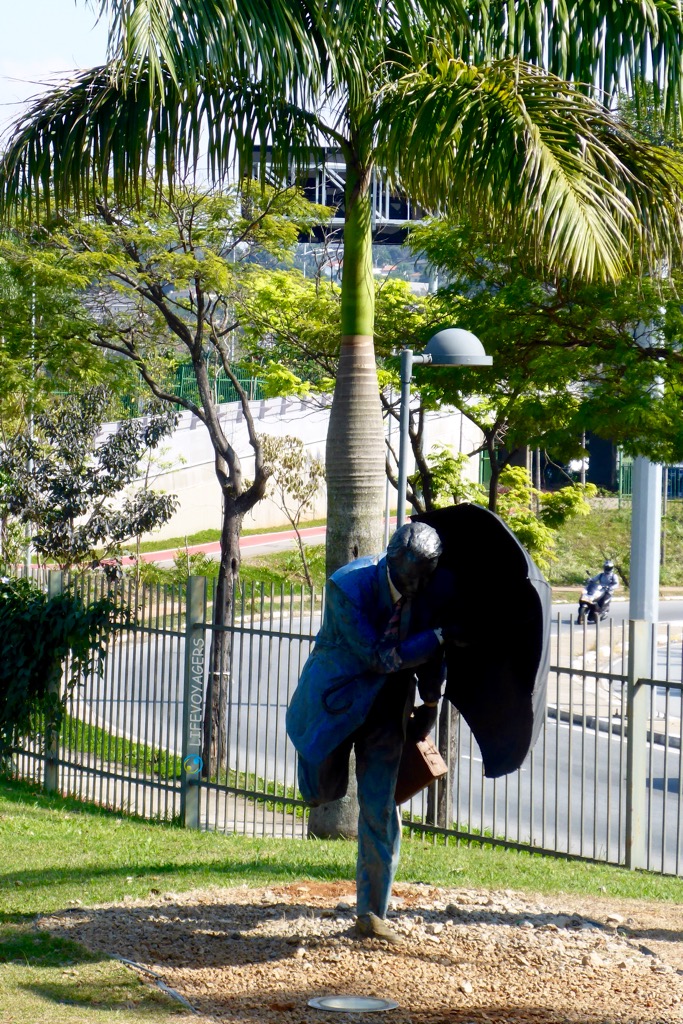
Art alfresco, this is how we like art best! This one is fighting a weather rarely seen in these regions!
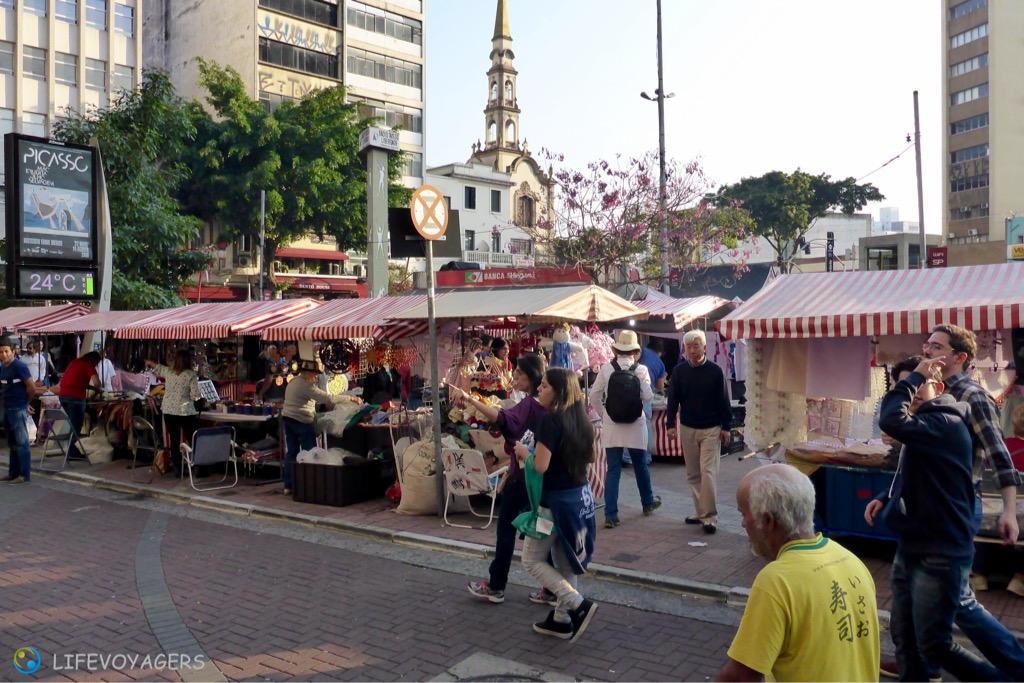
‘Little Asia’ in Liberdade quarter is very lively and highly sought after, and Sao Paulo boasts the biggest Japanese community in the world outsided of Japan!
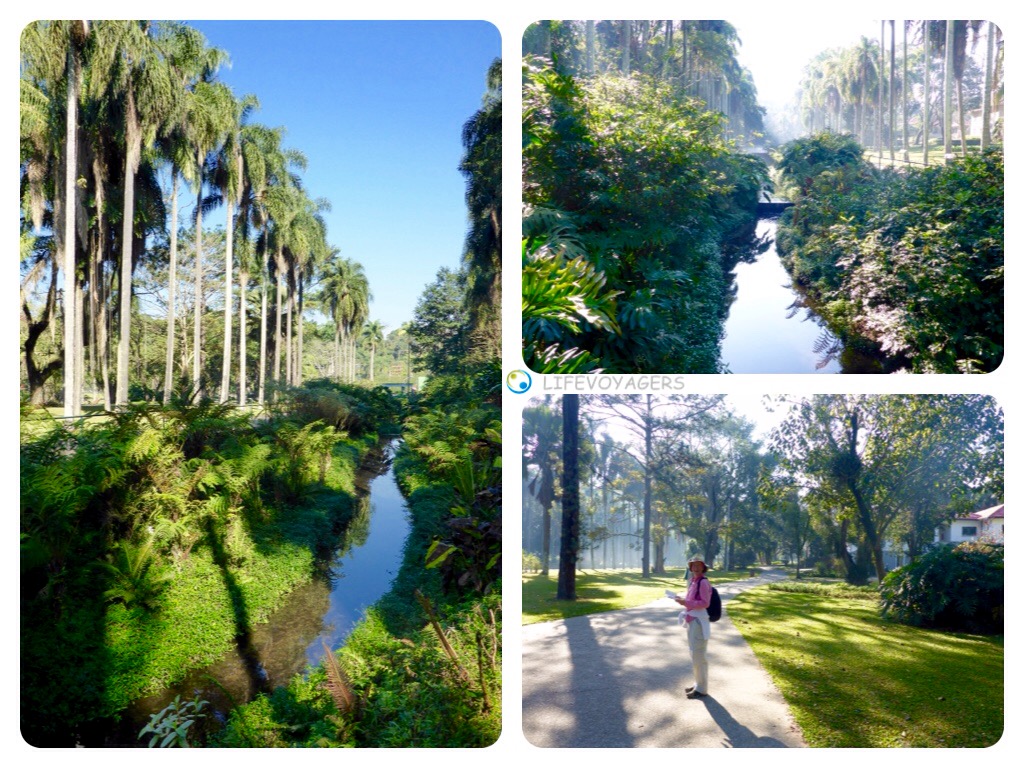
Above and below: and of course the Jardin Botanico, the botanical garden! Enjoyed rather early in the morning with mystical light
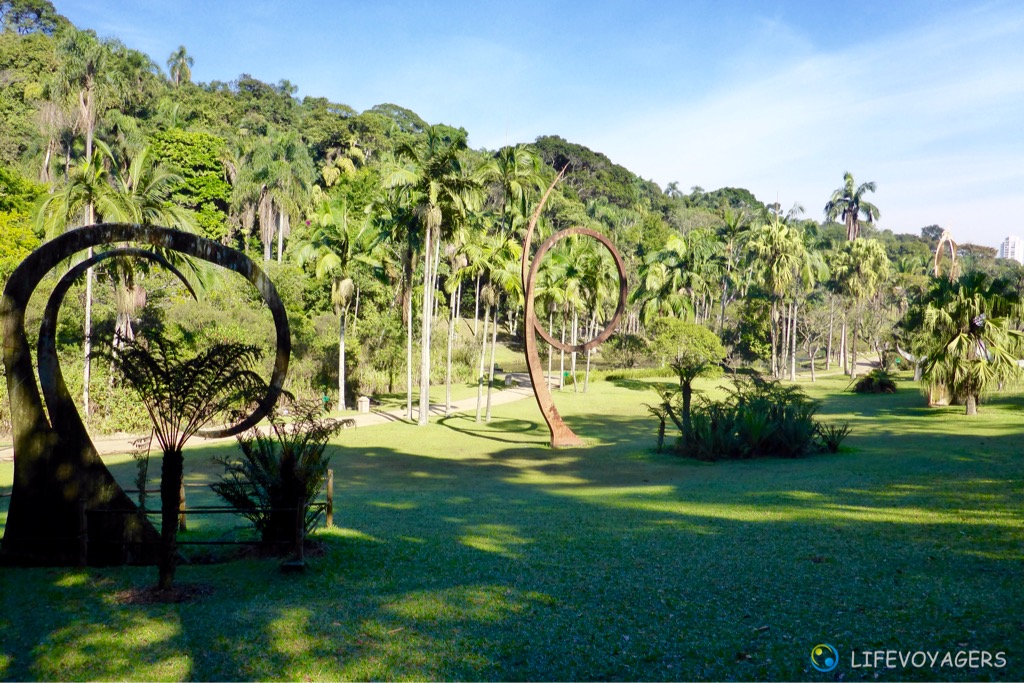
Art alfresco again! ;-))
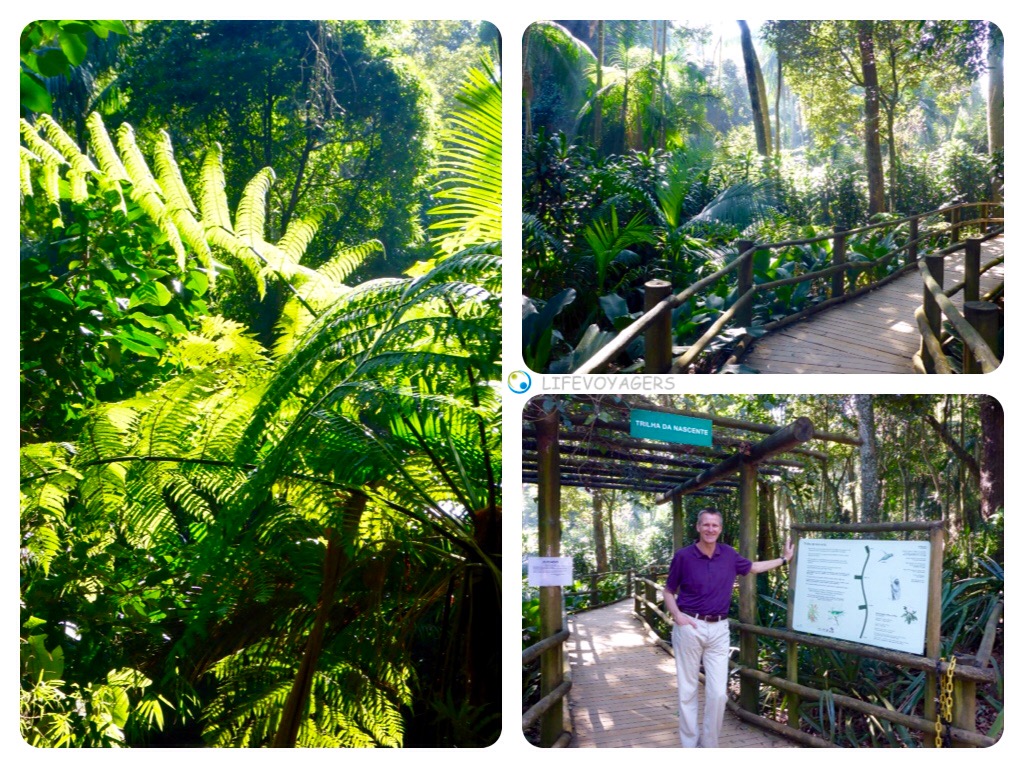
Although the botanical gardens were somewhat below the standard of the many botanical gardens we have seen already around the world, this one boasted a leftover part with ‘original’ atlantic forest complete with boardwalk to protect it, a very nice and highly sought after affordable and super clean and yummy buffet restaurant, and a lovely wildlife, all above and below!
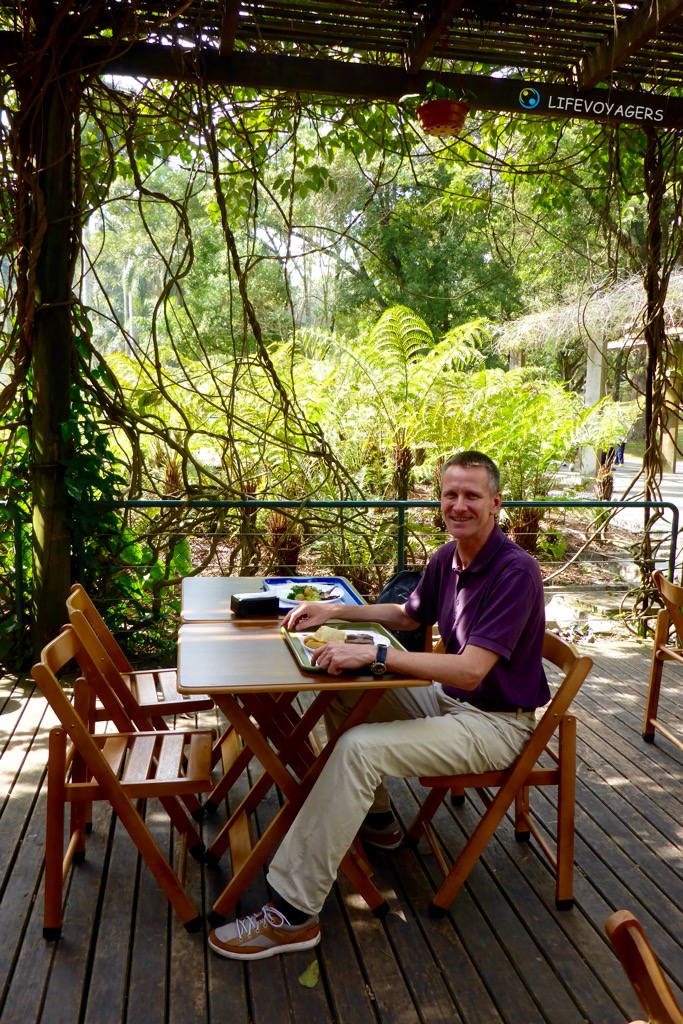
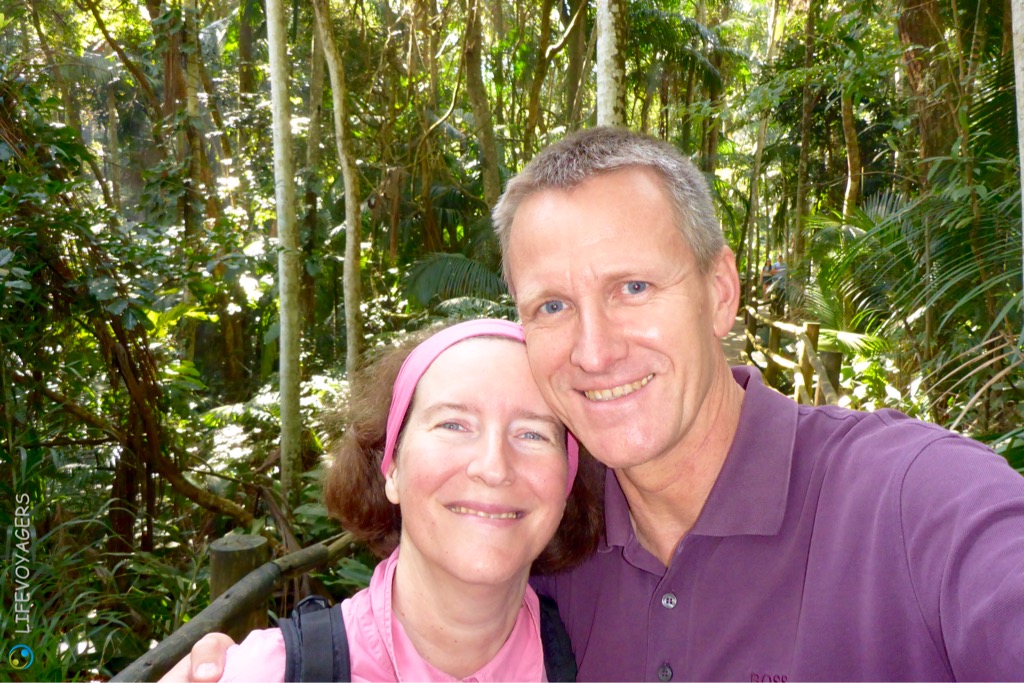
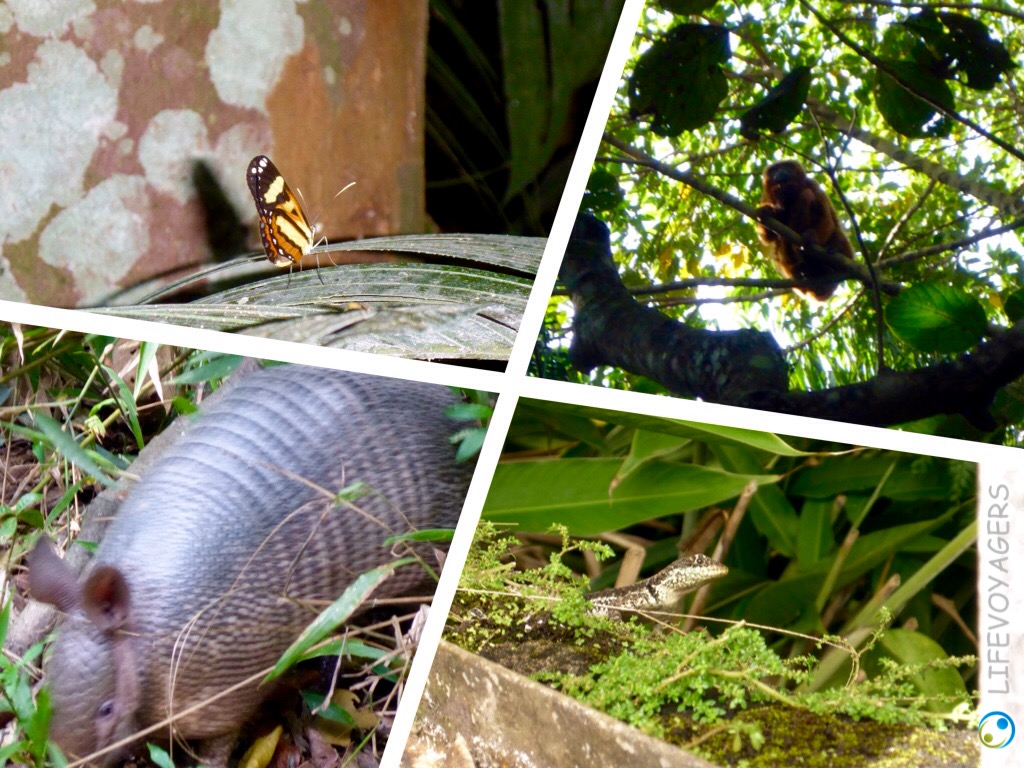
The animals don’t always pose as beautifully as the butterfly top left, we were lucky to get a shot at the monkey and the armadillo at all!
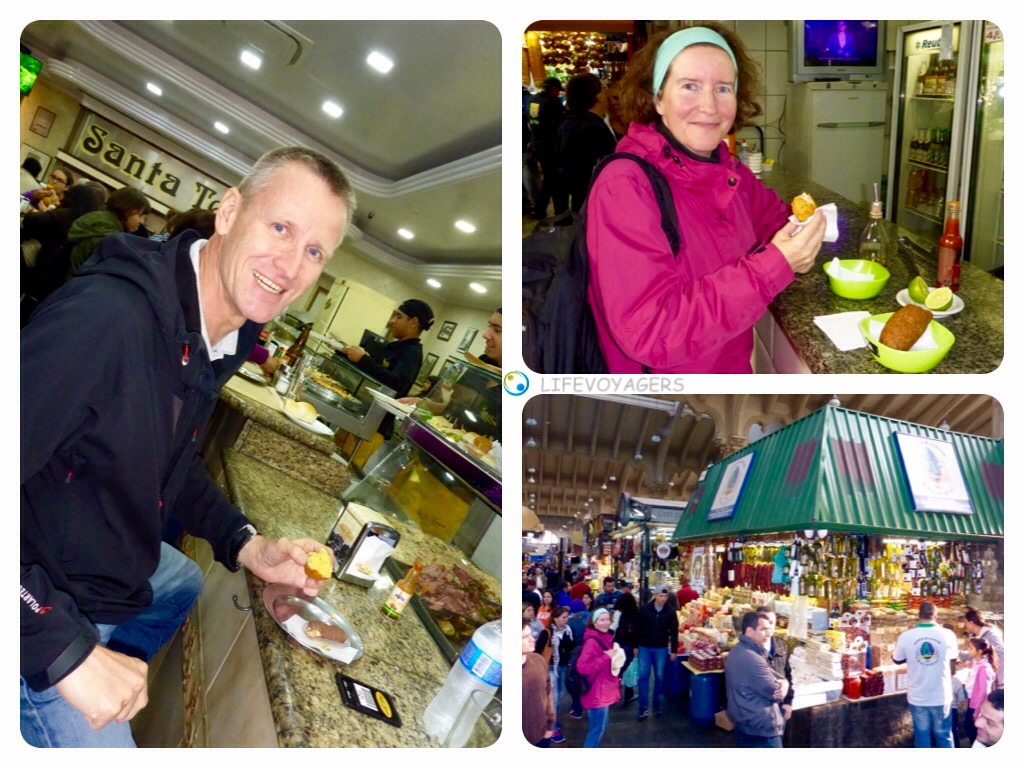
The Mercado central of Sao Paulo is far more ‘civilized’ than the last ones we visited and great fun, C&C enjoying a bolinho de bacalao (gluten free), a kibe and a cozinho.
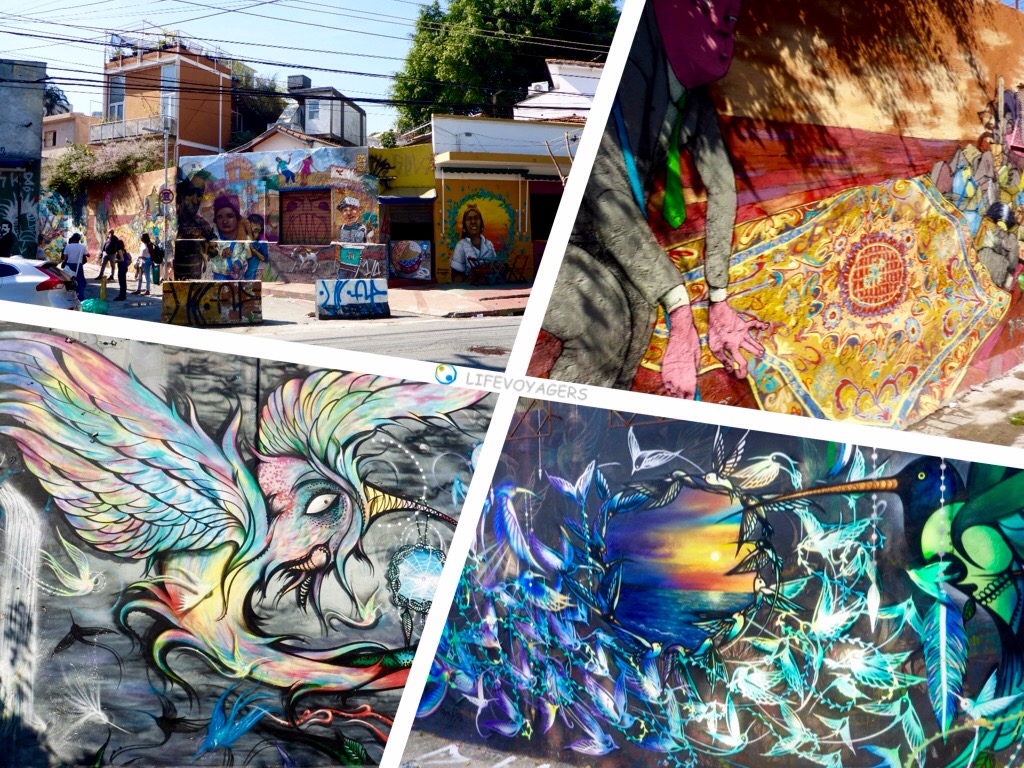
Above and below: street art and its different forms started to fascinate us on an art walk in London with London Walks (check them out, highly affordable and worth the money, over twenty years we did nearly all of them, also repetedly, we LOVE them!). These examples we saw on our walk with SP Free Walking Tour, both of which we enjoyed immensely too! Do one of these street art walks in your city you’ll at least learn something and probably be surprised!
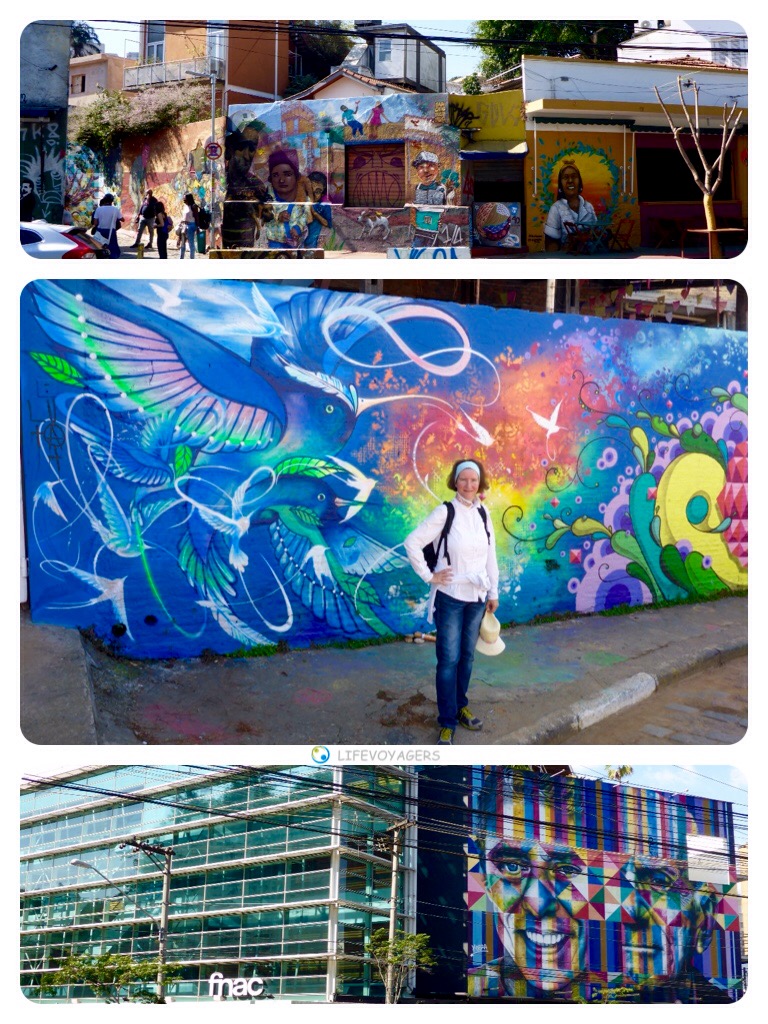
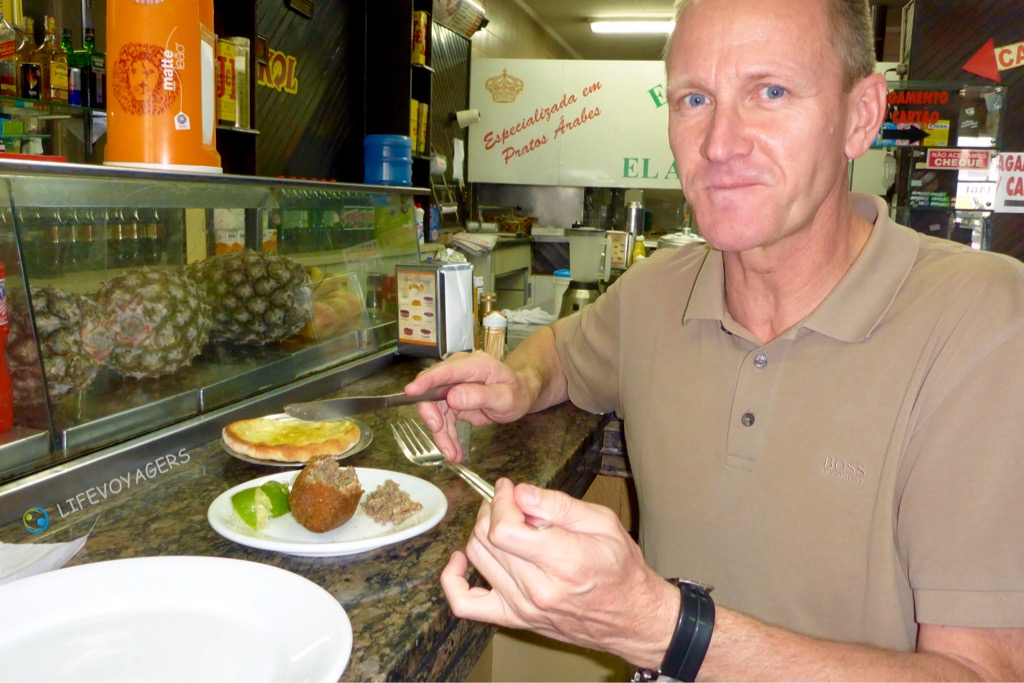
Above and below: Casa da Esfiha, another Lebanese restaurant round the corner from our place, with restaurant Esfiha Verguero closed on Mondays, Carsten had a kibe and an Esfiha again, for a lunch snack before the evening flight to Johannesburg and Durban in South Africa, the only gluten free dish was a main dish of cabbage roulade for the equivalent of rather costly 8 Euros, so we ordered it, but got thirteen (13!) cabbage rolls! Claudia managed 6 of them, Carsten does not like them, of course we got a doggy bag, and gave them to the happy gate keeper of our condominium… Our guess that these people know what they do was later confirmed: no cabbage disturbances on the flight, gamble gone right ;-))
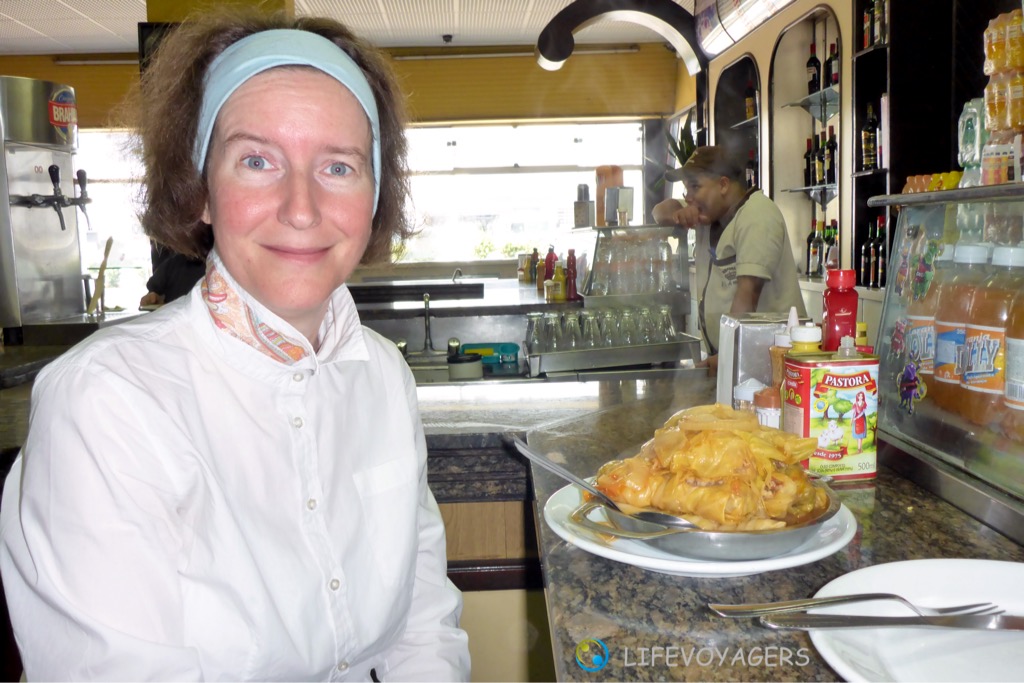
Very short, rudimentary conclusion of in total twelve months South America from a Lifevoyagers’ point of view (two months at the beginning, before Singapore, and another ten consecutive months from October 2015 through to July 2016 inc.: charm and attraction are still high for us for various reasons, not least our passion for Buenos Aires, but the current situation in general, based on the previous older and younger history, is still a often a tragic one, of course in different stages: the simple own good common sense of the individual seems to have been suppressed for so long and so thoroughly that a lack of it of unequalled proportions is often encountered in nearly all areas, this proves to be difficult to stand in the long run… Nearly everywhere the product of even ‘professional’ craftsmanship is faulty to say the least, thus the risk of getting hurt in everyday life is high. Mismanagement of public funds still seems to be abundant, to say the least. Best example for all these are the current circumstances in the Olympic Village in Rio de Janeiro… These observations increase exponentially nearly everywhere in the countryside, compared to the big (capital) cities. The colonial masters of former times, have been replaced by the modern, sometimes less visible ‘colonial masters’ of our times, be they corporate companies of the ‘first world’, manipulating governments, or the manipulated governing, all equally driven by greed for power and money. Preservation of UNESCO world heritage alone is here and elsewhere in the ‘third world’ in the end often sacrificed for pseudo-economic reasons. On many levels it feels like a fight against windmill vanes for the population, in the end they are play balls of different forces (just like us, we only fared more lucky so far with the degree of pseudo-influence admitted to us). So what remains is again just to strive for the upkeep of simple and general values on the lowest level, hoping for it to thrive and spread and finally change something, anyway we only ever encountered people asking for nothing else but living sufficiently and adequately supplied (accommodation, water, electricity, education, work, transport, room for individuality) in peace and love with their loved ones, but among these we also encountered a few who, at the slightest idea of possibly having taken anything away from them, massively overreacted, this is fear, is deeply routed and well founded lack of trust coming into the equation… We are curious to see how we will fare after having returned to a Germany which simply, just like us, hasn’t stopped evolving meanwhile, and which of these mindsets we will encounter more often.
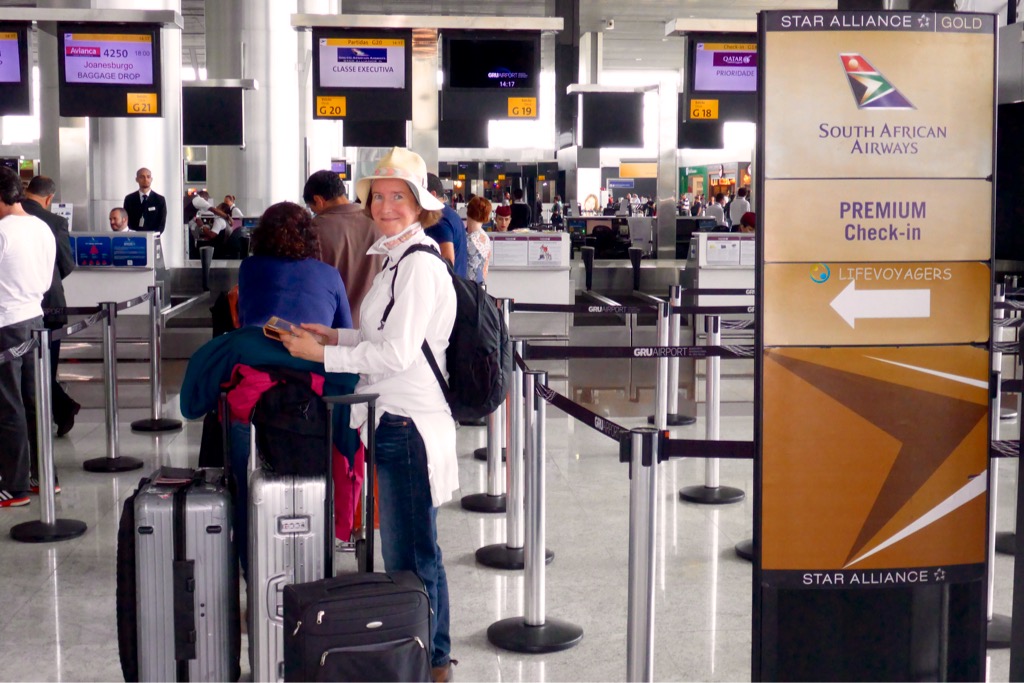
Claudia get’s to be checked in with Carsten via Business Class Lane, what a luxury… ;-)), but no lounge for her! ;-(( Good bye Sao Paulo and South America, and au revoir!
We’ll be back with our adventures in South Africa, but probably only after we’ve finished our last Workaway-Job at Sans Souci Farm close to Cape Town!
Take care meanwhile, hugs & love & thanks,
Claudia & Carsten, Lifevoyagers
Lifevoyagers’ impressions of Cusco and the Inkas
Sunday, 17/07/2016
Here’s a small (!) selection of our photos from Cusco and surrounds, without a lot of written text, enjoy!
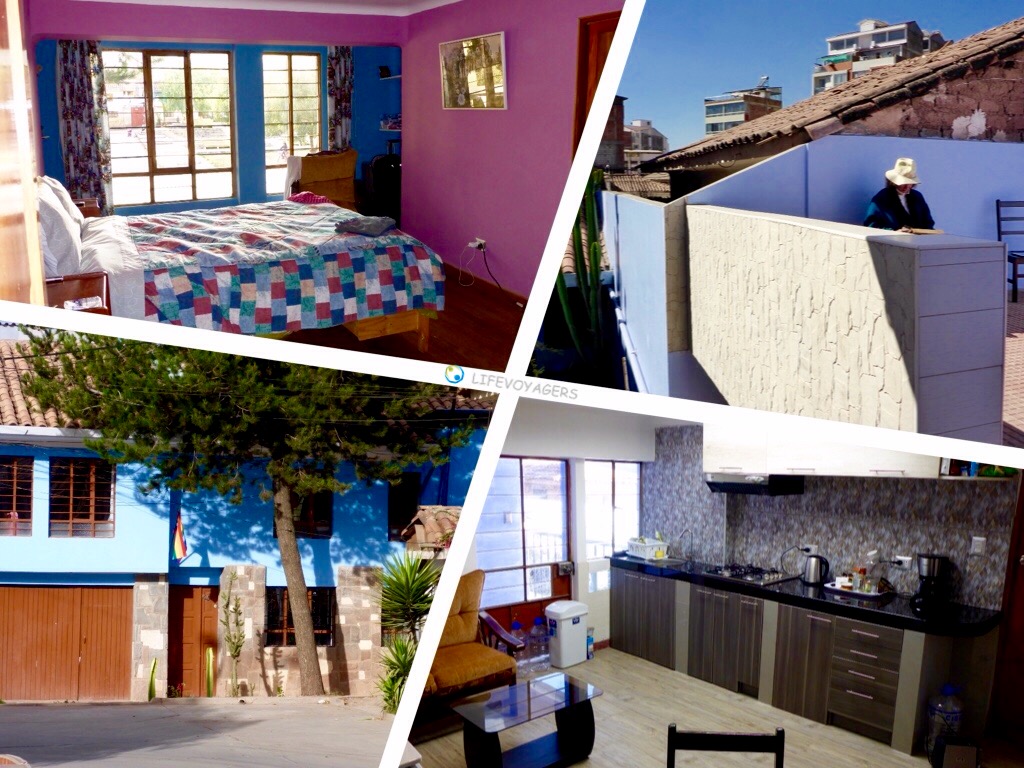
The oasis we got ourselves to spontaneously after cancelling our workaway job: at Alfons’ und Mery’s, Airbnb hosts in Cusco. At a height of 3.400m there are also temperature differences of up to zu 25°C within any single day, without heating, so warming up on the sunny terrace in the morning is a treat! The warmth of the hosts together with this marvellous accommodation added to our wellbeing too.
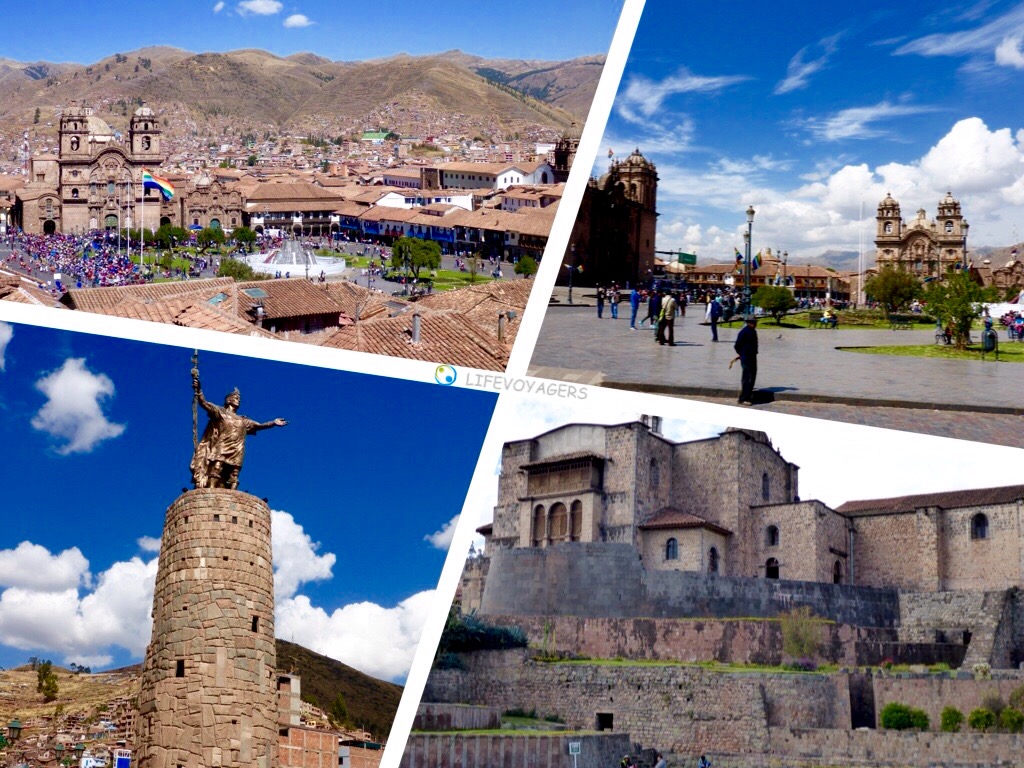
Cusco, coined by both the Spanish and the Inkas, boasts for example a beautiful colonial historical center, several statues of the ninth Inkan ruler Pachacutec, and the Inkan sun temple Coricancha turned church (bottom right), once mostly covered in gold…
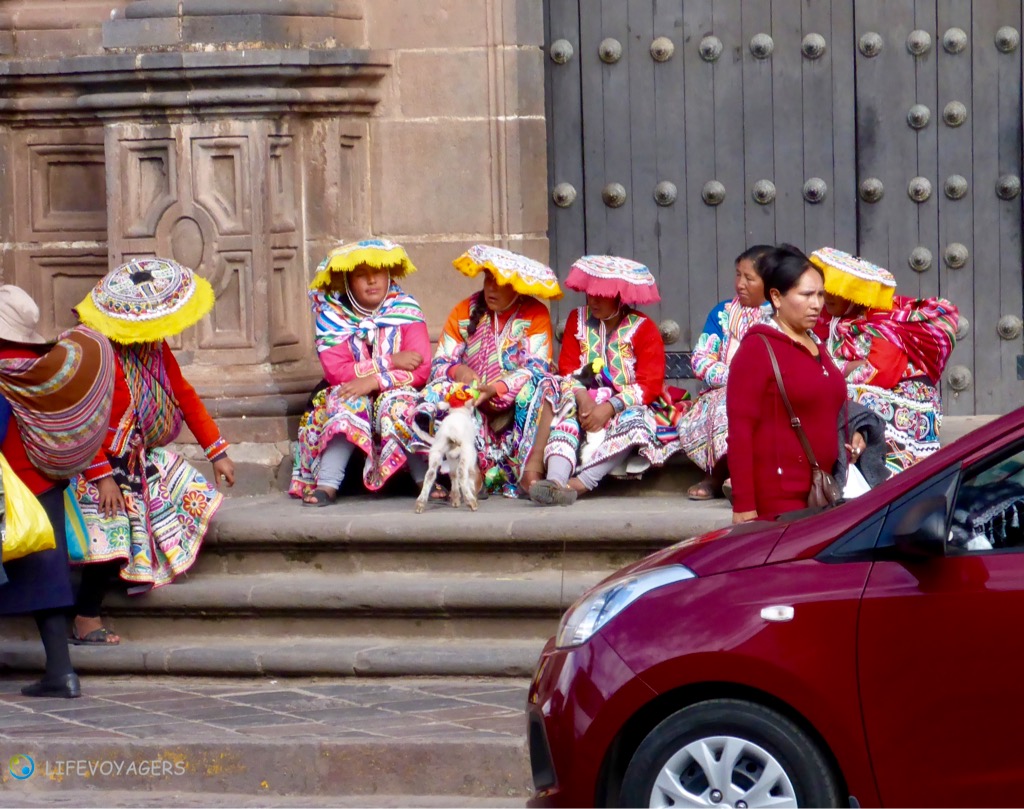
Local indigenous women in one of the numerous different traditional dresses earn a little money posing for colourful photos for and with tourists
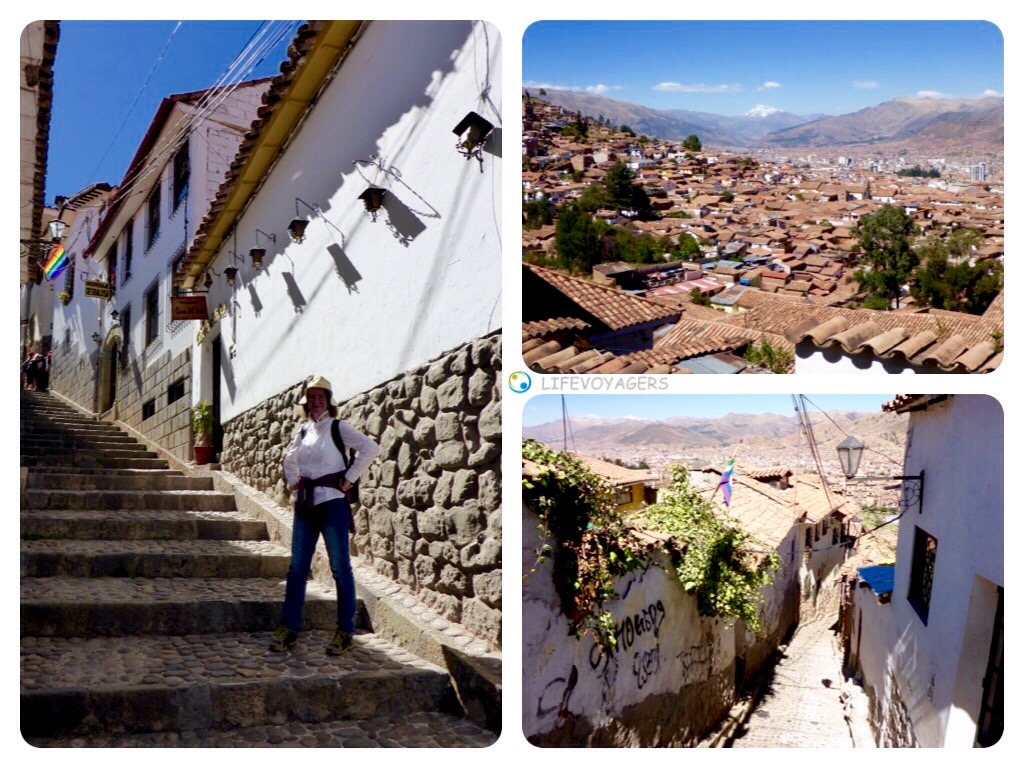
A lot of little alleyways to discover, and the view of the snow covered Ausangate mountain in the distance to be enjoyed (top right)
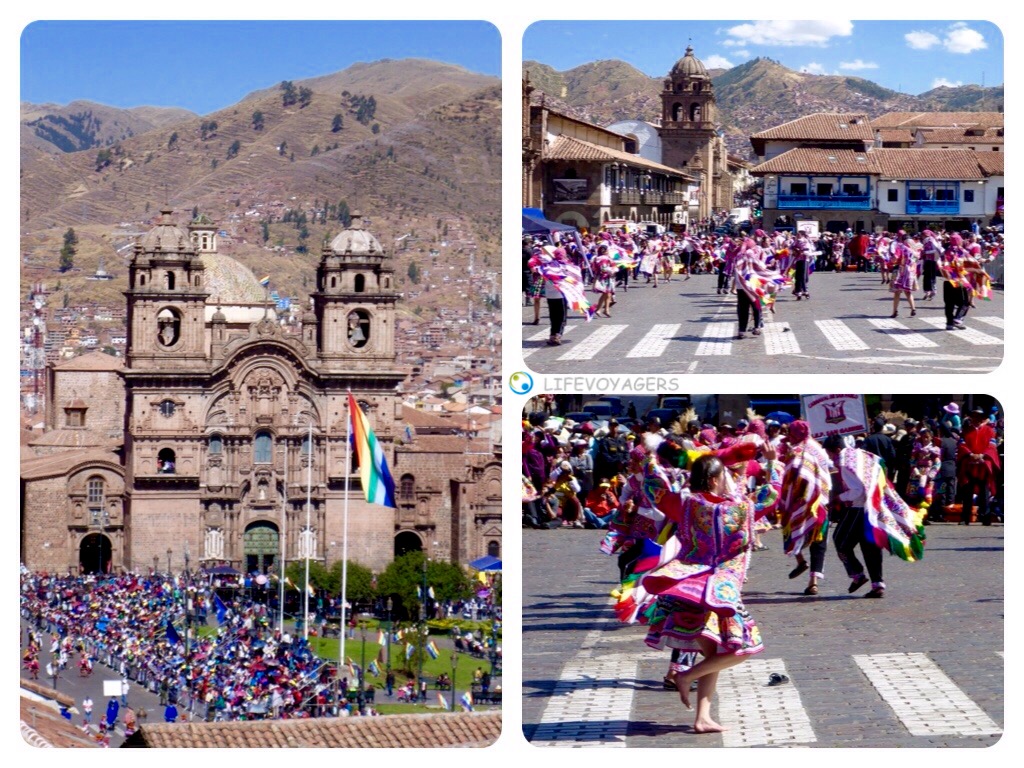
Throughout all of June Cusco celebrates itself and the Inti Raymi Solstice, the dia del campesino and the feast of San Juan, so the Cusco city flag of the rainbow is flown everywhere, and of course from the top of the Jesuit church too…
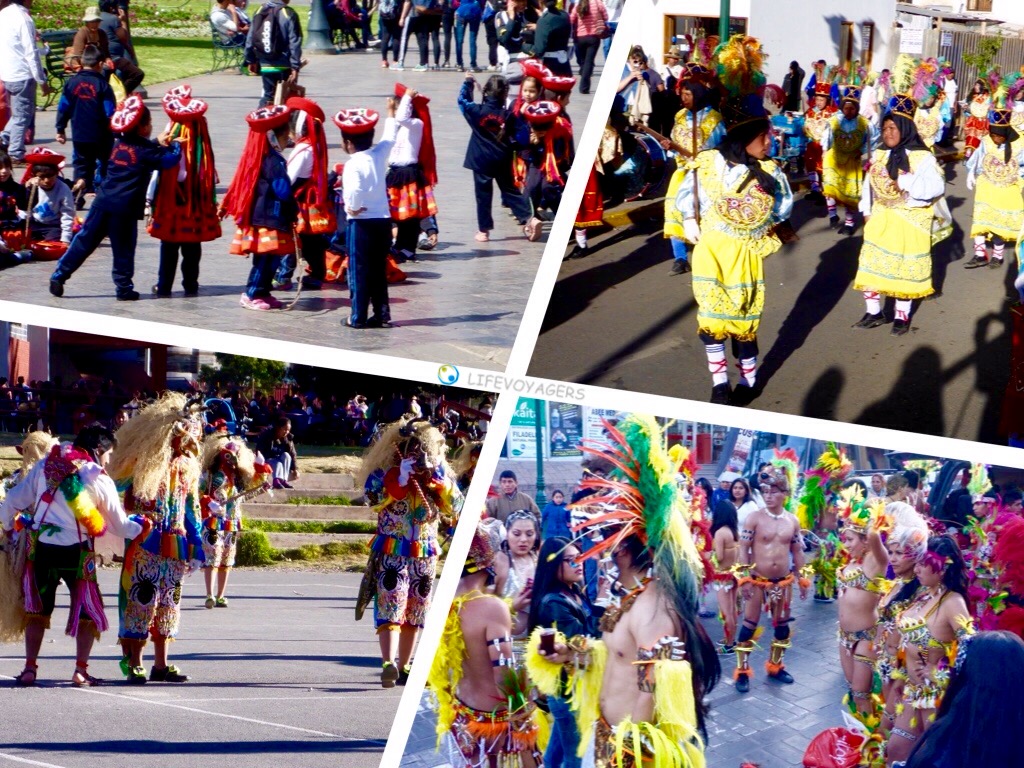
A tiny glimpse of the countless dance- and folklore-groups we got to admire on a lot of days…
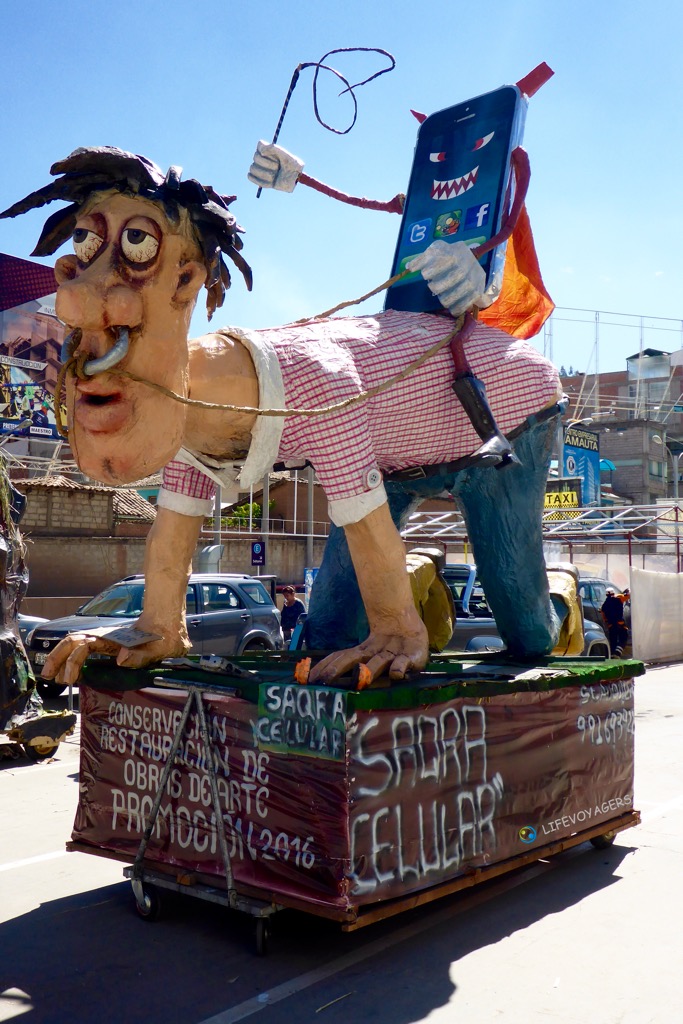
And here too there are parades with figures criticising modern society, this one’s particularly apt one… ;-)))
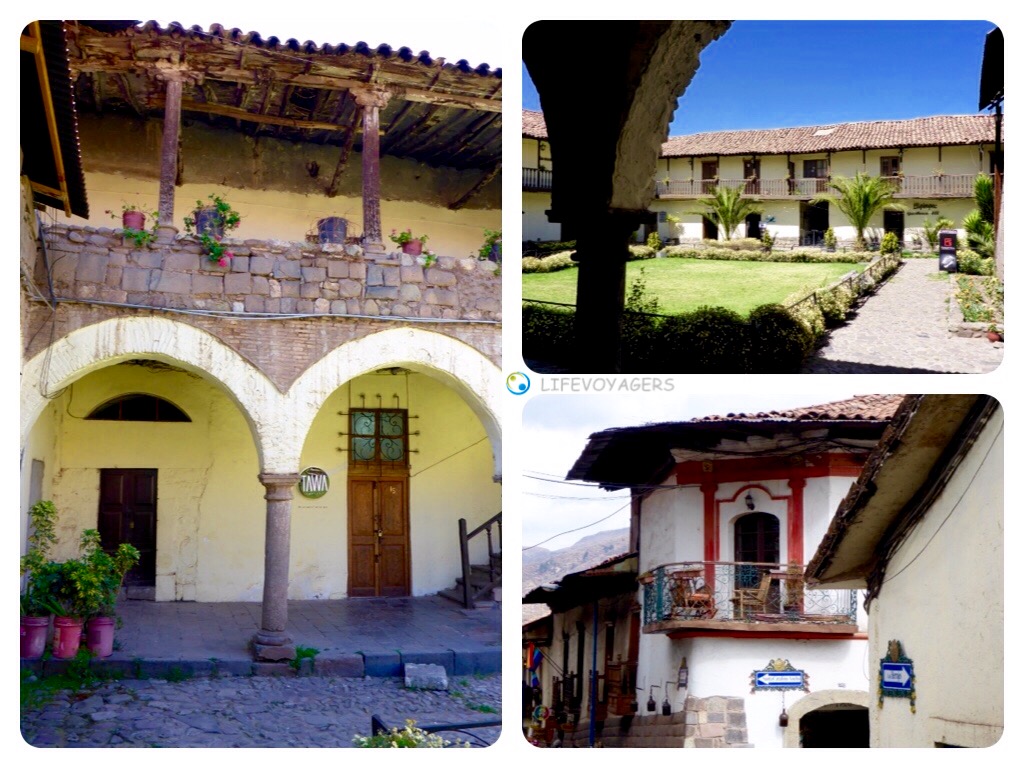
Once more the pretty patios offer peace and retreat from the hustle and bustle…
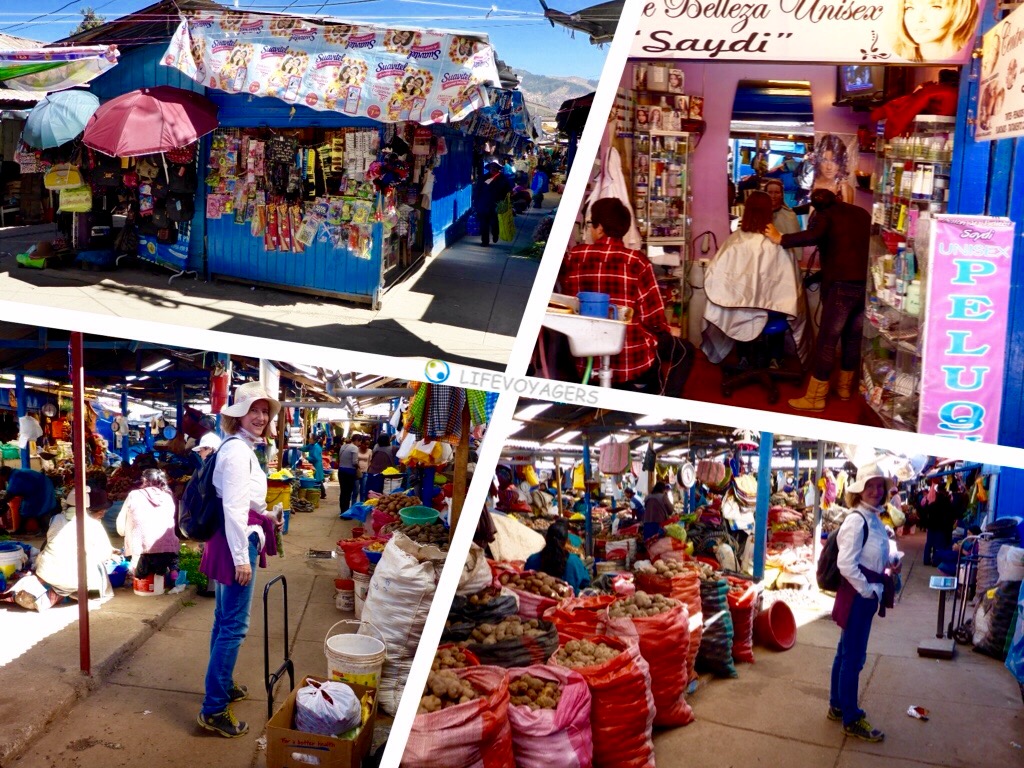
…and contrasting that the attack to all senses that is for example the Wanchaq-market, complete with hairdresser booth for Claudia (less than three Euros for a haircut, including generous tip), and a huge range of different potato types
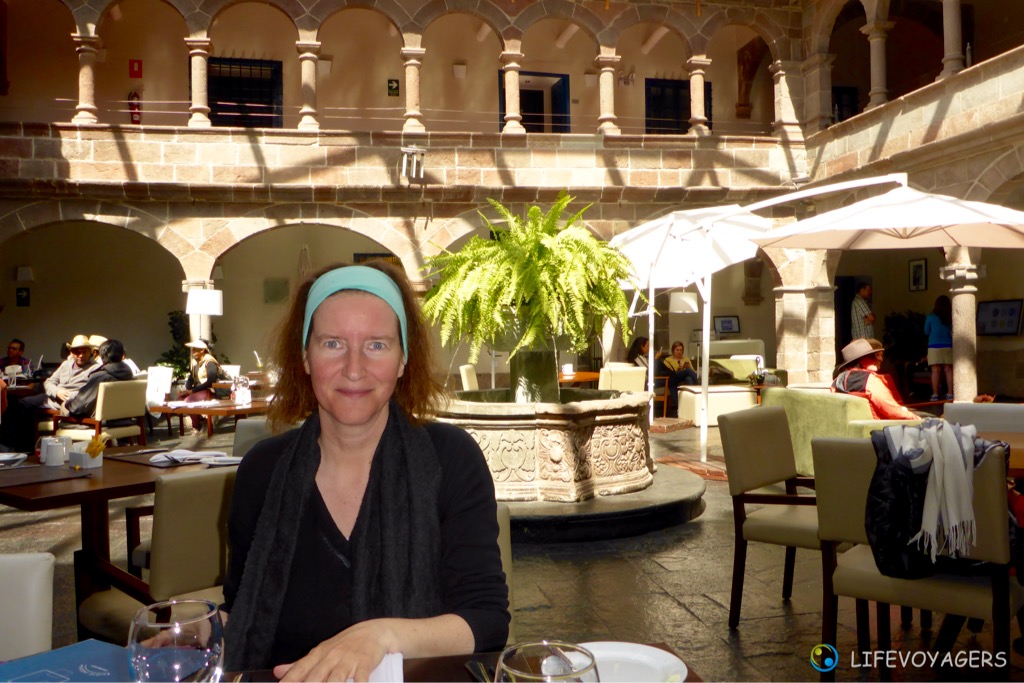
And a tonic-water in the patio of one of the five-star-hotels again offers the chance to process the impressions (but before haircut long due…)!
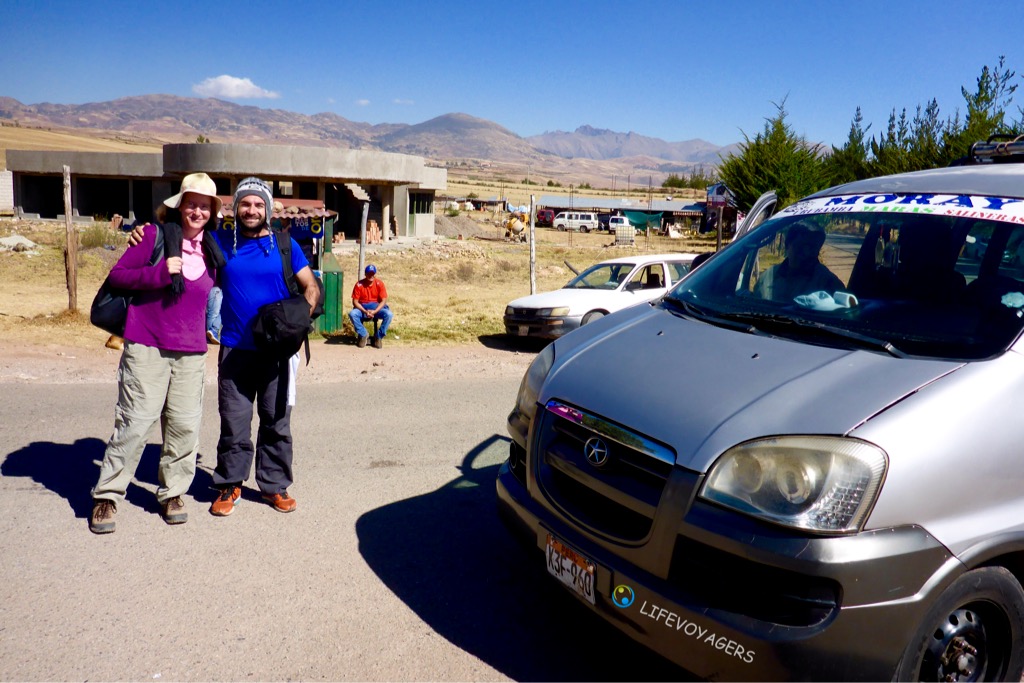
But there’s also the valley around Cusco to be discovered, trip with workaway-colleague Tiago from Brazil, heading for the Salineras of Maras, reached by public transport and collective taxi, small entrance fee, thus very affordable
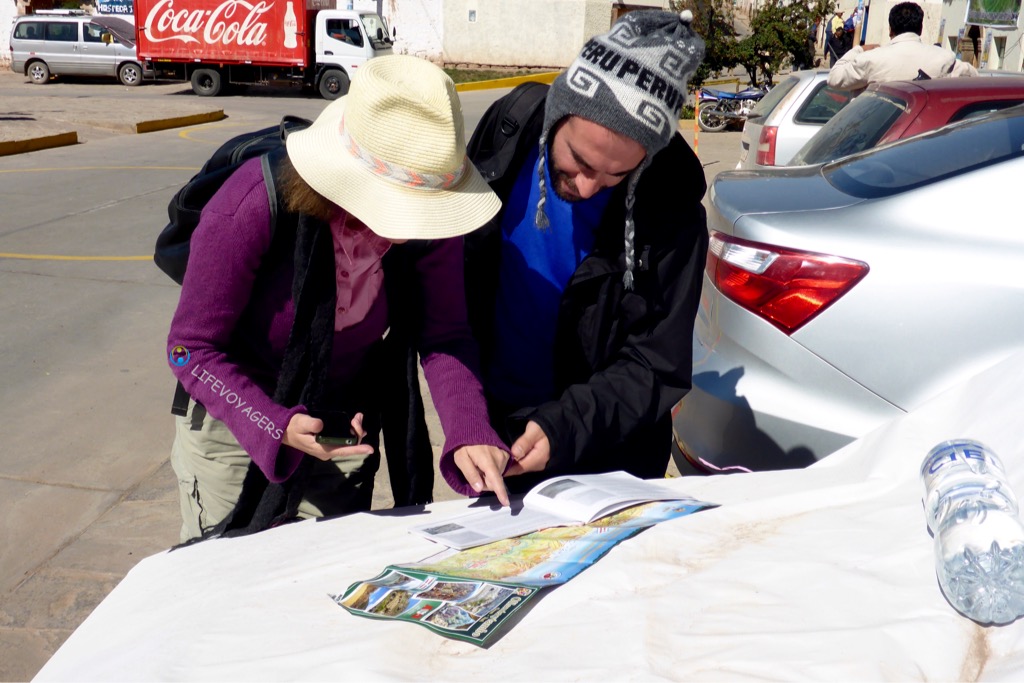
Best to check the route again, nothing doing without google maps offline locating, but a very nice policeman accompanied us to the start of the treck…
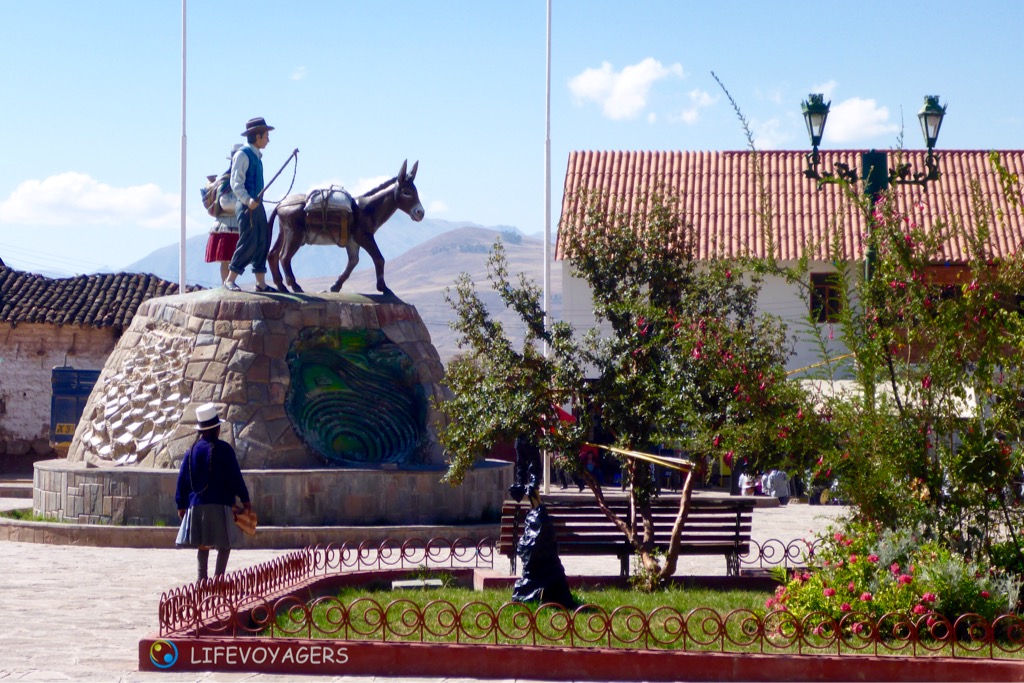
In Andean village Maras there’s a monument to the local farmers, and the womant in front of it wears one of the typical local hats and skirts, the braids are traditionally joined at their ends
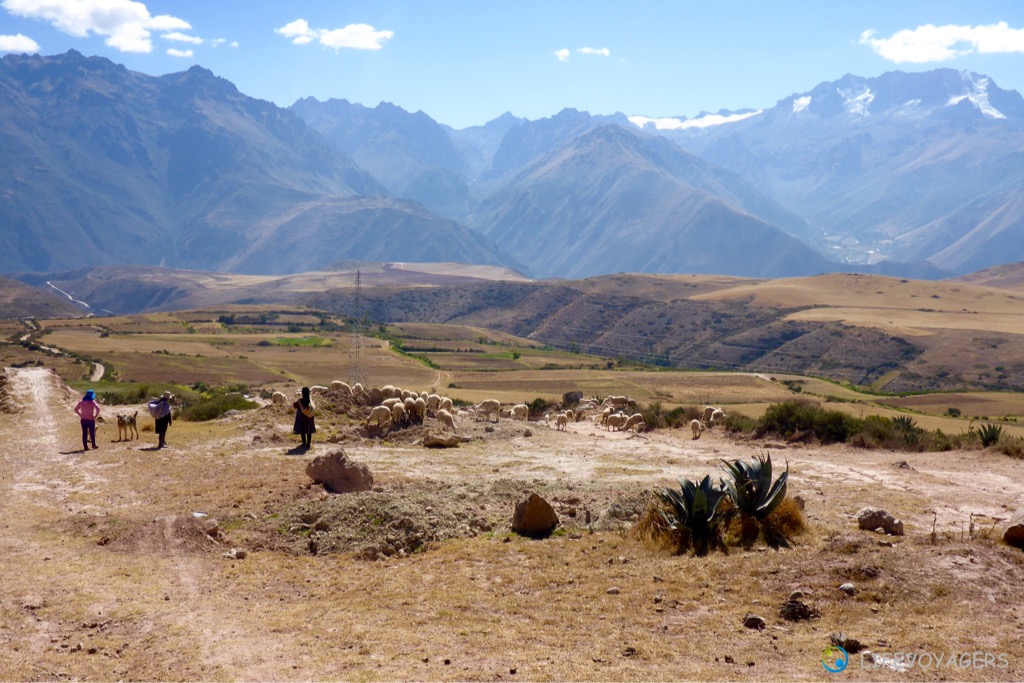
Just outside the village the shepherdess guides us on, and here we could have already sat down in aromatic coriander scent gaping at breathtaking nature for hours…
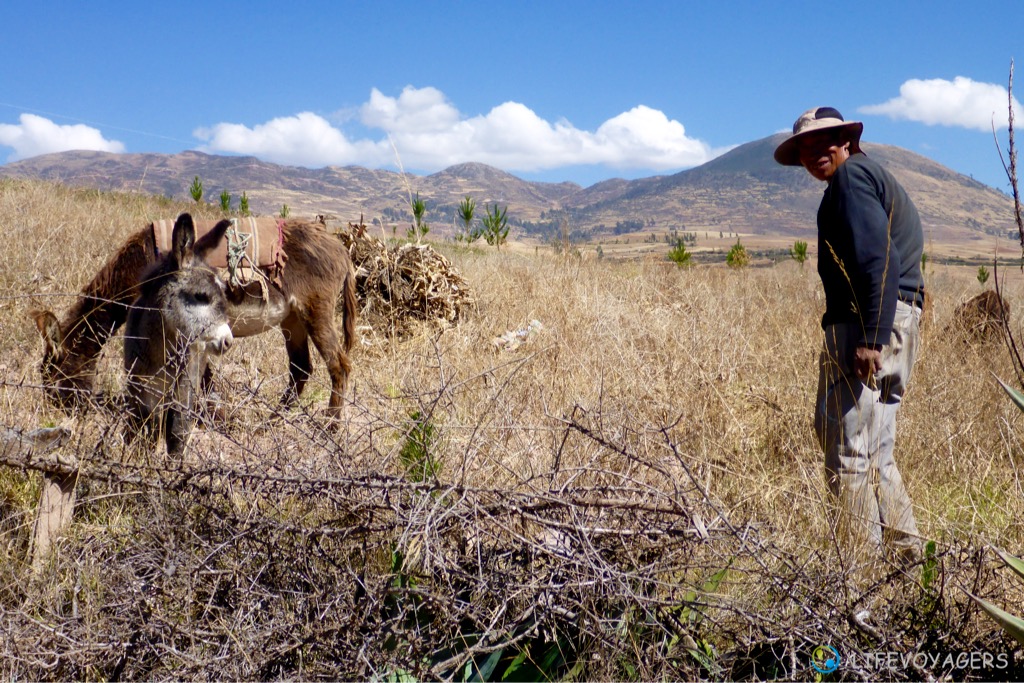
The local farmer and his donkeys had fun getting their pictures taken by the funny tourists
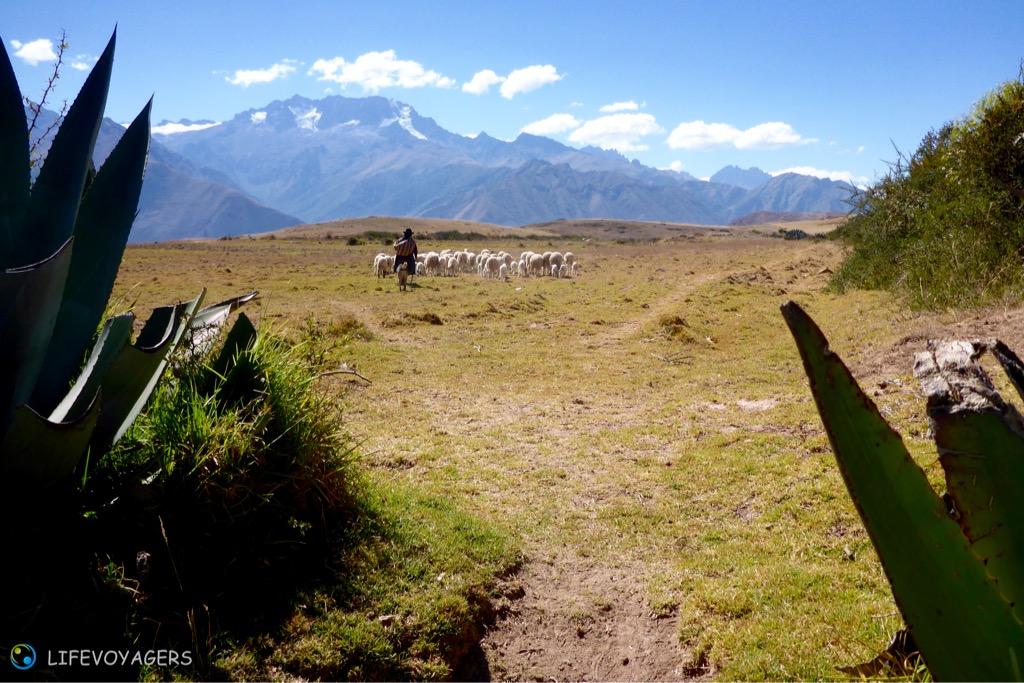
After a while the shepherdess and her herd took off to a different destination…
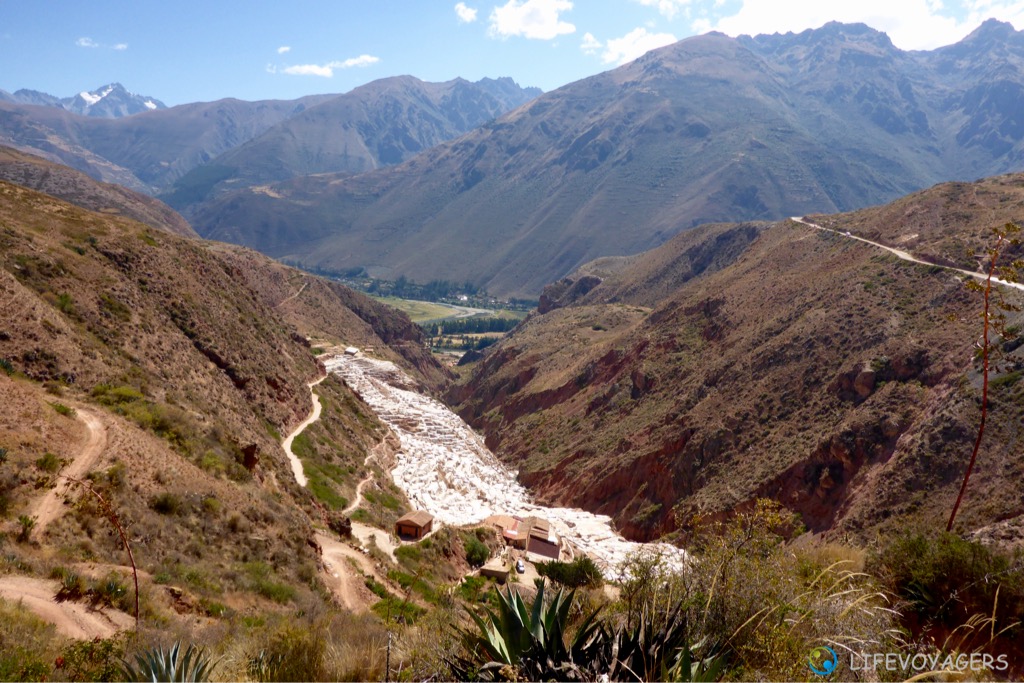 Above and below: and there they were, the Salineras of Maras, used even in pre-inkan times for harvesting salt in more than three thousand pools fed by a tiny brook carrying the salt from inside the mountains, whose water tastes decidedly salty. The Inkas were keen on the proceeds of harvest and sales being distributed justly within the community
Above and below: and there they were, the Salineras of Maras, used even in pre-inkan times for harvesting salt in more than three thousand pools fed by a tiny brook carrying the salt from inside the mountains, whose water tastes decidedly salty. The Inkas were keen on the proceeds of harvest and sales being distributed justly within the community
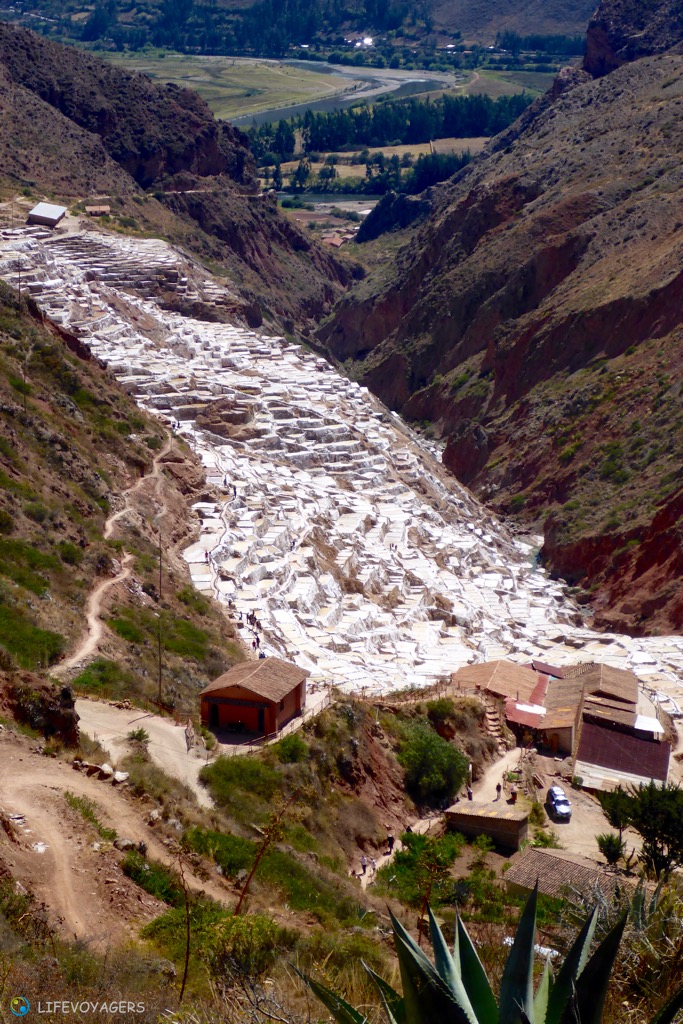
In the background there’s already the Urubamba river, close to the road between Ollantaytambo and Cusco
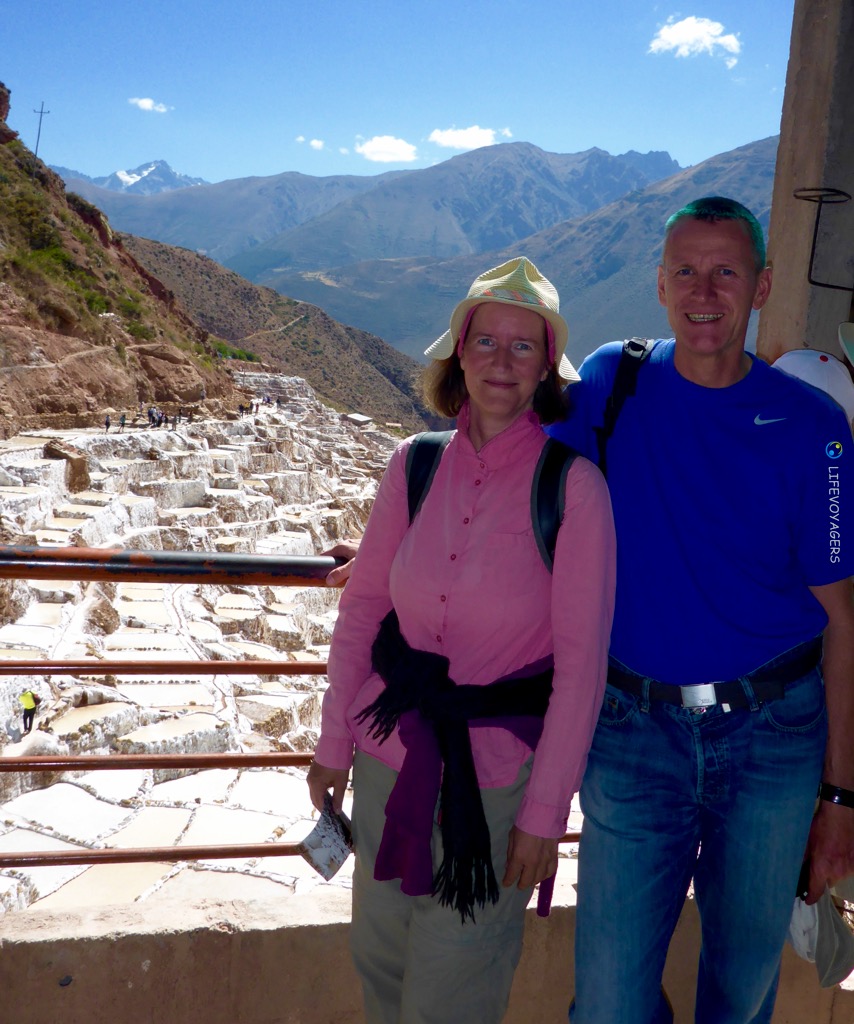
Fascinated Lifevoyagers, the next are again a tiny choice of impressions of this awe inspiring place!
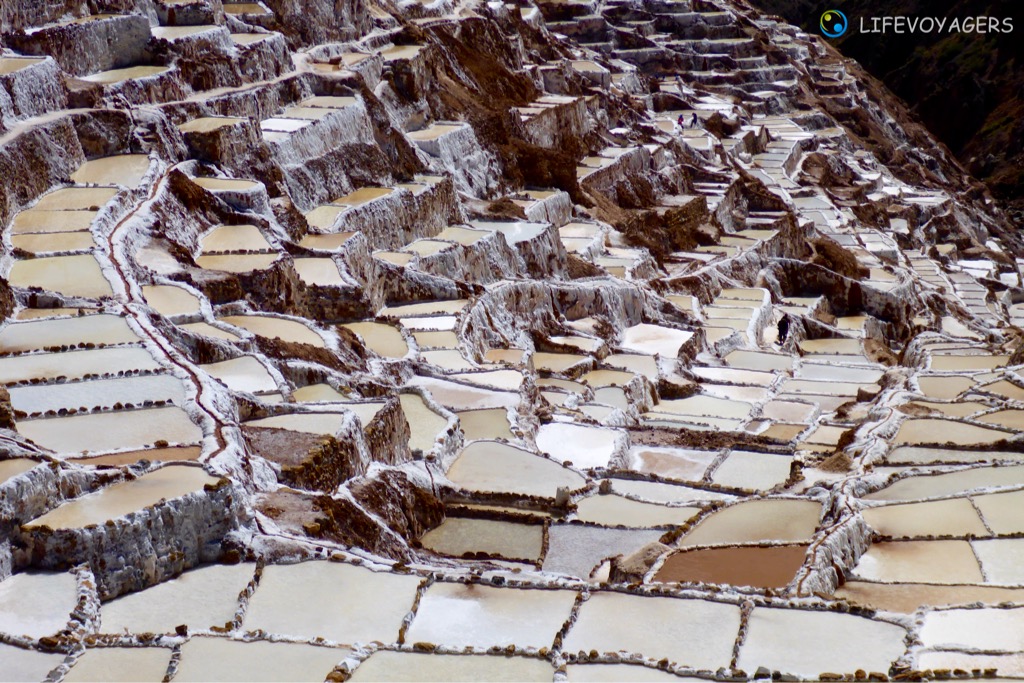
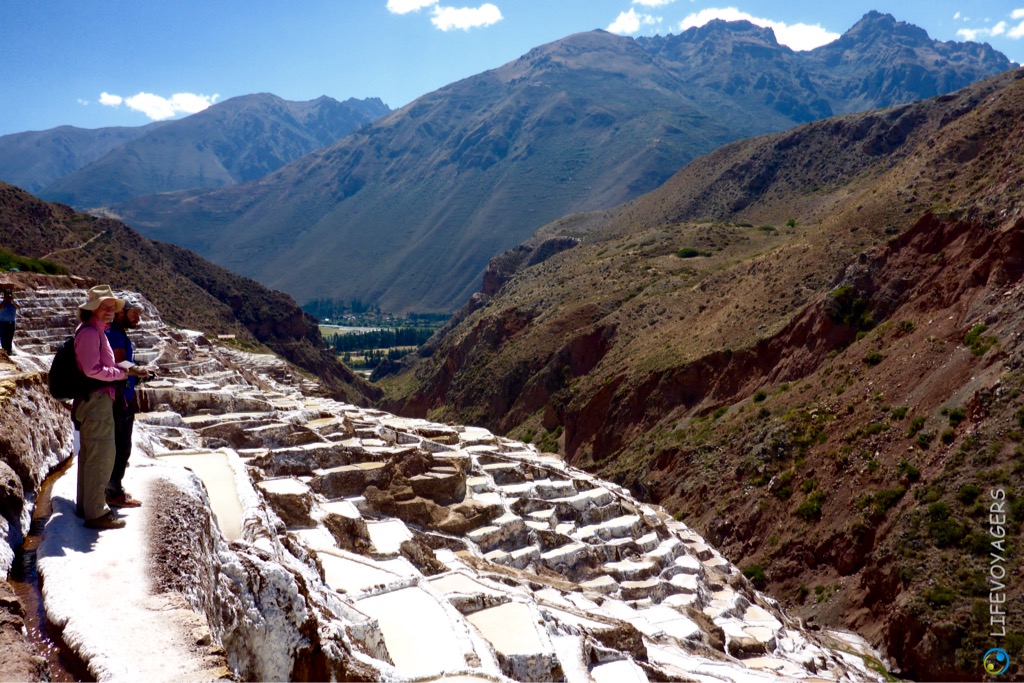
Above and below: Claudia, Carsten, and Tiago speechless at the sight of the whole site and the steep slope
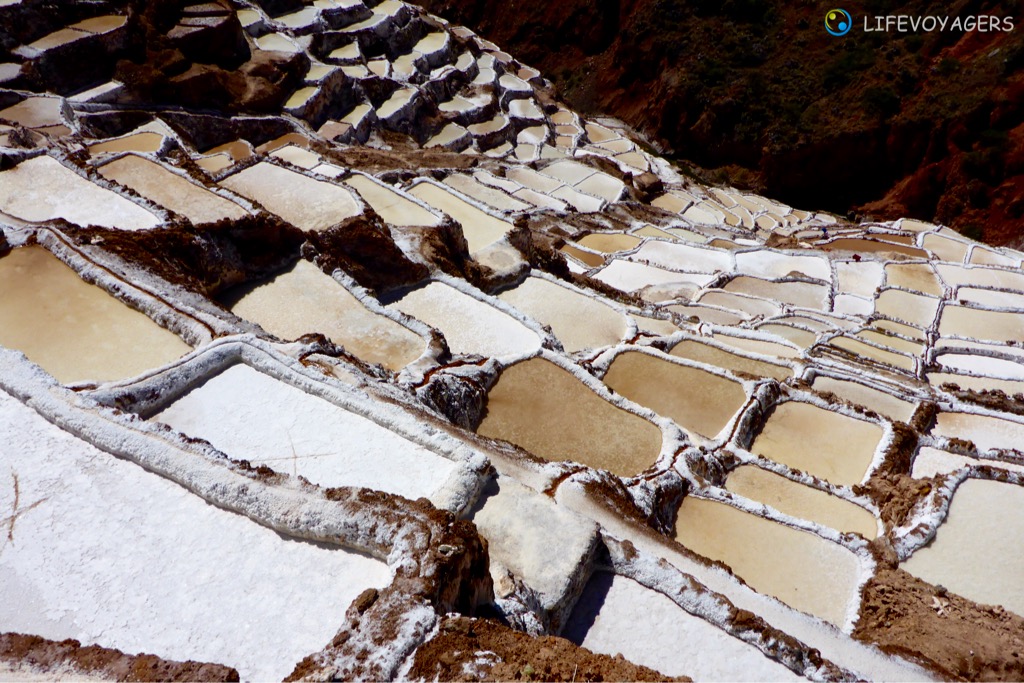
Once the pools have filled up in dry season, after one month up to 120 kg of salt of different qualities can be harvested per pool…
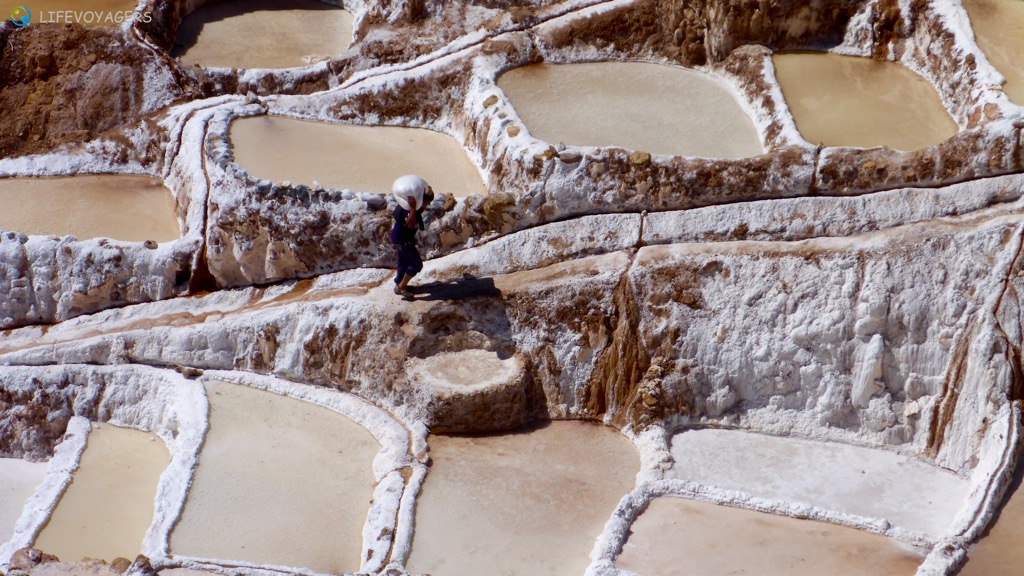
…no easy work for the local people at all, because of the treck on foot from Maras (ca. 1,15h each way), or from Urubamba (1,41h each way), as well as most intense exposure to the sun, steep slopes, salt crust to be penetrated with a pick and heavy sacks…

Pretty salt crystals floating on the surface of the water assembling to become a crust over time
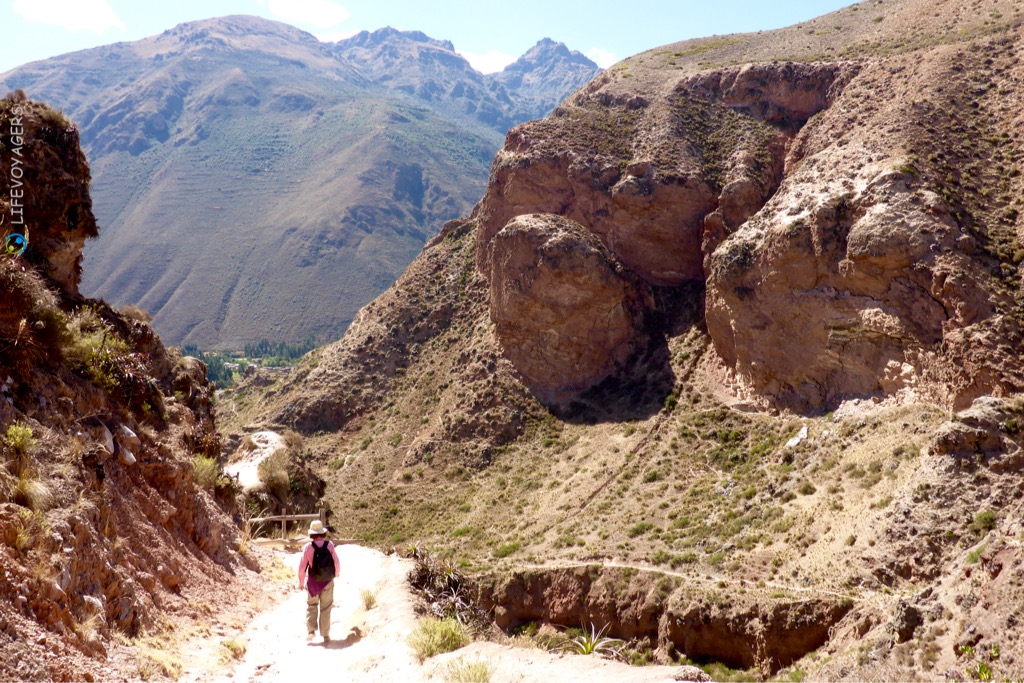
Once we crossed the Salineras we continued on to the valley, again enjoying the beautiful landscape
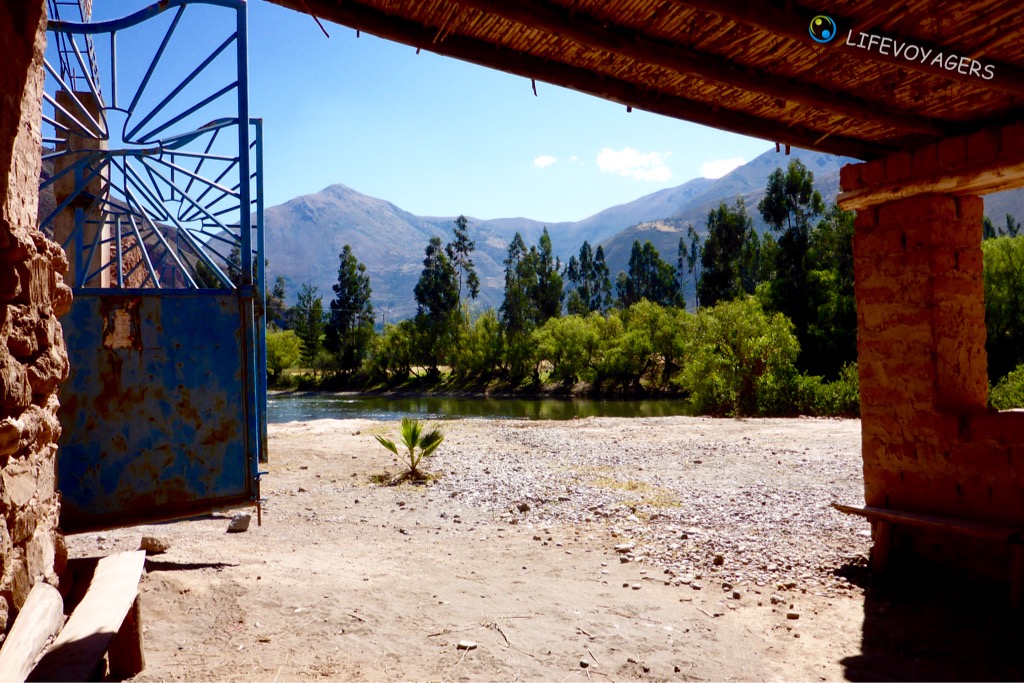
Picknick in the shade close to Urubamba river, close to the road taking us back to Cusco and Tiago back to Ollantaytambo, where he quit the job too soon after… A great trip in best company!
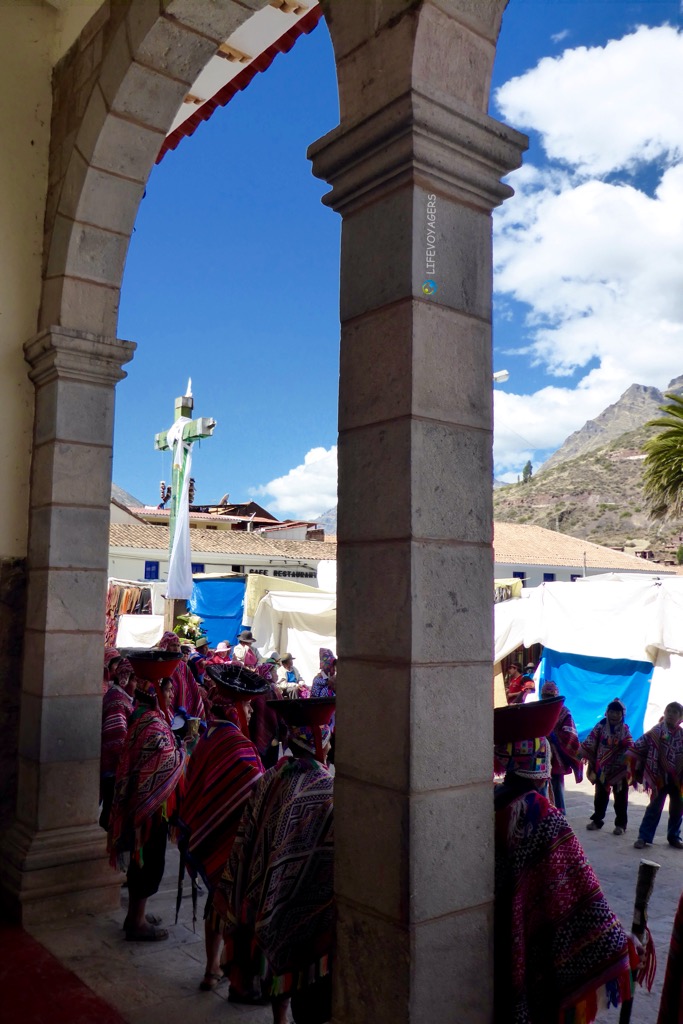
In Pisac we managed joining holy Sunday mass in Quechua, the language of the indigenous Quechua people, above members of the parish in traditional costume before mass, blowing the snail horn, the oldest trumpet instrument ever, usually to be found rather in Asia and South East Asia, that gave us pause to think…
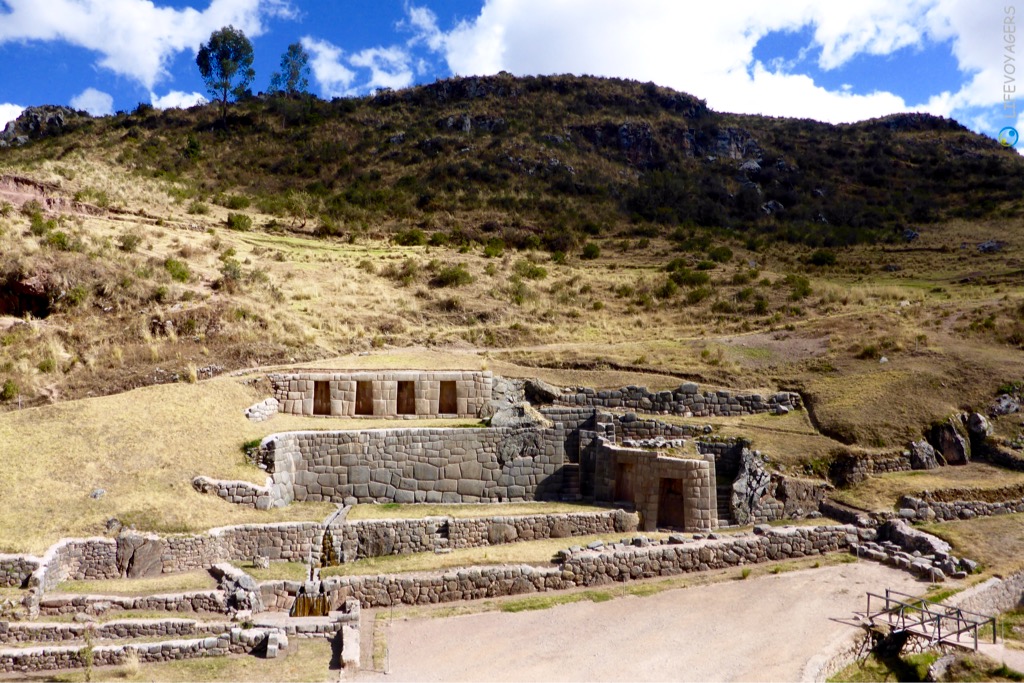
The only one of the four Boleto-Touristico-Collective-Tickets for the Cusco-region we actually bought covered Inka ruins Tambomachay, Puka Pukara, Quenco, and Sacsayhuaman, all situated around Cusco and easily approachable by public transport or else even on foot for the sturdy hiker. Above is Tambomachay, a ritual bathing place of the Inkas, close to Puka Pukara, the red fortress, below
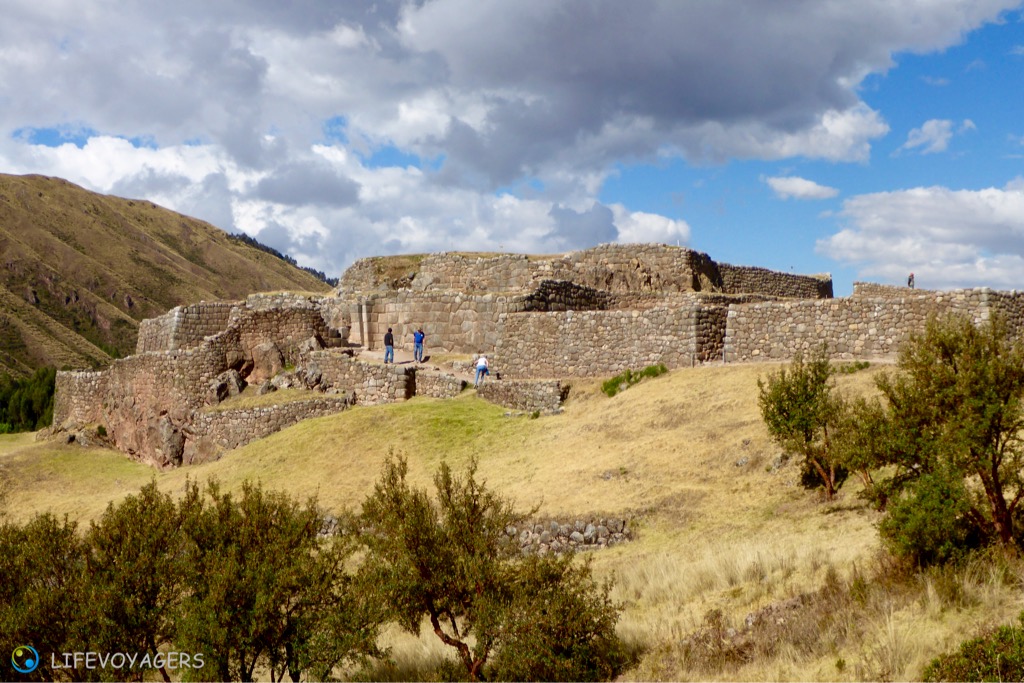
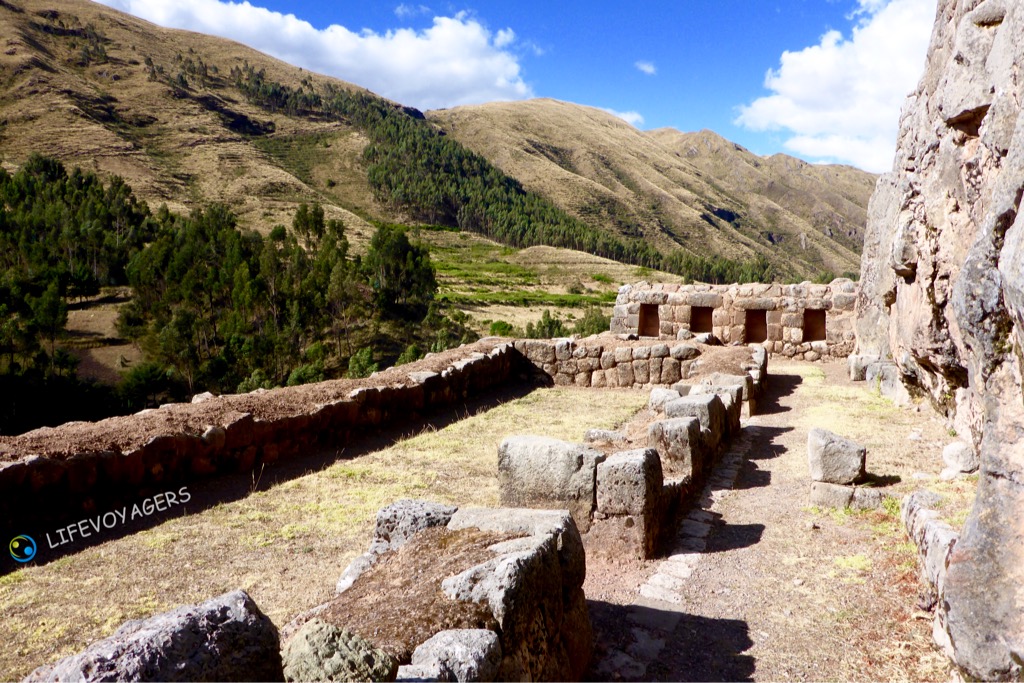
Above and below: More details of fortress Puka Pukara, complete with Claudia, fascinated by Inkan architecture
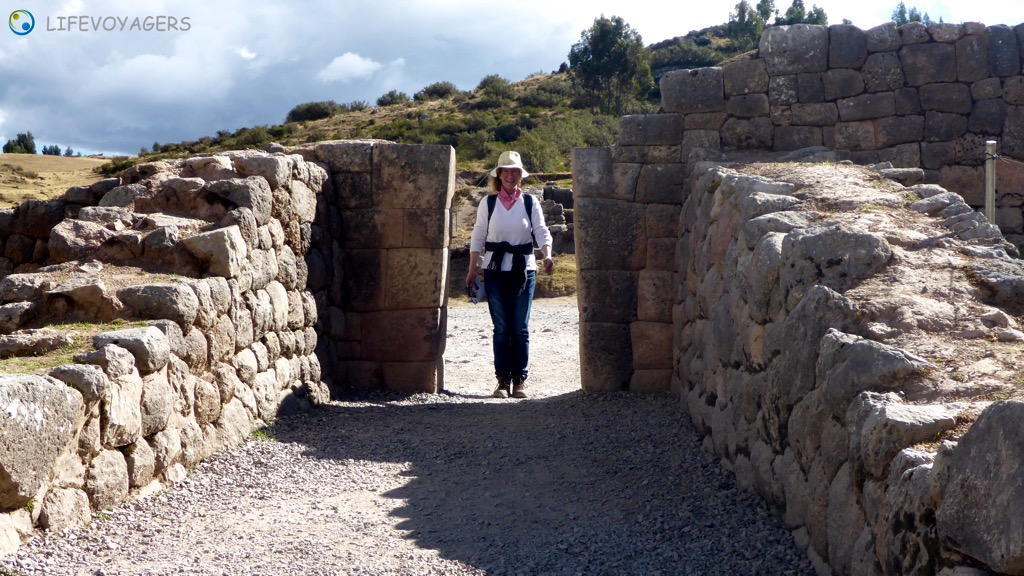
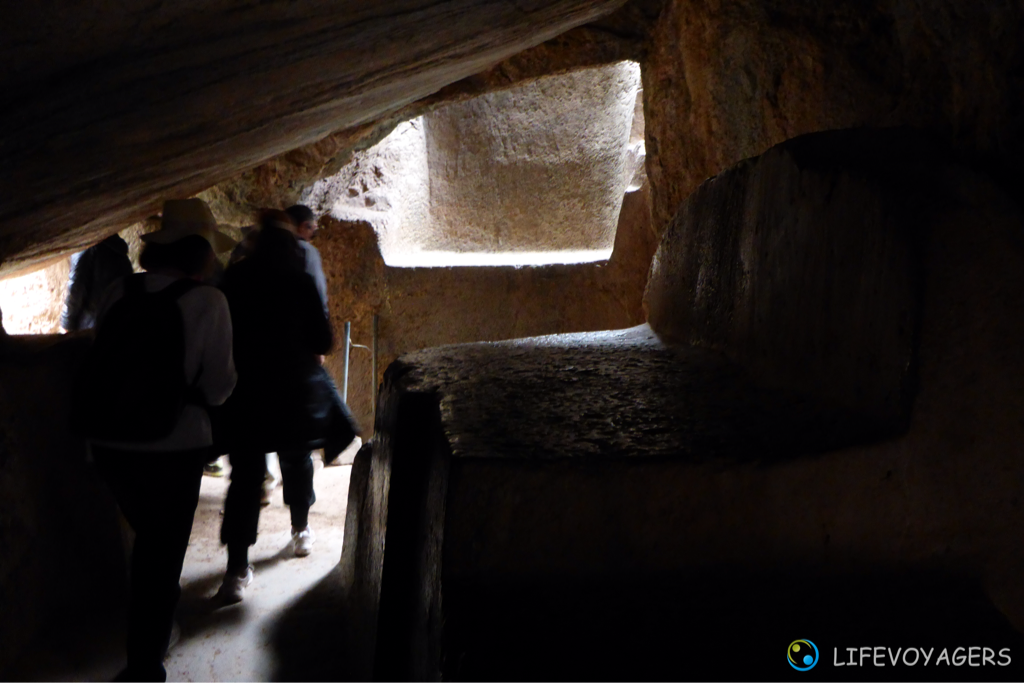
In Quenco the altars for sacrifces were built into and onto natural caves, the human sacrifices are one of the non relatable parts of the in other respects very just and amazingly holistic society order and world view of the Inkas, the victims at least got drugged and didn’t have to suffer, if they didn’t happen to be enemies…
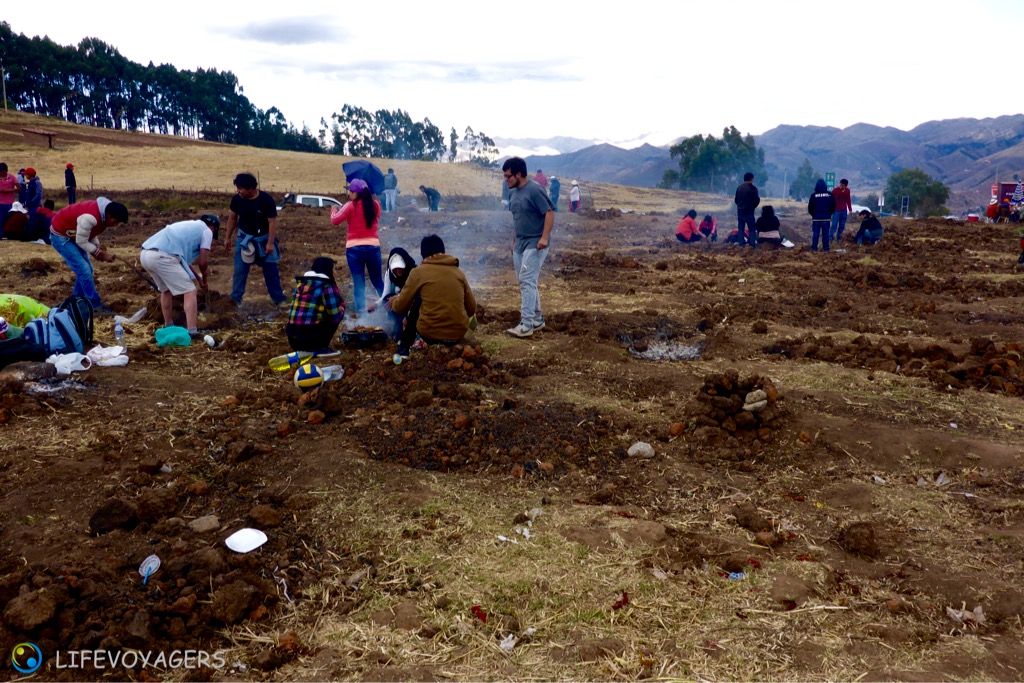
On our stroll between Inka ruins Quenco and Sacsayhuaman we came across a field completely dug up by numerous local people preparing a picknick on their trip in Huatia, earth ovens, similar to in New Zealand…
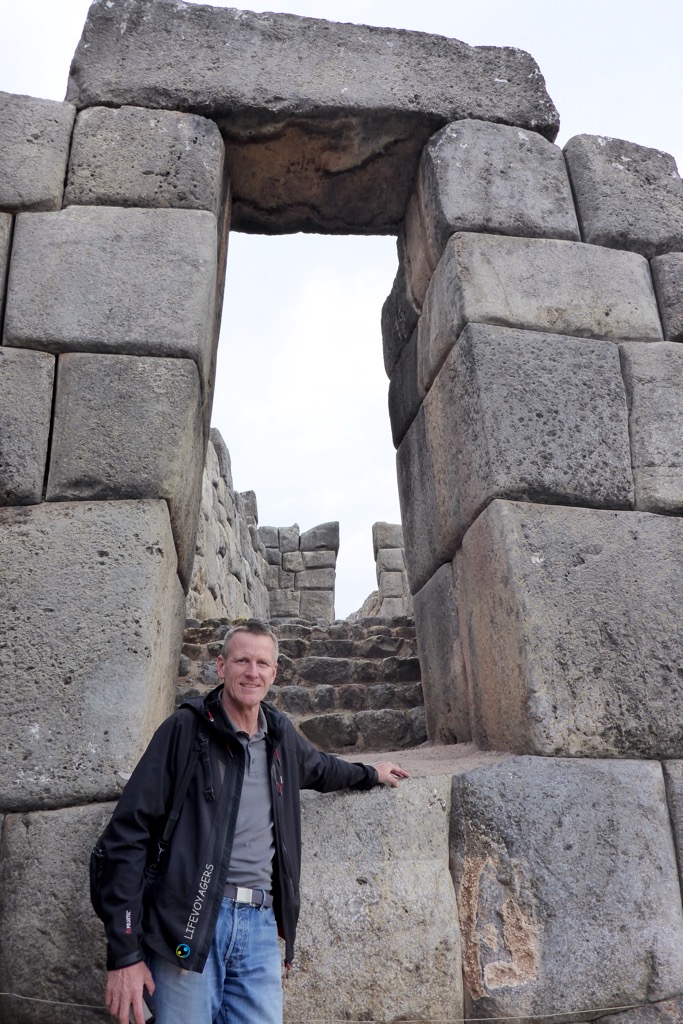
The Inka-doors in Sacsayhuaman without roof (in Inkan times usually covered by thatched roofs), reminded us a little of the temple doors in Bali
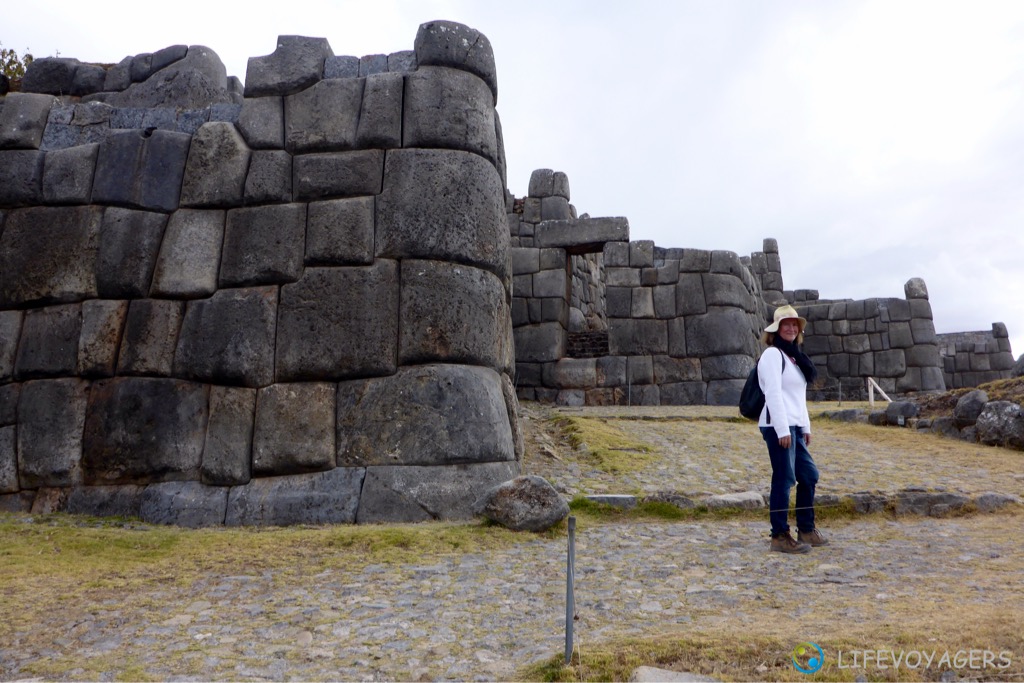
Clearly a fortress, even built in star formation, similar to a lot of fortresses in Europe!
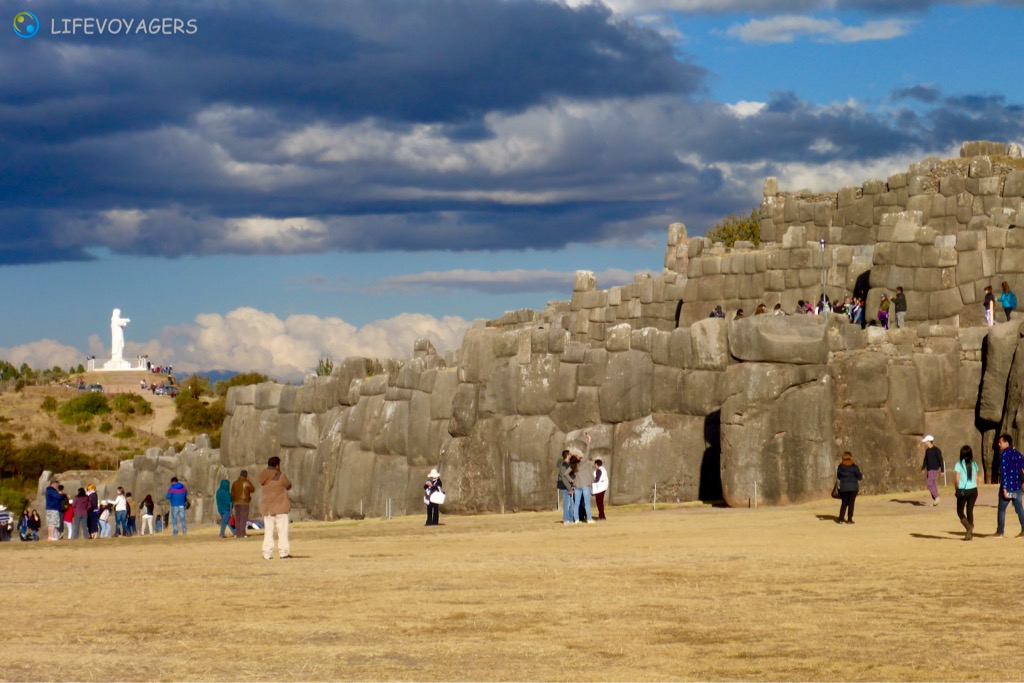
And then we got lucky with the sun returning in the afternoon which allowed us to enjoy the ruins in fantastic light, and with a view at Cristo Blanco in the distance, itself 8m in height, and allegedly presented to Cusco by Christian Arab Palestinians having sought refuge in Peru after the second world war, of all places…, among us humans it seems true that (German proverb): the most docile cannot live in peace if the evil neighbour doesn’t like him to…, and vice versa….
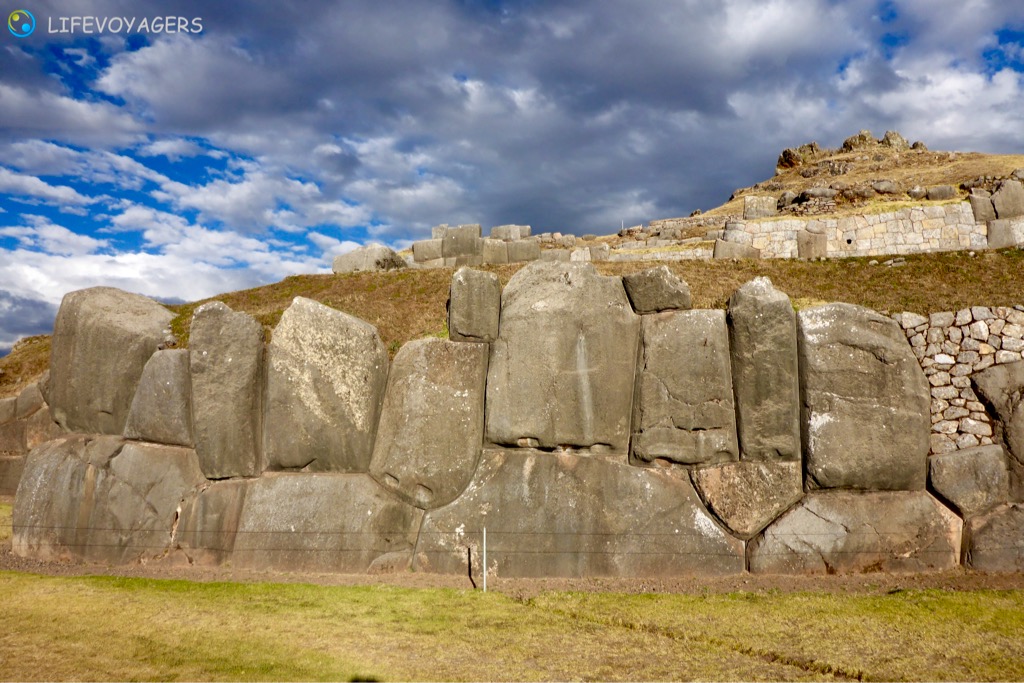
Above and below: The site of Sacsayhuaman is huge, this is also where during our time here the Inti Raimi festivities took place, grandstand tickets not under 100 USD… We very much enjoyed our relaxed visit outside of the festivities…
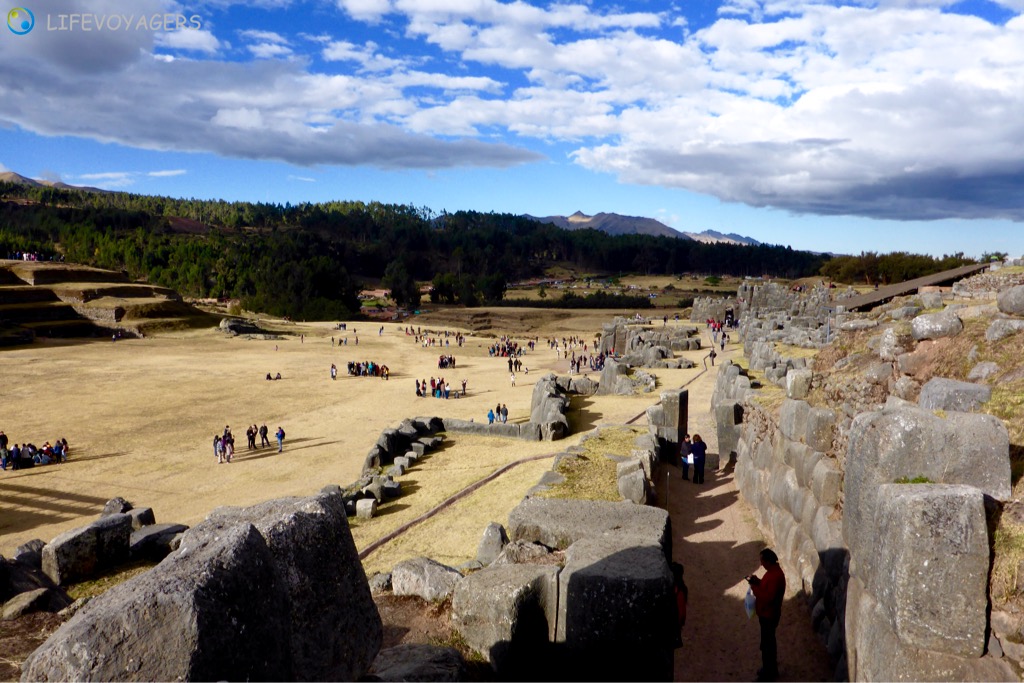
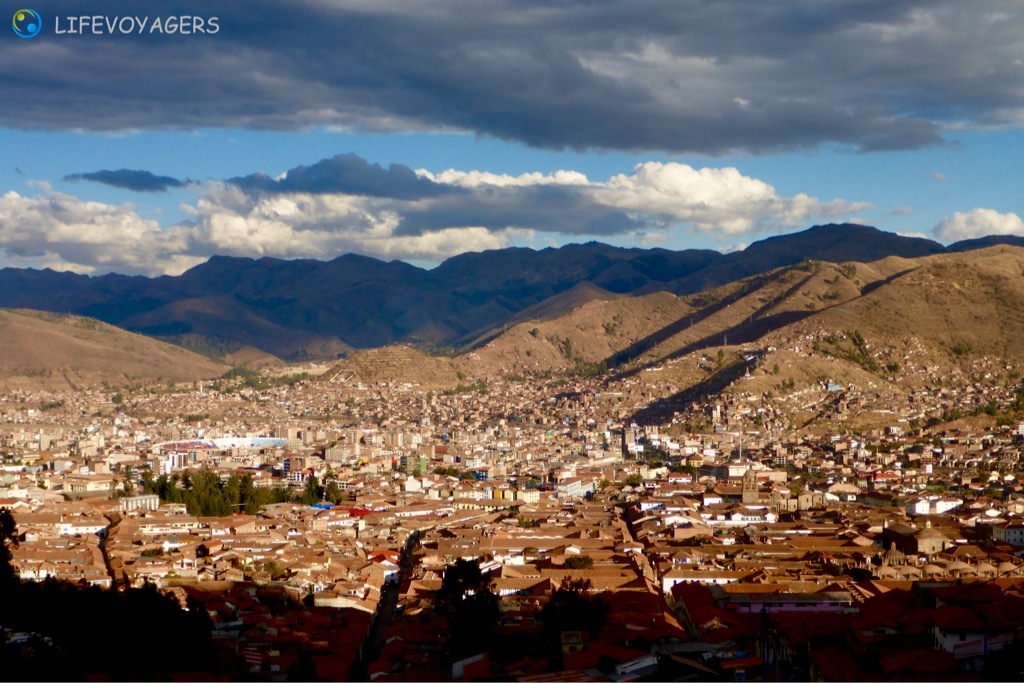
View at Cusco from Sacsayhuaman
The obvious question is of course: and what about Machu Picchu? Those who know us also know about our dislike of visiting ‘must sees’ at all costs, particularly if as overpriced bordering on rip-off and as overpopulated as Machu Picchu, we had a lot of time before and once here to ponder this decision and finally concluded no, we won’t do it, and we stand by this decision.
From Cusco we went back to Lima for five days to avoid flying on immediately, planned like this long in advance, and then finally for the last time with Avianca to Sao Paulo in Brazil, thus leaving the Spanish speaking part of South America behind, and afterwards on to South Africa! More about Sao Paulo in the next blog post, probably delayed a little due to logistic reasons!
Lots of Love and thanks ever so much for still ‘following’ us!
Claudia & Carsten, Lifevoyagers
Lifevoyagers have to abort workaway job in Peru!
Saturday, 09/07/2016
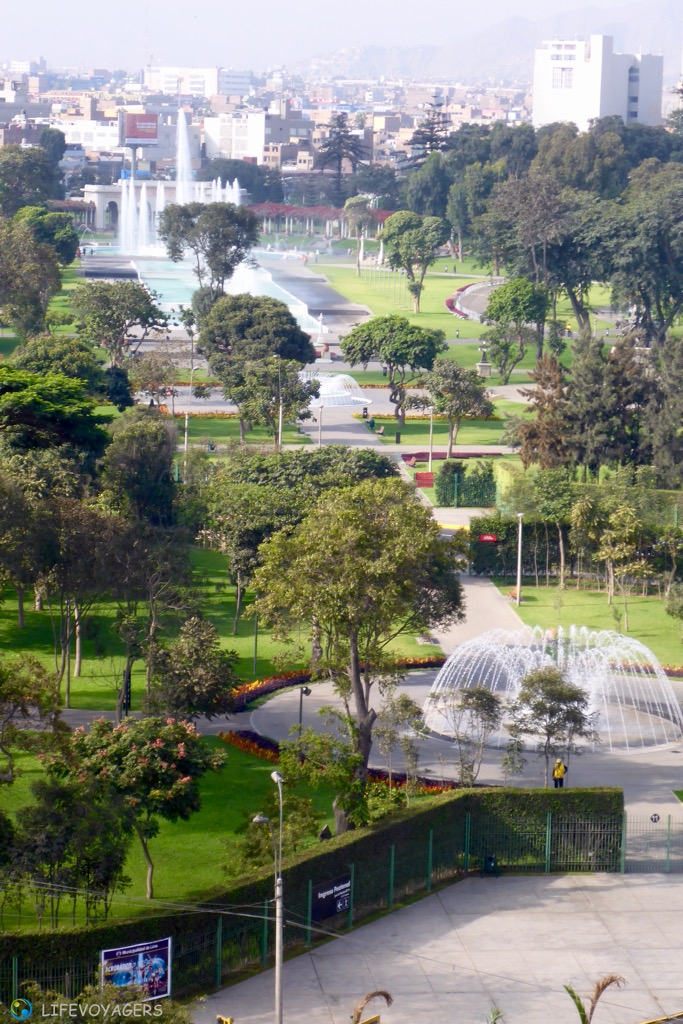
Parque de la Reserva, seen from our flat on the 13th floor, what’s missing? Right, the people enjoying it! Access by entrance fee and at times only, with light show every evening except on Mondays, decided to enjoy the views only…
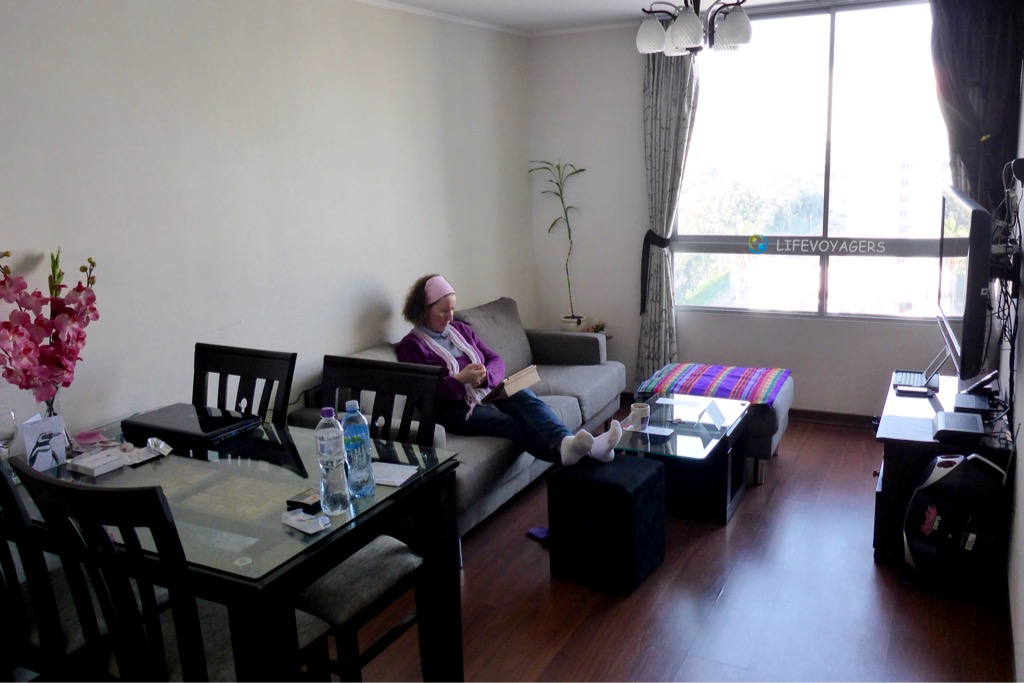
Such a nice, roomy, modern flat, but the insides of kitchen cupboards full of mould slowly growing on all contents, must have been contaminated even before built in… What a pity…
Peru and her beautiful sides, cultures and ancient knowledge, the last not least regarding plants and their healing faculties, don’t seem to reveal themselves at first glance, neither to the 5-day-Machu-Picchu-must-see-American (exceptions confirm the rule), nor to the usually city-hopping Workaway-Lifevoyagers, for first of all Lima is the first of the capital cities of South America visited so far that doesn’t appeal to us: take for example the fact that taking a taxi doesn’t seem to be safe at all (often occurring express-robberies en route to the destination asked), so you simply cannot take the risk, fortunately the father of our Airbnb-Host took us from and to the airport for Dollars, so this alone does anything but get our approval for Lima, and you should see the state of the so called taxis…
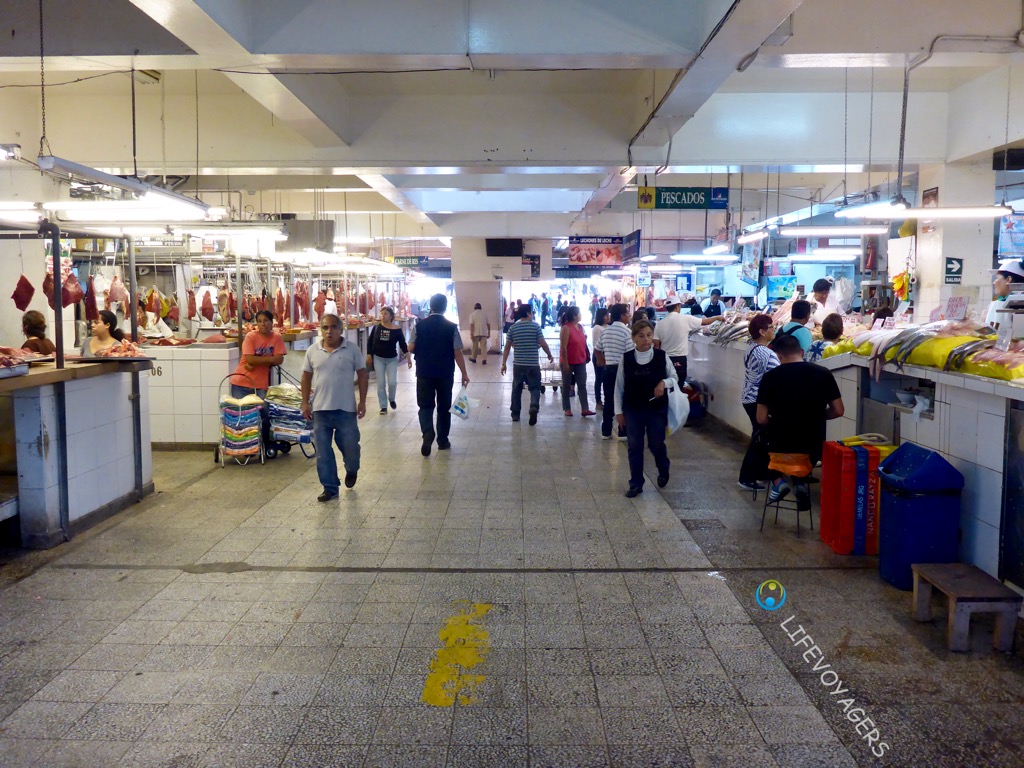
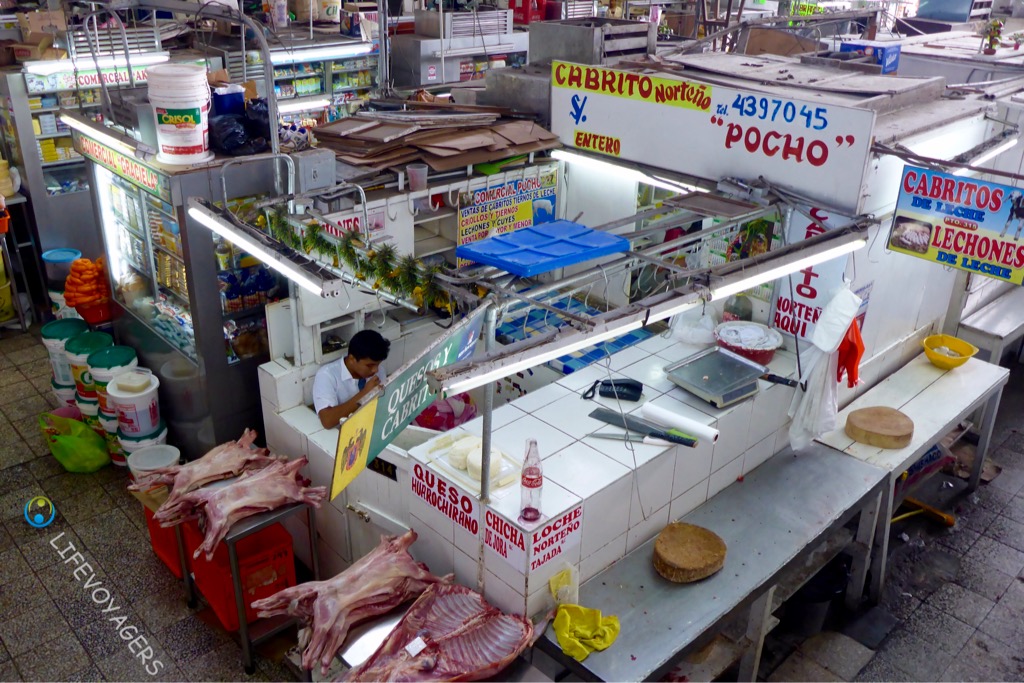
Mercado Central, one of the more challenging ones, you can easily see why…
This is also the country using the cars’ horns most extensively so far, and the car alarm attached to the Quito-Blogpost followed us here too, we enjoy a lot of both in our flat on the 13th floor with single pane windows, you shouldn’t think so… Perhaps we’re stressed by Claudia’s permanent diarrhea caused by the meanwhile identified parasite giardia lamblia, but in Lima it’s far more difficult to get a good steak, neither affordable nor expensive, and the ubiquitous fish and seafood are out because a ceviche from COOKED scampi and mussels in high altitude non-tropical Quito probably caused the diarrhea, and here in Lima it’s tropical again, at sea level, even if cooled a little by the Humboldt-current, in general the food in Lima doesn’t really appeal to us either, which as you know is important to us, but this is also an issue of general food hygiene, which sometimes just isn’t existing…
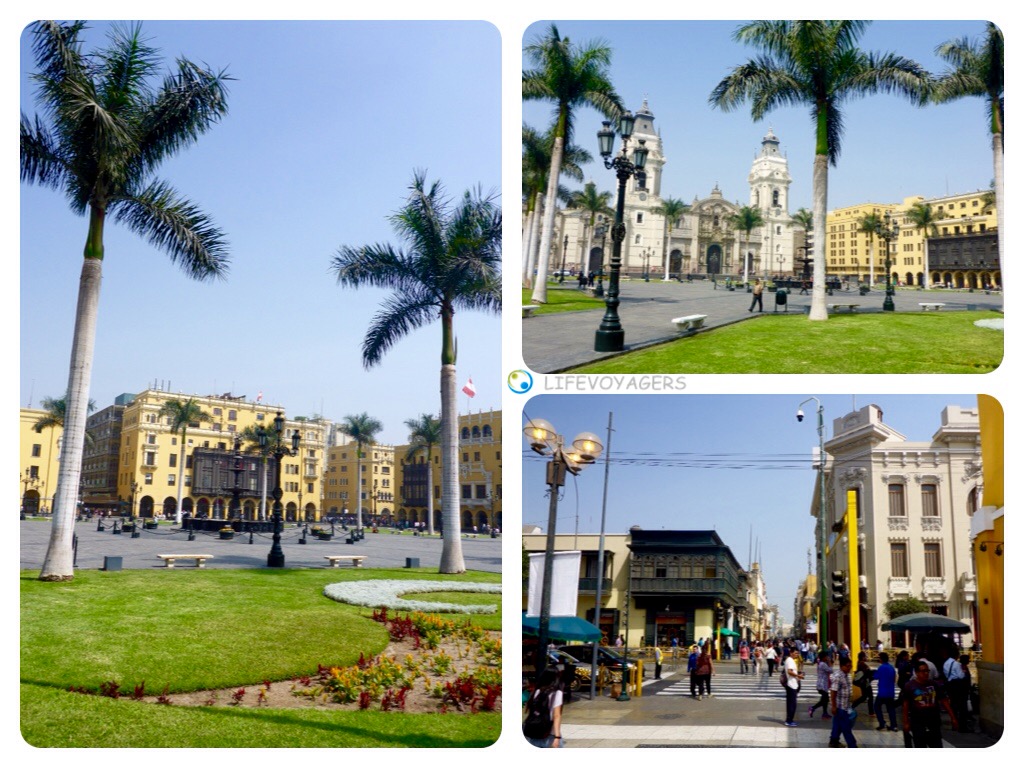
The historic center of Lima is far less well restored and taken care of than in Quito and Bogotá, although these are a main magnet for visitors bringing foreign currency. The only urban quarter with a little charm is Miraflores, at the admittedly fascinating pacific cliff line. The parks of this city are not meant to linger, and/or cost an entrance fee, except in Miraflores. But we found a German parish with mass in German, very comforting for a change!
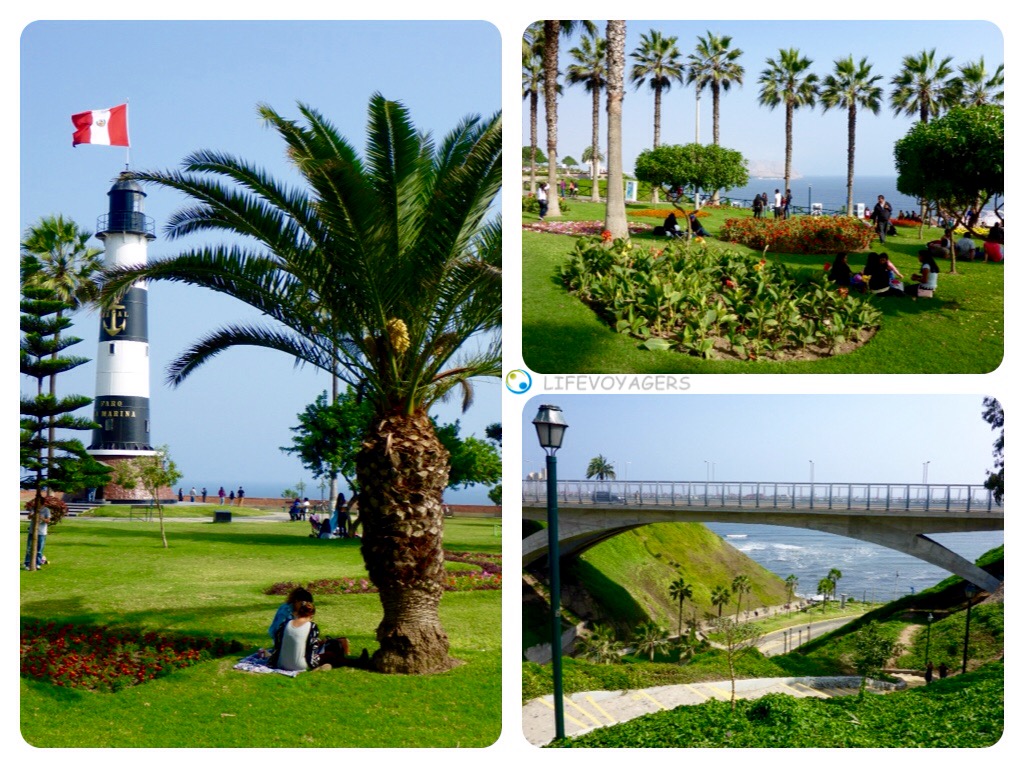
Beautiful Miraflores above and below, the real and only highlight of Lima at the Pacific coast! No, didn’t do the tandem gliding, boring as we are, but very nice to watch!
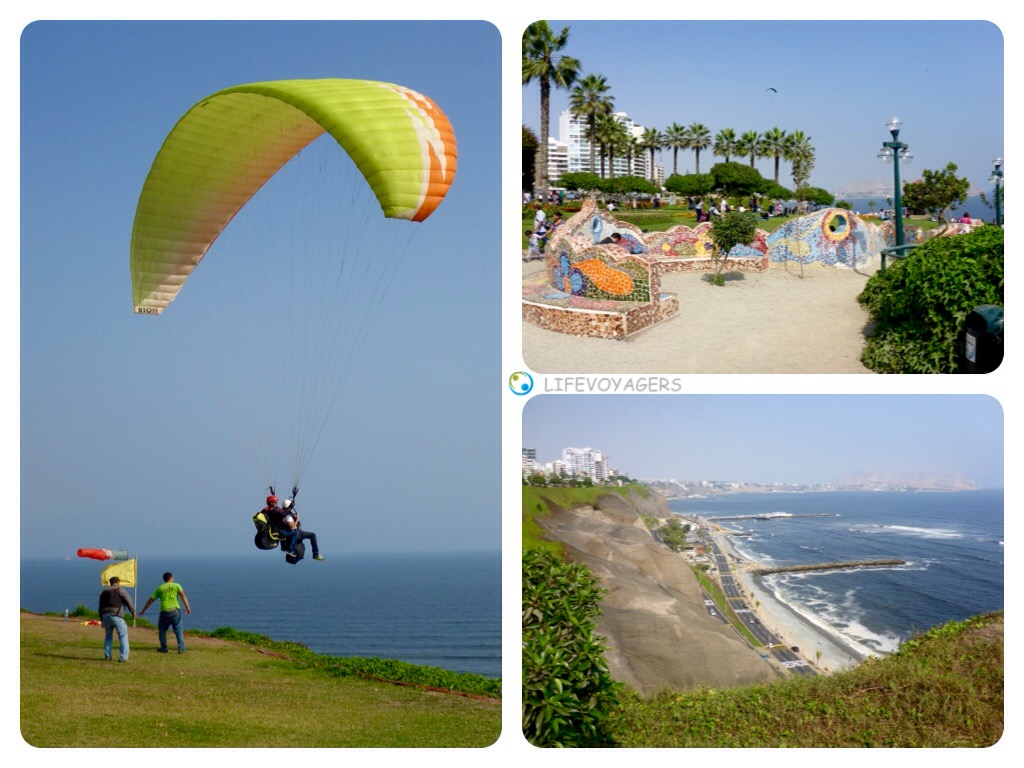
So we’re on to the next topic already: Ollantaytambo in the Cusco valley with its very own Inca-ruins, situated in stunning, breathtaking Andes-high-valley surroundings in the ‘sacred’ valley of the Inca at 2.800 m above sea level, second last stop before Machu Picchu and station for changing the train to go there, of course sees nearly all tourists with this big, ridiculously expensive goal, with all providers which take part in the process cutting their piece of the cake applying high USD-prices.
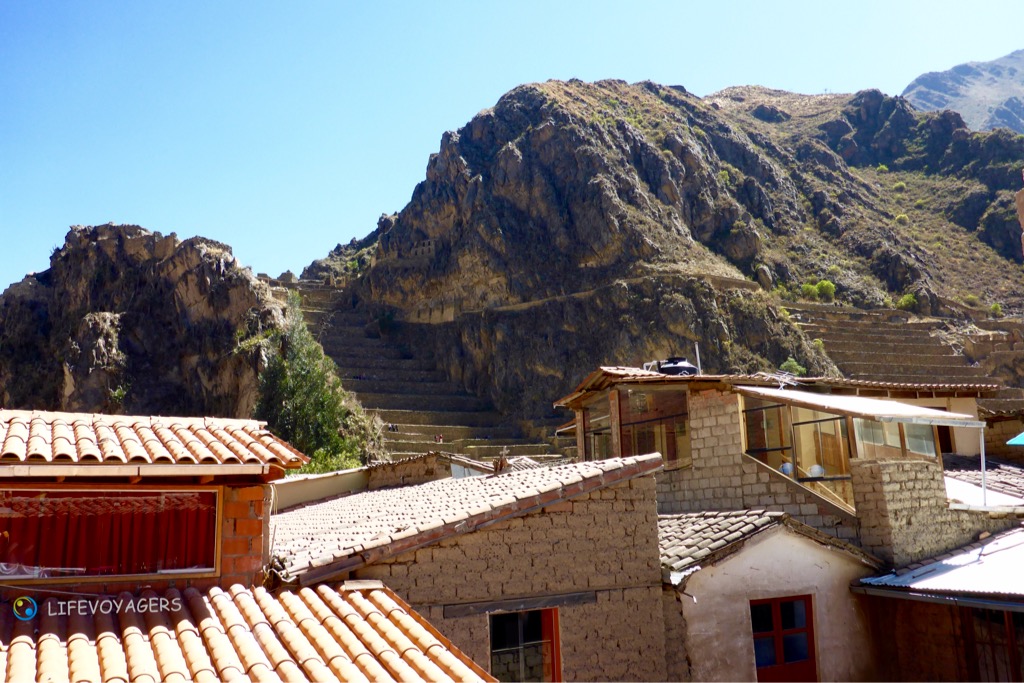
The stunning views from the drying terrace of the hostal we worked in for just one week, showing the ruins of the Inca fortress, part of a boleto turistico for four different ruins spread across the Cusco valley, we decided to not buy this particular one
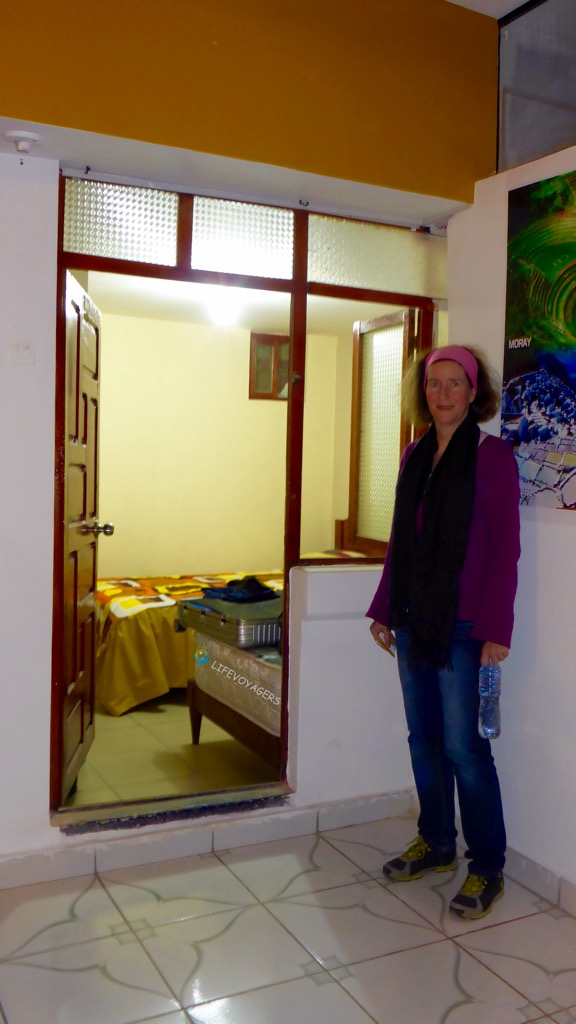
This was our room with window only to the hall, both window and door couldn’t be locked and were right in the path of the other guests, remember you don’t see the lack of fresh air, the cold, the limed walls causing allergy, and the bed bugs…

Tranquil little road in Ollantaytambo, complete with mountain brook and beautiful craftsmenship
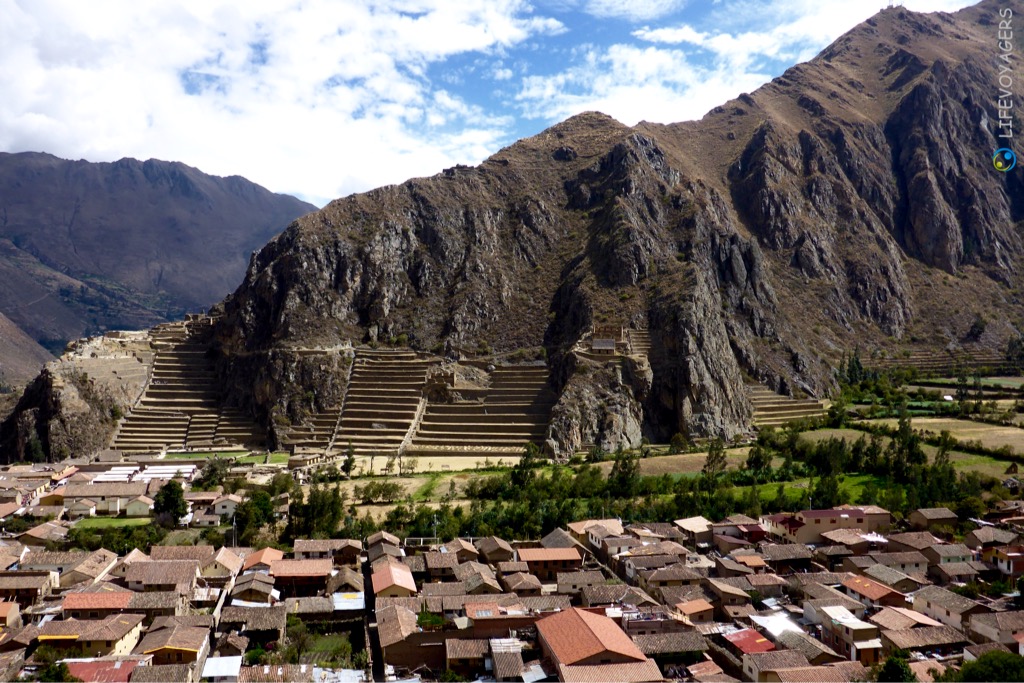
Above and below: The fortress ruins of Ollantaytambo seen from Pinkuylluna Inka ruins opposite, again, absolutely stunning…
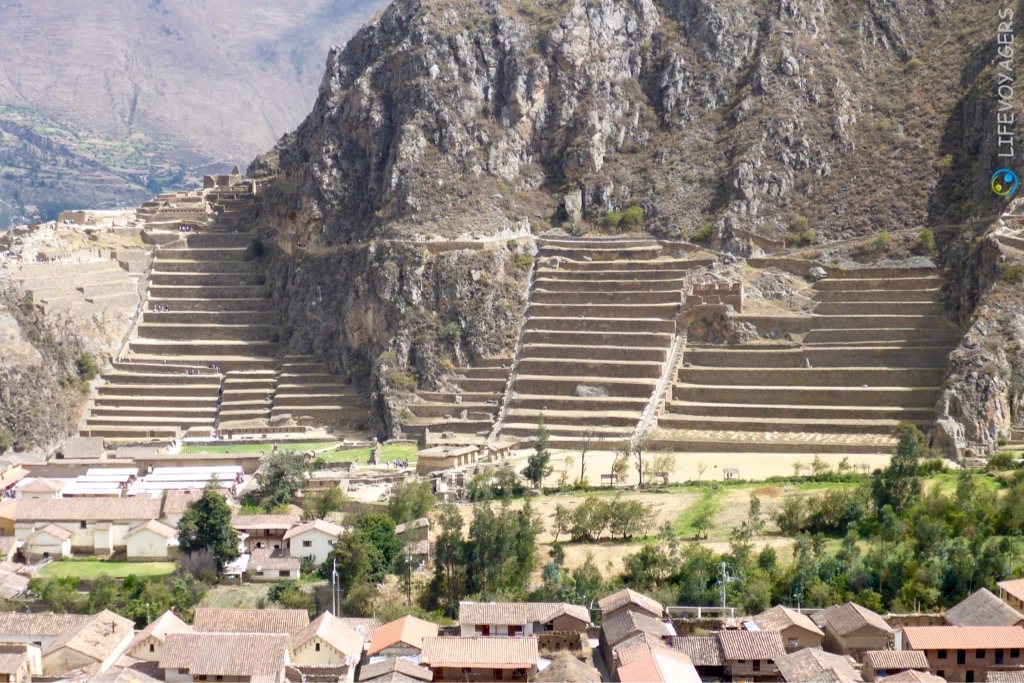
Not so the hostal (no hostel, mind you, hostal is the Spanish word for ‘inn’!) we wanted to do our workaway-job in: affordable en-suite-rooms, pretty clean, always measured according to the possibilities in South America, and Ollantaytambo is extremely dust-ridden, Tripadvisor-comments mostly ‘excellent’, just like the comments for this place on www.workaway.info! Despite all of this we had to stay in an inside room without window to the outside but only to the hall, thus without much air and light, which was permanently much colder than outside, milk, butter and cheese kept perfectly, also stored there by us because the hygienic situation of the kitchen of the house wasn’t suitable to get an operating permit from the German health authorities for the foreseeable future… On top of this we both had allergic reactions (eyes, noses, bronchia) to the limed walls, no fault of the house of course, but particularly difficult with the inadequate ventilation. When we next had attracted from the woodwork, with our body heat, wearing two to three layers of clothes under the blankets, one below us because of the cold from the floor, two on top of us, bed bugs, bites for both of us and a dead bed bug were proof, we finally pulled the safety line after the seventh sleepless night due to cold, allergy, lack of air and bed bugs, and we had to prematurely abandon our post, even when bed bugs, as we know from an experience twenty years ago in London, happen to the best of houses. The owner showed so much understanding that one might hazard a guess this didn’t happen to her for the first time, there also wasn’t an alternative room, so a necessary decontamination for 48 hours wasn’t possible either. How everybody else on workaway found all of this ‘excellent’ is beyond us, but it has to be said that in general no volunteer ever speaks about the quality of volunteer-lodgings anyway, so it remains to be supposed that they in general are, apart from us two oldies, exclusively young backpackers, finding the above luxurious, and generally finding nature (i.e. bed bugs) benevolent in any case and never ever dangerous to man!
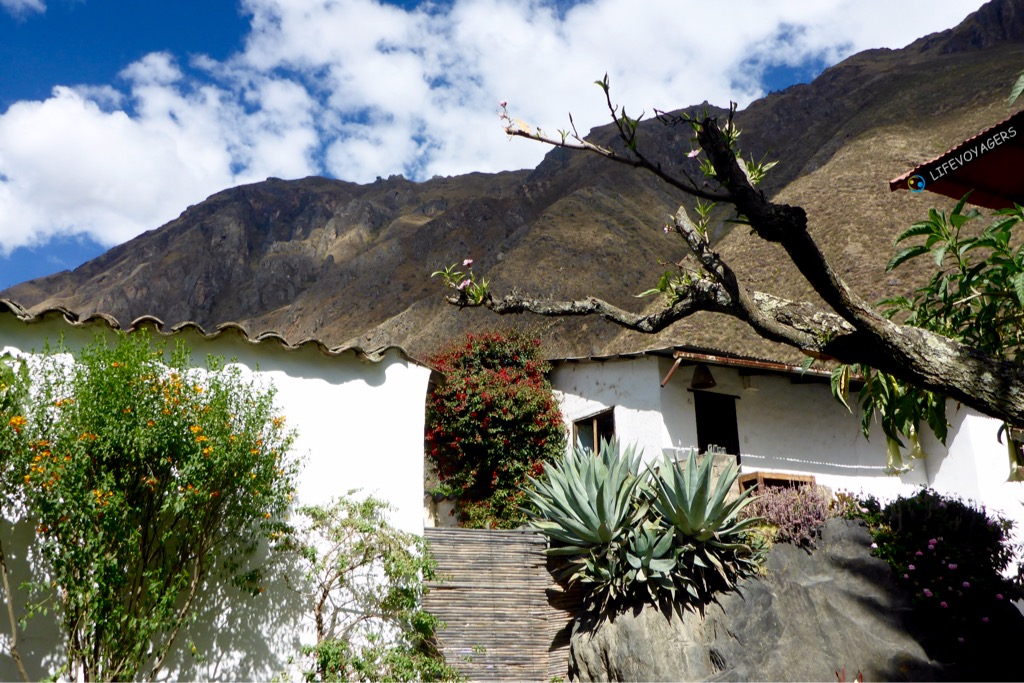
Above and below: visit to Restaurant El Albergue on our first day off, what an oasis…
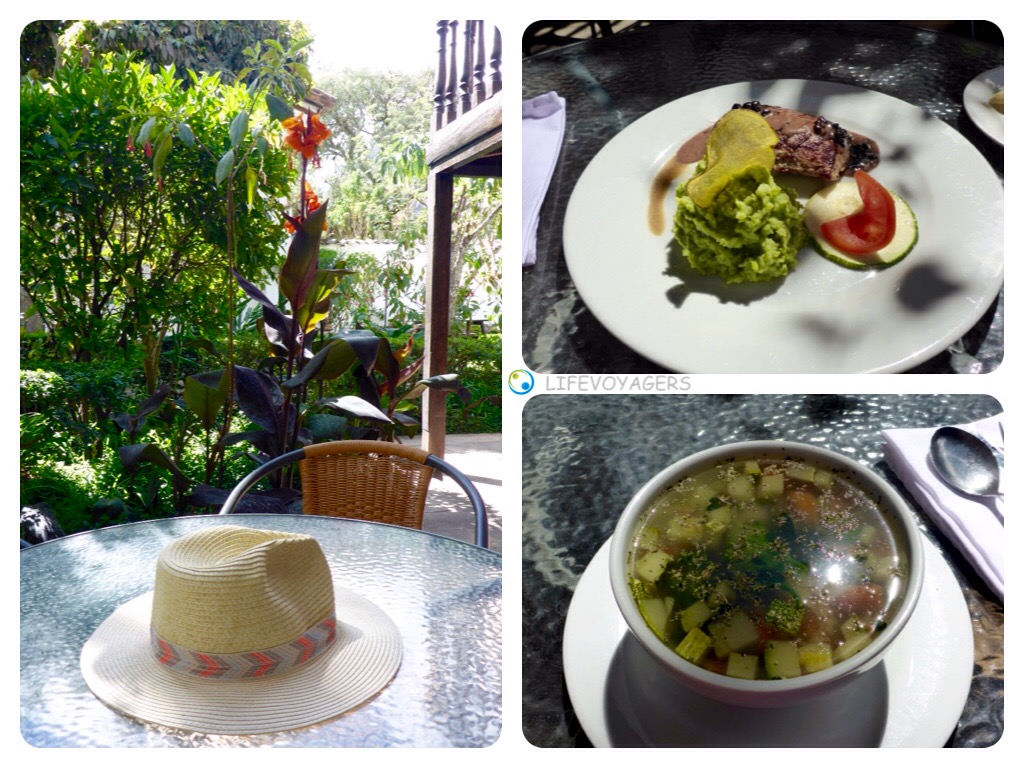
Finally some food photos… Steak for Carsten and Quinoa Soup for diarrhea-ridden Claudia…
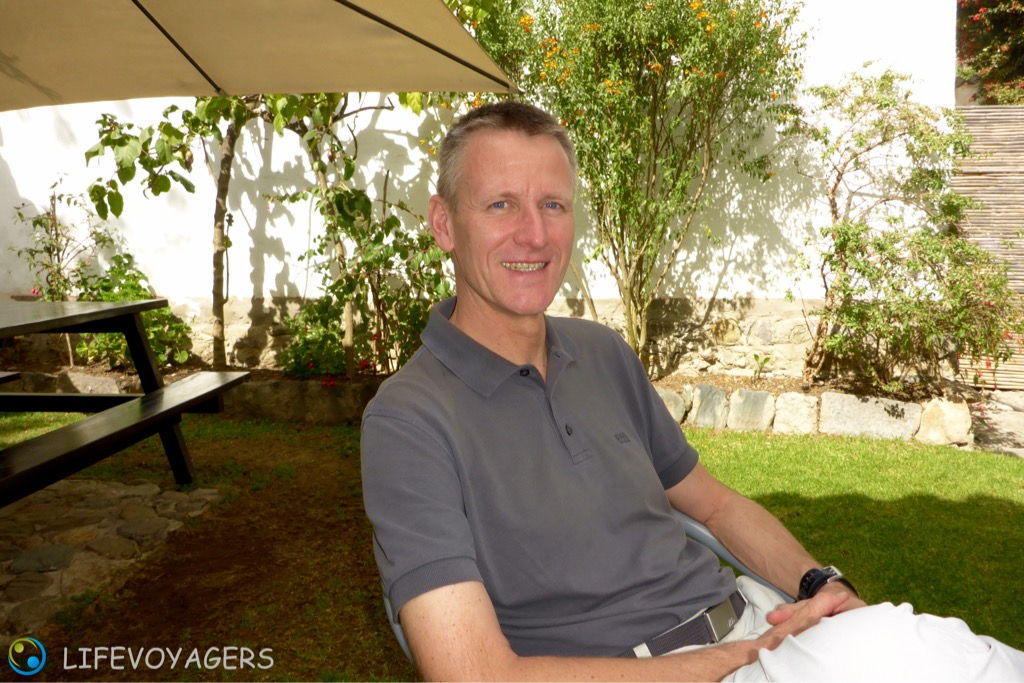
…and a rather stressed because sleep-deprived hubby, finally enjoying some rest in this very nice place, see also below…
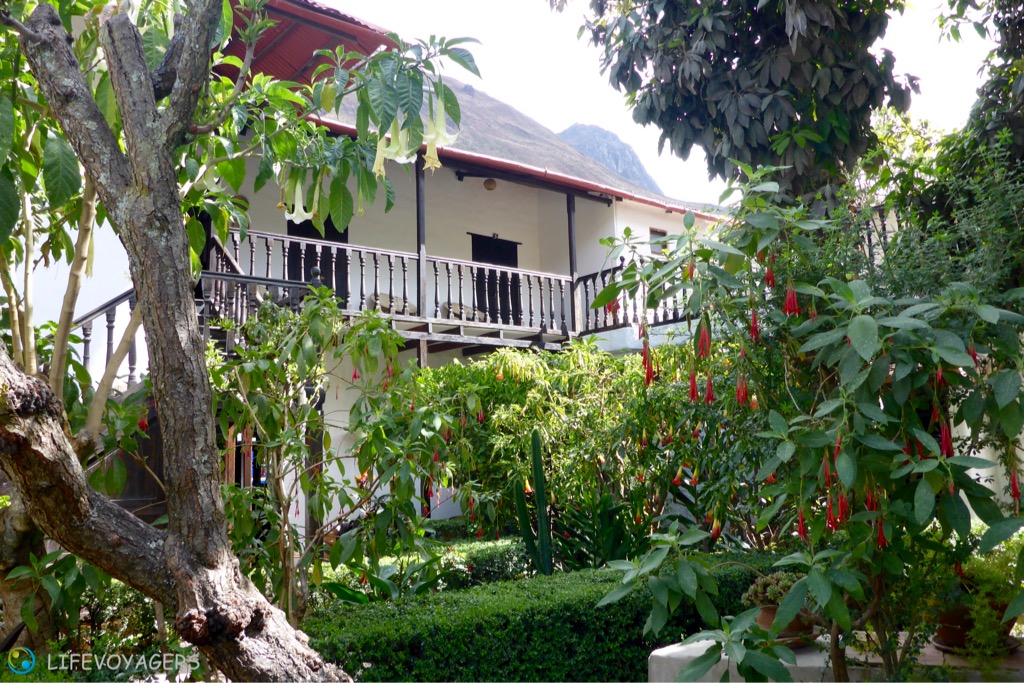
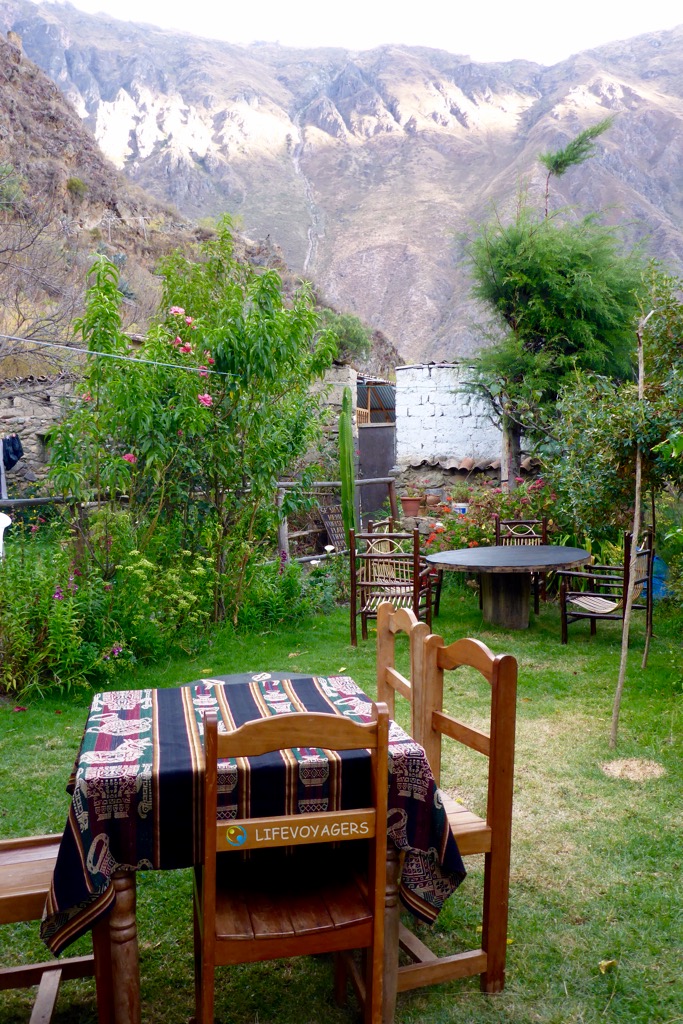
K’uchu Wasi Café, another oasis with a view in Ollantaytambo…
Different from previous workaway-volunteers we didn’t work at reception, but helped local staff Edi with preparing the eight en-suite hotel rooms as well as with the laundry of the hotel’s textiles, which was very interesting because circumstances (two regular washing mashines with cold water taps only, of course no tumble dryer, hanging of the laundry only up until 2pm (in a country where everybody seem to do as they like anyway…), no expedient sorting of bed sheets for size, so constant searching necessary, no water source on the hotel room floors with bathrooms unsuitable for tapping, so lugging necessary, no two full sets of towels for the eight rooms, let alone one set for volunteers…, situation in the improvised storing cupboards on all three floors bordering on compulsive hoarding and their orderliness, or lack of, beyond repair, interruption of staff by owner for everything and anything at all times), and necessities (which guest stays, which leaves, which room won’t be occupied tonight, which guests left early, all of this decides about sequence of preparing the rooms and how to equip them with bed linens, bathroom utensils, complimentary chocolate and water, which animal did the guest staying on have folded from his towels yesterday, Claudia now can do swan, heart, elephant, flower! At the same time filling washing mashines, hanging the washing, etc…) all of this was worthy of a (very simple) workflow schedule, which we, after four days of instruction, drafted and executed on the fifth day, when Edi had her day off, successfully apart from few flaws, even if the owner had generously offered a drunken guest of her little daughter’s birthday party the evening before a double room, and provided two guests which hadn’t managed to shower even long after check-out time a fresh, already prepared second room for them to shower in (???), not bad for our first time alone, thanks to the simple workflow schedule (find the link here ;-)) and preparation the previous evening! All of this shall ideally be done by twelve noon, with breakfast until nine and checkout at ten, some guests already leave at 5am for Machu Picchu, but how adorable, lovable, easy to work and laugh with turbo-Edi can ever achieve all of this ALONE is beyond us, it seems the place depends on volunteers…
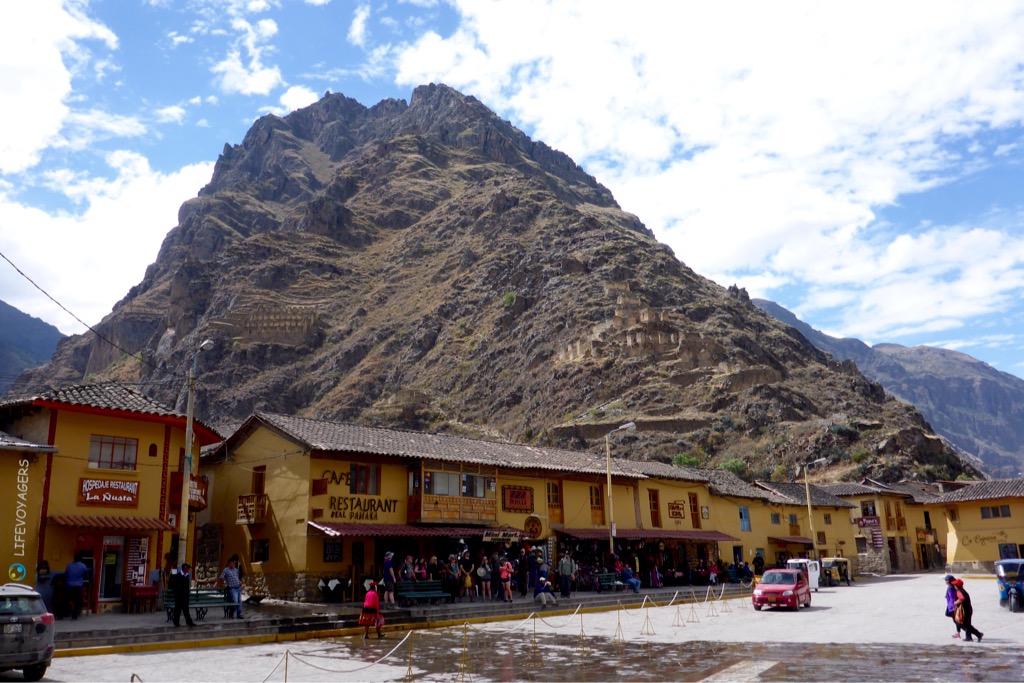
Even from the main plaza in Ollantaytambo you can see the Pinkuylluna ruins of Inca granaries, opposite from the fortress ruins, see also below!
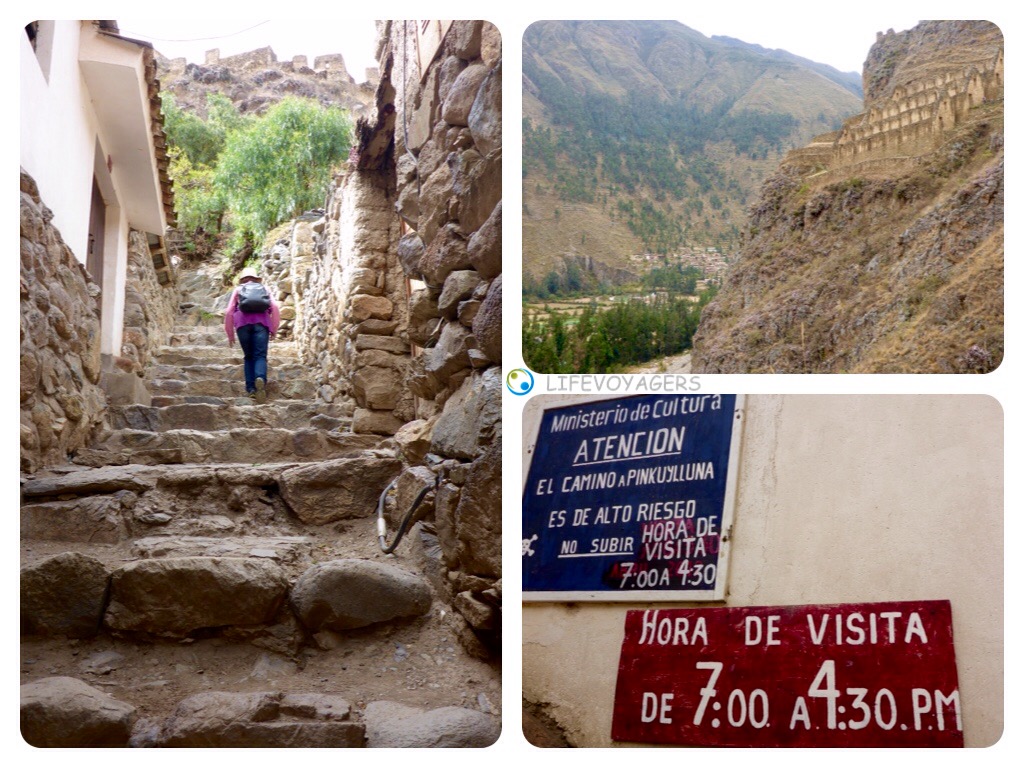
These again are completely free and a lovely climb and walk for stunning views too!
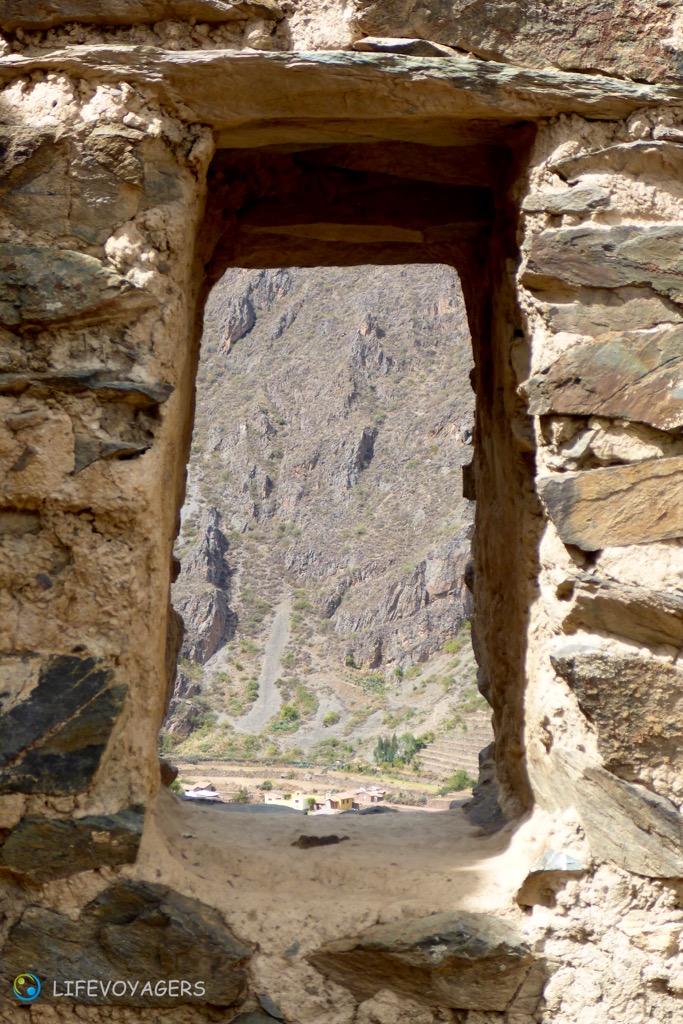
The arquitecture of the Inkas was supposedly earthquake-safe, particularly the form of doors and windows! And across the river you can see the next Inka terraces, a tragedy that so much of their knowledge and history is now lost…
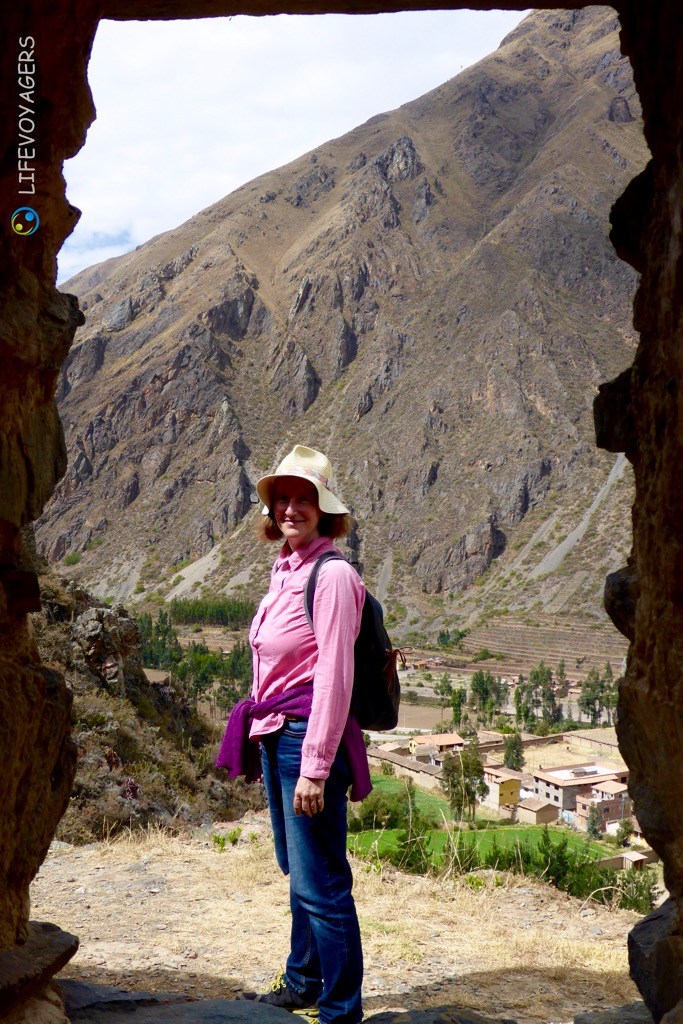
In the afternoon we folded and ironed the washing, theoretically sorting them before, in a little room under the roof with access to the drying-terrace with mega-views, a very peaceful, uninterrupted and satisfying job, except the ineffective sorting business, a colour-marking of the four different sizes of the fitted and regular sheets would have done the job, but this of course then didn’t happen anymore… We were also inspired by the contact with the guests from all over the world, charming reception-fairy Linda, hired for the season, our volunteer-colleague Tiago from Brazil, who later left prematurely too, so again: an absolute pity! PS to hotel guests of this world: it would be nice to leave a little tip even when staying for one night only, after all the room has been prepared clean and nice beforehand! For just 1 Sol (Peruvian currency), ca. 0,30 Euro, you can here buy bread for one person for one day!
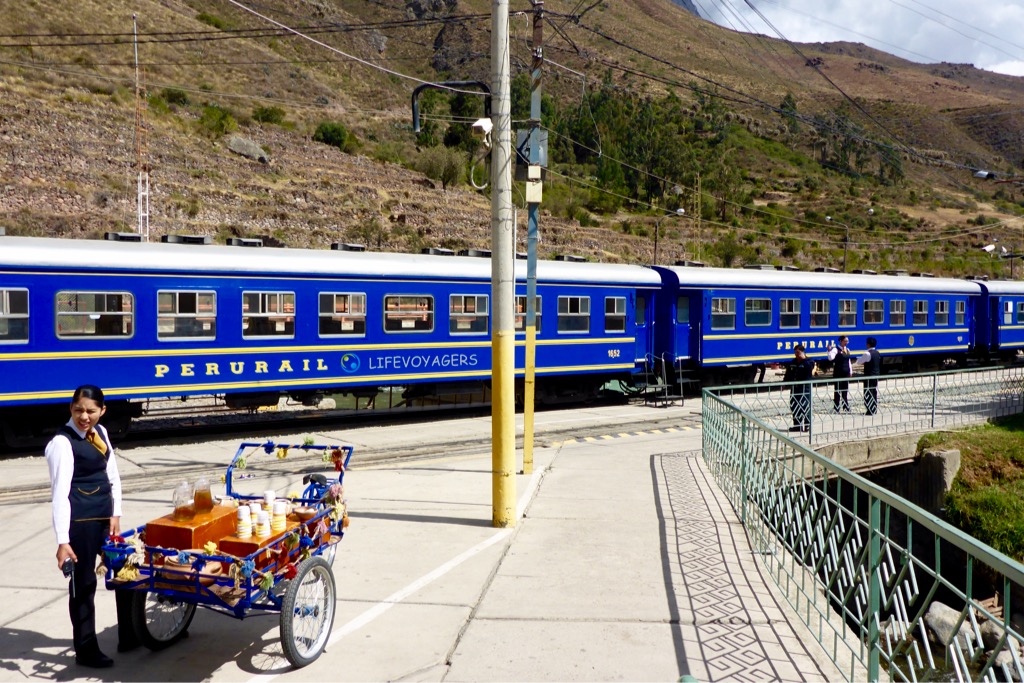
The luxury (and only), very expensive train taking tourists to Aguas Calientes for Machu Picchu… Yes there is a cheeper alternative, but it is very demanding and does not go via Aguas Calientes which is right at the foot of Machu Picchu…
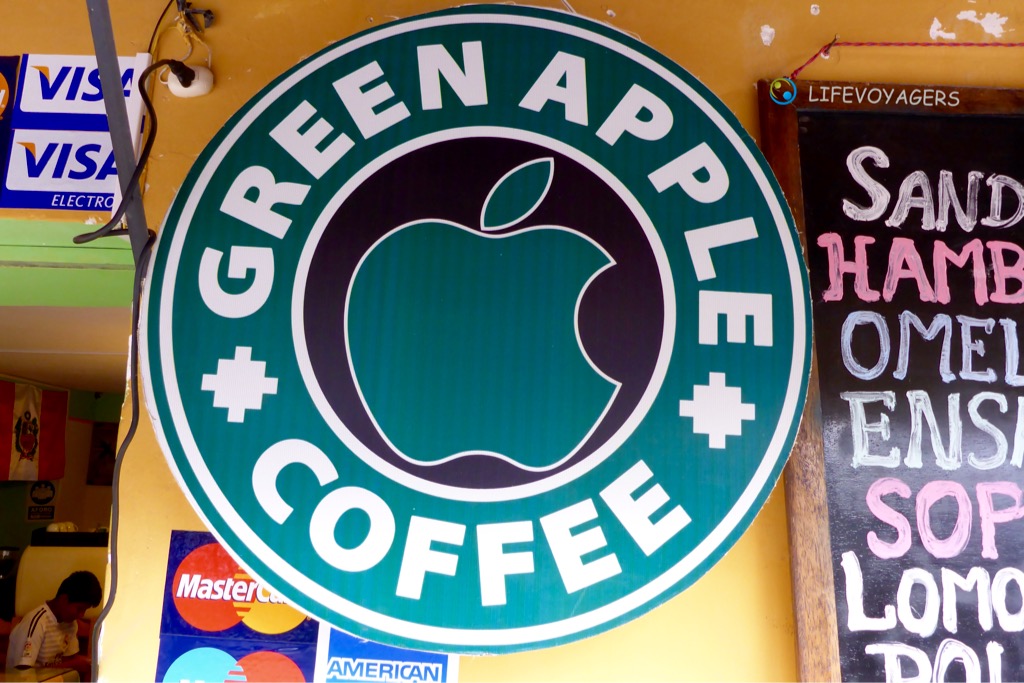
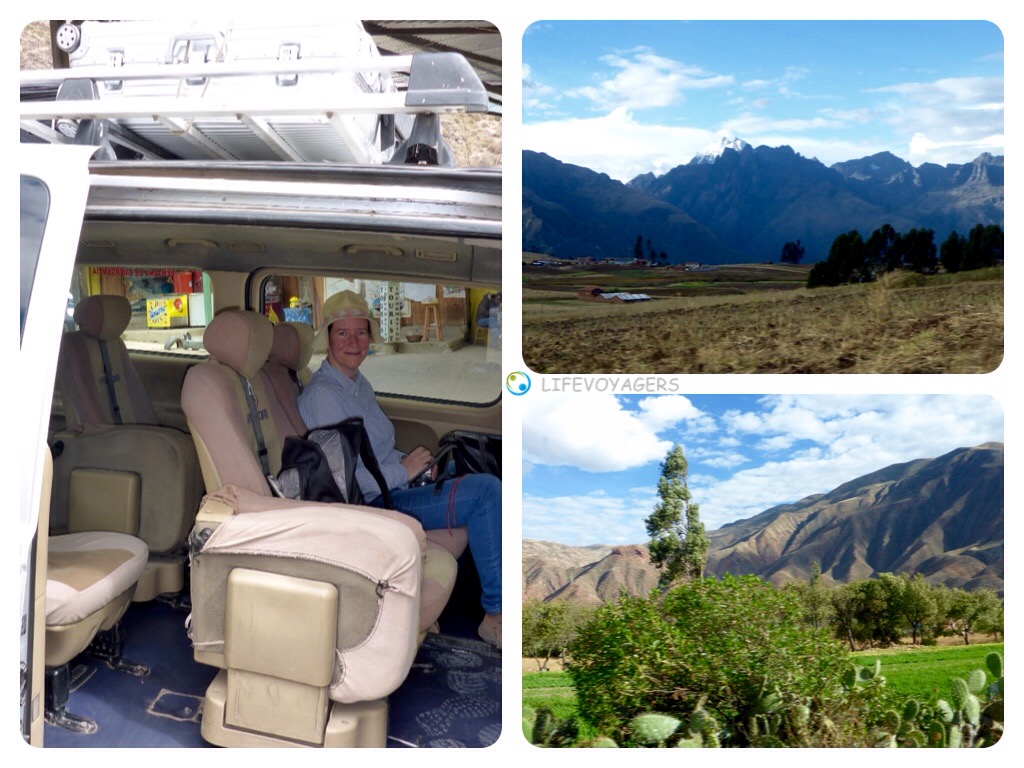
On our second day off after five days of work we aborted the job after the decision had been taken in the sleepless (again) night before, and went back to Cusco, again with the collective service of Real Inka Car (Lifevoyagers Tripadvisor comment coming soon) for just 10 Soles per person… relief… And breathtaking Andes high valley views on the drive again!
We’ll be back with another blog post for Cusco City and Cusco Valley soon! Thanks a ton for your kind interest!
All the best meanwhile and of course, as always, lots of Love!
Claudia & Carsten, Lifevoyagers
Beautiful Ecuador, after even a small glimpse we want more!
Friday, 27/05/2016
Bound for Quito’s surroundings with a rental car, but first the view from Panecillo hill, the one with the winged Maria statue, find her beautiful view in the photo below! The beauty of the statue, however, seems to be disputable at least… There’s also a restaurant with a view on this hill, Pim’s Panecillo, fascinating both by day and by night for sure!
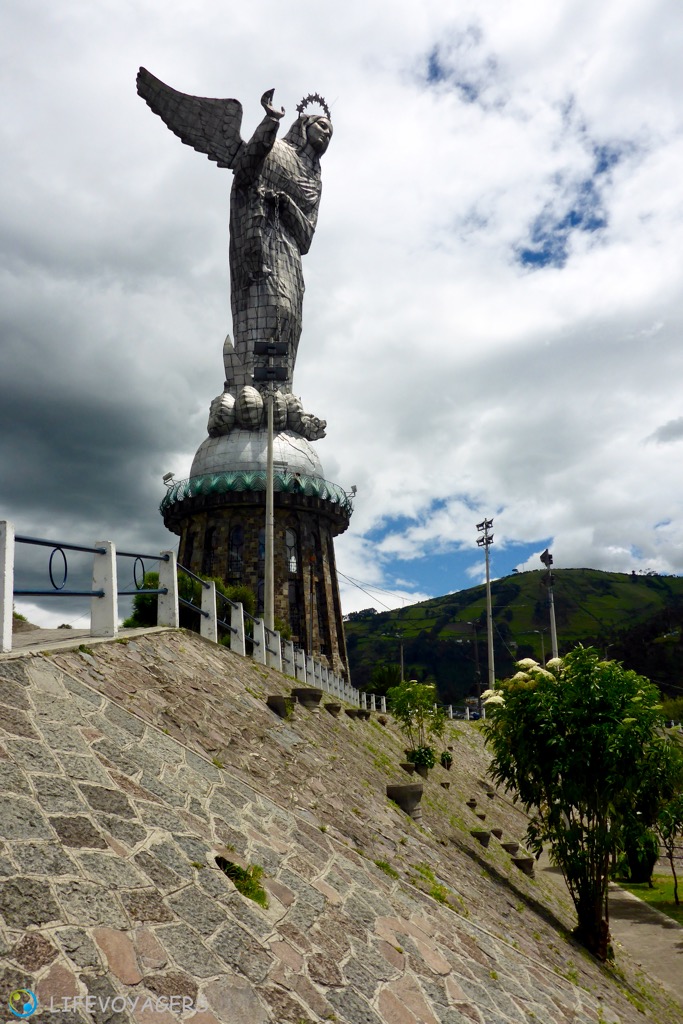
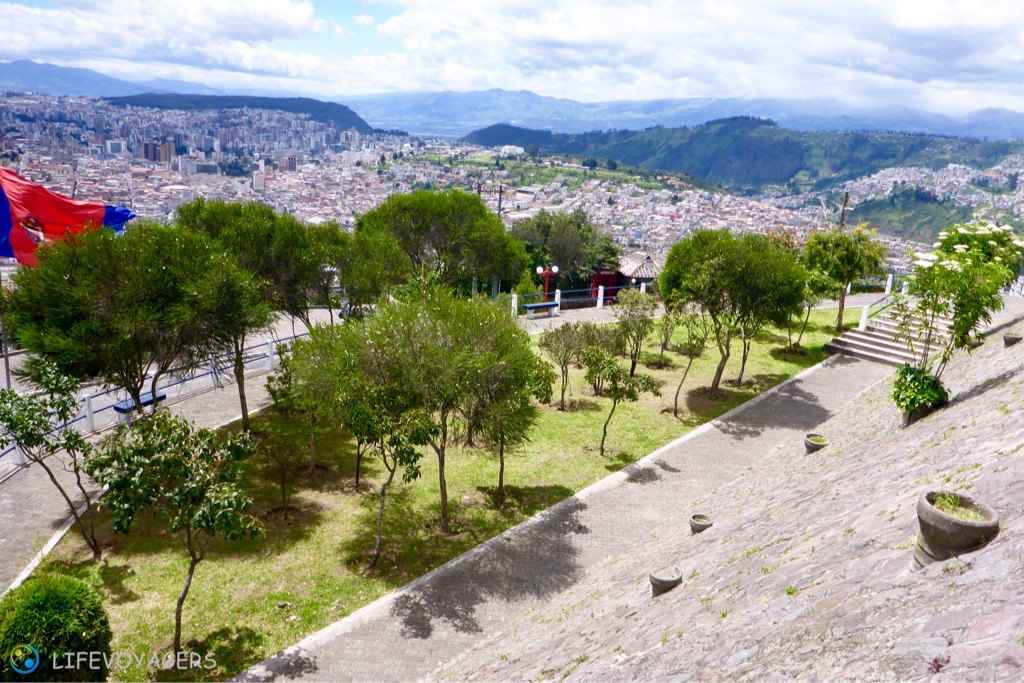
This is where you get a glimpse too of the unhabitable steep canyons surrounding Quito!
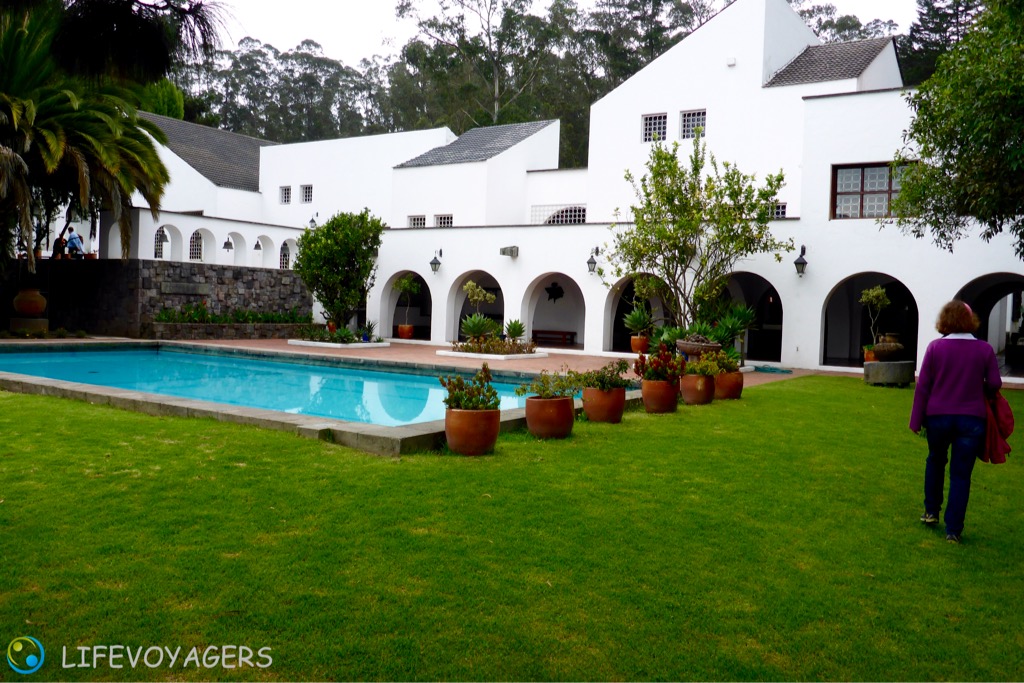
The residence of Ecuadorian painter Oswaldo Guayasamin, who died end of last century, and the Capilla del Hombre (Chapel of Man, far below) dedicated to his remembrance, show a lot of life, living, work, development, creative phases, collection (including but not limited to Chagall, Picasso, and the like) and passion of this still inspiring artist, find google-results for his pictures here, created in the three phases ‘Trail of Tears’, ‘Age of Anger’, and ‘Age of Tenderness’ throughout his life. A destination in Quito, complete with guided tours in English, that tends to touch and move on multiple levels…
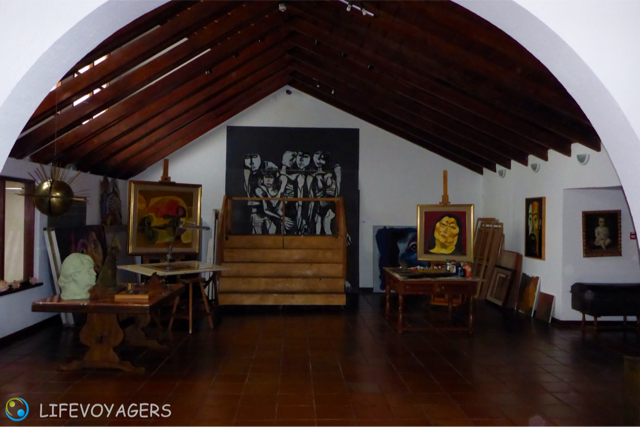
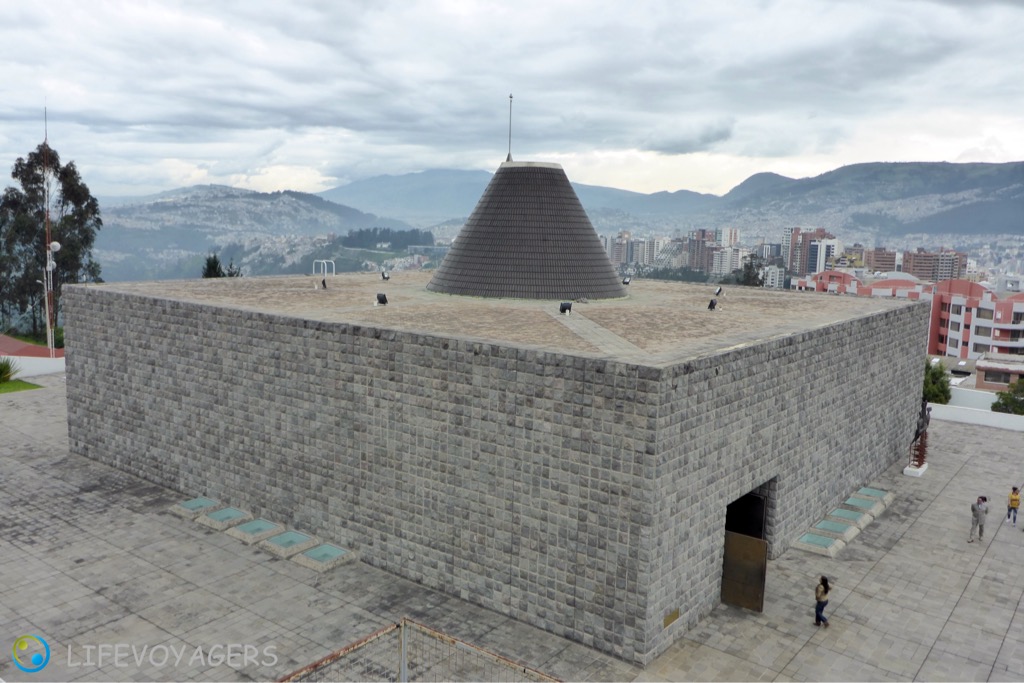
Capilla del Hombre
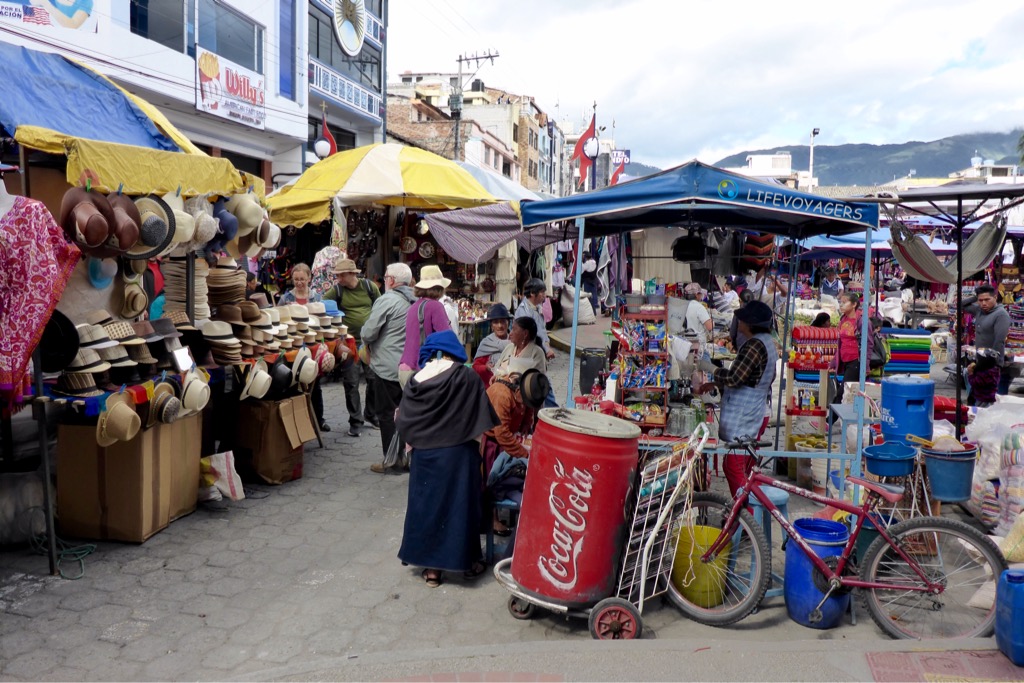
First destination on our outings: Saturday’s Market in Otavalo to the northeast of Quito, even driving there was exciting and diverse! This market is also frequented by the locals, in the photo you can see how small some of the indigenous peoples are, by comparing them to Claudia, who isn’t exactly a giant herself…

A lot of woven goods are on offer in this photo (we didn’t figure out exactly how many of these are ‘made in China’), as well as three sorts of corn.
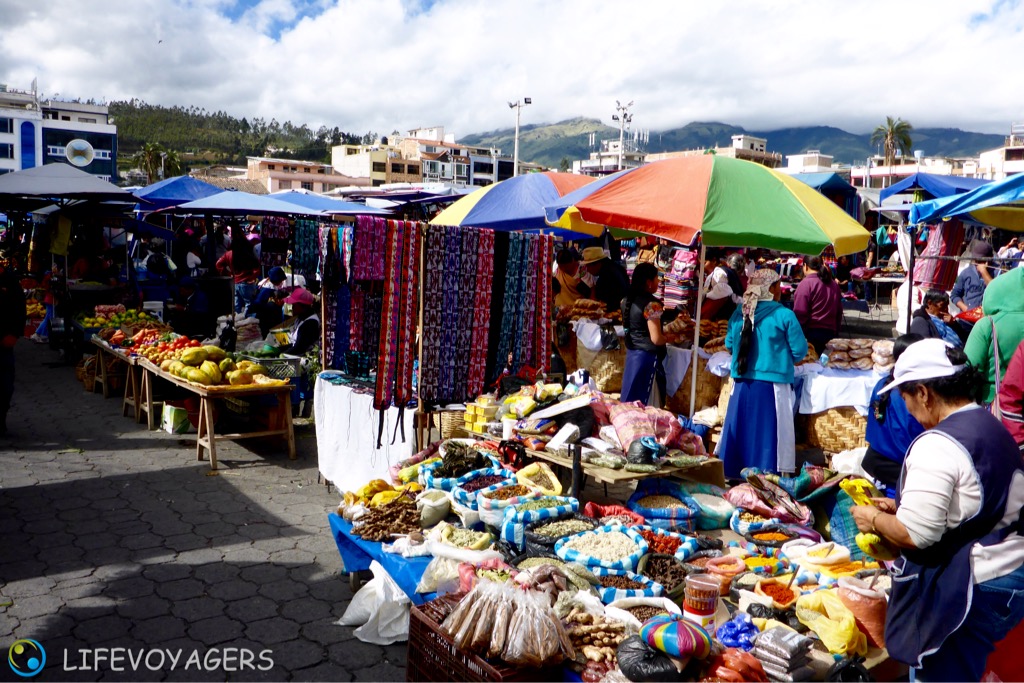
In general it was a manifold display worth seing, of woven goods, food (including of course barbecued full size pigs…), fruit, vegetable, meat, legume, handicraft, jewellery, etc., etc., a feast for all senses, we arrived, enjoyed, and left before it got swamped by the masses of tourists!
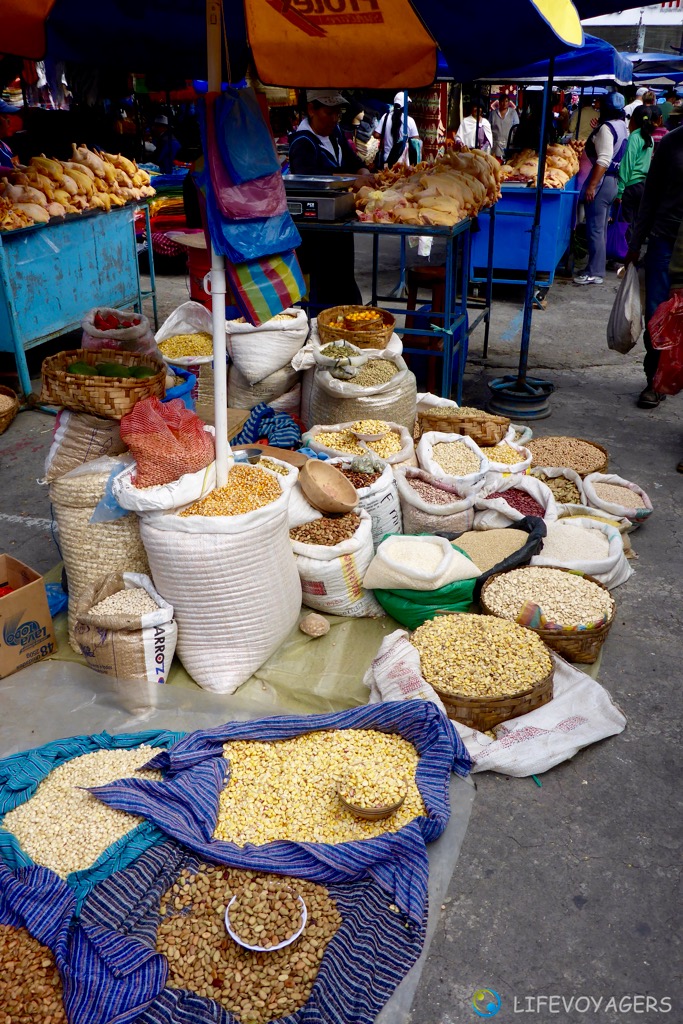
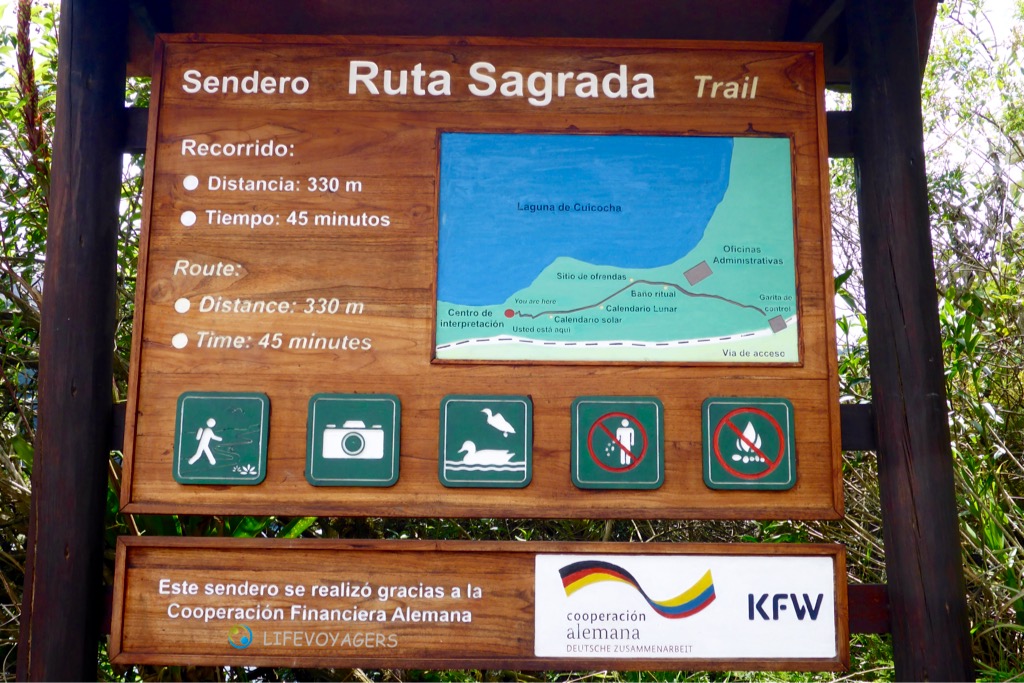
Volcanic-Crater-Lagoon Cuicocha and a small sightseeing trail, funded with support by German ‘Kreditanstalt für Wiederaufbau’, who would have guessed! Wonderful crystal clear waters as well as three volcanic cones in the middle of the lagoon, freshest air, very recreational!
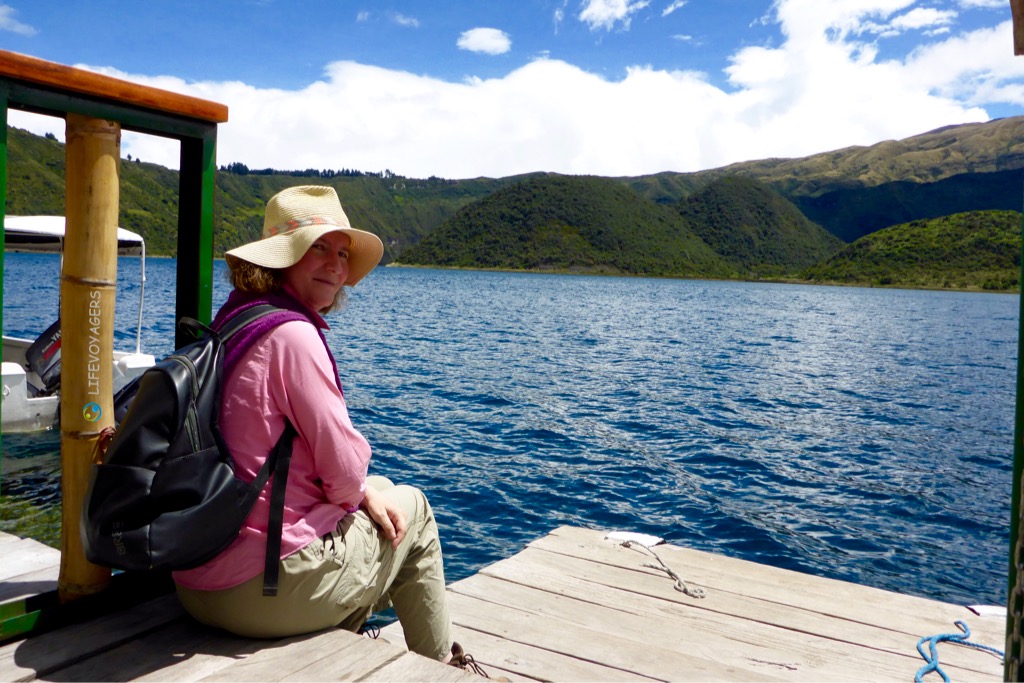
For Carsten’s Birthday we were lucky enough to spend the day with Frank Alte of Ecuador Galapagos Travel EGT, an old school mate of Claudia, who’s been roaming Ecuador for decades already, first as an Expedition-Adventurer and nowadays in addition as an entrepreneur, and who has found the centre of his life in Ecuador!
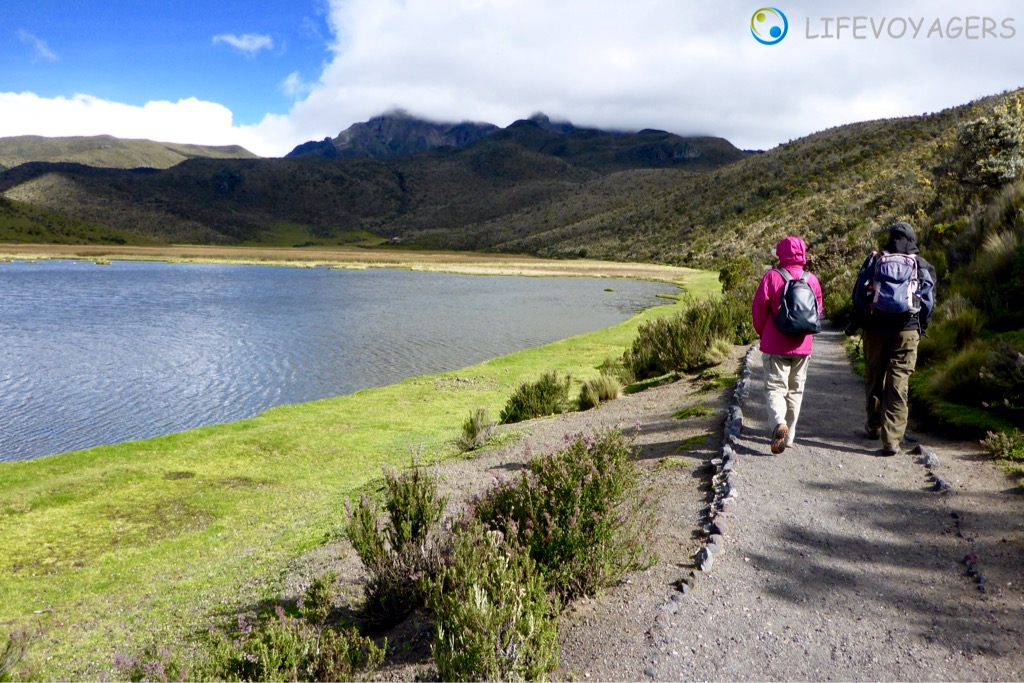
Laguna de Limpiopungo in Paraná of Cotopaxi National Park south of Quito, pure nature complete with strong winds at 3.330m above sea level, duly registered at the ranger station of the park after approaching through dense clouds, right with opening in the morning, the Germans again… ;-)). Silence, sounds of nature, flora, fauna, views, and the surrounding tranquillity at this magical place couldn’t have been more recreational… For us the perfect recipe for balancing said adrenalin caused by comfortzones constantly left behind, see last blogpost…
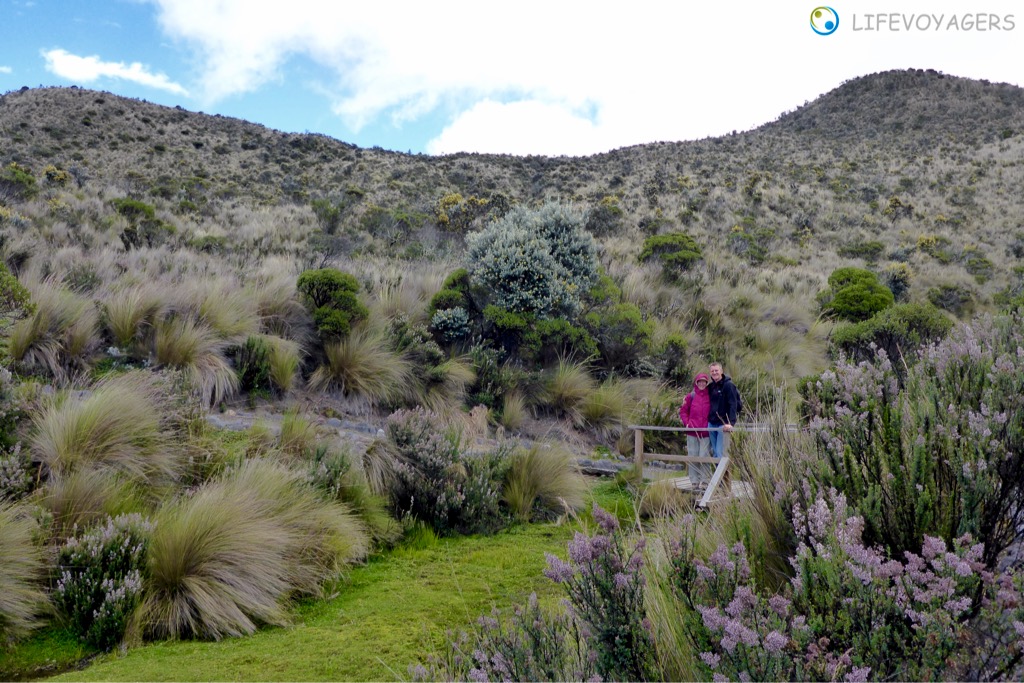
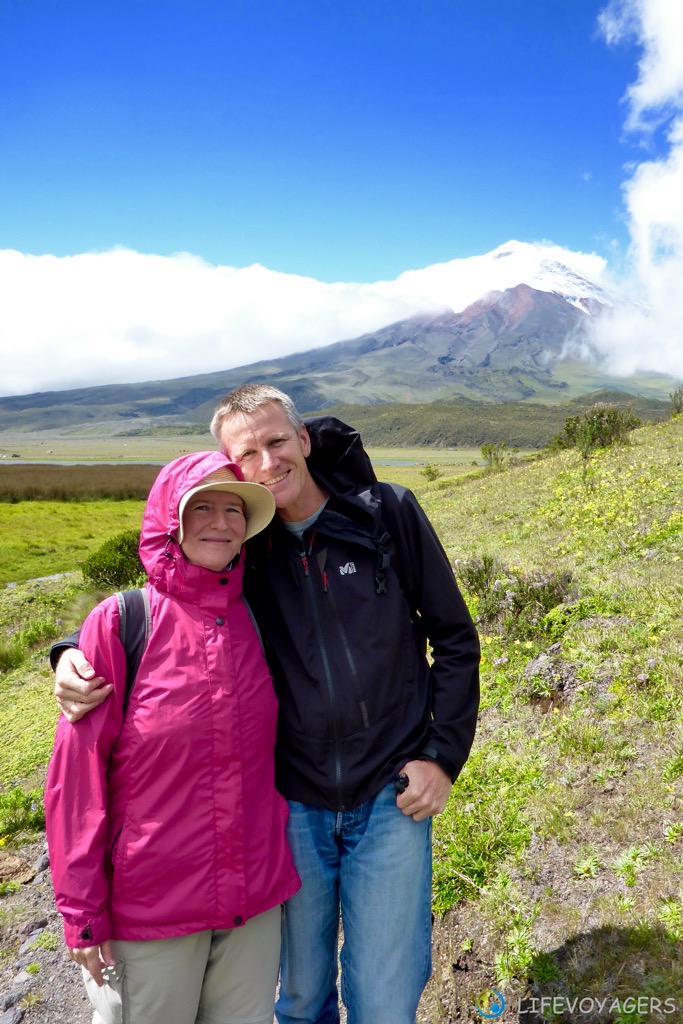
There he is, active volcano Cotopaxi, nearly 5.900m in height, so an additional 1.600m higher than the lagoon, there is no access any higher at the moment because of its current warning level ‘yellow’, this is the potential view enjoyed by walkers around the lagoon in different states of disguise and unveiling for the hour it takes to get arround…
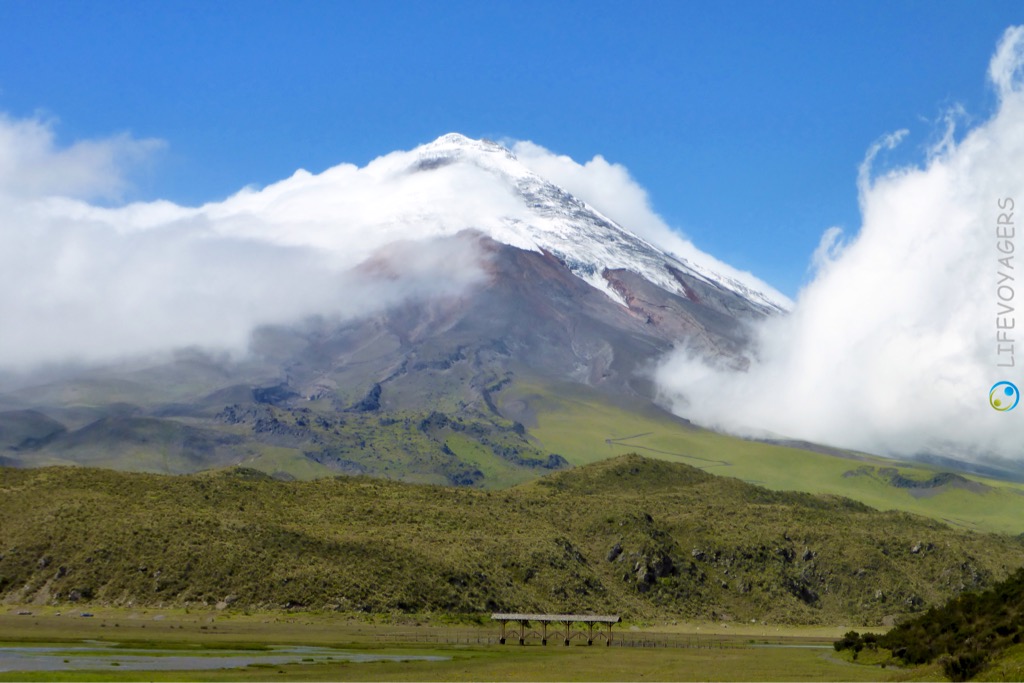
Can you guess how many photos we took of him… ;-))) This is just a small choice!
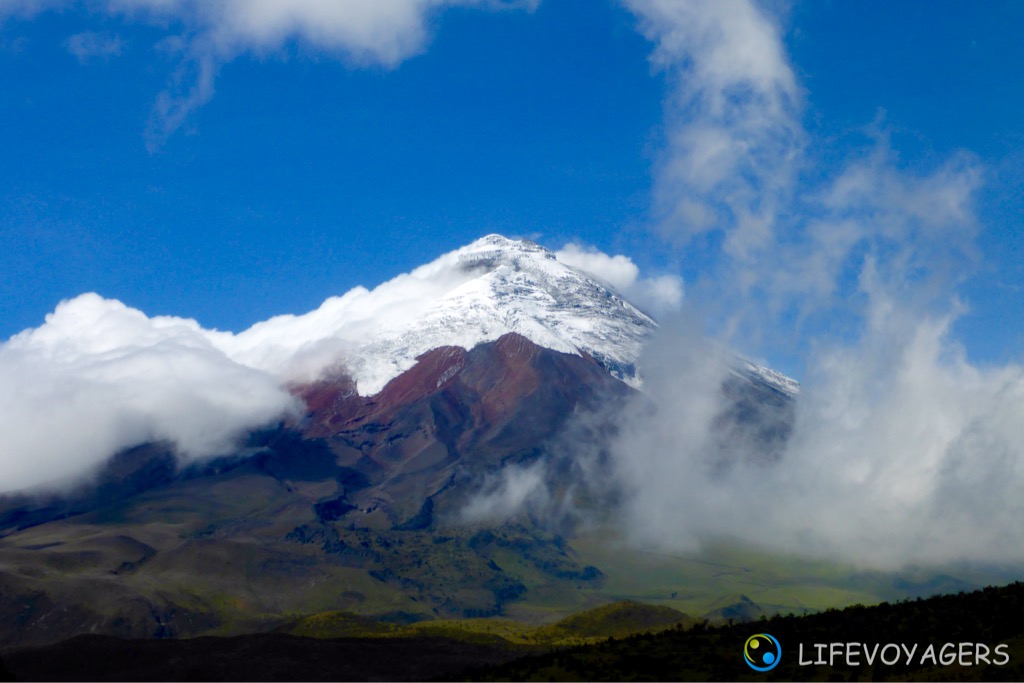
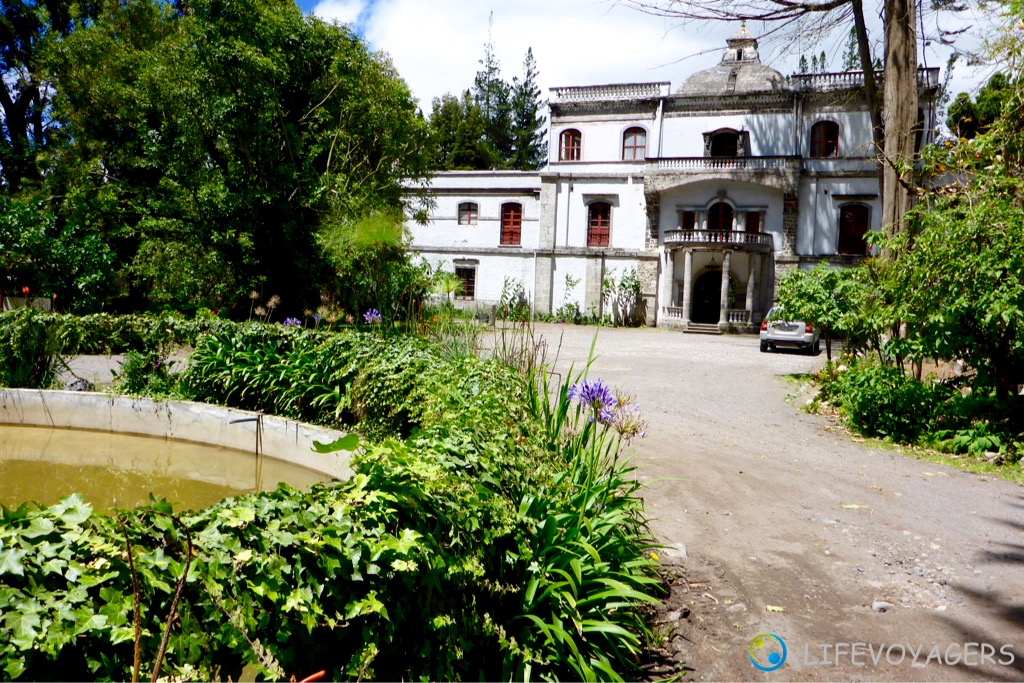
Afterwards Frank surprised us for the birthday lunch with Hacienda La Cienega above, from the time of the first colonial settlements in Ecuador more than 300 years ago, the Ecalyptus trees brought in from Australia of the alley leading to the Hacienda are of the same age, a place literally drenched in colonial history and taking the visitors to times long gone, with all good and less good connotations this brings… nevertheless, or else particularly because of this, this place is magical!
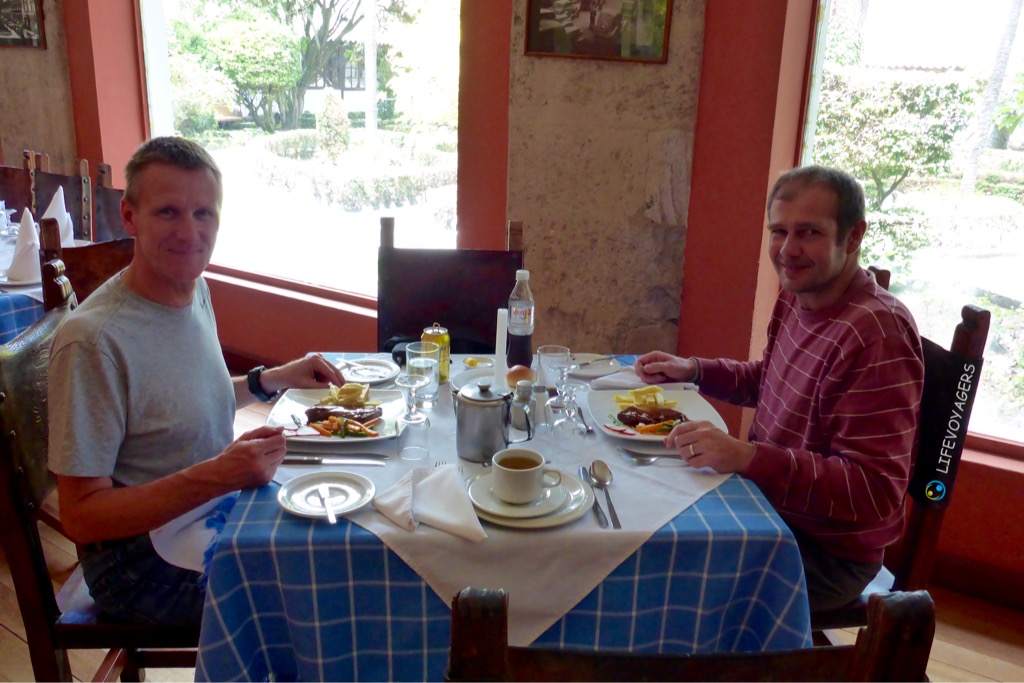
What’s wrong with this picture? Riiiiight, nothing but litres of tea for Claudia when there should be a delicious meal, who would have thought Montezuma takes revenge even that far south… A good restaurant in noble ambiance, clearly Frank is an excellent judge of character… ;-))
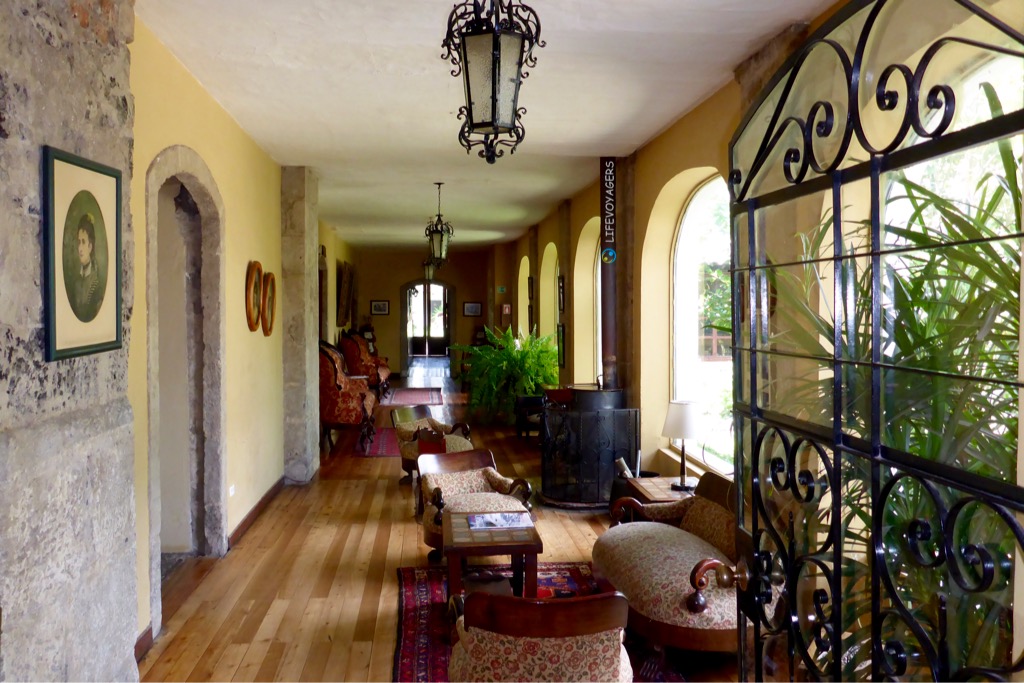
Intererior design of the Hacienda, still a hotel today, or patio, gardens, and chapel, you name it, we could have stayed even longer…
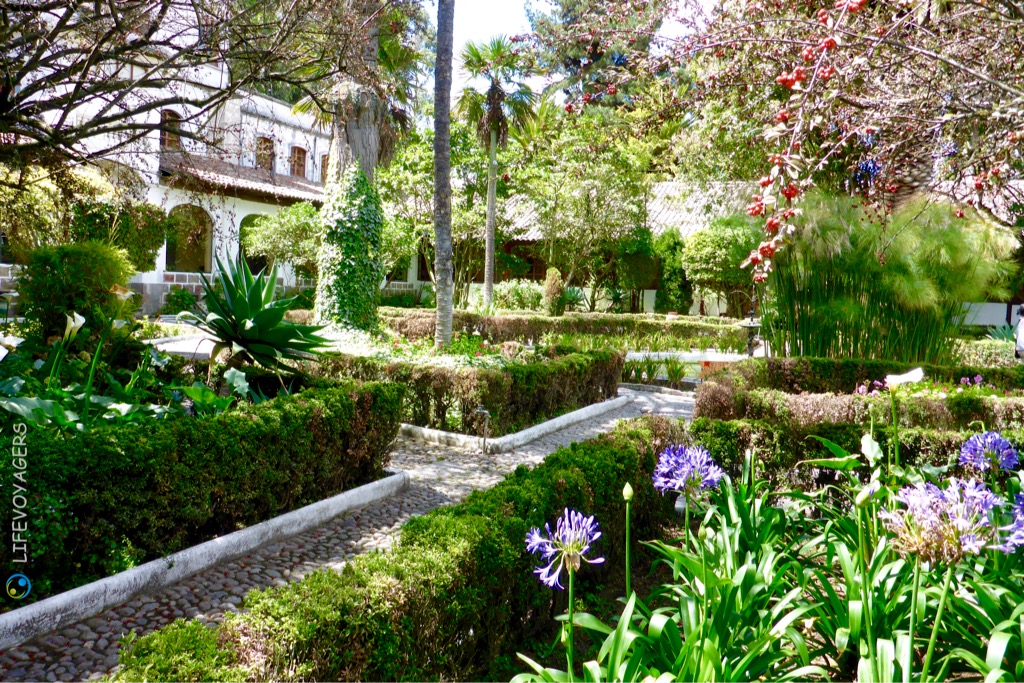
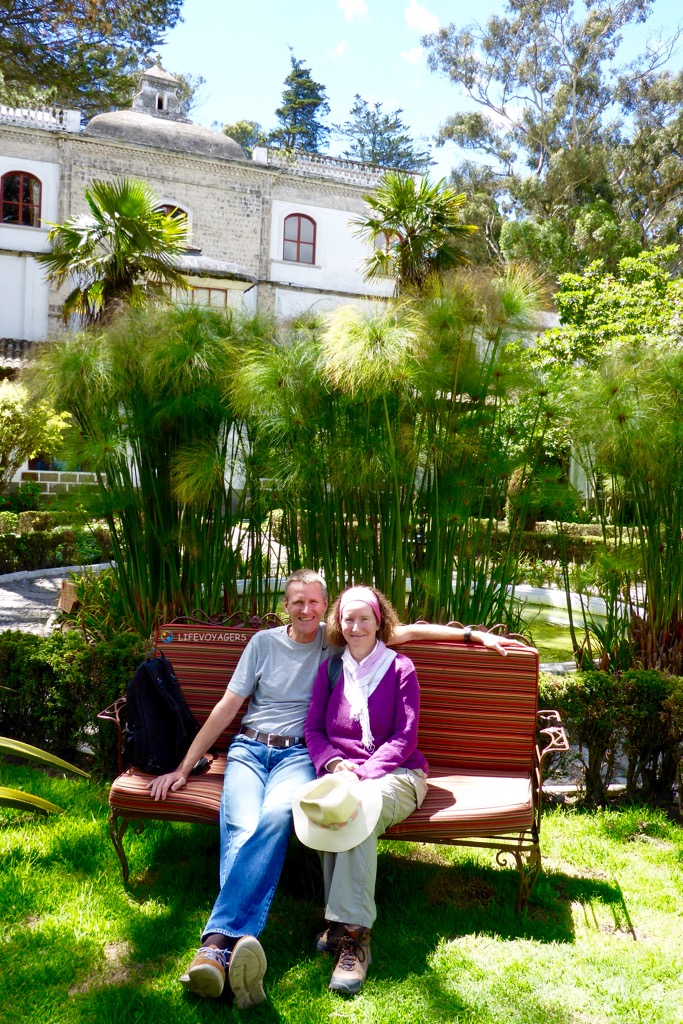
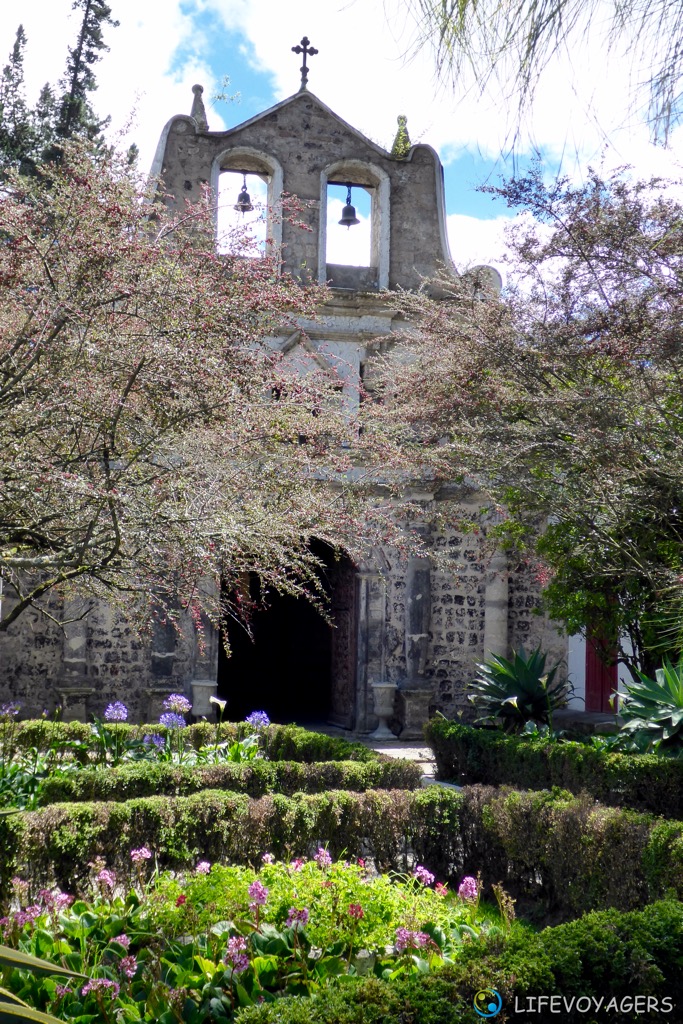
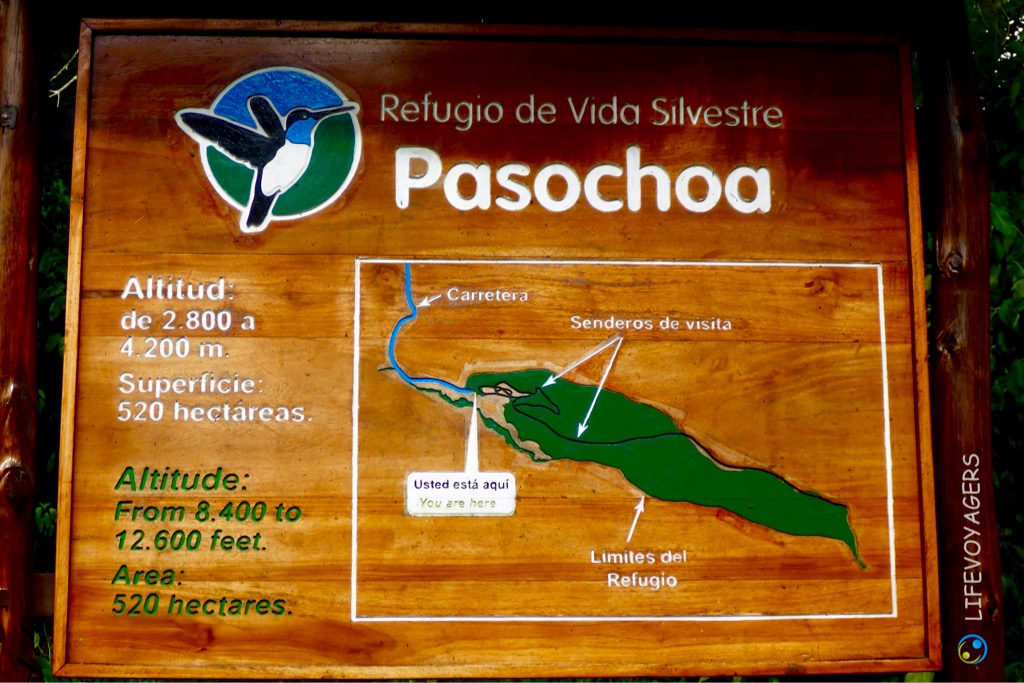
The day still had even more to deliver, after 4km of single track, but of course two-way dirt road, heroically mastered by Carsten in our rented Chevrolet Aveo, we were rewarded with a walk through cloud forest in Refugio de Vida Silvestre Pasochoa, where ferns, bamboo and bromelia can all be found, all in a perfectly pleasant climate, quasi tropics without tropics, wonderful… And again lovely views, see far below…
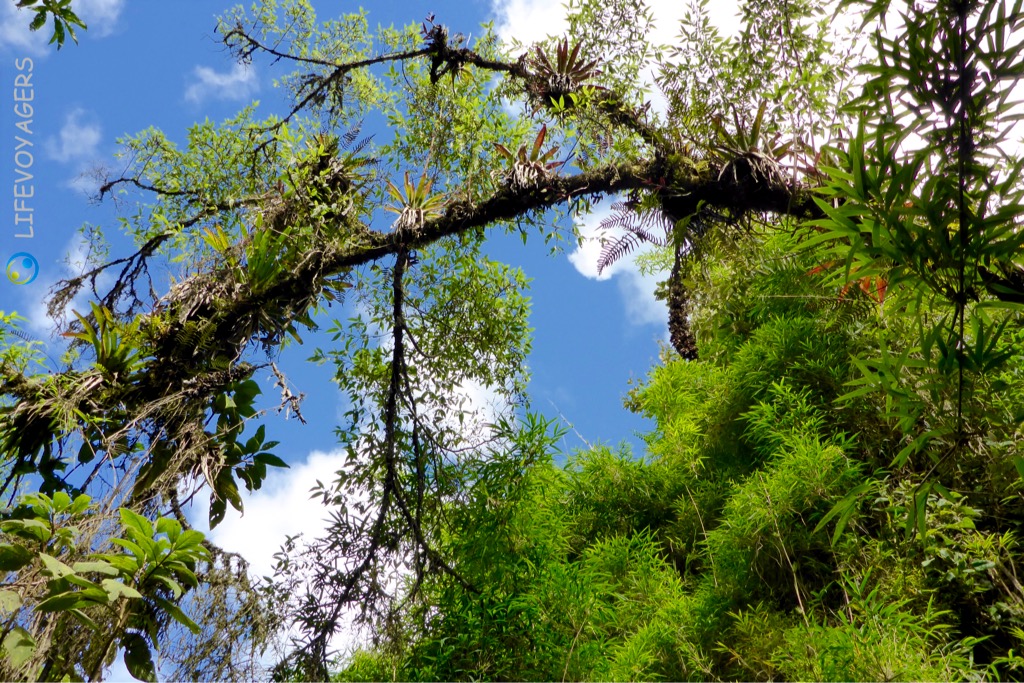
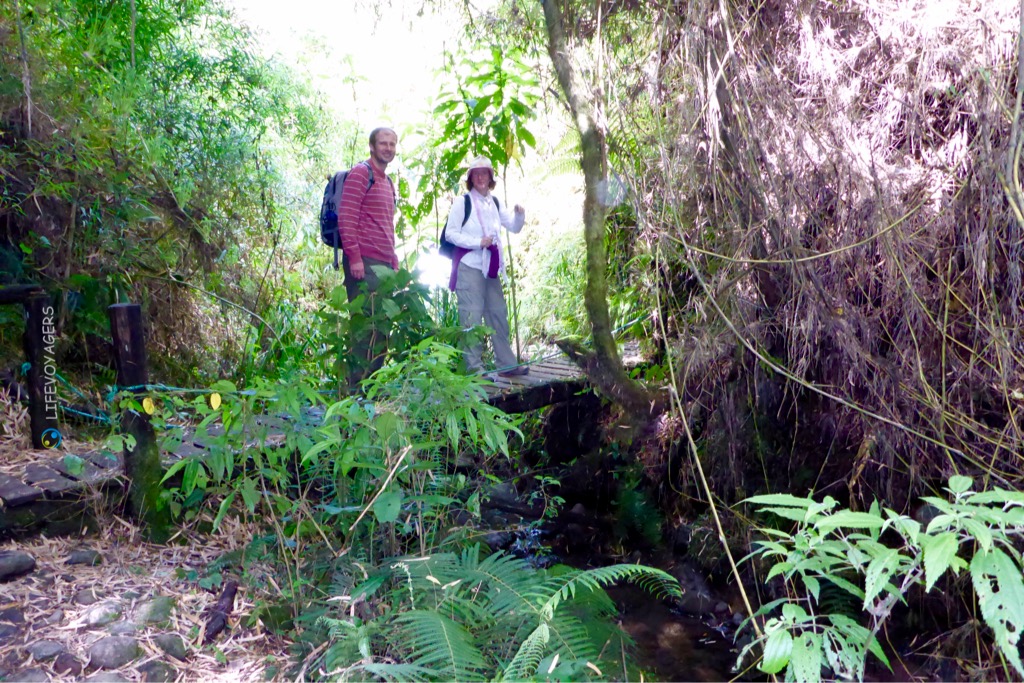
Thanks a ton again to Frank Alte of Ecuador Galapagos Travel EGT, we hope to return to Ecuador on one of our future travels!
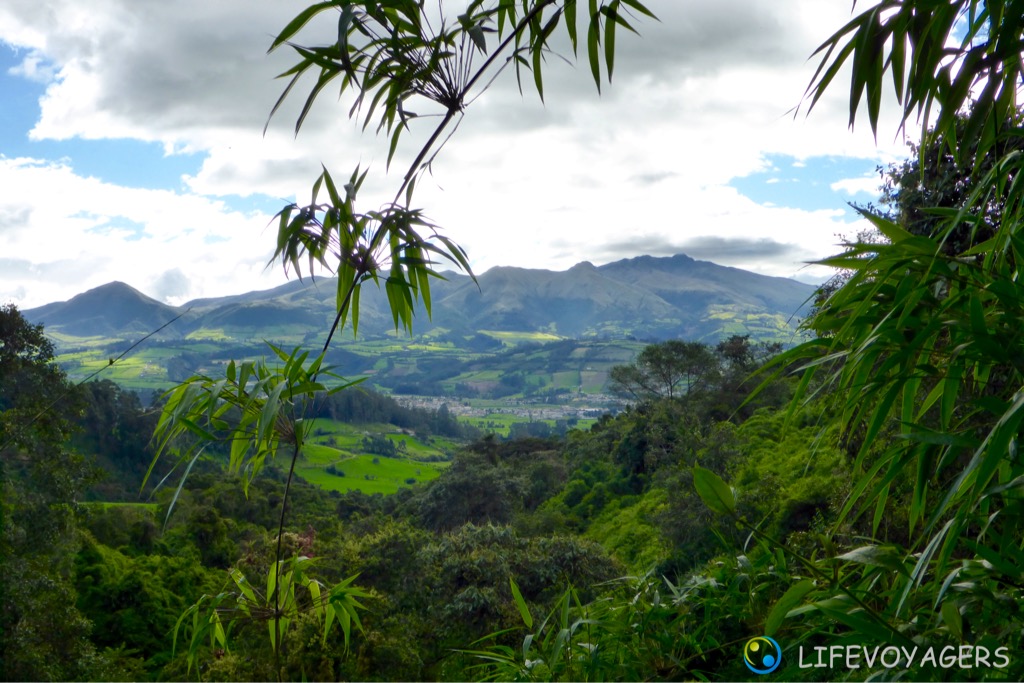
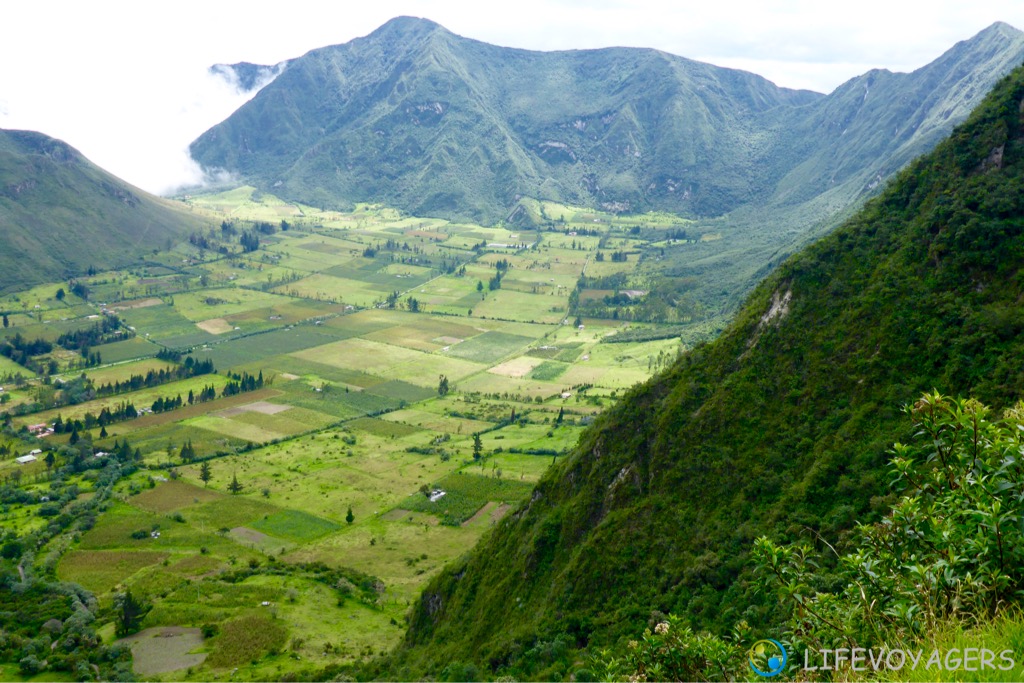
On the last day of our rental car outings we enjoyed this view into the inhabited and farmed crater bottom of Pululahua.
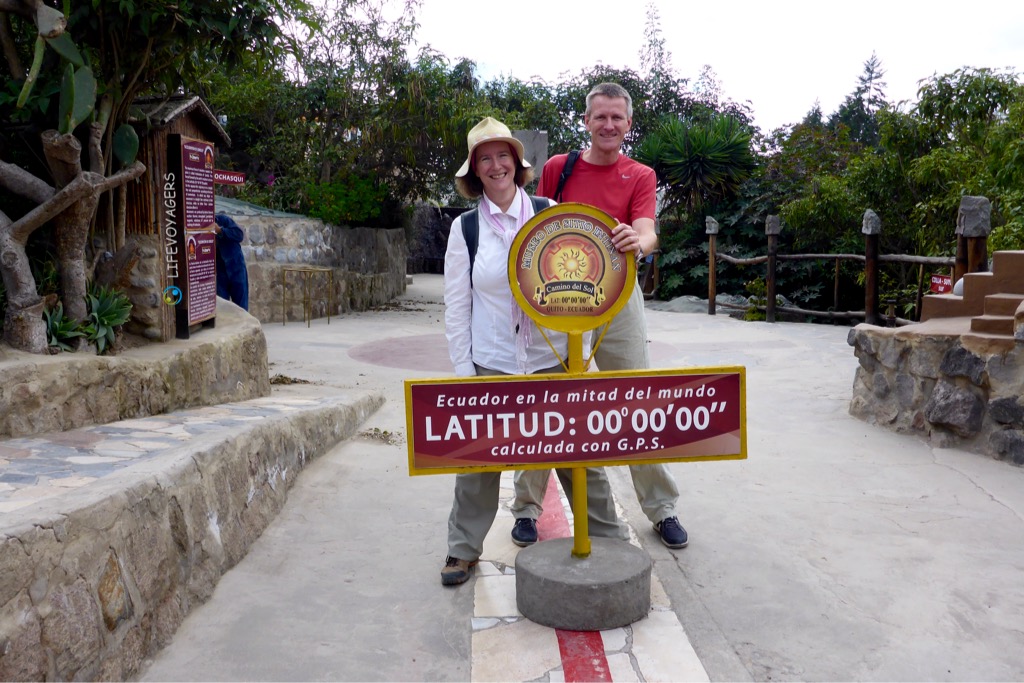
This is where it gets interesting: For this nice photo (Claudia ‘on the Northern’, Carsten ‘on the Southern hemisphere’ ;-)) we went to Intiñan-Museum, 15 km to the north of Quito, because ‘Mitad del Mundo’ Monument and Museum once again felt too ‘touristy’ in our minds, and because this line in the photo is closer to the actual course of the Equator, even this one isn’t totally precise (3° off)… But why at all ‘Mitad del Mundo’, ‘Middle of the World’? The Ecuator after all runs once around the whole globe? Wouldn’t every country be entitled to call themselves middle of the world which it runs through? In a nutshell: Fact is that at the very least the Quitsan-to-Project excavations showed that even the indigenous peoples of Ecuador before arrival of the Incas knew the Ecuator’s course, the line where there is no shadow at midday at twelve on equinox. They knew this because only here, north of Quito, there’s an unhindered view on the Equator for observing the course of the sun, mind, with two fix references in the two parallel chains of Andes peaks literally running at a right angle to the Equator. These conditions are given nowhere else on the planet along the course of the Equator! So ‘Middle of the World’ is quite correct from this point of view! The sun with its movements was very important for the indigenous peoples because of the harvest and for spiritual reasons, and the latter is considered one of the reasons why the Inca, equally sun worshippers, relatively short before the Spaniards arrived, had come from today’s Peru to conquer today’s Quito and its unique observation conditions! Fascinating…
And so we hope to be back in Ecuador one day to discover its countless other diverse climatic zones and landscapes in more detail, they being so close to each other in this country, together with the highest biodiversity in the world in relation to the size of the country! Unfortunately our stay in Quito was affected by a diarrhea bug for Claudia, dragging on until Lima, our sizeable stock of charcoal tablets finally depleted, which we take in smaller dosis for prevention too (absorbing toxins), no replacement available in this country, only in Lima did we find at least Spirulina and finally saw a physician, resulting in taking no longer avoidable broad-spectrum antibiotics… We hope we’re done with this now! Probably it was a Ceviche with cooked shrimp and mussels, no raw fish at all, but this ‘spoilt’ us for the culinary fish and seafood offers of Lima, Peru being the second biggest industrial fishing nation after China! A pity…
Soon we’ll come back to you from Ollantaytambo, Love,
Claudia & Carsten, Lifevoyagers
PS: Addendum to ‘Everyday Life’: a small acoustic impression of the most loved Car-Alarm of both Quito and Lima, often very sensitive, i.e. going off aaaallll the time, and this on the street in front of the house… For full pleasure listen more than one second, there’s variety to be had! Enjoy! ;-)))
Quito, Ecuador, and: everyday life when travelling!
Saturday, 14/05/2016
Everyday life when constantly travelling? We think it important to convey this, for everybody who’d like to do something similar, to know what he’s bargaining for! Apart from our Quito impressions today you can read something about this, mind you, that’s a very European view of things, and at times moaning at a very high level…
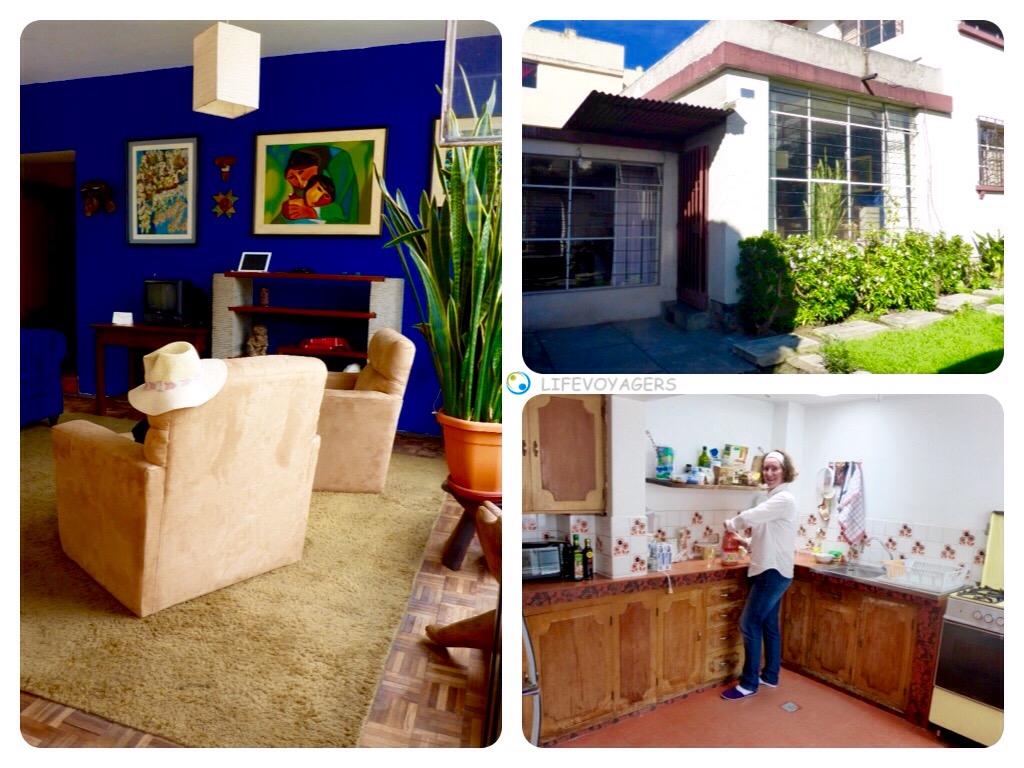
Our very nice flat in Quito, fully booked until the end of this year now, I’m afraid, but this is definitely your place in Quito!
Challenge: not only to experience, but also to process all the new and mostly very special impressions, the many changes in the closer and wider living environment, in culture, and of course in said everyday life too, else the organism soon comes up with exhaustion as a reaction, the soul is after all traveling slower than the body!
Our strategy: we sometimes stay ‘at home’ for whole days for reflection and relaxation, are thus particularly happy to have chosen to mostly stay longer at one single destination and therefore to have time on our hands to do it at our pace; we listen, by the way, to Rix FM, the Swedish radio station we’ve been listening to in the last decades when in Sweden, totally relaxing for us because of the mega relaxation our visits to Sweden mean to us, we use a little loudspeaker for IPhone which we drag around the world with us (IPhone 6 years old, IOS updates no longer possible… ;-)), Radio Cologne or Radio Hamburg would be too close to home to listen to, and the machine-gun-rapid-fire Spanish of a South American radio station, few of them receivable via internet, would then again be too exhausting, particularly in the long run, as I said, oldies like us need a bearable dosage of foreign stimuli! In addition, in South America Spanish doesn’t equal Spanish all the time, for example: avocado is ‘palta’ in Chile and Argentina, but ‘aguacate’ in Colombia and Ecuador, caramel is ‘arequipe’ here, but ‘dulce de leche’ there, etc., etc.
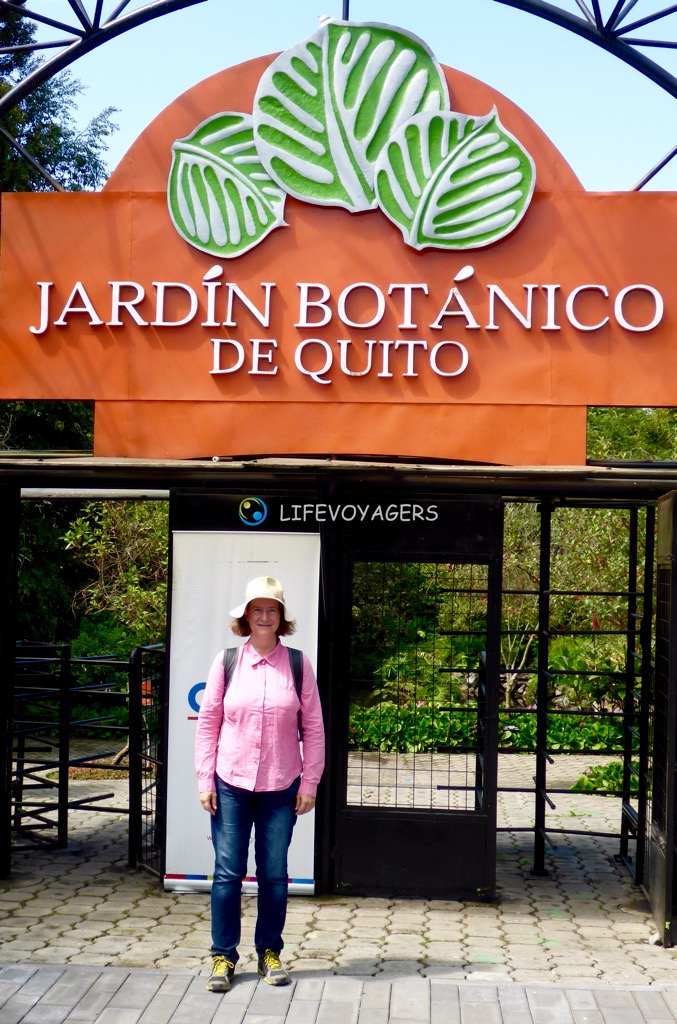
Same procedure as in every new city: Botanic Gardens, this time in Quito! We just can’t help it… ;-))
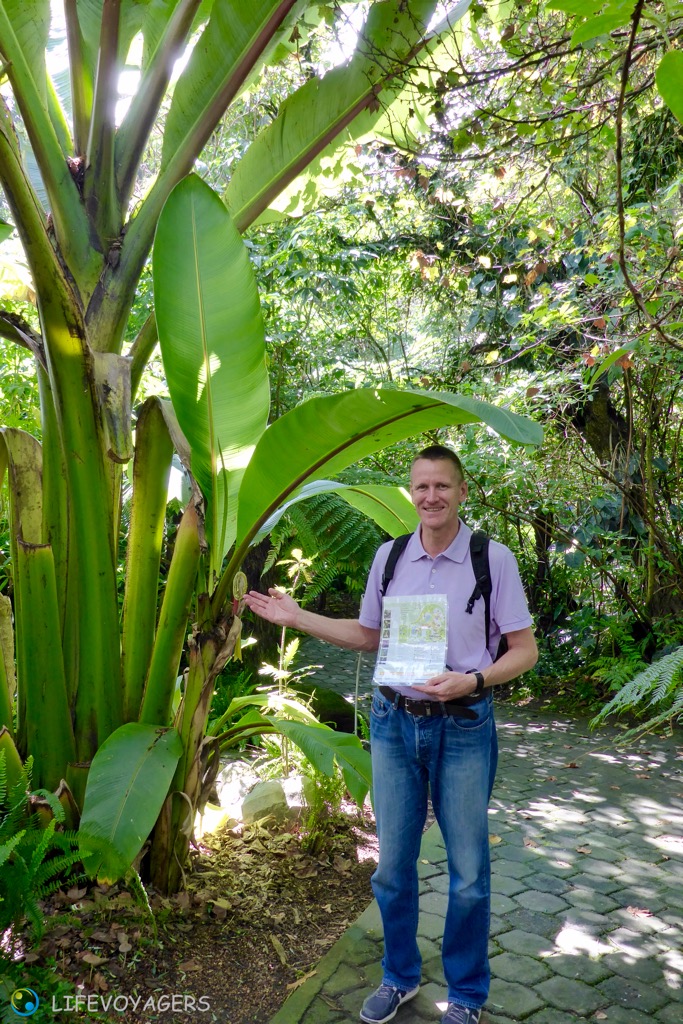
Isn’t this a nice guy(ide) I’ve got? And so professional looking too… ;-))) Definitely staff of the month!
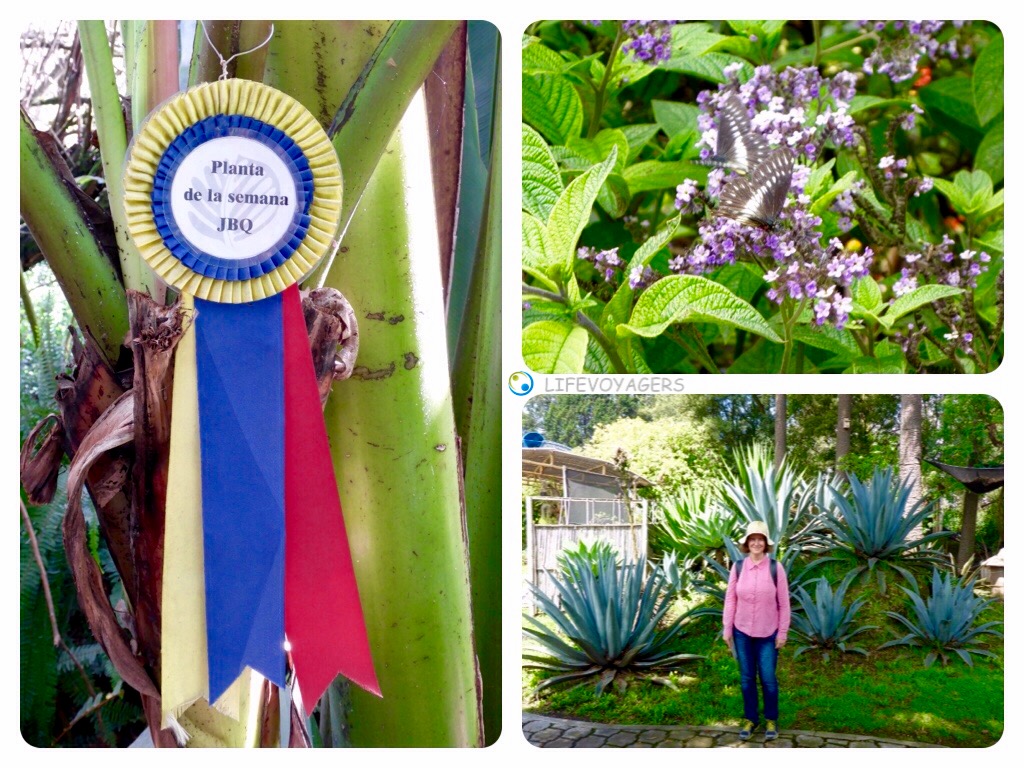
And a plant of the month too, who would have expected that… ;-))
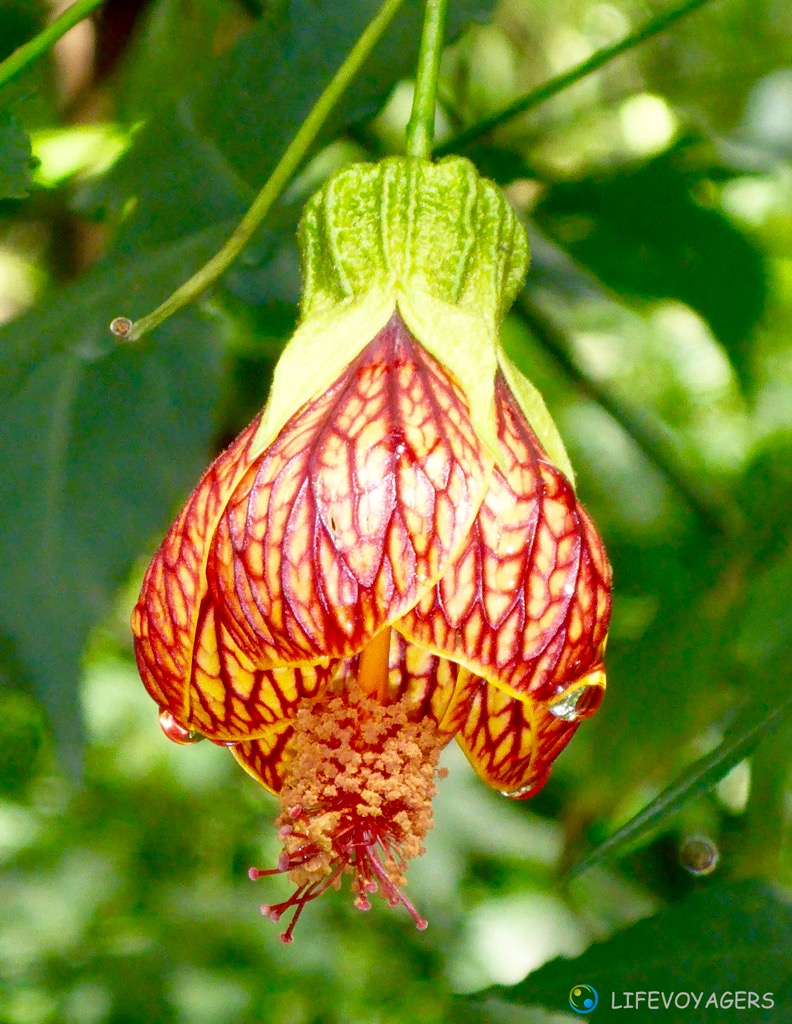
Definitely our plant of the day, but we were so fascinated we forgot to look up its name… Anybody out there who knows?
For the same reason our accommodation needs to be a little oasis, and therefore cosy, for us, some examples: we love that there are mostly queen-sized beds, meaning one mattress for both (this is often different in Germany, where it’s mostly king size but with two mattresses), it’s a pity they are mostly too short for Carsten (beds 1,90 m in length, Carsten is 1,88 m, so the feet are hanging outside if you don’t spoon together ;-)), but sofas worth mentioning are rare; to cook with gas is a lot of fun, nowadays two flames, one pan, and a big pot with a lid are sufficient for us, but mostly we have four flames and an oven, even if sometimes quite dated; meanwhile we’ve downloaded three manuals for different washing machines, thanks to the net, and you wouldn’t believe the types of washing machines out there…; how do I wrench out of the gas flow type heater and the sometimes equally dated cold-/warm-water taps without single-lever tap something different than ice cold or scalding hot water by moving them by the millimeter without them dropping off (the taps, that is), etc., etc… Of course the roof over our heads is what’s important, and we are deeply grateful for each one of them!
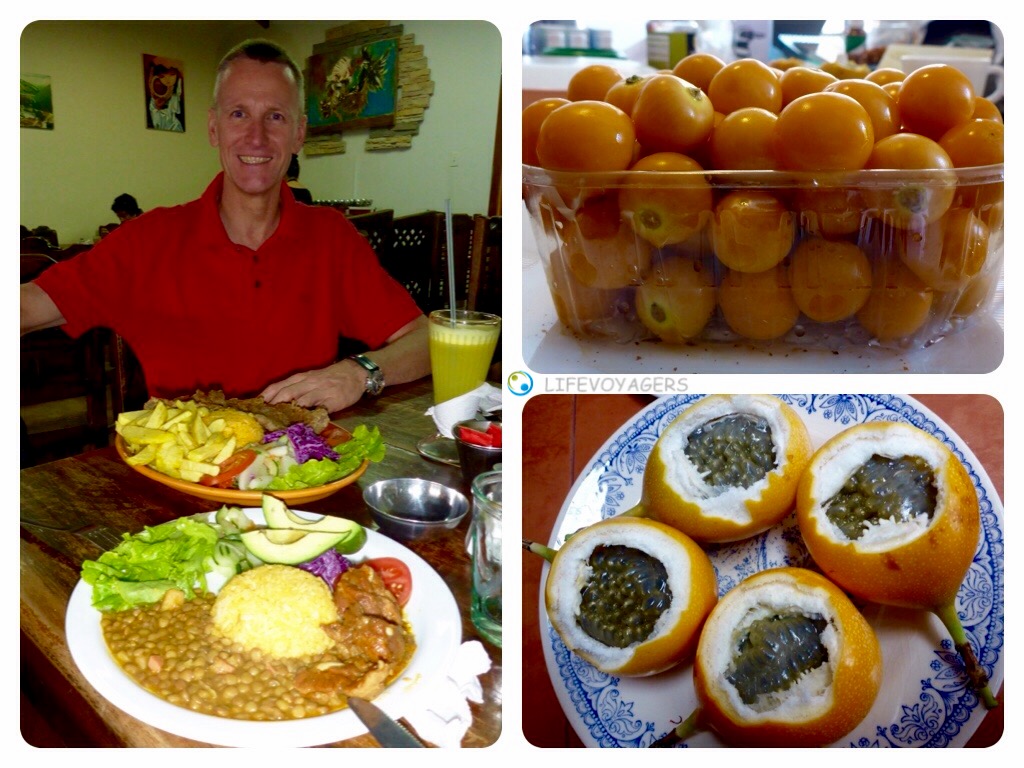
Food again, of course: Left: mine was a lunch for 2,75 USD inc. two drinks (juice and tea), a tiny appetizer, and a tiny desert, fair enough, and Carsten had Milanesa a la carte for 5 USD. Top right: 400g Physalis for less than one Euro, and the flavour quite different from the ones we get in Europe, I’m spoilt now… Bottom right: Granadillas, of the passion fruit species we have two each for breakfast every morning, yummy!
Challenge: Travel planning and research, both for the whole route as well as in detail for the next destination and its everyday- and exploration-specialties: research when? How much? How often? How long in one go?
Remains the what it is: a challenge: takes a lot of time, not least because of the many possibilities available today, as other travel-bloggers rightly mentioned: you have to sometimes take time out from research and planning deliberately for days, otherwise it might drive you crazy, not least because otherwise you are never in the here and now but permanently in the future, in your head… Of course planning for backpackers using the buses might be possible on shorter notice, if you want to fly like us you have to, as you have seen, plan relatively early on, this might also apply to the kind of accommodation, this can of course be both advantage and disadvantage…
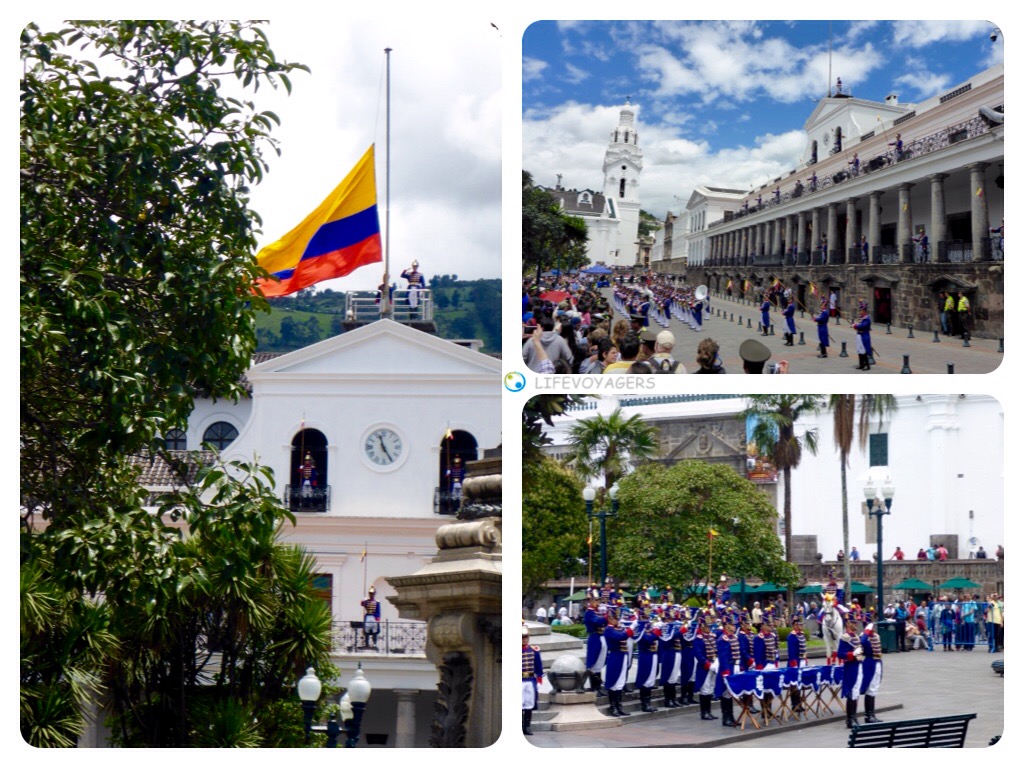
Changing of the Guards at Plaza Grande in Quito, spectacular. The flag was raised only to half mast because of the Earthquake victims in the country.
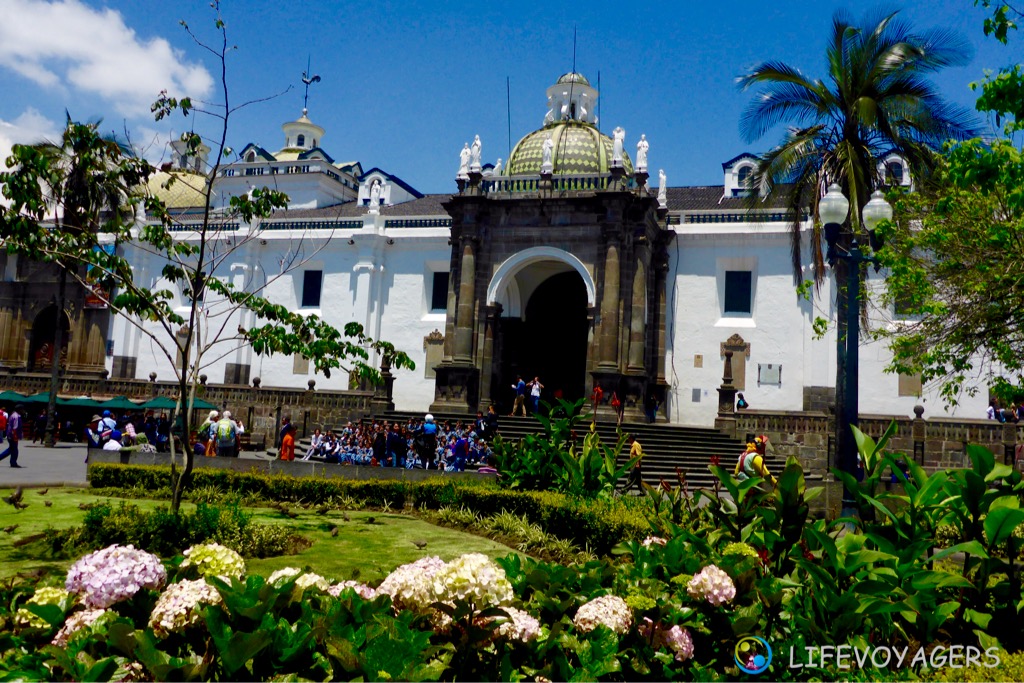
Catedral Metropolitana de Quito
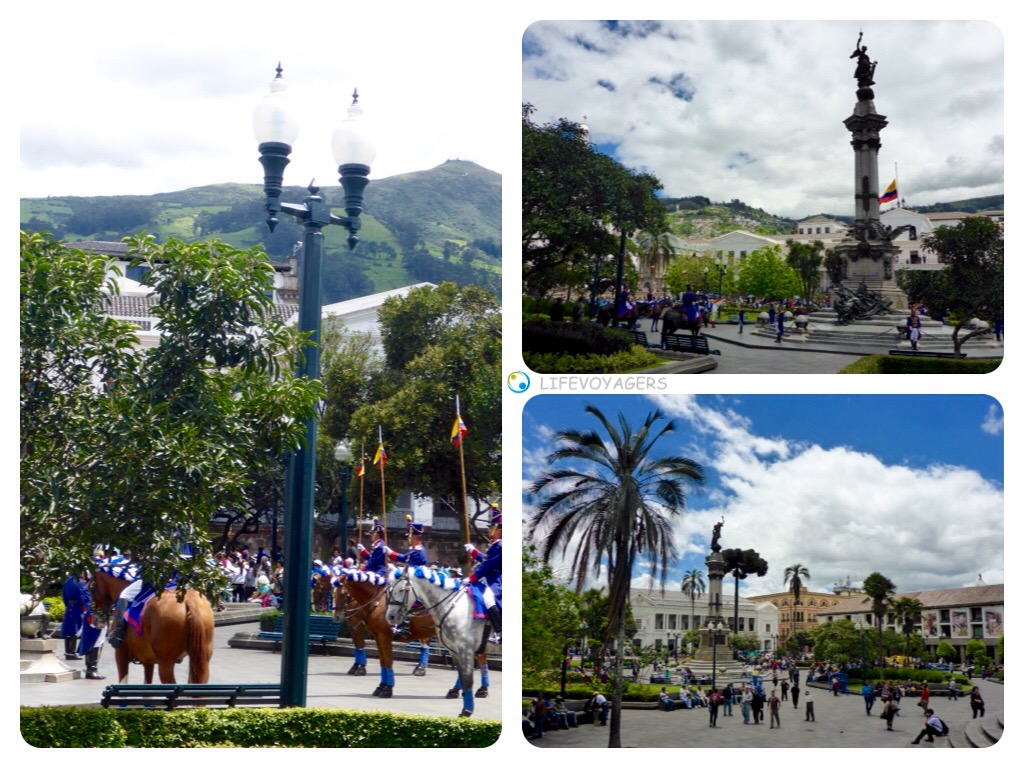
Always fascinating to see in the background how Quito is surrounded by the Andes in the background, at 2.850 m above sea level!
And then even we still put our foot in it at times: Airbnb accommodation in Barcelona, booking request sent, conditions all of a sudden show content not shown before: All consumption bills like water, gas, power, wifi in this flat have to be paid on top of the not particularly cheap price…!?!? What ever happened? The App had cut these contents in comparison to the website, we requested a booking via the App, if the host now confirmed, we’d automatically be stuck with the booking, cancellation clause: strict, meaning: if cancelling, you have to pay the whole price… Immediately sent another message to the host with annoying questions about the bills, plus notice to Airbnb about the faulty App, result after a few hours: host declined, what a relief, adrenalin level may sink after all… Of course the question is whether to book accommodation with strict cancellation clauses at all… but when renting for several weeks this is quite common within Airbnb.
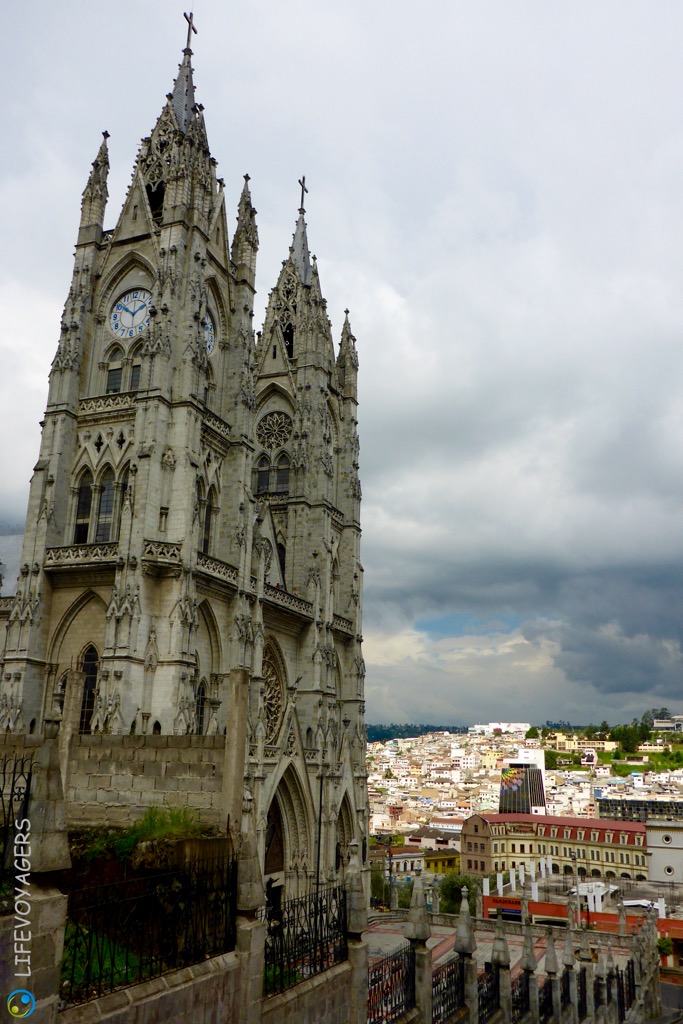
Basilica del Voto Nacional, and below its porch with a statue of Pope John Paul II.
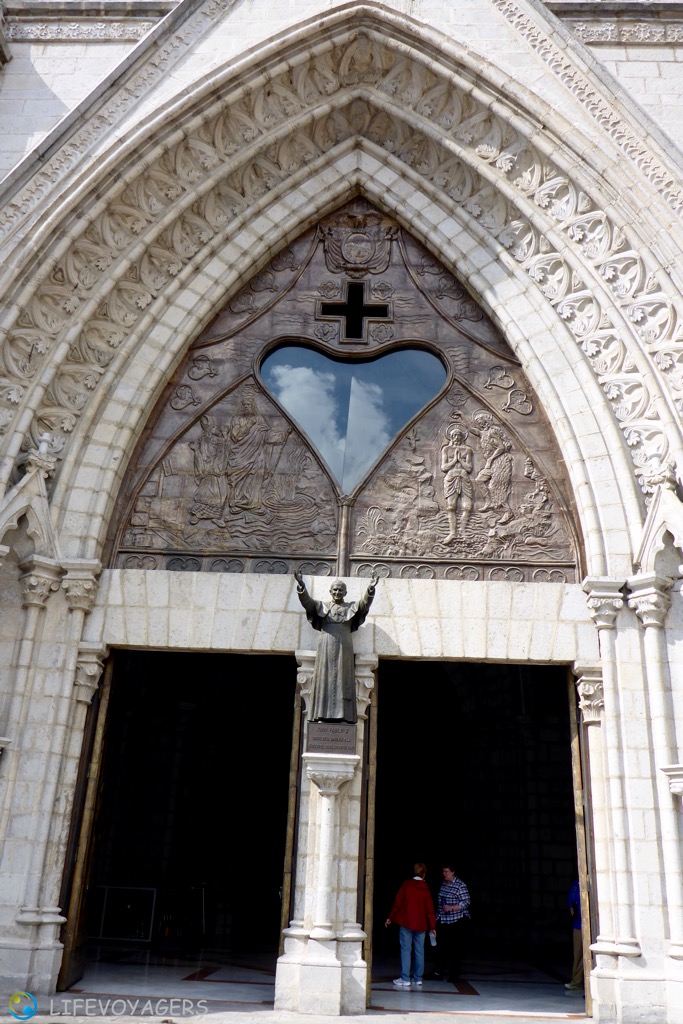
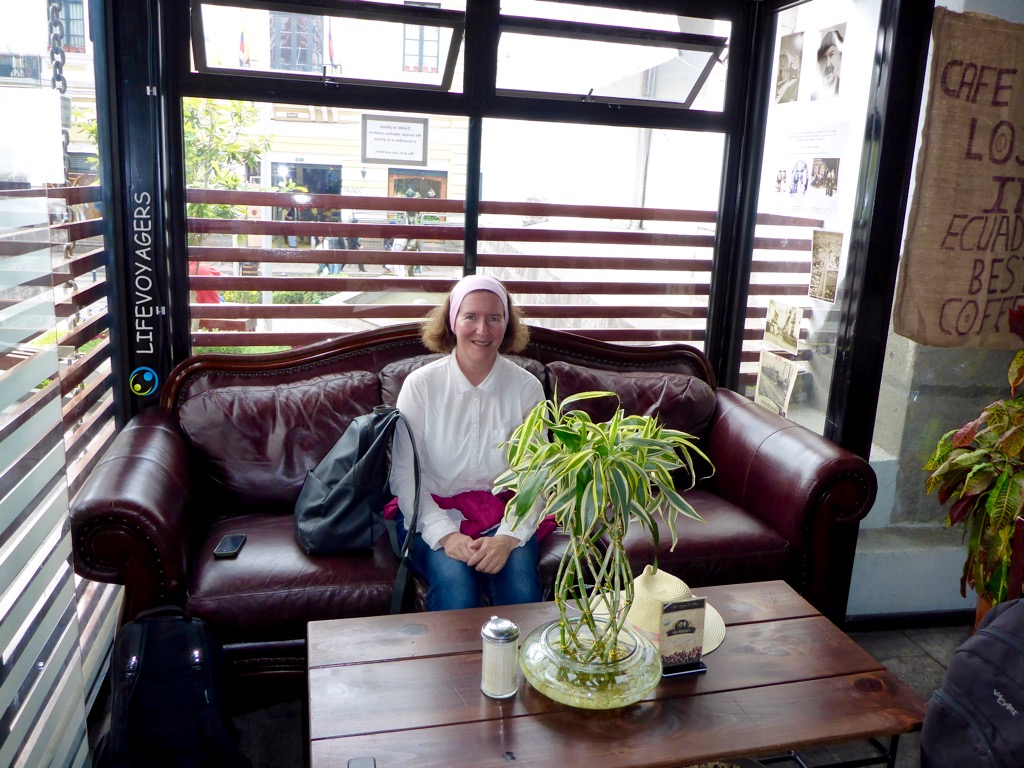
A break well deserved in a nice little café oasis, before visiting the Jesuit Church Iglesia de la Compañía de Jesus below!
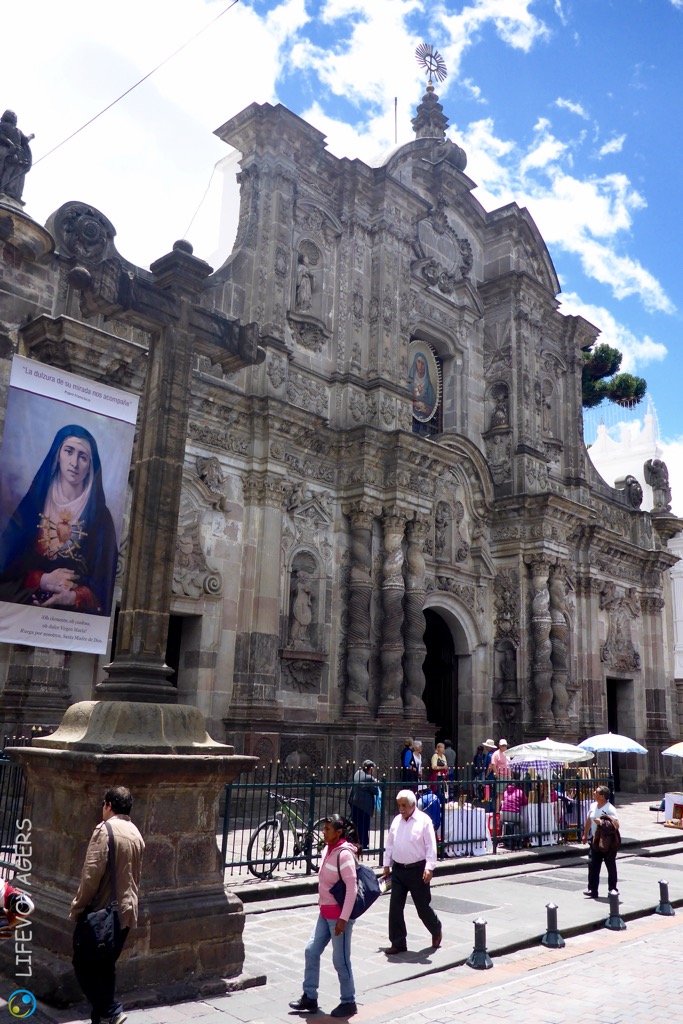
Detailed research of the next destination assists with finding secure transport from airport to accommodation, how local public transport works and how to pay for it (we can recommend the App Moovit, available for a lot of cities, but then not for some others, in Bogotá it was invaluable, otherwise we wouldn’t have managed locally apart from the Tansmilenio…), finding the closest supermarkets and farmer’s market, what parks are there and are they safe, what oases are there for that break from impressions (we confess: for example Starbucks or Juan Valdez, the South American equivalent), for us of course affordable restaurants, and we are very picky, because in case we don’t cook ourselves, then value for money must be a given ;-)), and of course ‘sights’ and their prices, hours, location, etc., not to let this kind of research get out of hand is the point!
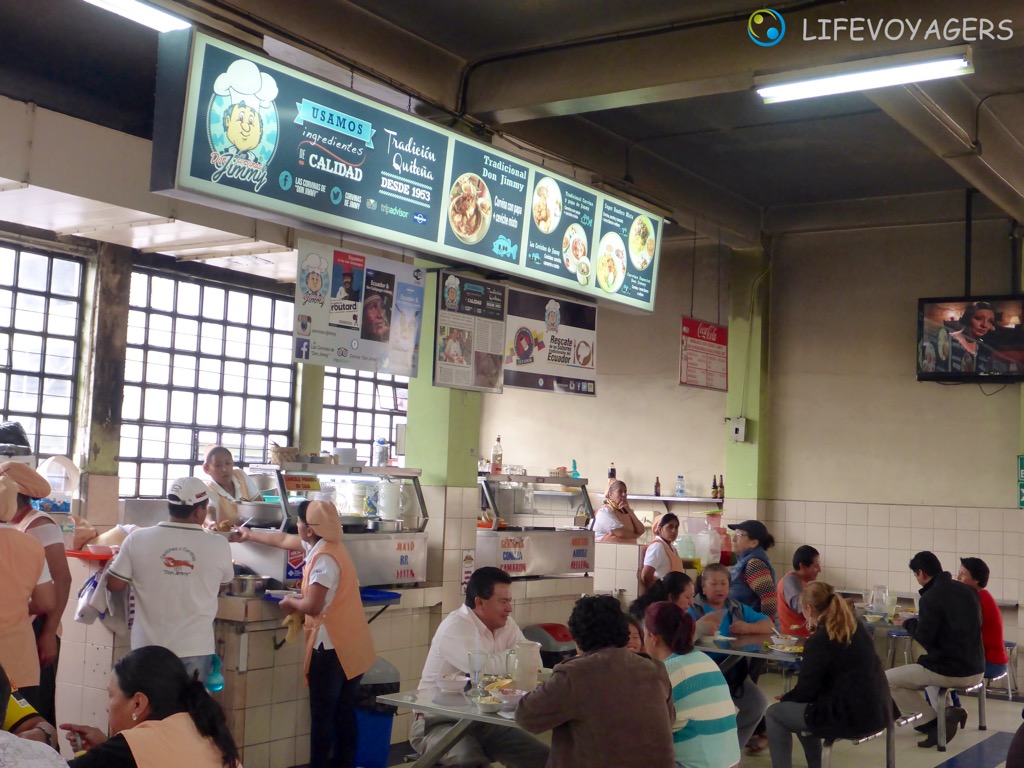
Restaurant ‘Corvina Don Jimmy’ at the Central Market, Livevoyagers happy, and food for 5 USD (one helping) plus two fresh fruit juices (tamarind and naranjilla/lulo) for one Dollar each far below! Of course we shared, Claudia had shrimp ceviche (first course), appetizer & hot sauce, Carsten had the breaded Corvina with potatoes (main course, non-gluten-free of course ;-))
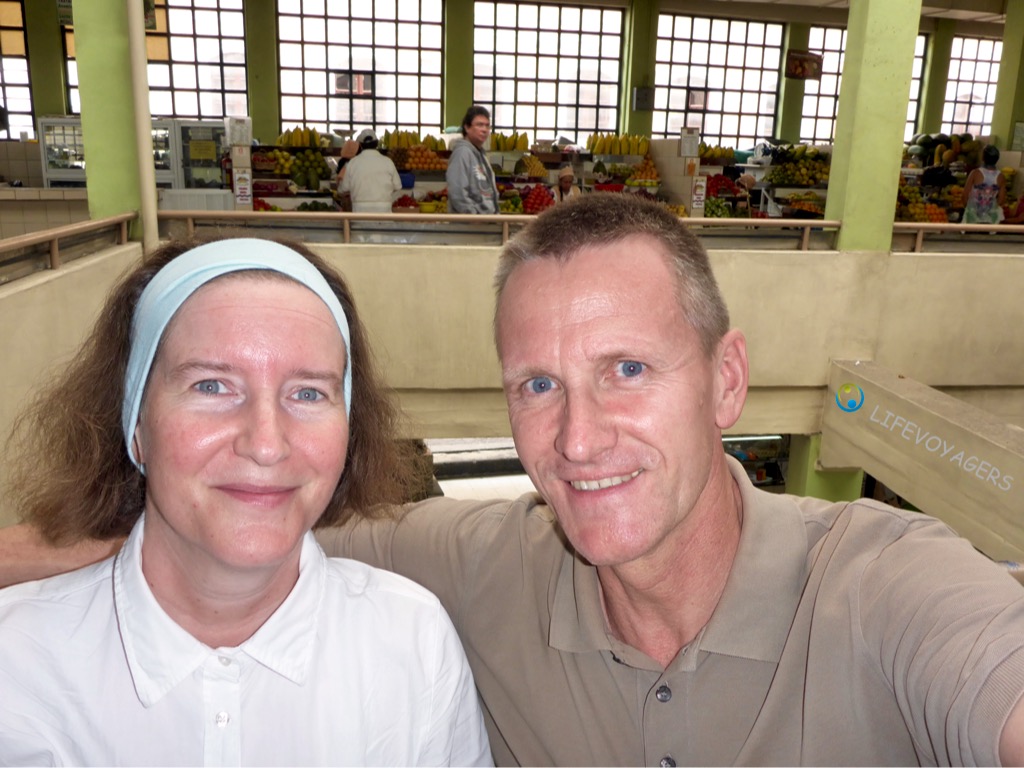
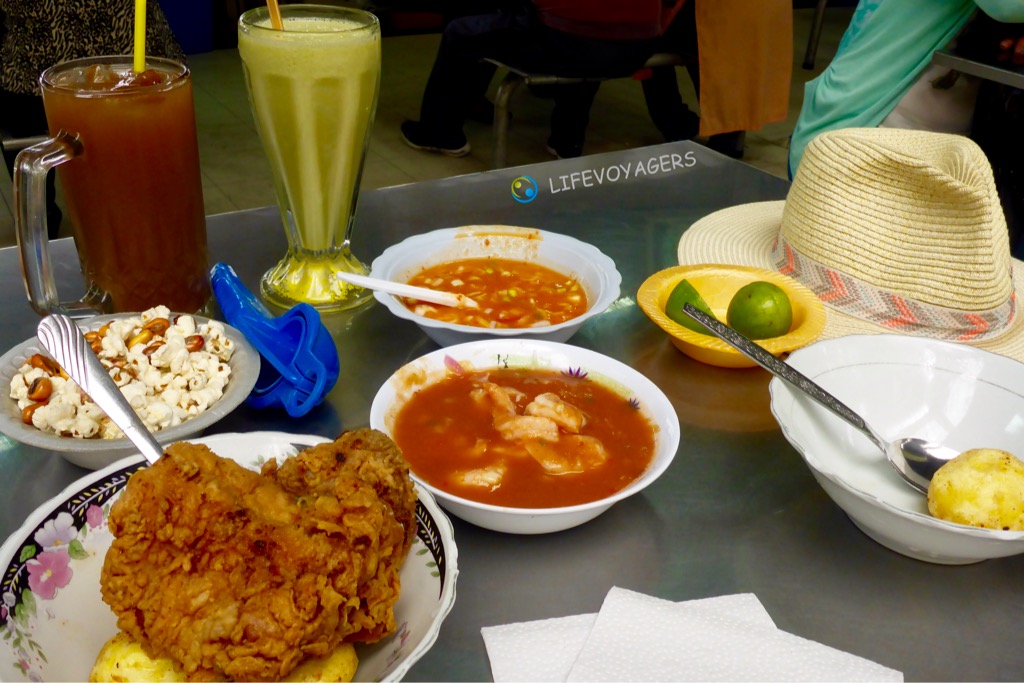
Challenge: minimise consumption-budget per month (food, non-food, public transport, sights, etc.) without suffering want
Challenge: minimise weight gain when feasting on delicacies (see numerous food photos of previous blog posts), this also being a question of some of the Lifevoyagers-followers
Two challenges, one strategy: even back in Hamburg we used to practice to limit ourselves to the essentials, but including the things that really are important to us, in order to save for our travels. That proved to be much easier than we thought, people knowing us also know us for spending rather generously before, we remember that fondly too, but everything at the proper time! But when we started to try and restrict consuming, we immediately found out what really counts for us, and what we can happily forgo, and that’s what we’re living now on our travels too, very important point: using the things we own until they fall apart, replacement shopping only if unavoidable, this way we spend next to no money for non food stuff, i.e. for stuff that might amount again.
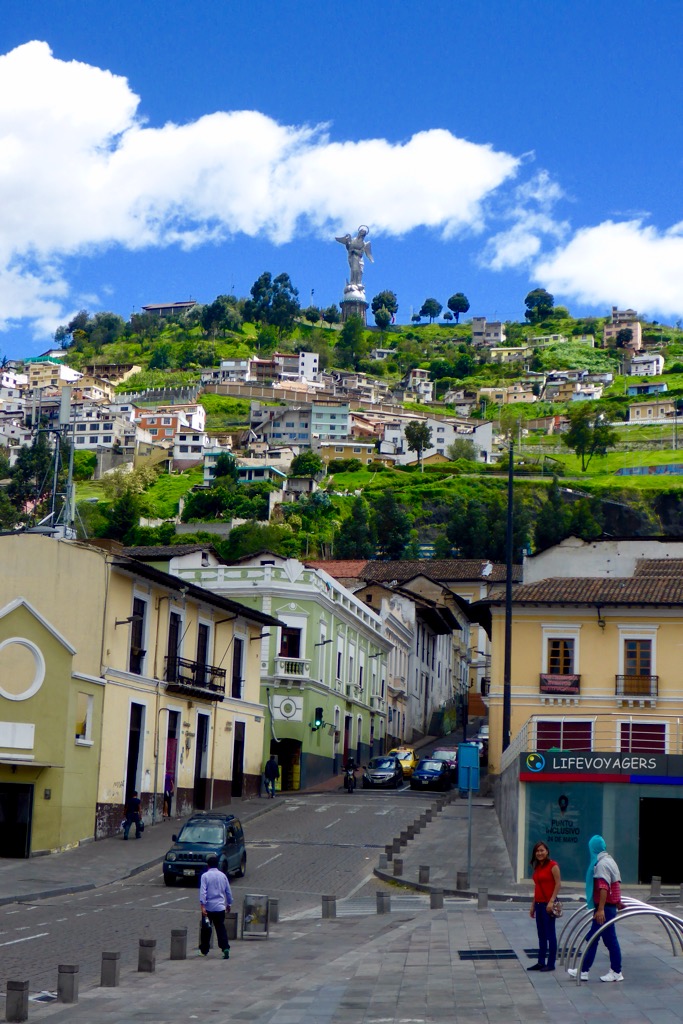
Two view’s, above and below, to the Maria statue on Panecillo hill (yes, with wings…), the one below taken from the Centro Cultural Metropolitano, worth a visit for its architecture and views alone, it used to be the first University of Quito, founded by the Jesuits, who’ve been banned from the country for nearly a whole century, by a decree of the King of Spain.
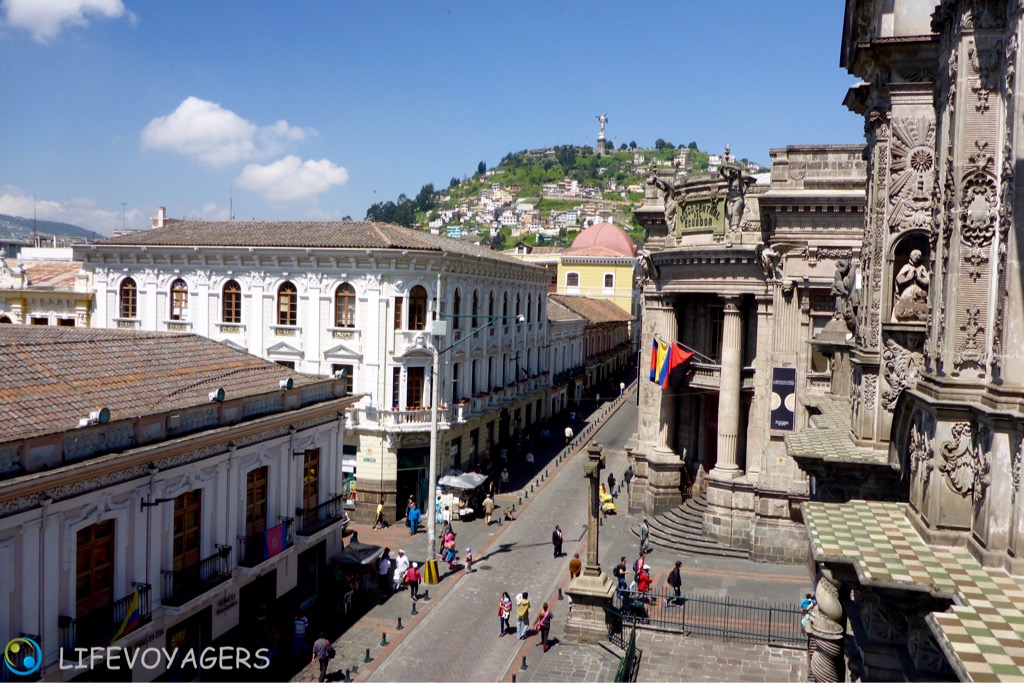

Iglesia de San Francisco and its adjoining Plaza. Weather in Quito tends to be very nice in the mornings with clouds and or rain in the afternoons, with exceptions of course.
And: We like eating, and we like to eat well, so we have to compromise for our budget not to go bust if we decide in some places rather to eat out and cook ourselves less often, we try to buy as few processed food items as possible but more ‘natural’, basic ingredients, sometimes difficult enough, recent example: I wanted a cup of broth with egg, but no instant soup in the larder, and when travelling I don’t stock any homemade broths myself, so short inventory: fresh garlic and ginger in the kitchen, sautéed in a little oil, drinking water added for them to cook in, separated an egg, ‘cooked’ the yolk in lemon, egg white in to the boiling garlic-ginger-broth, same with ‘cooked’ yolk, added dried herbs, chili and salt, done, just one cup! Nothing special of course, but one TENDS TO FORGET that it works easily and quickly without instant broth too!
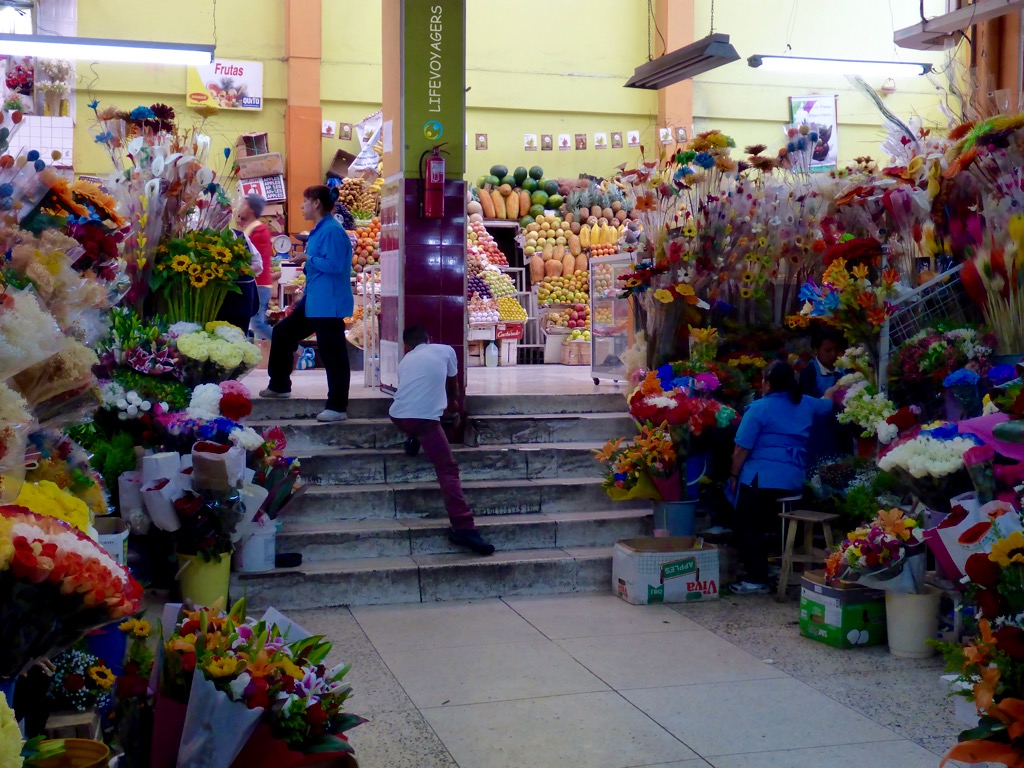
Mercado Santa Clara close to the residential area we are staying in, both fresh and artifical flowers on offer, Ecuador being the second biggest exporter of flowers in South America after Colombia, and Germany heads the list of imporing countries!
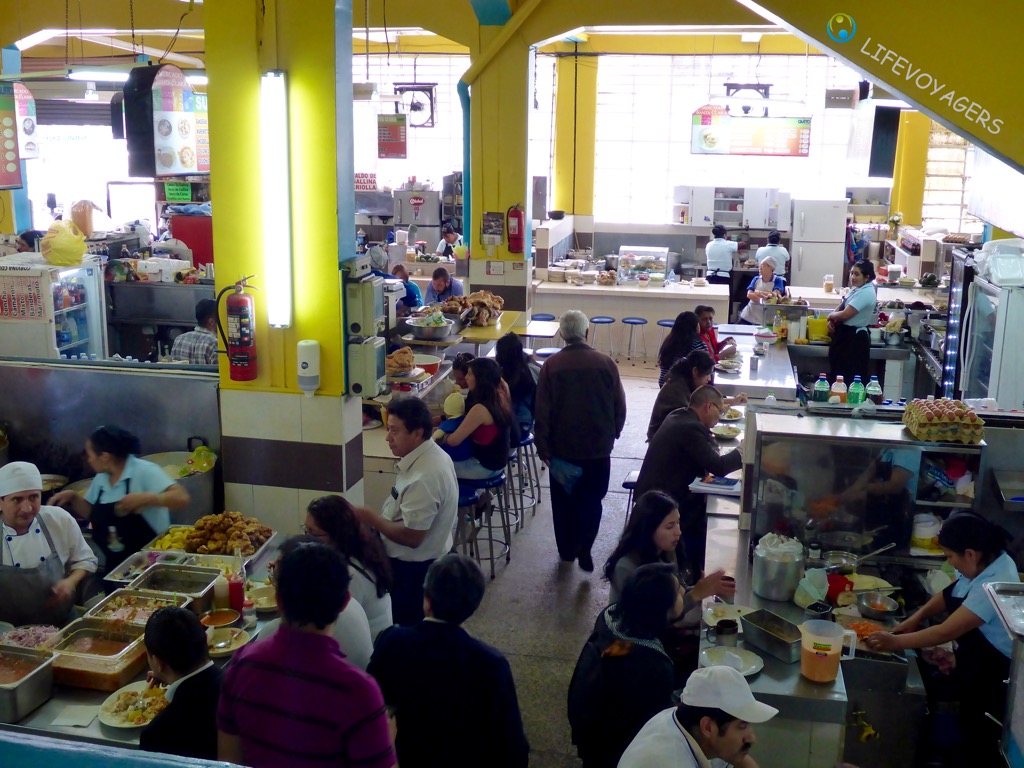
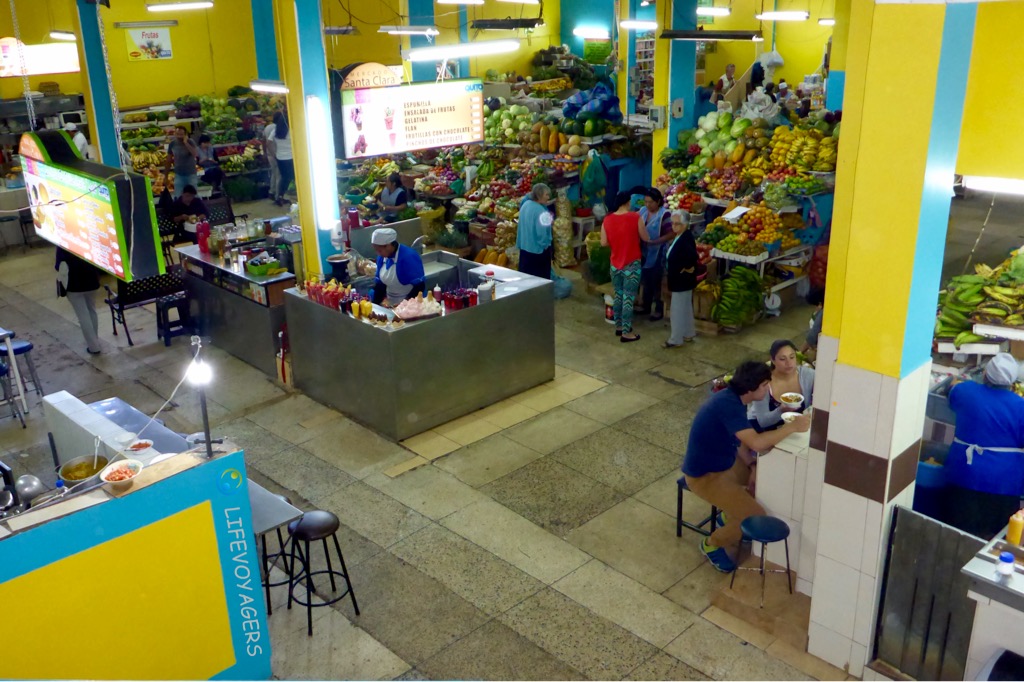
Food and veggie/fruit-stalls at Santa Clara Market, these show exactly what we love about exotic, foreign markets!
This strategy also means eating less shit (excuse my French), goodies are limited to chocolate with 70% cocoa and ready salted crisps, every now and then. Our breakfasts and dinners are also very repetitive in case we don’t cook (cost saving too!), in the evening often a salad does the trick or else for me intermittent fasting works very well, my body doesn’t like having to process food at night anyway. To cook ourselves is also cheaper when repetitive and more efficient too, variety is achieved by the varying veggie-, fruit-, meat-, legumes-, and fish-ingredients. Thus we are happy to find some countries where turkey ham is on offer (yes, it’s processed ;-)), that’s the case in Chile and Ecuador, but only pork ham available in Argentina and Colombia, not for us, in that case it’s cheese only on the sandwiches, all cheese over and above simple sliced cheese is mostly expensive because imported and therefore ignored by us, we are already looking forward to a nice cheese plate once back in Europe ;-))!
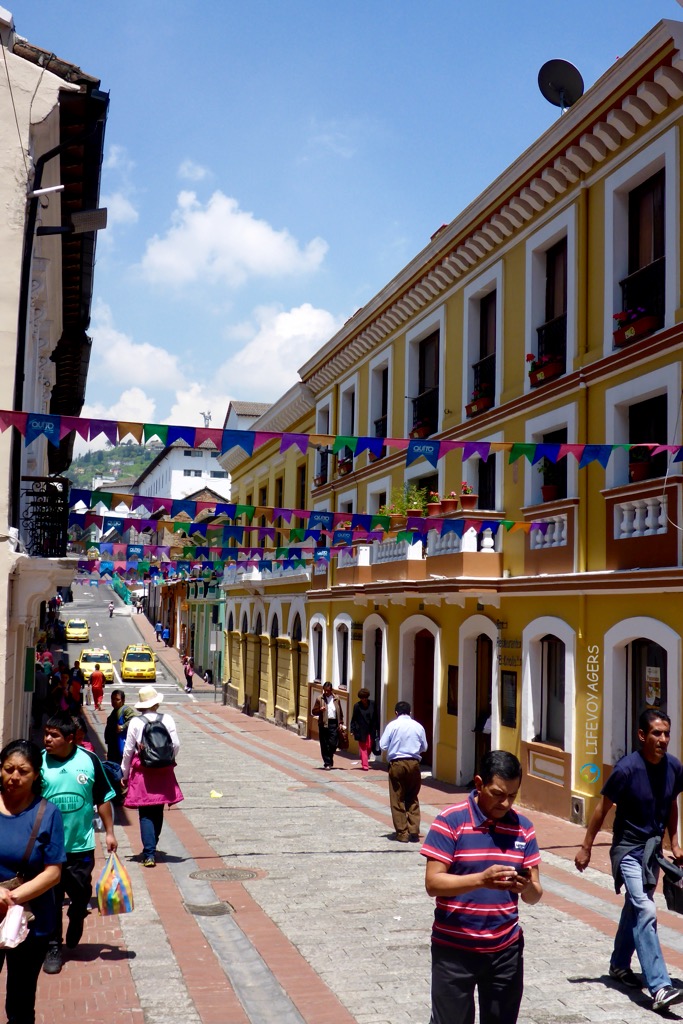
Some street views above and below of Quito, very diverse!
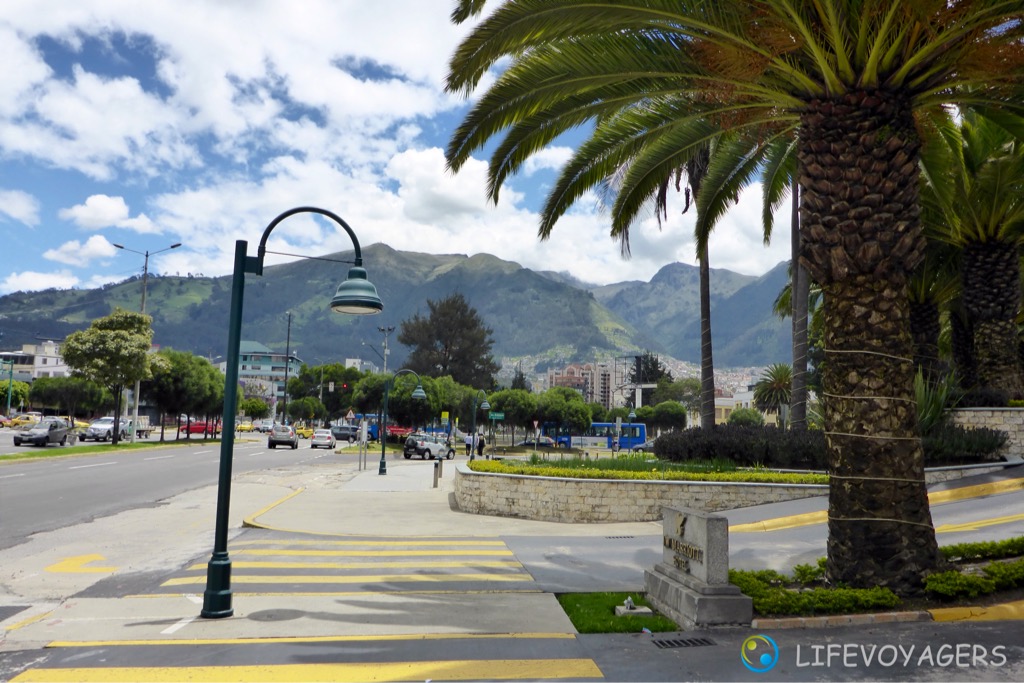
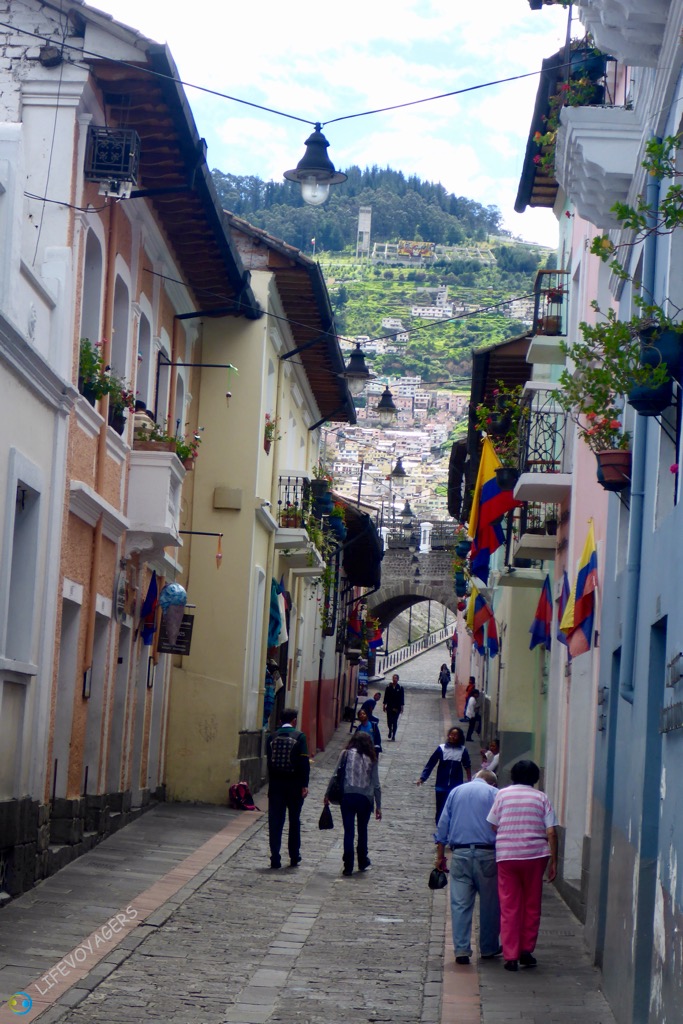
‘La Ronda’ street above, where both locals and foreigners like to spend a nice evening out!
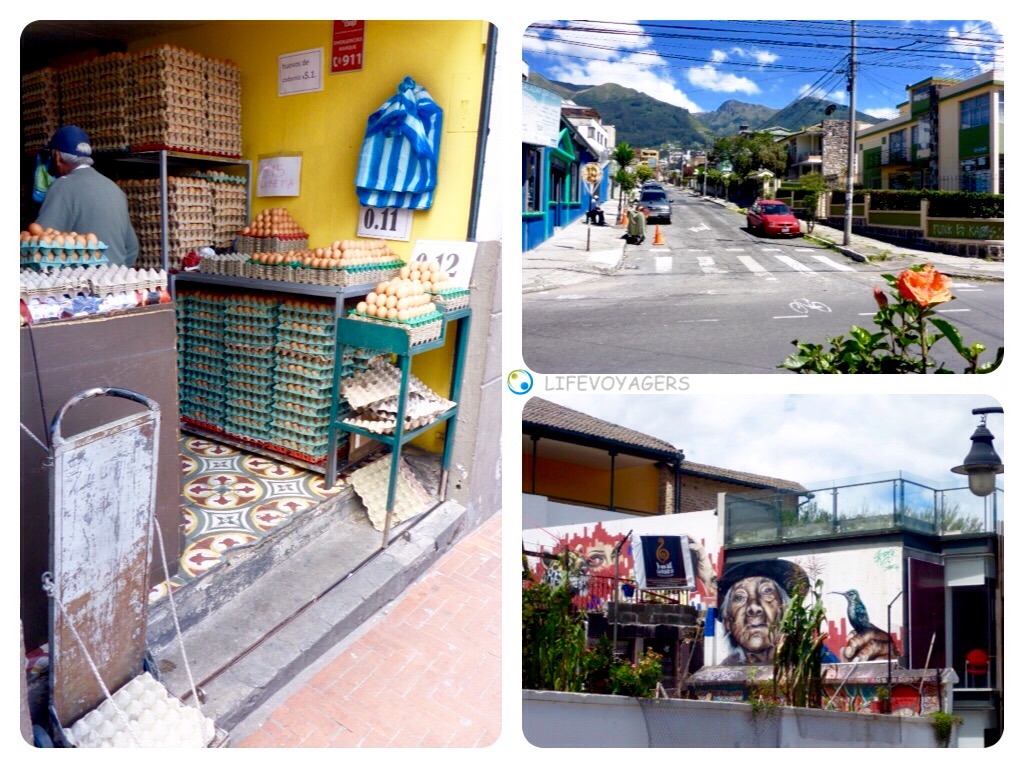
Left: unrefridgerated eggs galore…, top right: residential street just like ours with nice Hibiskus bushes in all colours along the sidewalks, bottom right: Street Art, of course to be found in Quito too!
What is more, we relish food so much that we have learned that we have to eat less, the more we are satisfied with the taste, this also helps with staying lean. The small cheese Arepa made from corn with guacamole in Bogotá proved so delicious that it was often enough for me for lunch, accompanied by a fresh Lulo- or Guanabana-Juice. Since most of us in central Europe are eating too much in total anyway, let’s face it, this is a good realization and development. Chewing longer and more intensively adds to that effect, try it honestly for one week, then most people are convinced by the increased pleasure and the bonus of being filled more quickly! Of course in these times we need less food for equaling out frustrations than in everyday life at home, I’m sure you know what I’m talking about… Most of our exploring is done on foot, so that adds a little physical exercise, apart from the resistance stretch exercises we do.
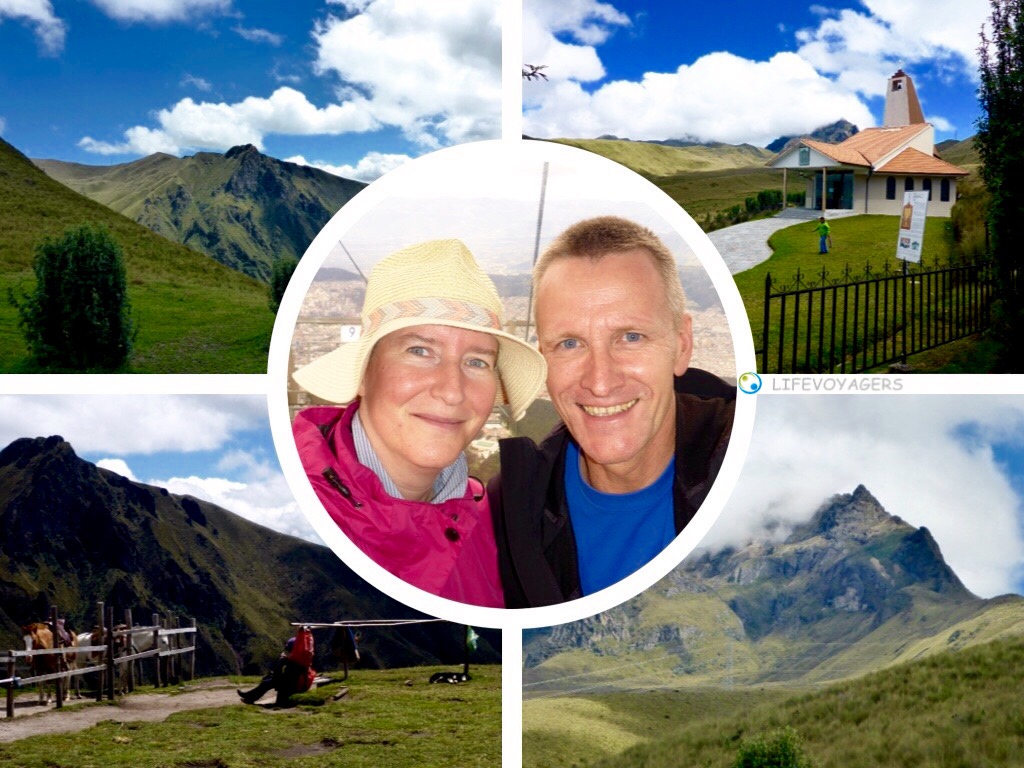
Amazing: These landscapes at just over 4.000 m above sea level are just a cable car ride away from traffic congested, polluted Quito, we just had to show you all the views (below) to the north and south of the city as well as the hinterland (above).
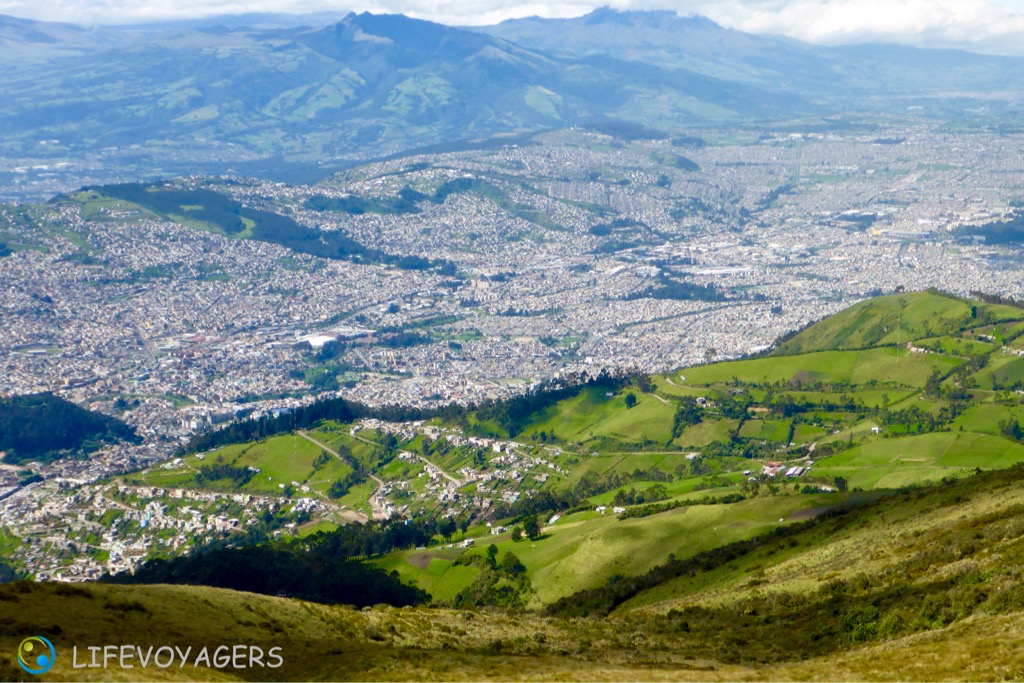
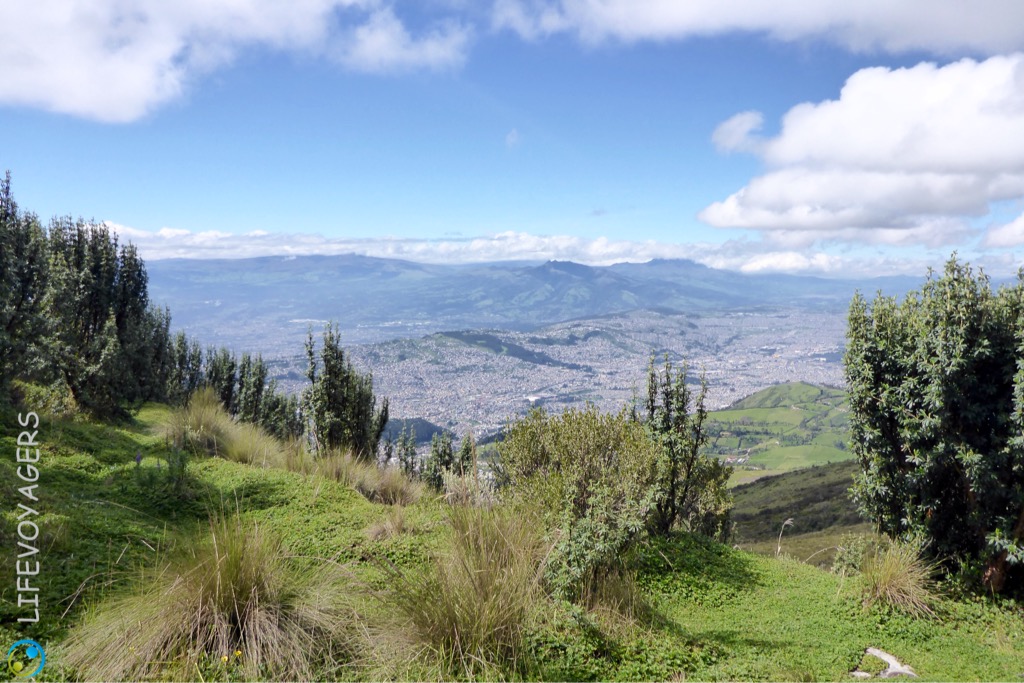
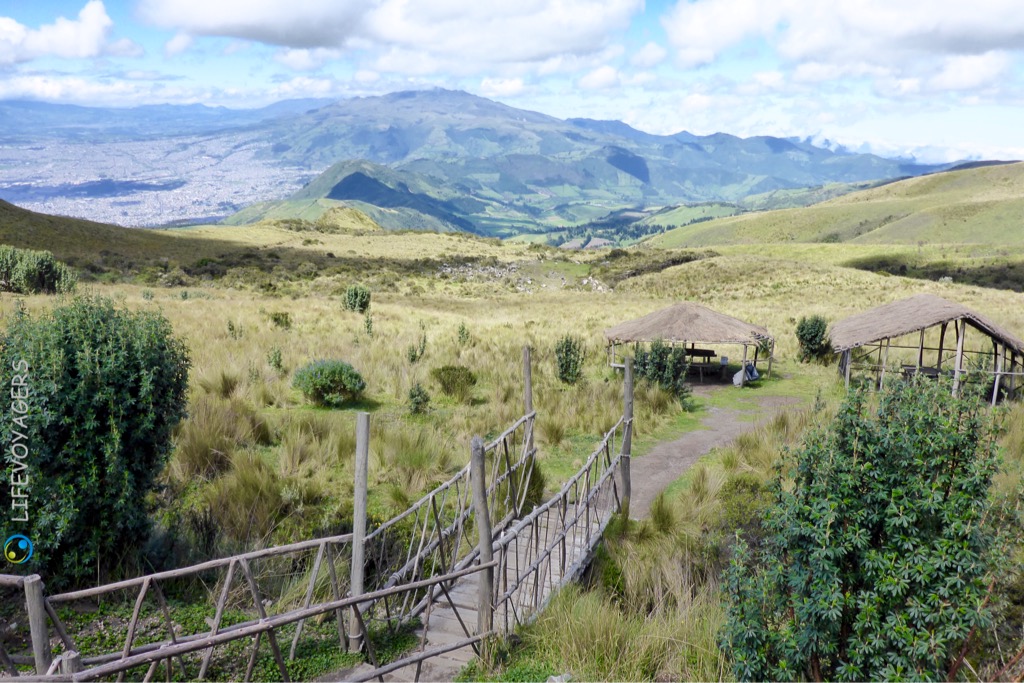
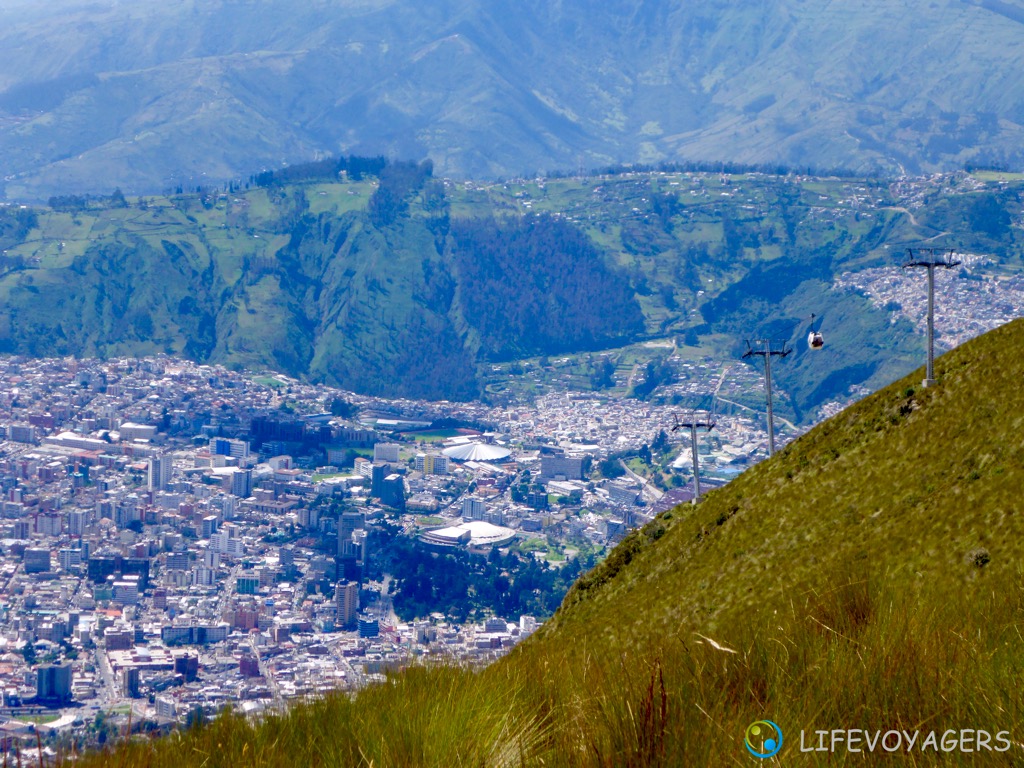
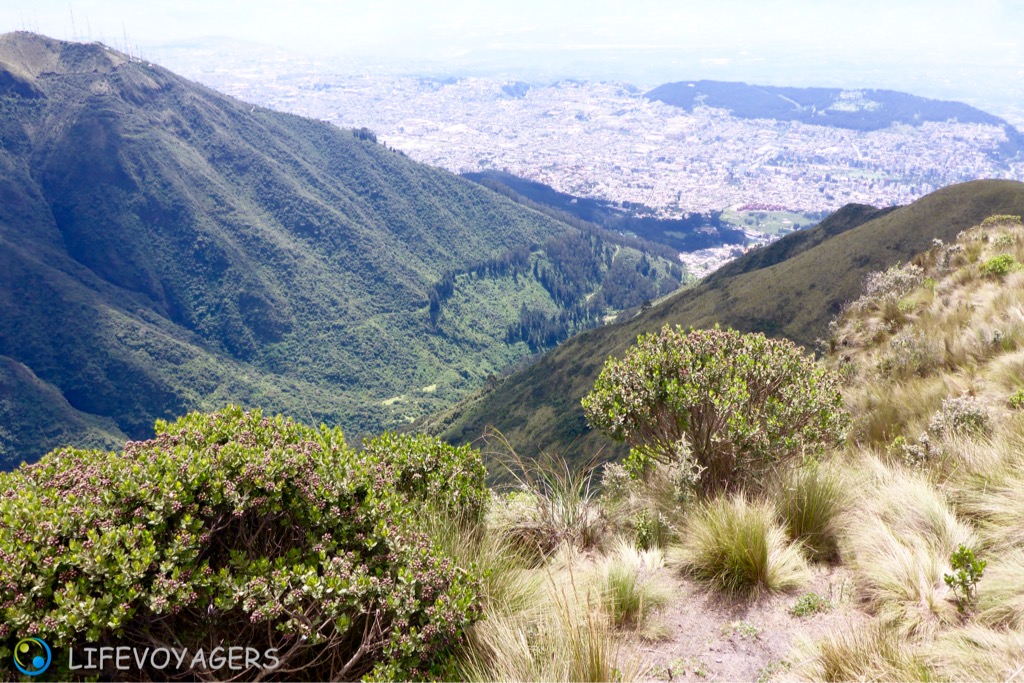
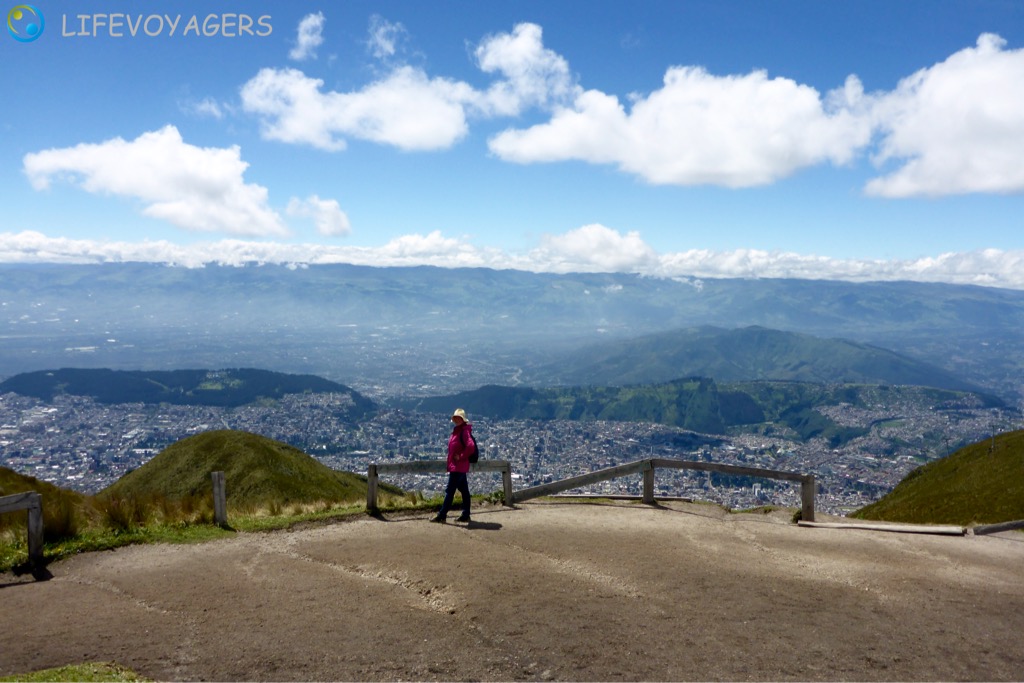
Sometimes it’s hard to believe… even for us! ;-)))
The mega blessing of this kind of everyday life is of course, in addition to all the exciting destinations, that we are absolutely free in planning our days ourselves, and to do everything together as a couple, both major parts of our desire to travel together for a longer period, and of course valuable beyond measure! But we also found out that this alone does not automatically cancel out any kind of stress different from everyday life at home, caused by being outside one’s comfort zone, but that we have to actively tackle this instead!
This won’t have been the last post telling about Quito, since we will have been here for five weeks once we leave next Tuesday, so watch out or else submit to our newsletter ;-))!
Thanks a ton for your continuing interest, take great care meanwile!
Kindest regards, hugs to all of you, Claudia & Carsten, Lifevoyagers
Lifevoyagers’ travel plans for 2016 completed!
Thursday, 28/04/2016
Before telling our tales from Quito we now provide everyone interested in the details with our completed travel plans for 2016, God willing of course, all booked already except a few single nights! For ease of reference we continue the list of destinations from Quito:
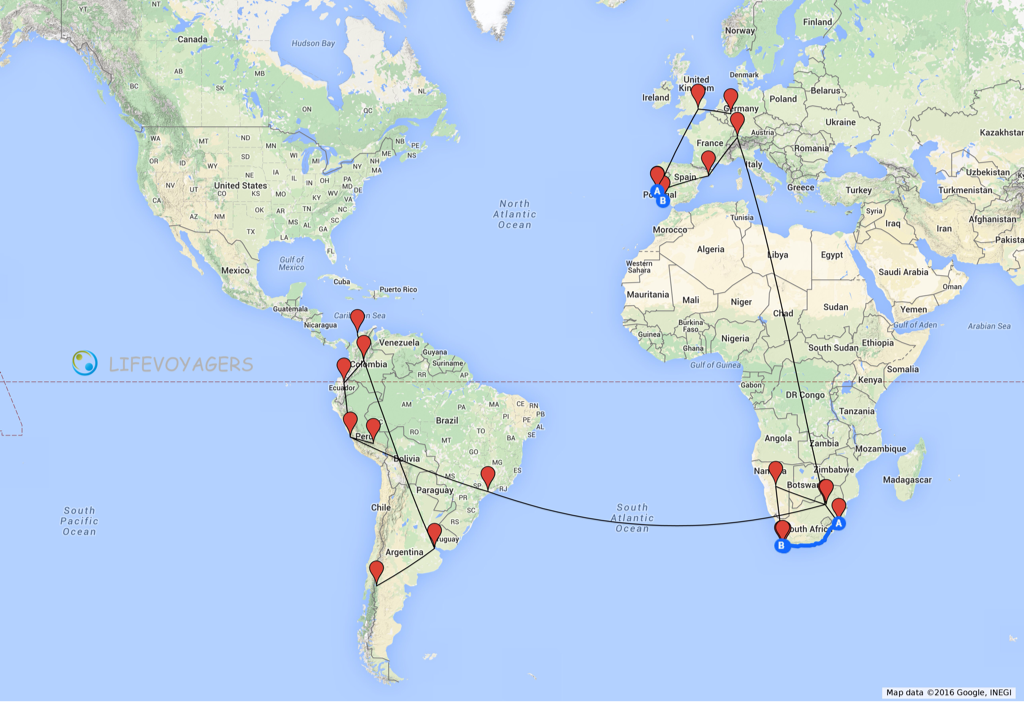
| Nights | From | To | Destination |
| 35 | 12.04. | 17.05. | Quito, Ecuador, inc. 1 week rental car (collecting Air Miles!) for day trips to Andean villages |
| 17.05. | Flight Quito – Lima, Peru, Avianca (Star Alliance, collecting Air Miles!) | ||
| 14 | 17.05. | 31.05. | Lima, Peru, Airbnb accommodation i |
| 31.05. | Flight Lima – Cusco, LAN, transfer to Ollantaytambo | ||
| 31 | 31.05. | 30.06. | Ollantaytambo, near Machu Picchu, sacred valley of the Incas, Workaway for a little board and full bed ;-)), Hotel, family owned |
| 30.06. | Flight Cusco – Lima, LAN | ||
| 5 | 30.06. | 05.07. | Lima, Peru, Airbnb Accommodation |
| 05.07. | Flight Lima – Sao Paulo, Brazil, Avianca, (Star Alliance, collecting Air Miles!) | ||
| 20 | 05.07. | 25.07. | Sao Paulo, Brazil, Airbnb Accommodation |
| 25.07. | Flight Sao Paulo – Johannesburg, South Africa, South African Airways, fully booked on Air Miles, Carsten Business Class, Claudia Economy Class ;-)) | ||
| 26.07. | Flight Johannesburg – Durban, within the same booking on Air Miles!! | ||
| 5 | 26.07. | 31.07. | from Durban, South Africa, to Sans Souci Farm, via Garden Route, rental car (collecting Air Miles!) |
| 28 | 01.08. | 29.08. | Sans Souci Farm, near Strand, Cape Town, Workaway for bed and board at Sancssouci Farm |
| 29 | 29.08.- | 27.09. | Llandudno, near Cape Town, Airbnb accommodation, rental car (collecting Air Miles!) |
| 27.09. | Flight Cape Town – Windhoek, Namibia, South African Airways (Star Alliance, collecting Air Miles!) | ||
| 19 | 27.09. | 16.10. | from Windhoek, Namibia, Roof-tent-4×4-rental car tour around Namibia a deux, via www.erlebe-namibia.de (plus two more days, website in German I’m afraid!) |
| 16.10. | Flight Windhoek, Namibia, – Johannesburg, Südafrika, South African Airways (Star Alliance, collecting Air Miles!) | ||
| 9 | 16.10. | 25.10. | Johannesburg, South Africa |
| 25.10. | 26.10. | Flight Johannesburg – Zurich, Swiss Int. Airlines (Star Alliance), fully booked on Air Miles, Carsten Business Class, Claudia Economy Class ;-)) | |
| 26.10. | Flight Zurich – Barcelona, Swiss Int. Airlines, within the same booking on Air Miles!! | ||
| 28 | 26.10. | 23.11. | Barcelona, Spain, Airbnb-Accommodation in the Born quarter |
| 23.11. | Flight Barcelona – Lisbon, TAP (Star Alliance, collecting Air Miles!) | ||
| 22 | 23.11. | 15.12. | Azinheiro near Faro, Algarve, Portugal, rental car (collecting Air Miles!), known accommodation |
| 15.12. | Flight Lisbon – London Heathrow, TAP (Star Alliance, collecting Air Miles!) | ||
| 5 | 15.12. | 20.12. | London, UK, Travelodge City Airport, London at Christmas time! |
| 20.12. | Flight London Stansted – Cologne Bonn Airport, Germanwings (Star Alliance, collecting Air Miles!) |
Fini for now! ;-))) All Air Miles collected after booking the Jo’burg-Zurich-Barcelona-Flight on Air Miles, we’re already collecting for our next journey, all other flights regularly paid!
For those of you who are counting: Yes, that are no less than 20 single one way flights this year in total, which for sure is a lot. But seen from a different angle these are 10 return flights and we indeed did manage to accumulate that number from Hamburg in some single years in the past: holidays, city trips, business trips. What is more, 4 of these one way flights, among them the two intercontinental flights, have been paid by Miles-and-More Air Miles, so we paid only the taxes. That results in an average price per leg per person of 123 Euro, a very reasonable price, particularly because it is valid also for the long haul flights and also for the Business Class flights for Carsten! Again, admittedly that’s no small absolute amount either, but then again one that DINKS (double income, no kids) sometimes spend for one three week luxury package holiday in the Carribbean! What’s the moral?: it is worth collecting miles (no matter how long it takes), and is not as un-doable as one should think! For one, such an amount might be saveable (no matter how long it takes), but also it might not be necessary to move as often as we do, perhaps not at all once at your dream destination, and also the means of transport can be different (by bus or by car bought and afterwards sold locally). What we’re saying is: in case somebody really wants to do something like this, it’s more feasible than one tends to think! More regarding accommodation and living costs another time…
Having received another offer for another short term assignment in Singapore is worth a short note, unfortunately we had to turn it down because of it being on very short notice, for the beginning of 2016 we had already offered it mid of last year! Too late!
Our motive for the stays in Barcelona, Portugal, and London from end of October is for one to slowly approximate ourselves to the winter weather, and also to include our favourite places in Europe, even if others would have spent that time at more exotic destinations, we can already hear the arguments… ;-)), but this guarantees us full satisfaction and closure, and, as a dear friend of ours always says: our decision! ;-))
Soon we’ll be back with our impressions of Quito! Thanks a lot for for accompanying us and taking an interest, that’s very much appreciated!
Love to you all, take care, we do too,
Claudia & Carsten, Lifevoyagers
Tropical Cartagena, and farewell Bogotá!
Wednesday, 20/04/2016
Cartagena, on the tropical Caribbean coast of Colombia, today still profits from its colonial past and the countless pirate attacks it suffered from, hence the necessity for vast weir systems. Somehow forgot how tiring the tropics can be without aircondition, so booked an AirBnB room in a flat shared with the very nice owners, but conditions sadly hardly bearable, so swapped for a room in the local Holiday Inn Express, no more compromises, a true exception, but what a treat and what a relief! So we’re actually getting old now, since we can no longer stand tropic climate?! But see for yourself, keeping in mind that the sweltering, humid heat cannot be seen in fotos…
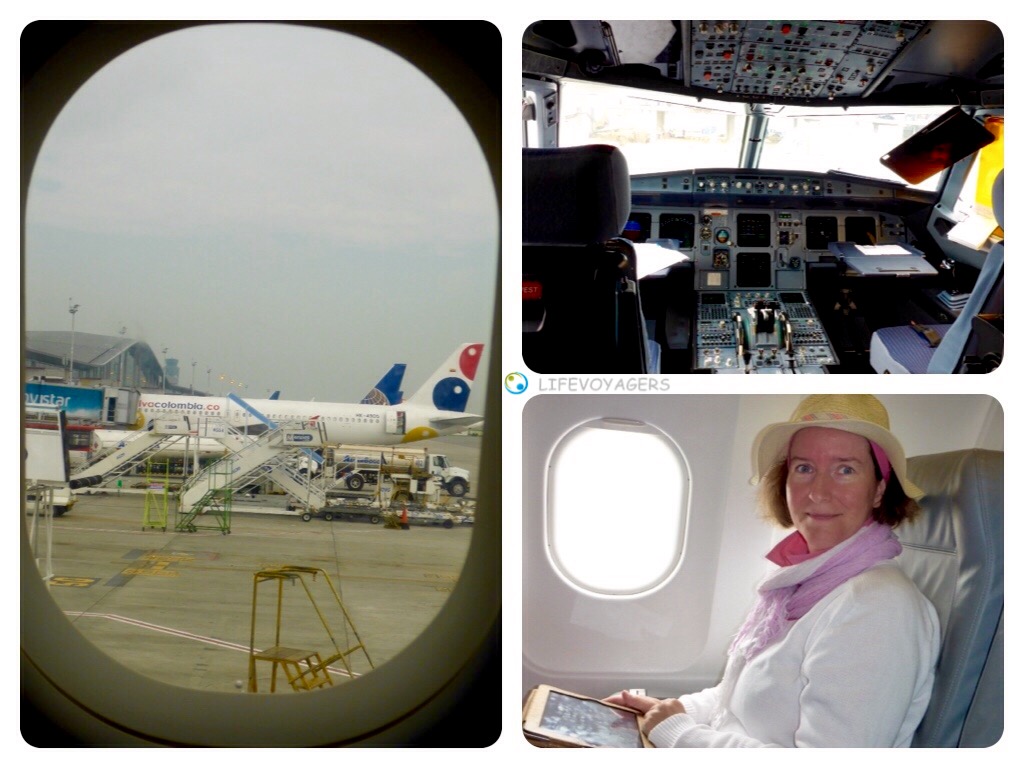
Viva Colombia was very punctual, no booked seats, first come first serve, got the first row accidentally (last in the bus, first out), plenty legroom for hubby, all fine!
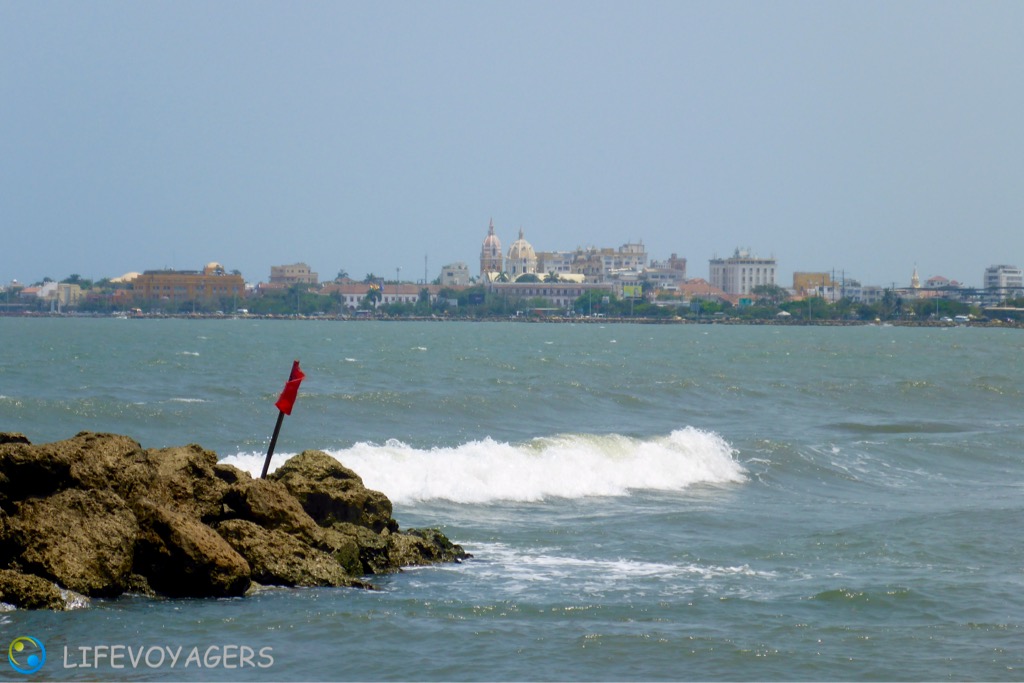
Old town of Cartagena from the other side of the bay
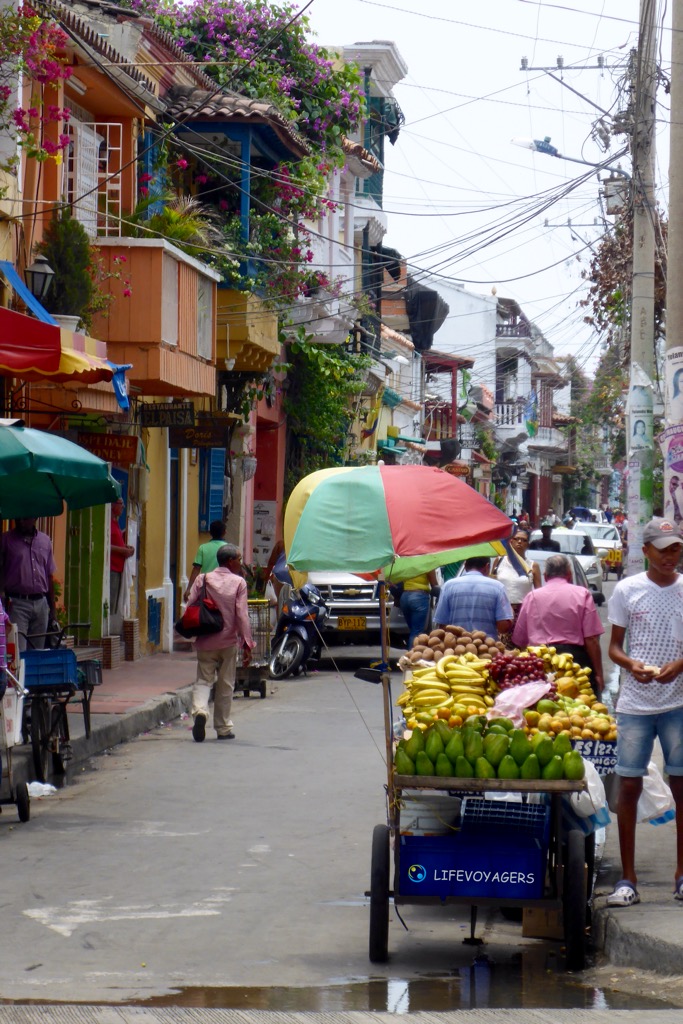
Outside the city wall Cartagena of course feels more ‘real’, order and cleanliness deteriorating with increasing distance from the old town, waste being a particular issue in the tropics with their banana-leaf-mentality: Just throw it behind you, worked for ages, why shouldn’t it work with our waste today too? A big problem…
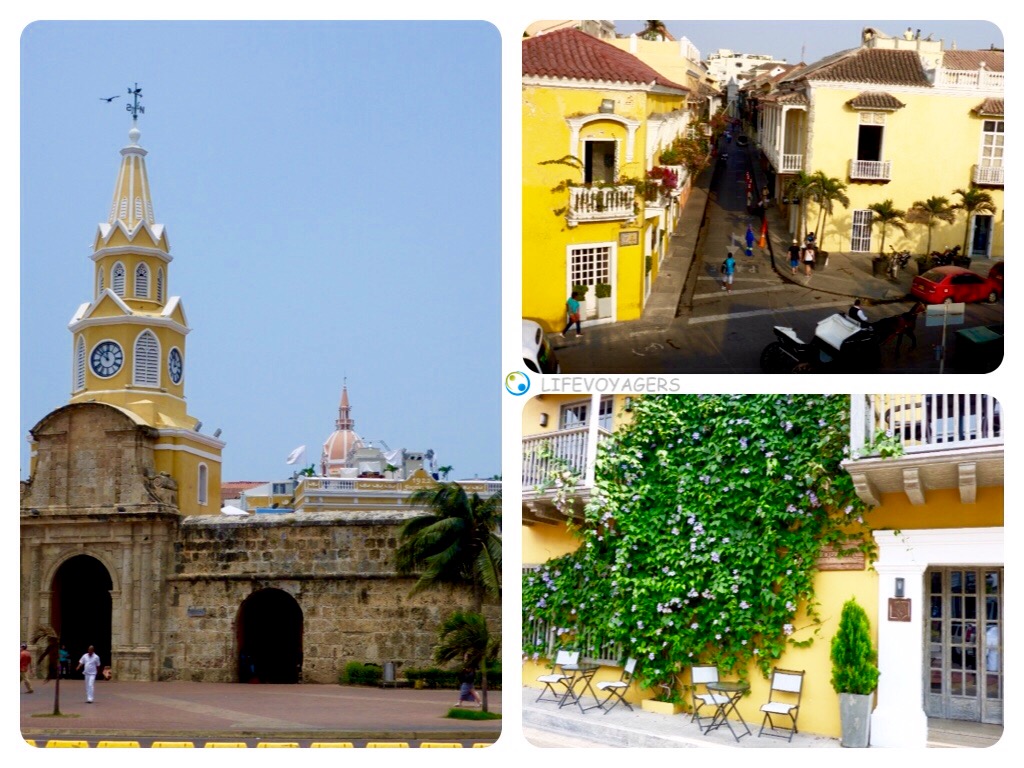
The old town on the other hand is very picturesque and a joy to discover!
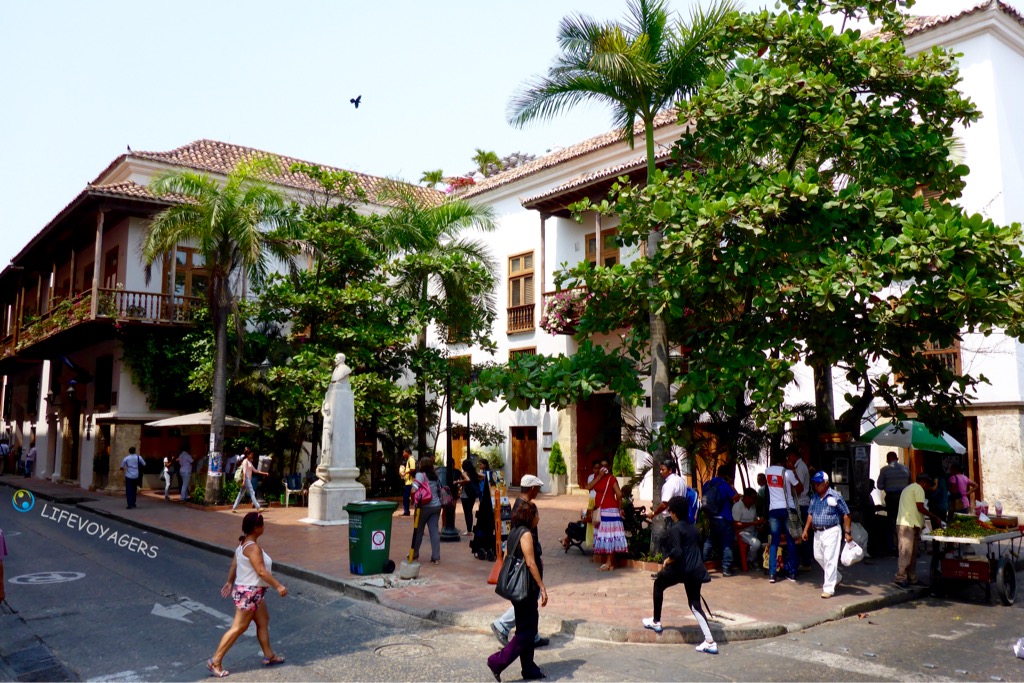
Could be in Singapore too, at first glance, couldn’t it? We liked this little square a lot.
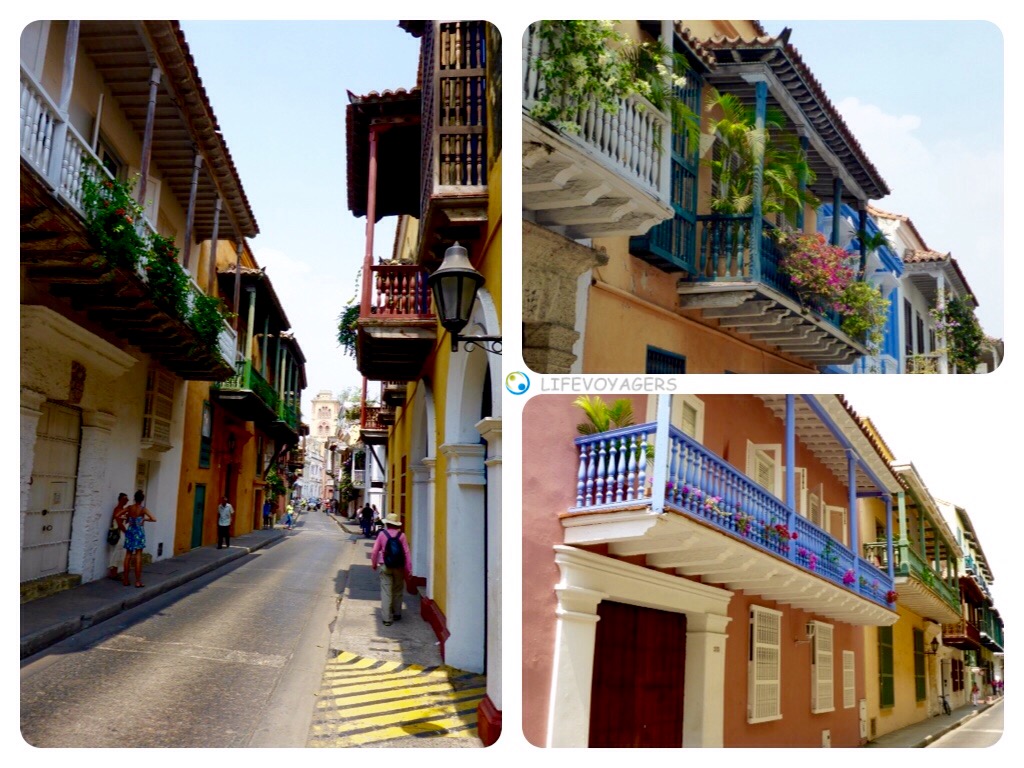
More beautiful scenery, but the lady with the black backpack keeps crashing Carsten’s photos!
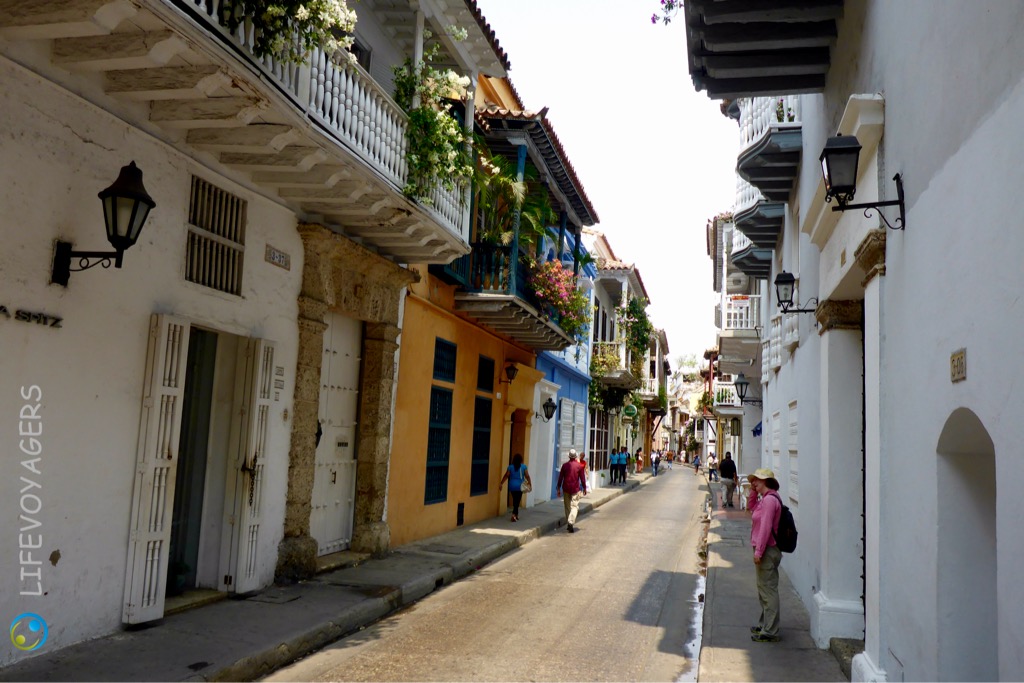
Oops, she did it again! A little tired, are we? ;-))
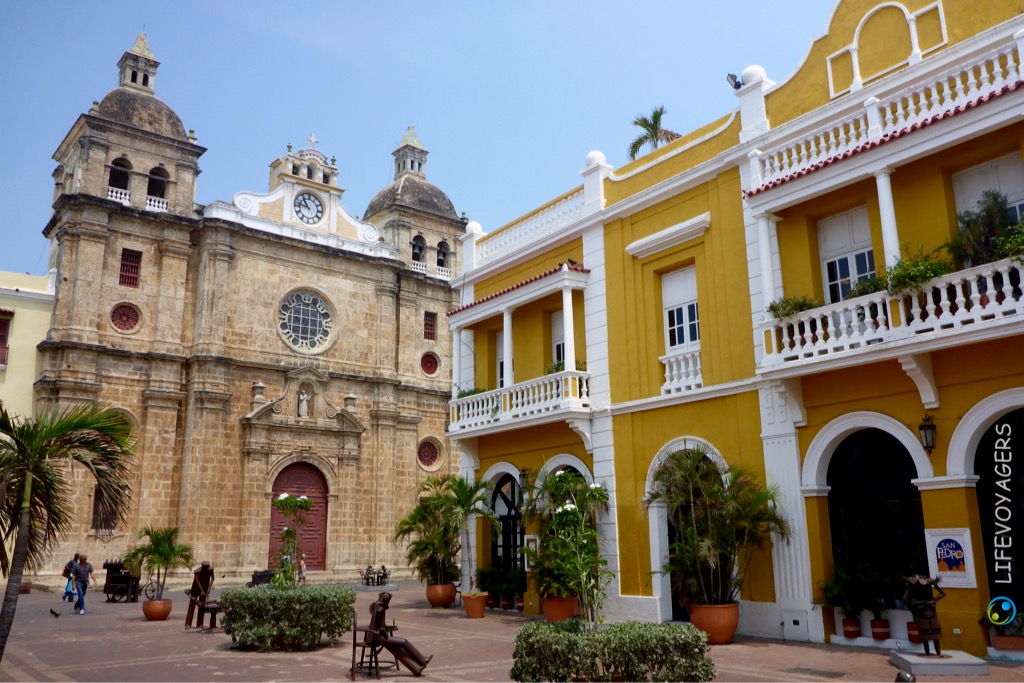
Above and below: Cathedral San Pedro de Claver proved to be an educating oasis in the old town, since Pedro de Claver was the saviour of many slaves in his times!
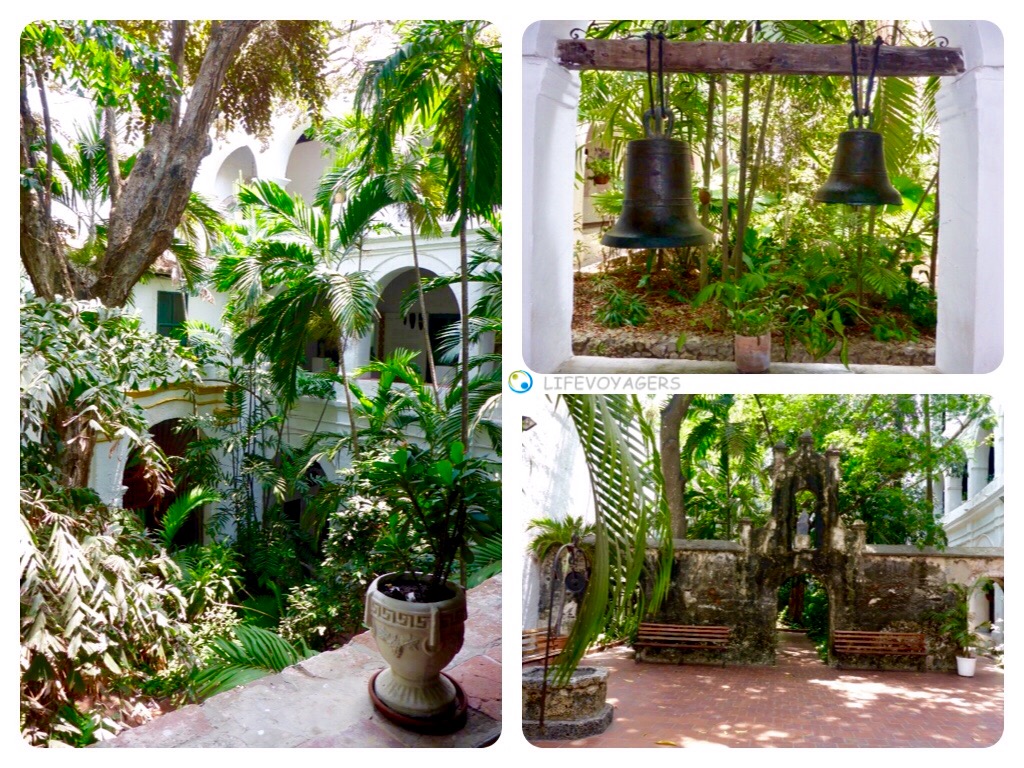
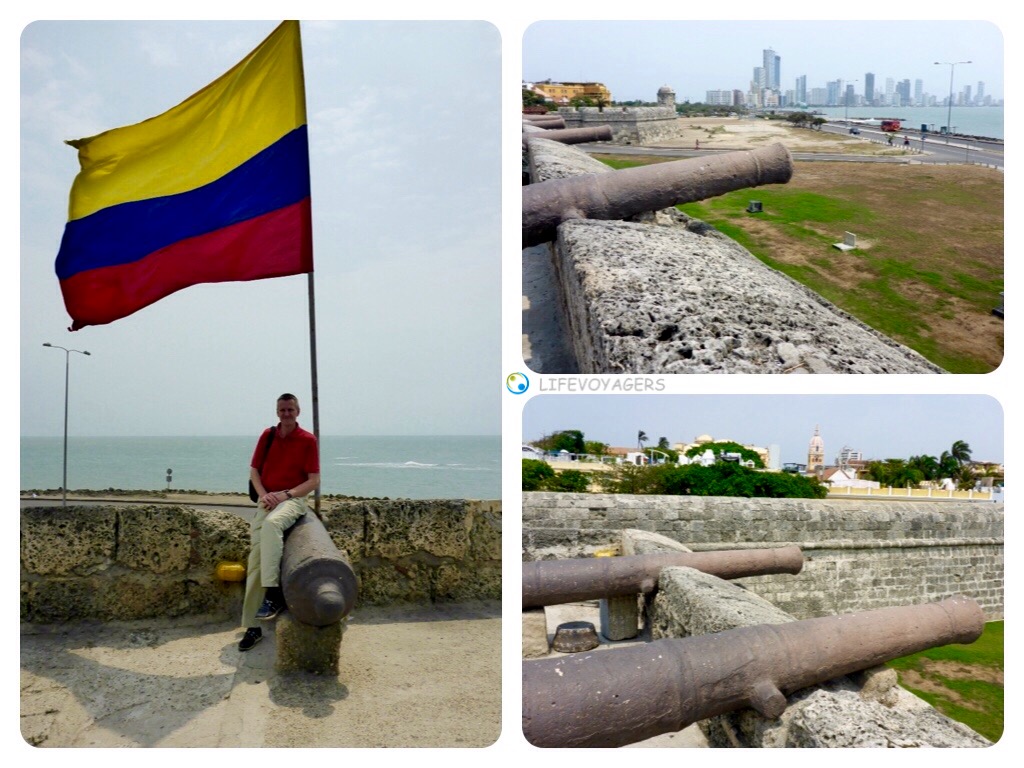
Above and below: impressing city wall and weir systems with beautiful views, hubby honouring Colombia by wearing matching shirt ;-)). We definitely fealt reminded of Pirates of the Caribbean (my very own pirate of course my favourite ;-))
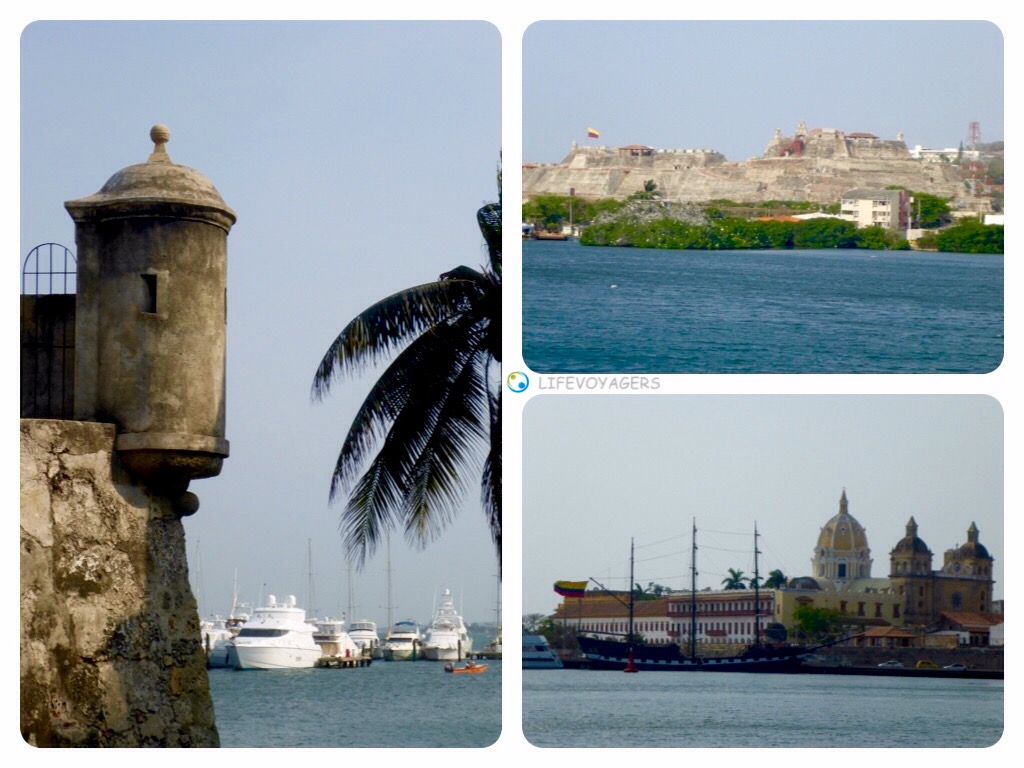
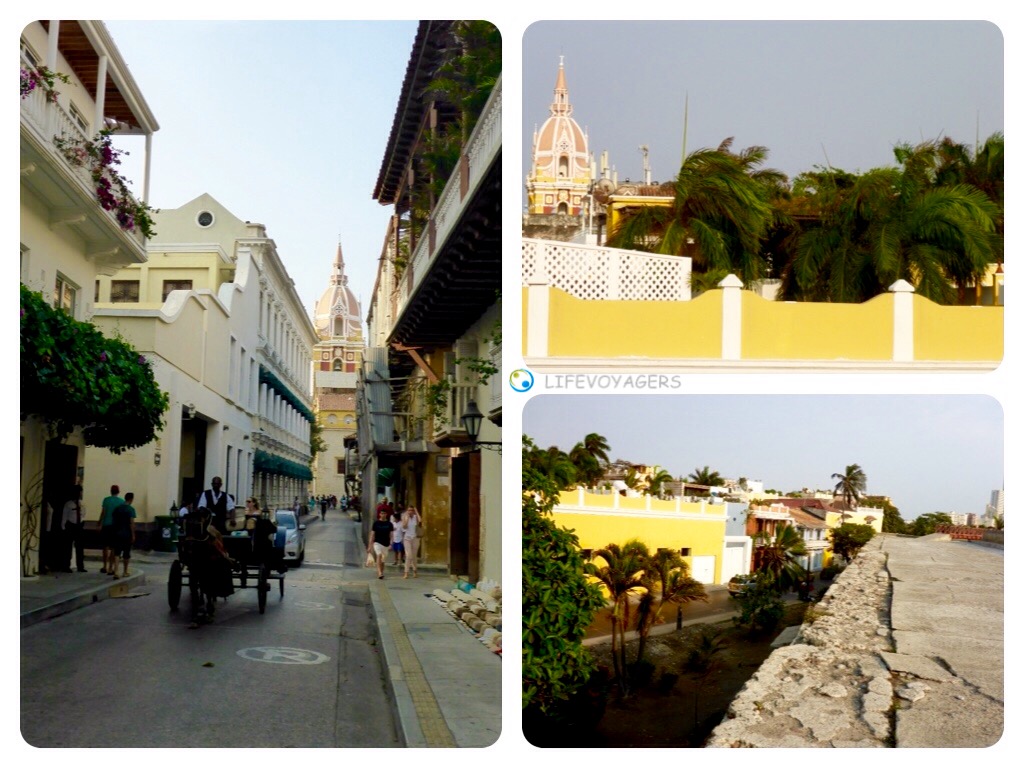
At sunset the views are even more beautiful!
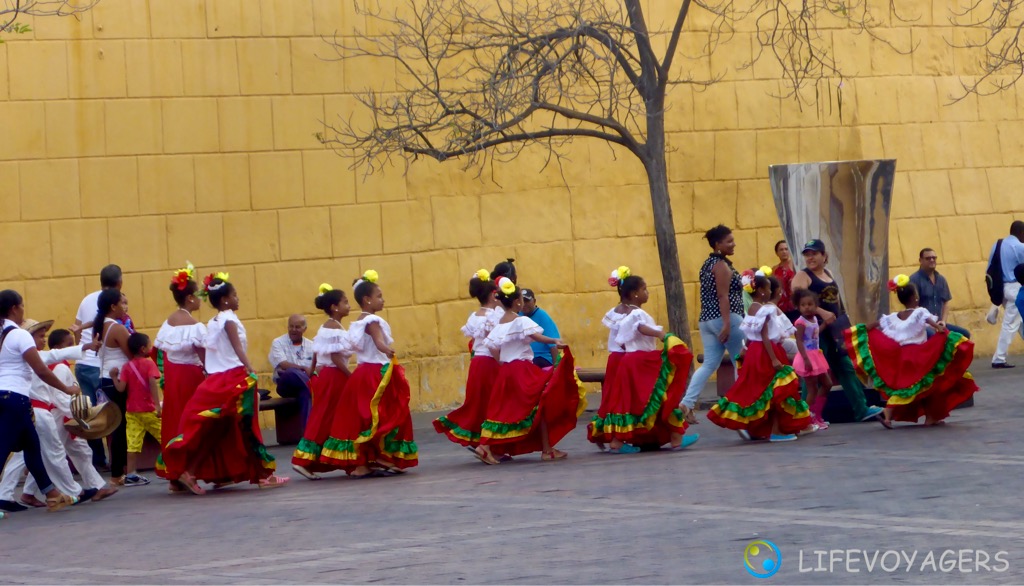
These wonderful little ladies were part of a youth contest the public didn’t get to watch…?! Happy to have caught them on their way to the stage though!
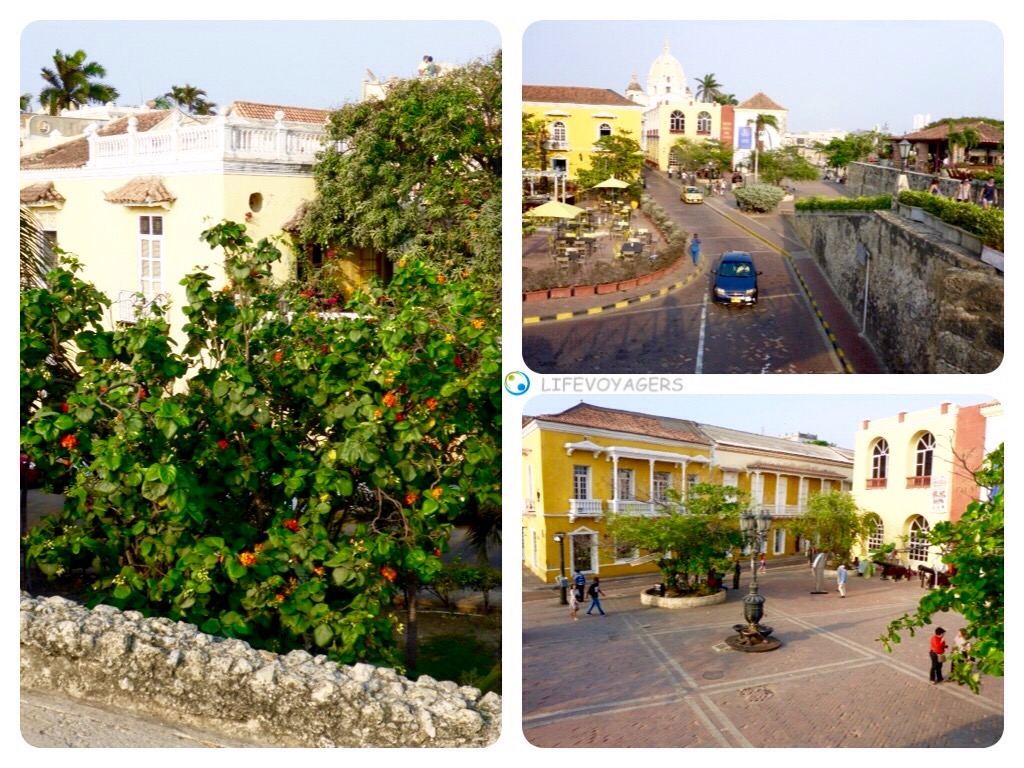
You just cannot stop taking photos…
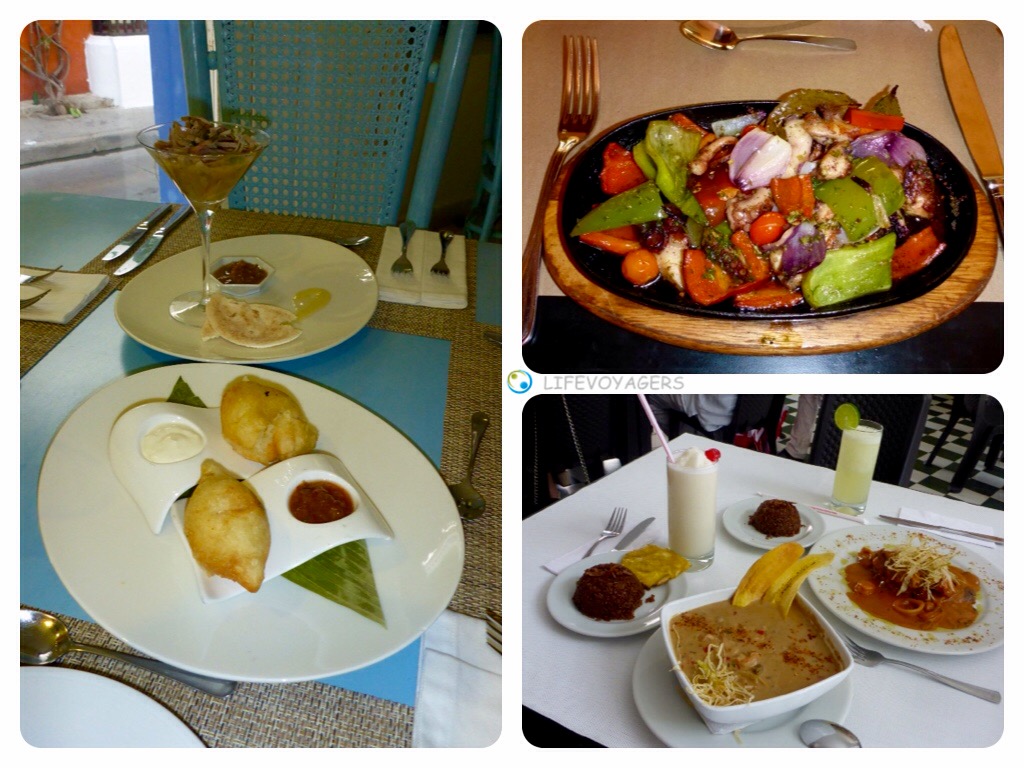
Left: restaurant ‘La Comunion’, the best find in Cartagena, with lots of yummy naturally gluten free dishes and a bunch of different local aromas, top right: restaurant ‘Pepe Anca’, lovely grilled octopus and veggies, bottom right: restaurant ‘La Cocina de Cartagena’, yummy seafood stew and surf & turf steak, with coconut rice, patacones made from plantain, accompanied by Limonada and Limonada de Coco! Three more restaurants/cafés recommended by us in Cartagena: Carbon de Palo, La Olla Cartagenera, Choco Museo
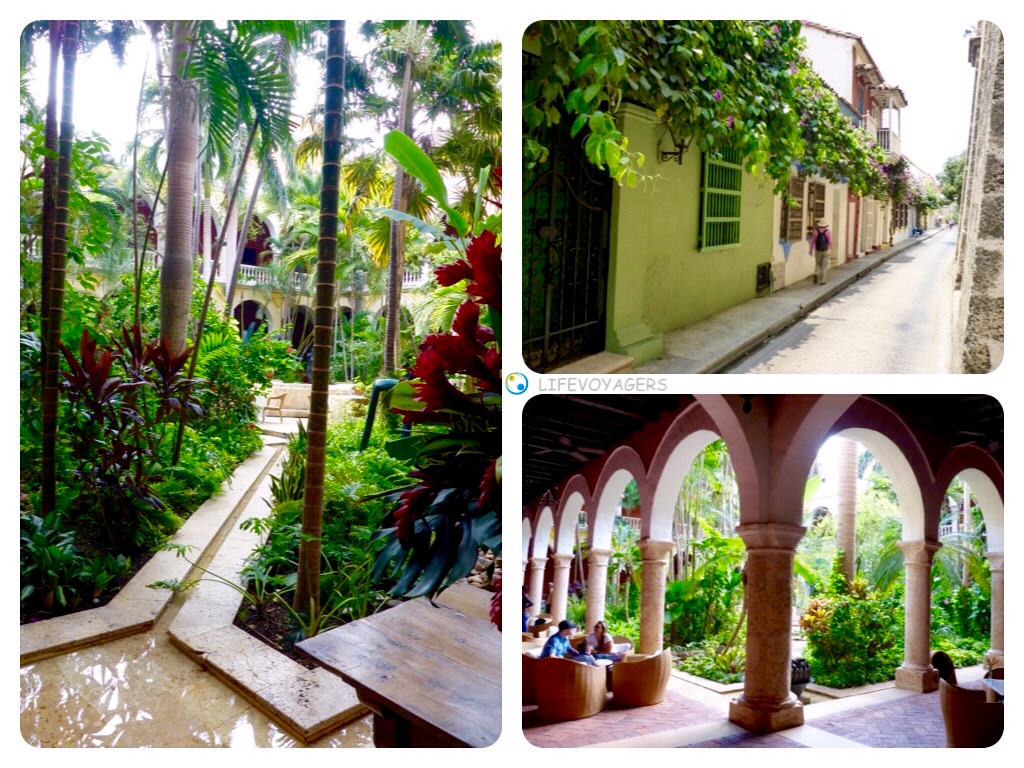
The courtyard of the Sofitel Hotel in Cartagena old town (remember the shared-tonic-water-concept from two blog posts ago? Go and look at those five stars, it’s fun!!), courtyards were fun throught Cartagena and Bogotá, always good for a nice surprise!
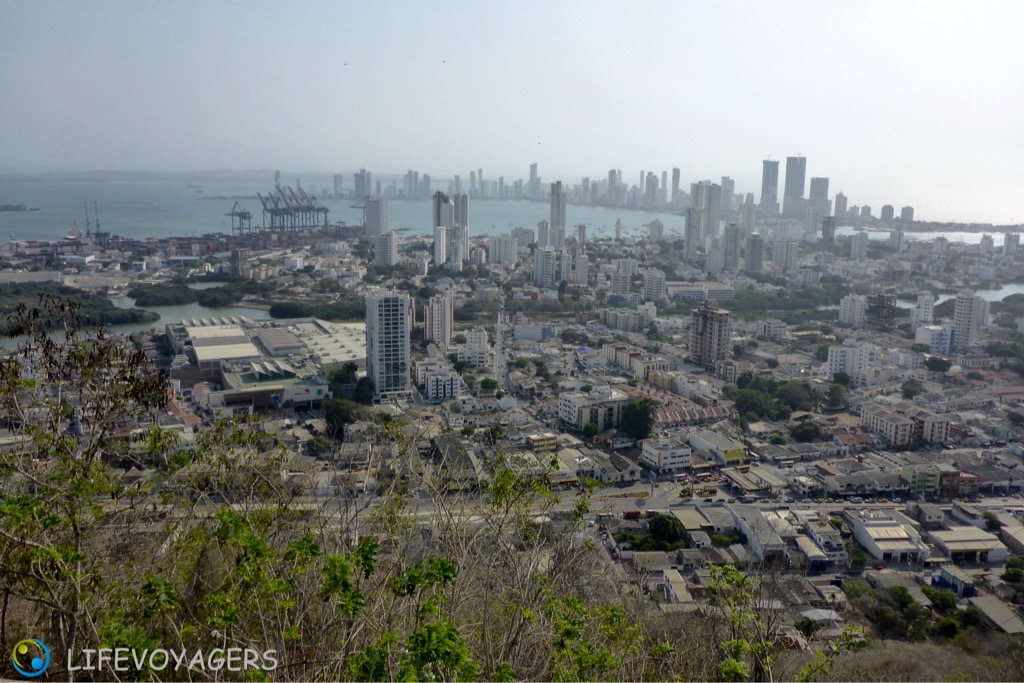
Above and below: View from the Convento de la Popa, an old monastery above Cartagena, with, you got it, its beautiful courtyard. Got lucky because no taxi to be had down to town (walking is not recommended due to danger of robbery), local tour bus driver of a booked group actively offered a lift for the same amount! Certainly would not have happened in Germany!
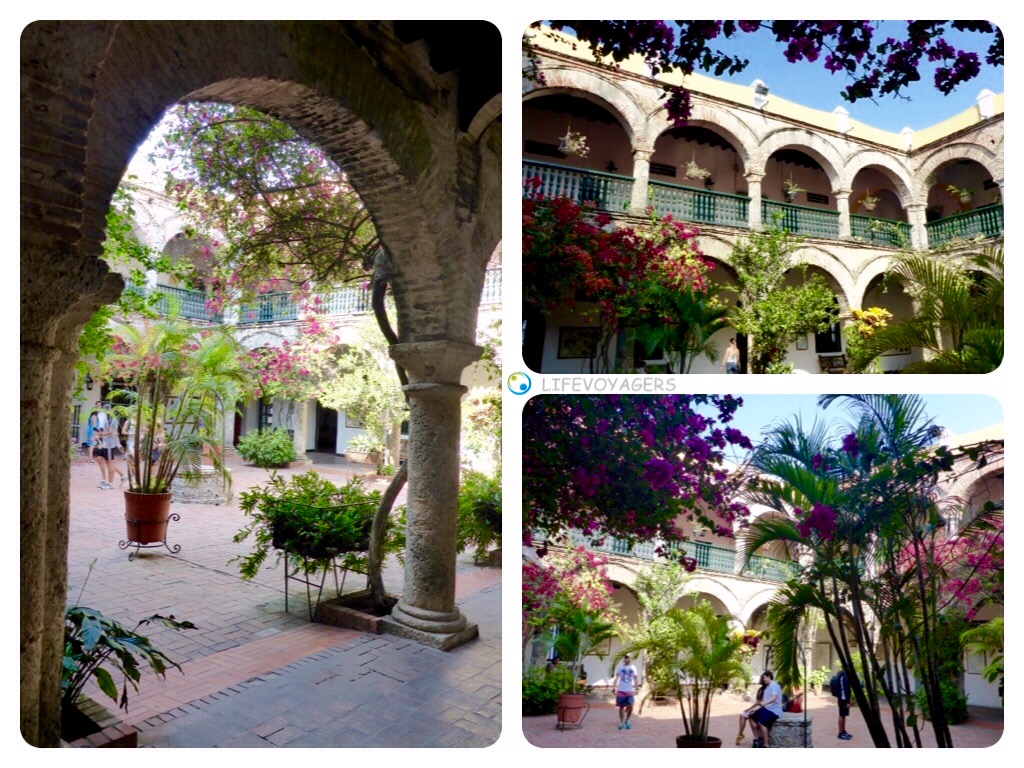
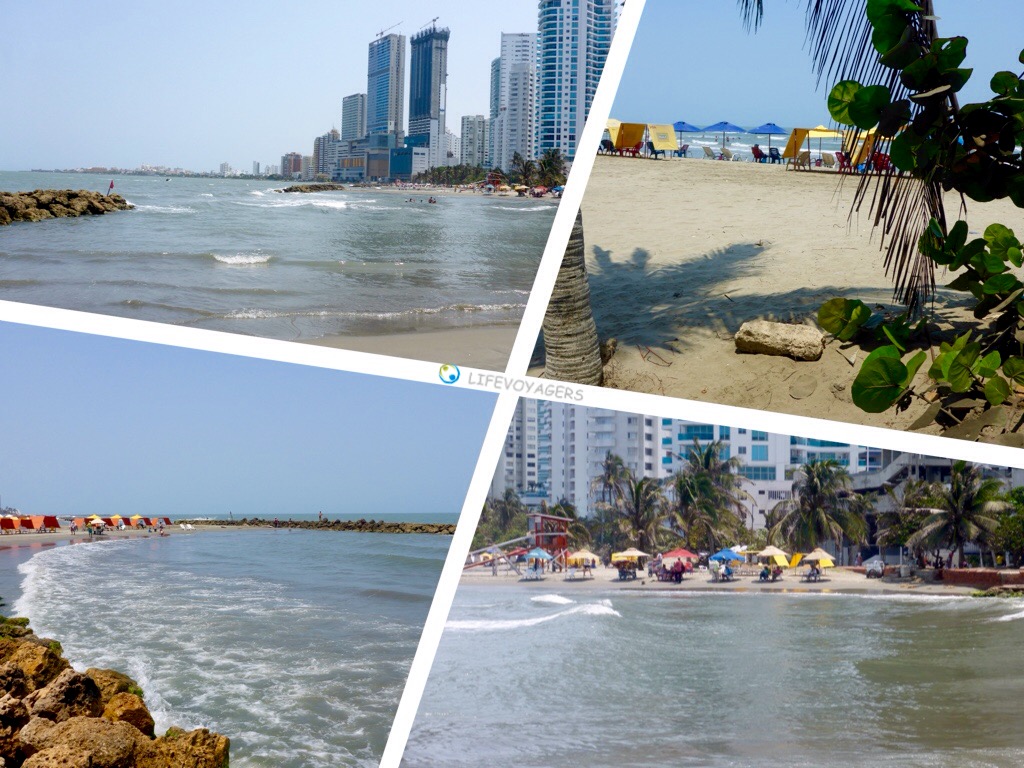
Yes there are even Caribbean city beaches in Cartagena! Of course some islands also aren’t far, but with us not being beachy people…
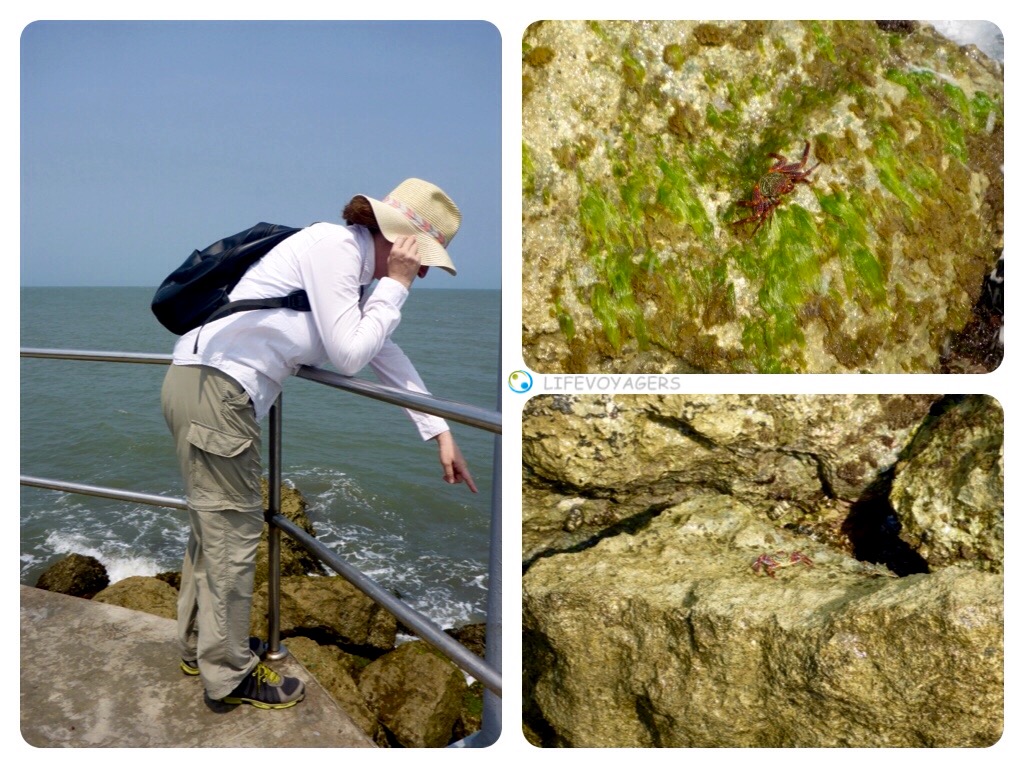
Is she going to jump? But all these crabs are just too cute and beautiful!
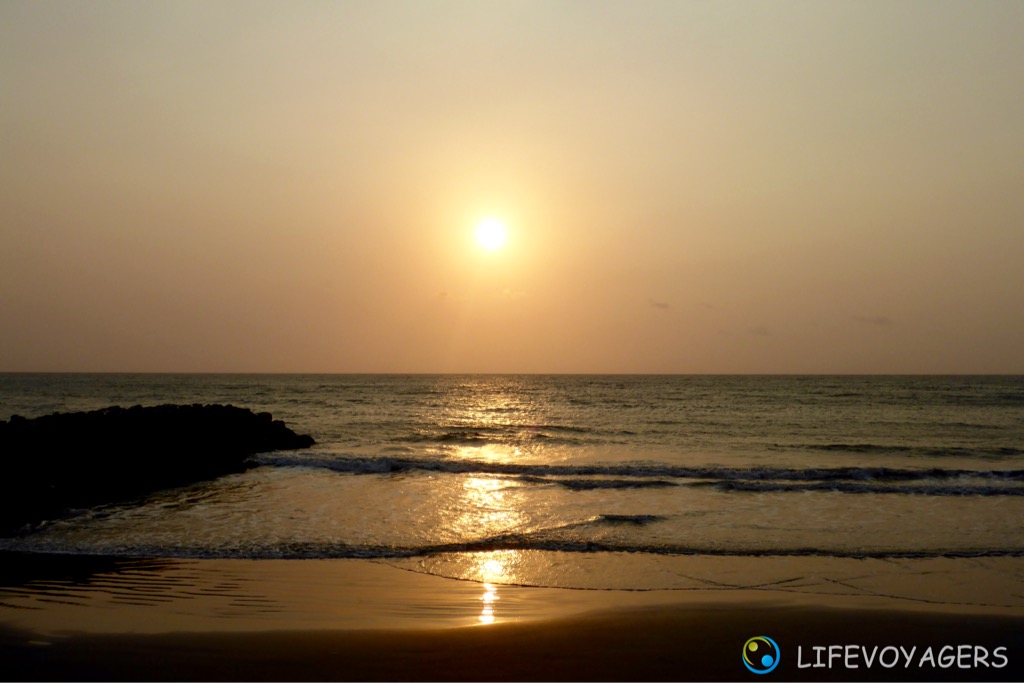
Our favourite time at the beach, if at all! Good bye Cartagena, thanks for the lovely stay!
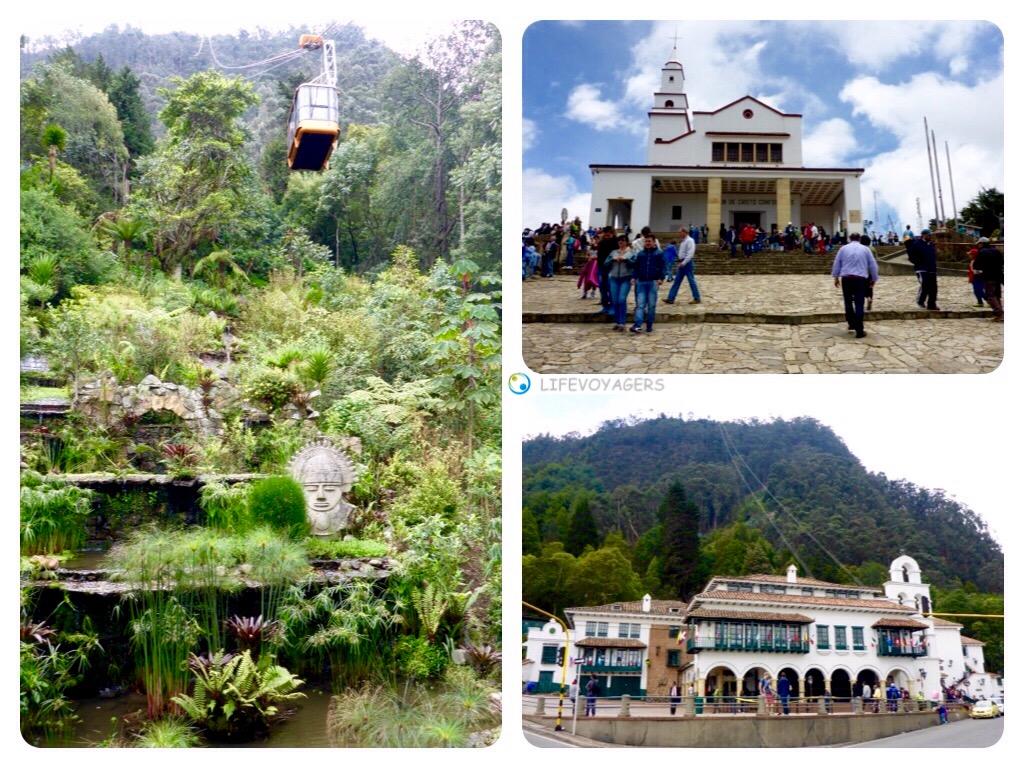
Above and below: Back in Bogotá Cerro Monserrate was still on our personal bucket list, and it certainly was well worth visiting!
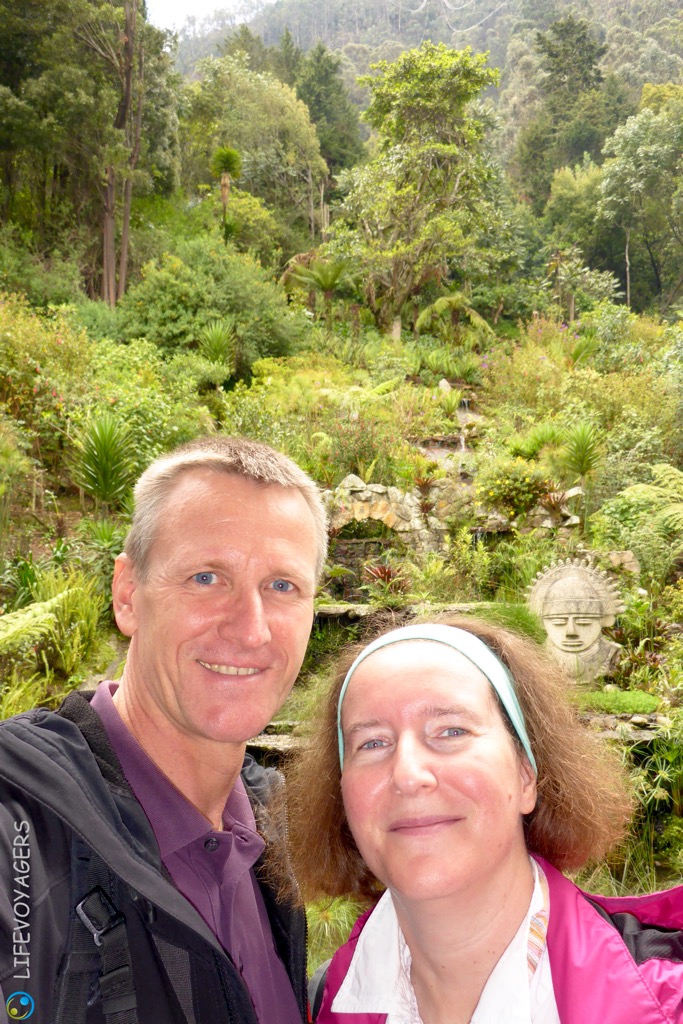
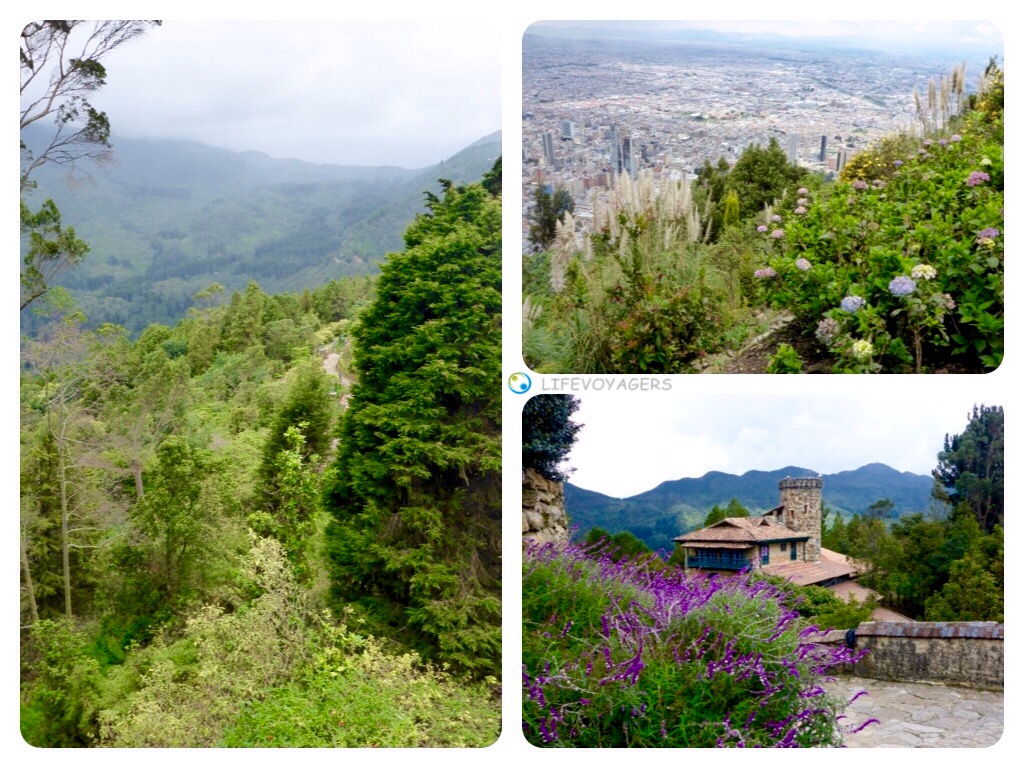
The views both towards Bogotá and towards the hinterland were breathtaking!
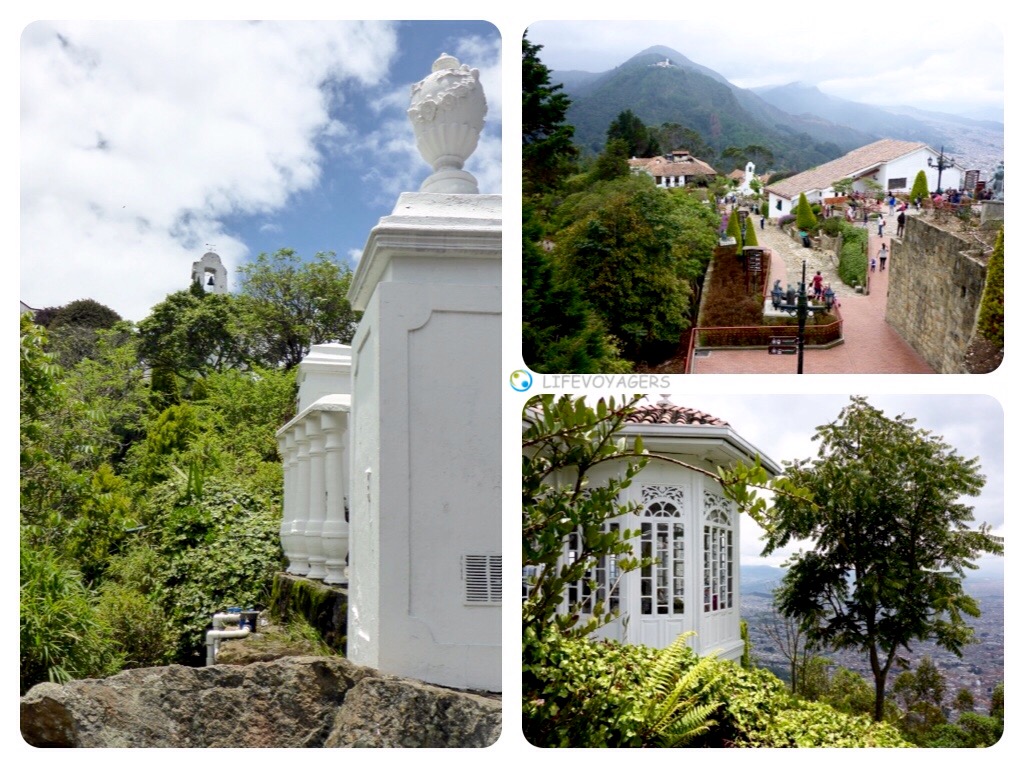
Above and below: restaurant Santaclara in beautiful architecture, apparently rebuilt here and originally from another part of town, of course studying the menu in depth is a serious issue as you can see… ;-))
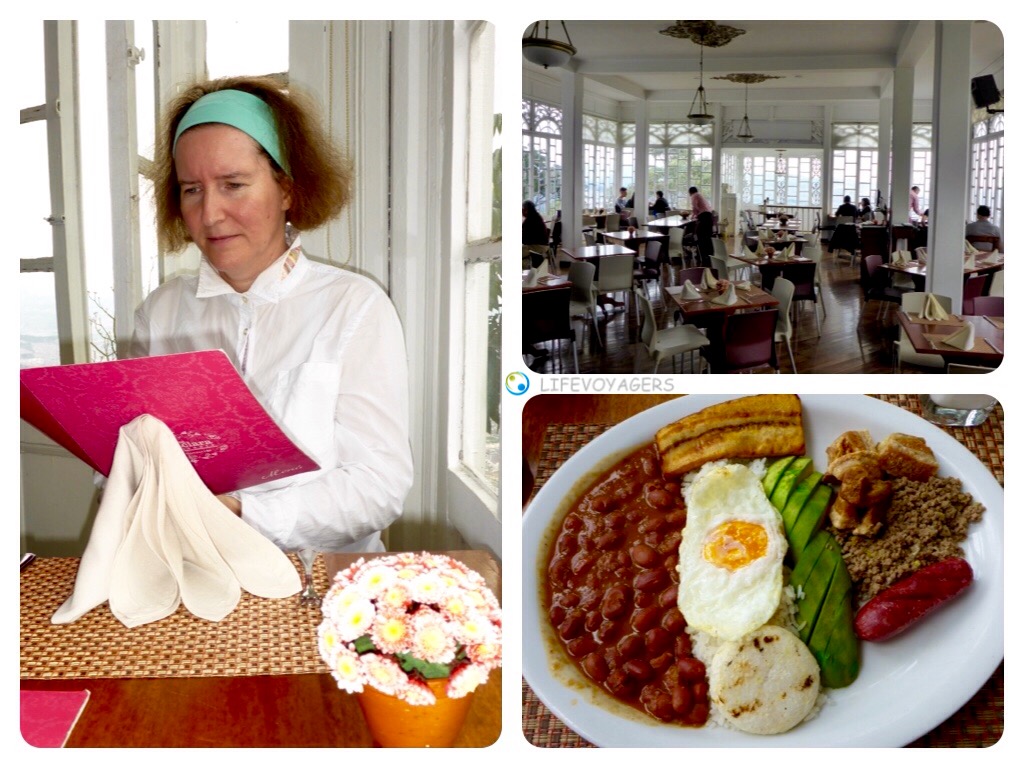
… and the typical local dish Bandeja Paisa filled me for the rest of the day!
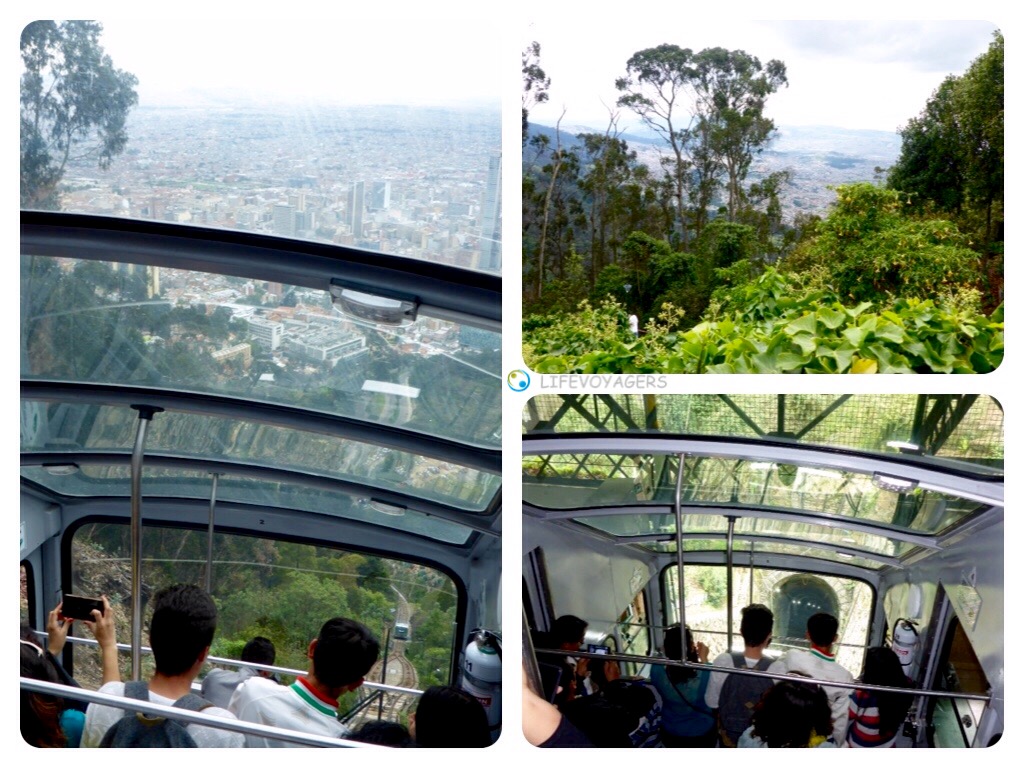
Up with the teleferic, down with the funicular, exciting!
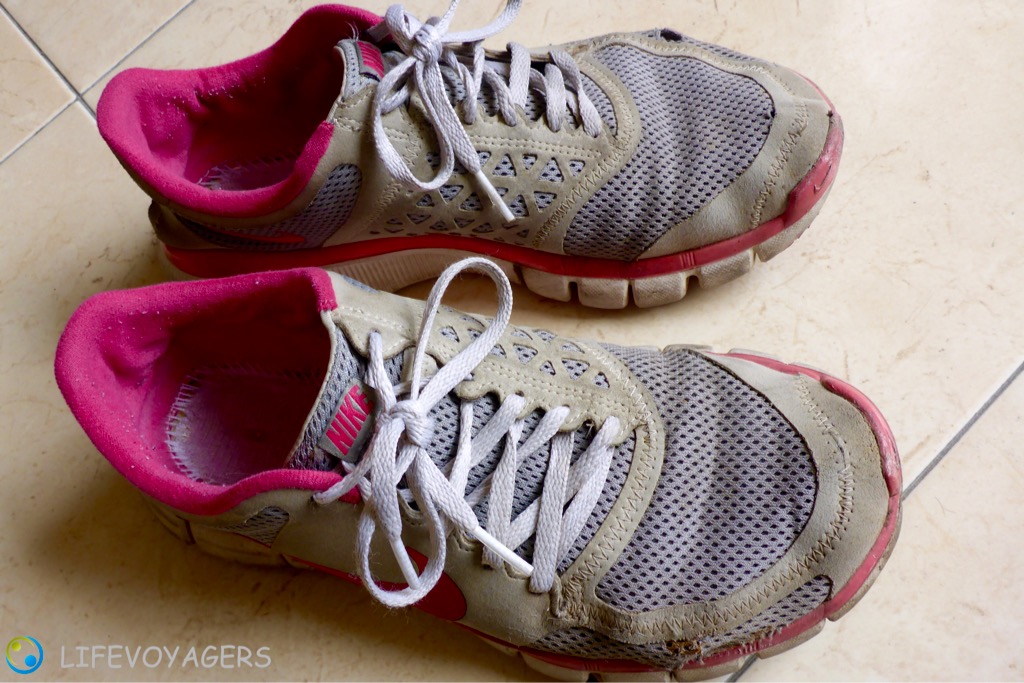
It’s difficult to show in a photo, but my wonderfully comfortable Nike free of a long past and no longer to be had generation now had so many holes, with the worst of them already repaired and opening again, that I had to trash them… A pity of course in many respects, and of course I should have bought more sustainable shoes anyway, but there you are… I’m afraid the equally unsustainable replacement, a bargain in Bogotá, can be seen in the crab photo above…
Thanks and bye bye Bogotá and Colombia, like to nearly everywhere we hope to come back one day and explore more, hello Quito and Ecuador, we’re excited! Meanwhile we can already say that we were very blessed to be 200 km from the epicentre of the earthquake, so we were swayed but didn’t suffer damage, other than the victims on the coast of Ecuador, we’re, as always, extremely thankful!
Thanks a ton also to all of you interested in what we’re experiencing, take care meanwhile!
Kindest regards, love to you all,
C&C, Lifevoyagers
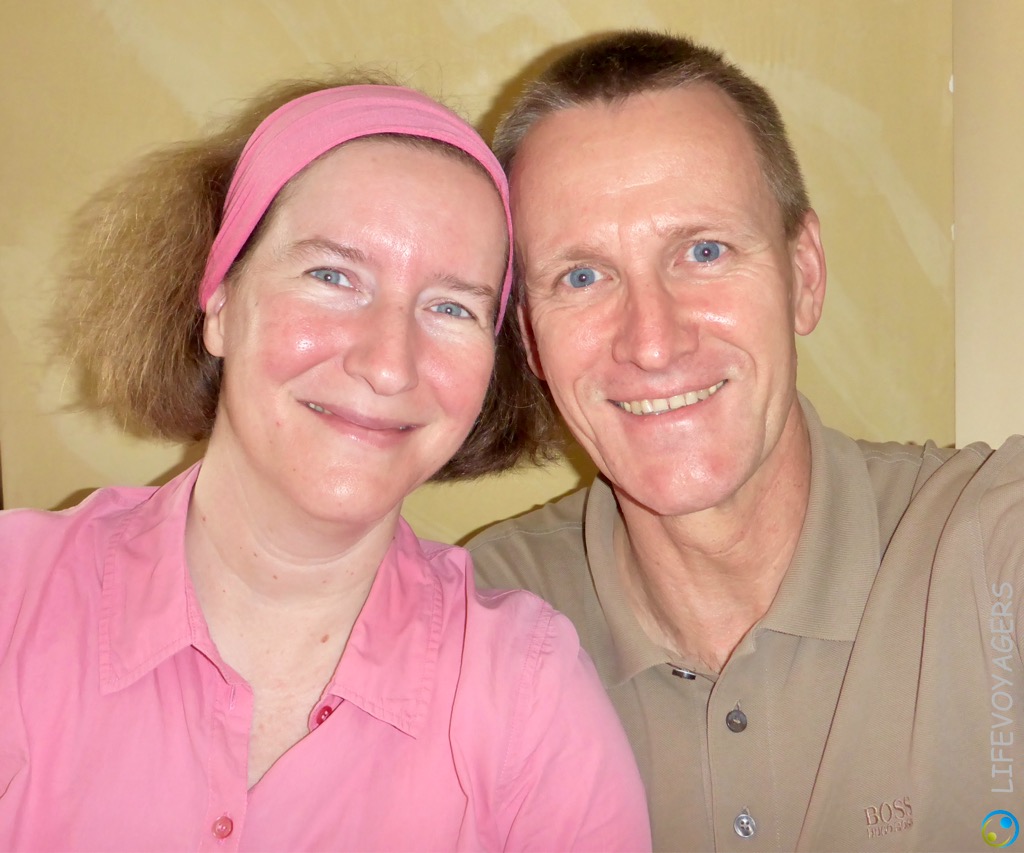
Bogotá, Colombia!
Monday, 04/04/2016
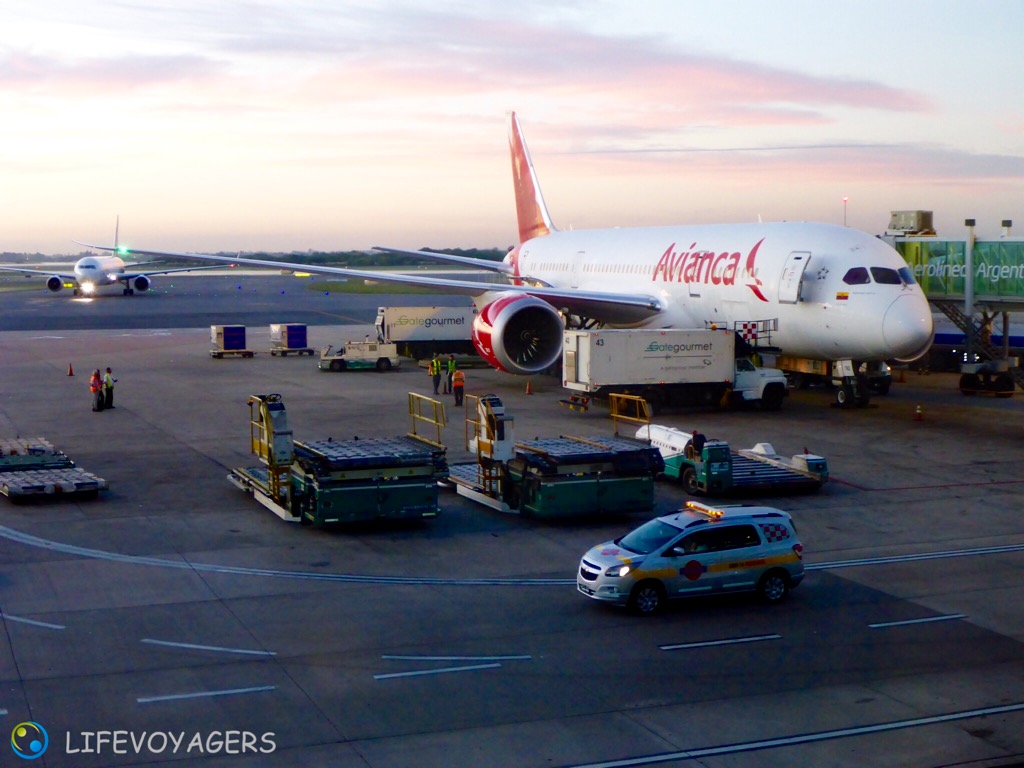
Finally: Farewell BA!, at least for this two year Lifevoyagers‘ travel period, this is where we started, returned and lived there no less than four times, because BA is the hub for Argentina and Chile, and nearly a second home to us now, so saying Good Bye isn’t easy at all! God willing we’ll return!
Take off to Bogotá, Colombia, using Avianca (Star Alliance), with a B787-8, also called Dreamliner because of its jetlag minimizing light concept and the windows which are bigger by 1/3 than the usual size; Seatguru-App told Carsten to choose the row behind Business Class for maximum seat range, available for reservation when checking in online, all fine, and important too in no less then 6,5 hours of flight, it actually is big, this continent! The Avianca flight already proved the friendliness of the Colombians and was very pleasant, including on board entertainment and gluten free food.
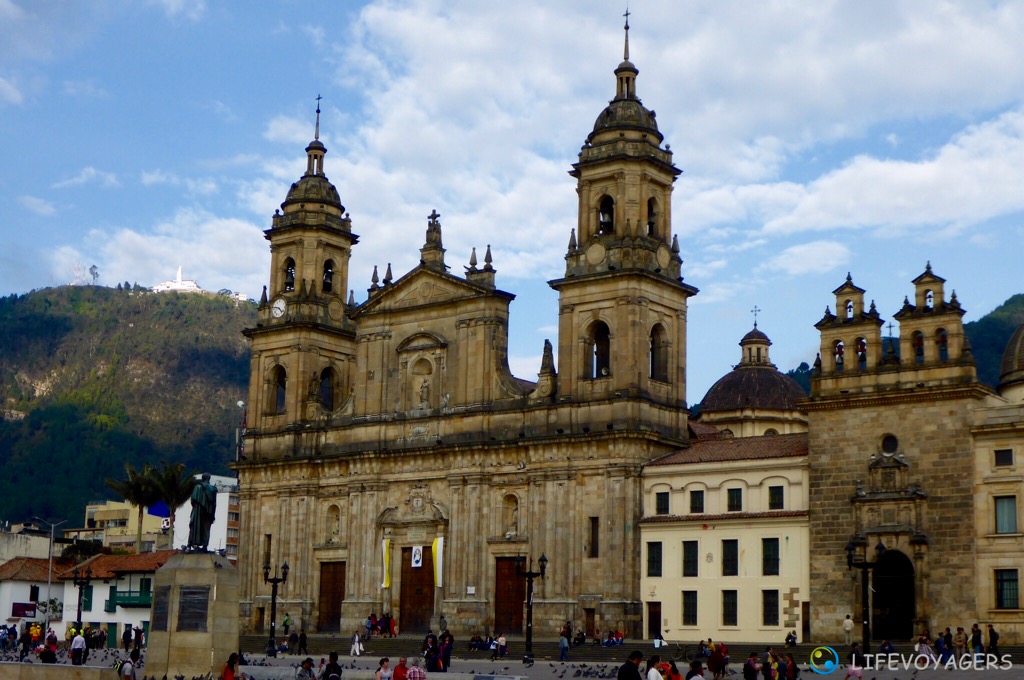
Bogota’s Cathedral, and in the background Cerro de Monserrate, to be conquered by Funicular, Teleferico, or on foot!
Friendliness and helpfulness continued upon arrival at Bogotá’s Airport, where our research simply failed us, no longer any pre-paid-voucher taxis available, labeled and apparently trained airport personnel sensed our momentary confusion and offered immediate support, explaining where the next ATM was, and that we just had to insist on the use of the taxi meter when using a taxi. Only the third taxi provided a) room for our two suitcases plus hand luggage (most taxis here are tiny), and b) liked to use the taxi meter, resulting in a tip at the end of the short drive, not necessarily a custom in this country.
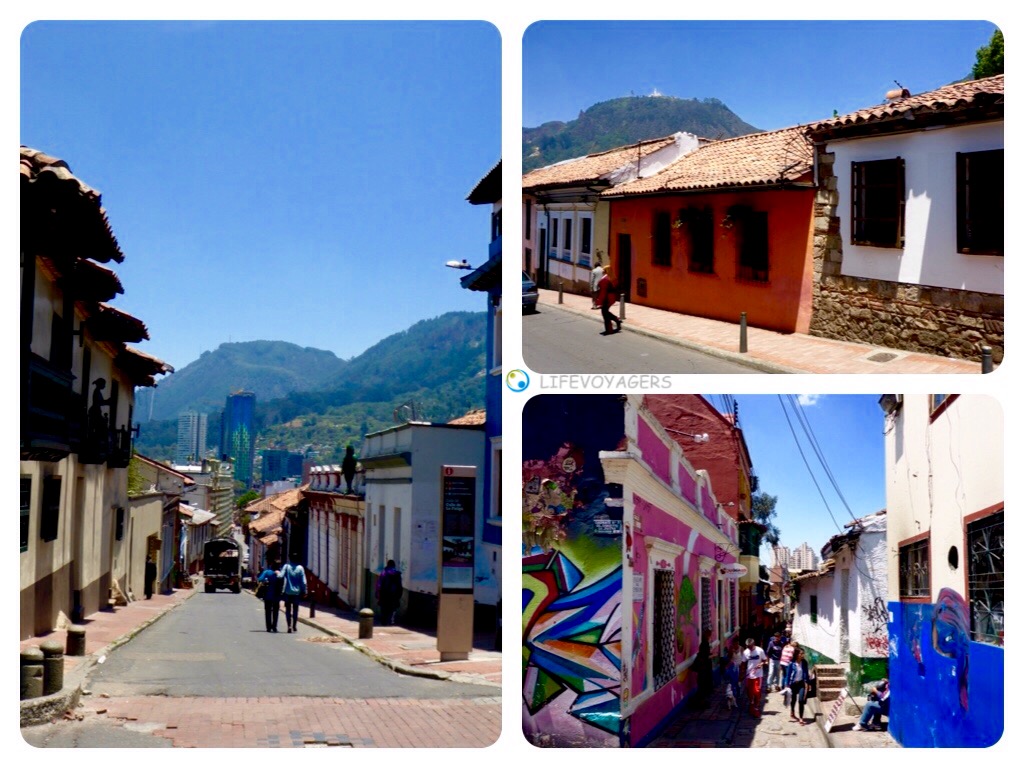
Impressions from La Candelaria, Bogotá’s old town, unfortunately Bogotá is stink city, both pee and exhaust fumes…
AirBnB experience, the umpteenth: Despite very early booking nearly months in advance our AirBnB host only managed very short before arrival to inform us of the fact that the mobile number she listed on AirBnB is actually not hers, who apparently is only ‚broking‘ the flat on AirBnB, but the mobile no of the owner of the flat, who in turn hadn’t heard about our specific contact data until then, which is why our WhatsApp communication never resulted in a response and the ‚broker‘ host, not recognized by us as such, always complained no, she’d never received any WhatsApp message from us yet… Why easy if complicated is available too? Everything in Spanish of course. Finally she revealed the facts and shortly after our arrival we were welcomed by the owner of the flat in the mega secure condominium, the last not even criterion of choice, but result of a match of our preferred parameters (own flat (no share), 700 EUR max/month, here less, wifi, kitchen, washing mashine, other than ground floor, a lot of daylight if possible, in a quiet area, the last we botched this time because didn’t realize we were in the proximity of the airport, but noise bearable despite single glazing, first flight at 6.30 am, no night flights). Flat very roomy, mattress, though of course used by other guests before us and though bed already freshly and fully made, needed to be uncovered from its plastic packaging (!!), obviously left for safety (for the mattress), the cracking and creacking of plastic beneath the sheet wouldn’t have done at all of course, and after we had hunted down the ca. 30 mosquitoes living in the flat and after provisionally closing all possible entry points for them, weird at a height of 2.800 meters, we had finally arrived.

Left: High contrasts even in La Candelaria: Old town, modern high rises, and surrounding nature. And: art is everywhere!
So Colombia: One of the most tragic examples for what I think still are the consequences of the colonisation of South America: A few facts gathered from kolumbien.de, Wikipedia, and Colombia.travel: ca. 48 m inhabitants, three times as big as Germany, multi-ethnicities because of the settlement history, 74% (!!) of Colombians live in cities, mainly Bogotá (ca. 10 m inhabitants!!), Cali and Medellín. In the Llanos (flats at the foot of the Andes), which make up 54% of the expanse of the country, only live 3% of the population, to put it differently: 90 % of Colombians live in the Andes and the Caribbean Coast, although these regions make up less than half the countries expanse. Regions Amazonia, Orinokia, and Chocó are scarcely, if not un- inhabited.
At the same time Colombia with its many climate zones is one of the most diverse countries of the world. It only makes up 0,22% of earth’s surface, but is home to 10% of all known species!! Regarding species diversity per surface entity, Colombia comes second only after Ecuador! The biggest natural wealth of the country is its flora, they count 45.000 to 55.000 different plant species. In the Colombian system of National Parks there are 58 protected nature parks, making up 11% of the countries territory, 26 of them offer eco tourism. There are 1889 species of birds! The regions Caribbean low coastland, Pacific low coastland, Andes, Amazonia and Orinocia couldn’t be more diverse in climate. Admittedly, our choice of travel doesn’t allow us to see a lot of this diversity, although there is a short trip planned to Cartagena on the Caribbean coast for this week, other than my two English-Teacher-Training-Colleagues, who both are by faaaar more courageous and frugal than us, one of them even works here as a teacher, the other is thinking of it, each of them for herself visits even remote parts of Colombia, we ourselves are content with this first impression, we choose the soft approach and plan to return here even more educated, to visit other parts of the country!
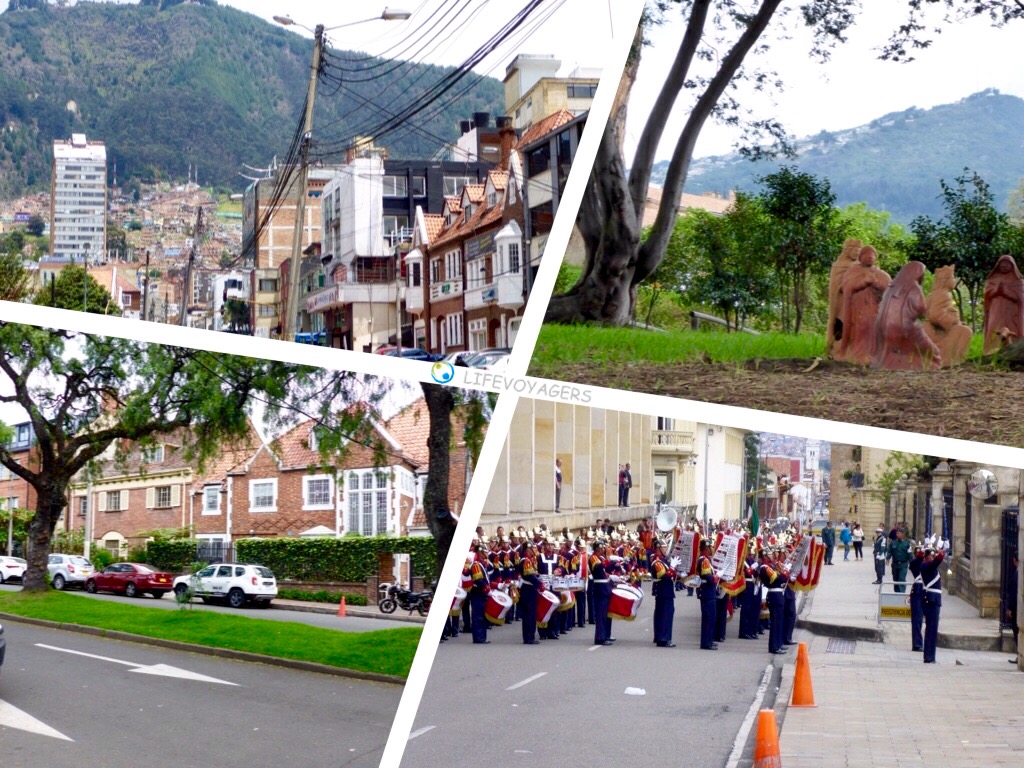
Wait a minute… are we in England (bottom left)? And this sight is not rare! Contrasts wherever you look! Top left gives you an idea of the buildings at the fringes of town… Bottom right: Change of the presidential guard, quite a show!
But….: Example Bogotá, 10 m city, choked by cars, local public transport solely usual busses and Transmilenio busses with their very own double lane, not bad but during rush hour too few capacity and too expensive for a lot of locals, as we learned in Rio this leads to illegal building at the fringes of town, because people have to get to work, so commuting is out of the question, because of the long working hours in low paid jobs and expensive public transport; here you find the largest social differences in South America, also because 15% (!!) of Colombia’s inhabitants have at least once been violently expulsed from their land and home (displaced persons) by “Guerilleros”, a lot of them finally arrive in the cities like Bogotá, but who is actually able to make it, if they, sometimes more than once, have to start from scratch, so this is why there are a lot of homeless people too. The process wrestling with a ‘pacification’ of the different “Guerillero”-Groups with the government is ongoing, with neither clear ‘fronts’ nor ‘good’ and ‘bad’ clearly defined, it’s been going on for more than 50 years and now boasts a (political?) cease-fire with the biggest group. As much as violence on all sides is damnable, we dare to reckon, surely same as many before us, that this kind of behavior is the result of ongoing suppression of different kinds and powers, for centuries, from the beginning. At least ourselves we, here as well as everywhere else, only ever met and saw people who don’t want anything but to live in peace, only just sufficiently, and in dignity… So much in a nutshell ;-)) !
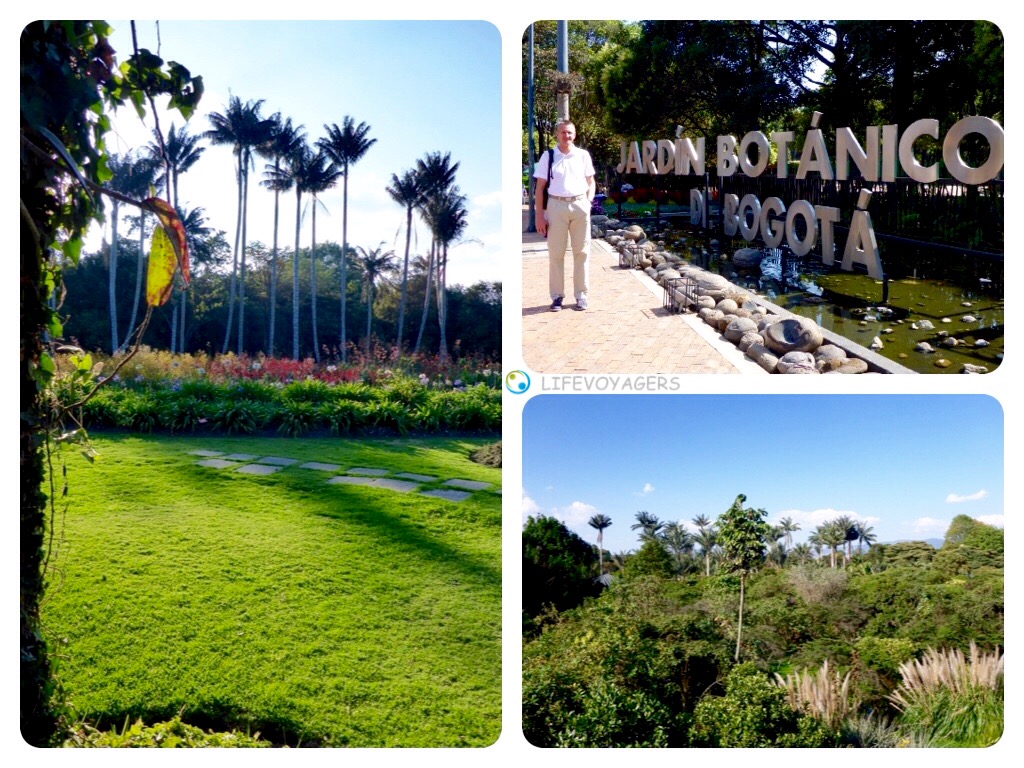
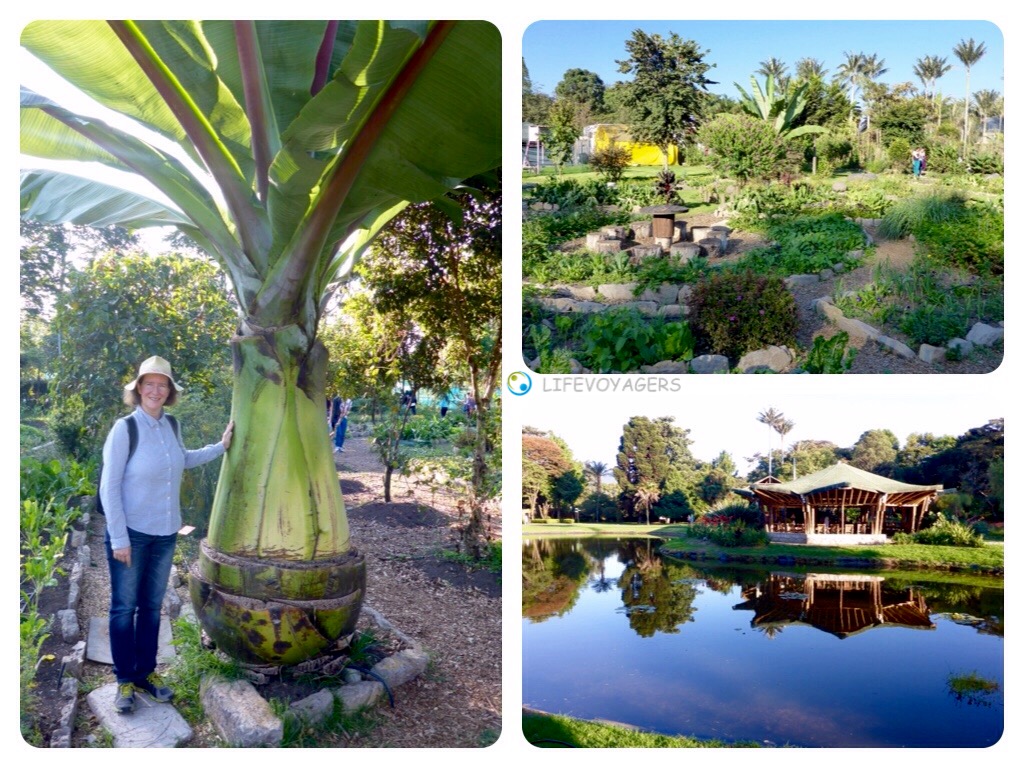
No city where we don’t visit the botanic garden, if any! Great respite from the stink, very soothing!
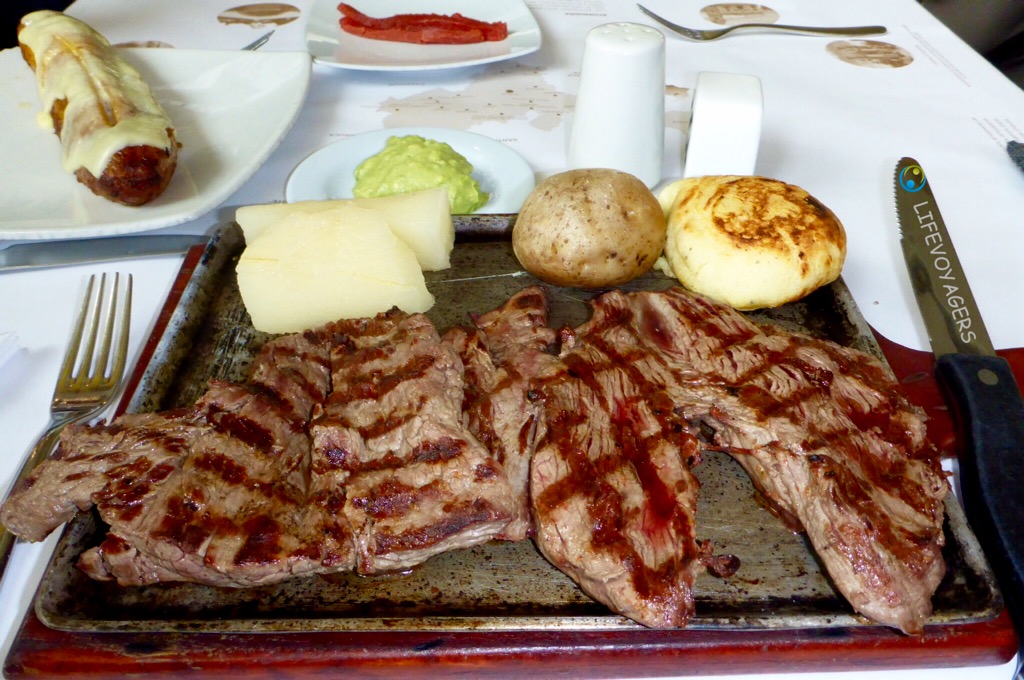
Come on, admit it: you’ve been waiting for it, right? All of this cost 13,80 EUR inc. tip, so in this city we’ve stopped cooking for once! It’s fried plantain with cheese and some kind of sweet, 500g grilled beef, cooked maniok, oven potato, cheese filled corn arepa, and guacamole, more than enough for two actually! At one of our favourites: Restaurant ‘Mi Gran Parilla Boyacense’!
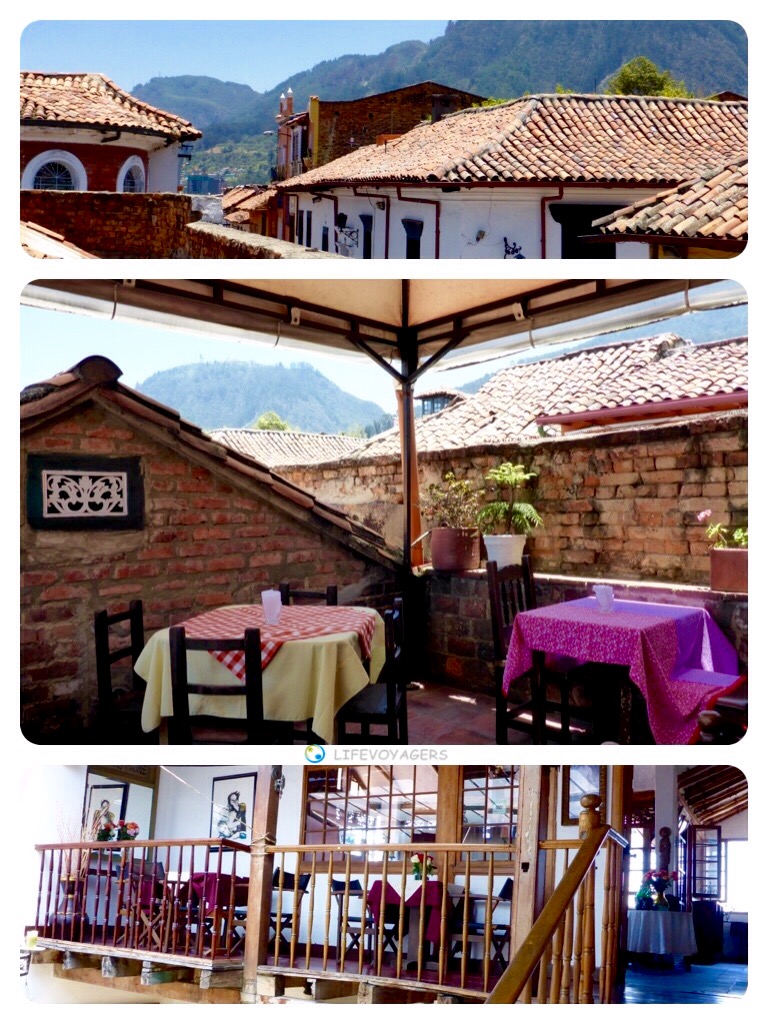
Another favourite: Restaurant Fulanitos in the old town and in a historical building too with nooks & crannies, and their food below, HALF a helping of Chicken Stew with “trimmings”… All on one of their marvellous terrasses with beautiful views!
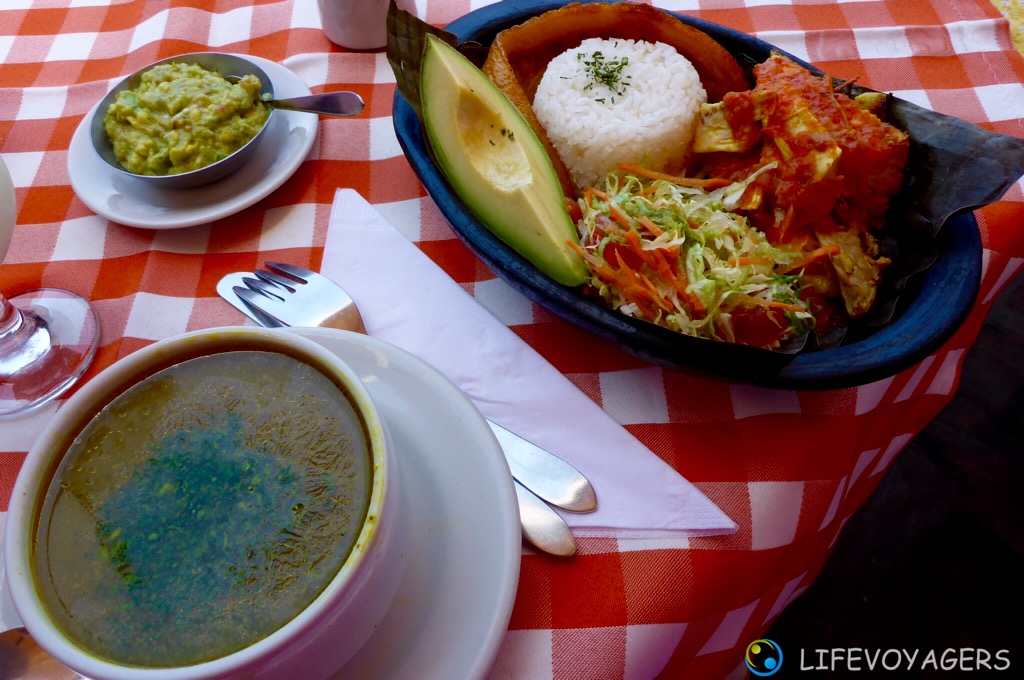
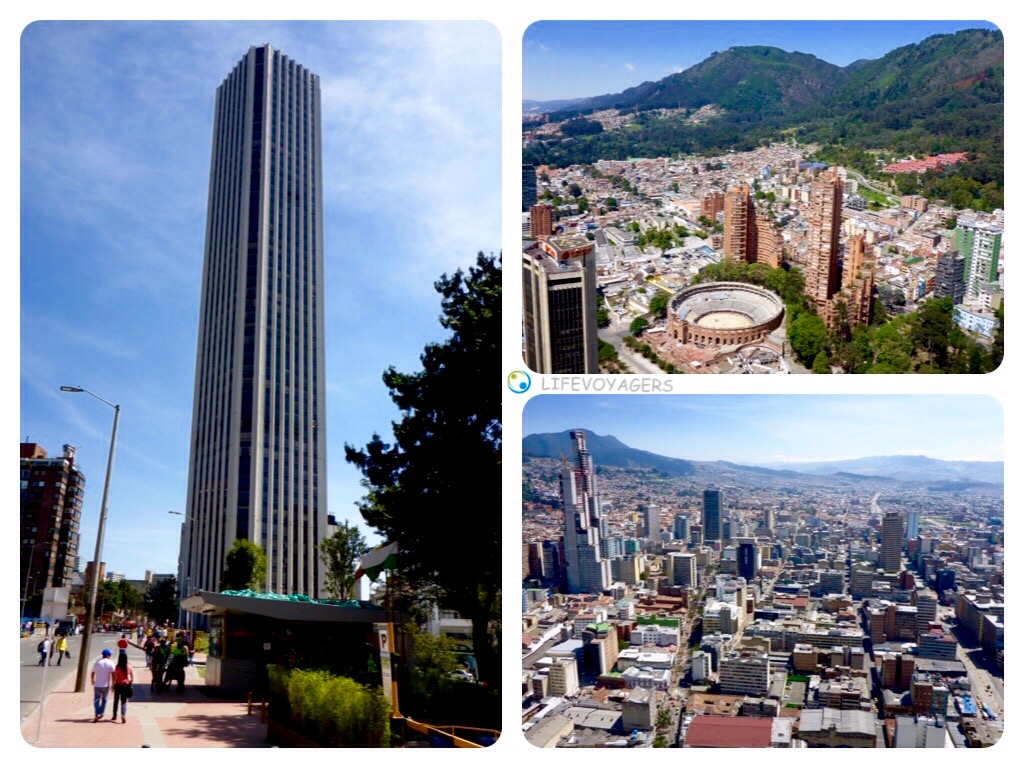
Amazing views from Torre Colpatria, now actually AXA Colpatria, I faintly remember having heard of this JV… The bullfight arena is out of use, fortunately…
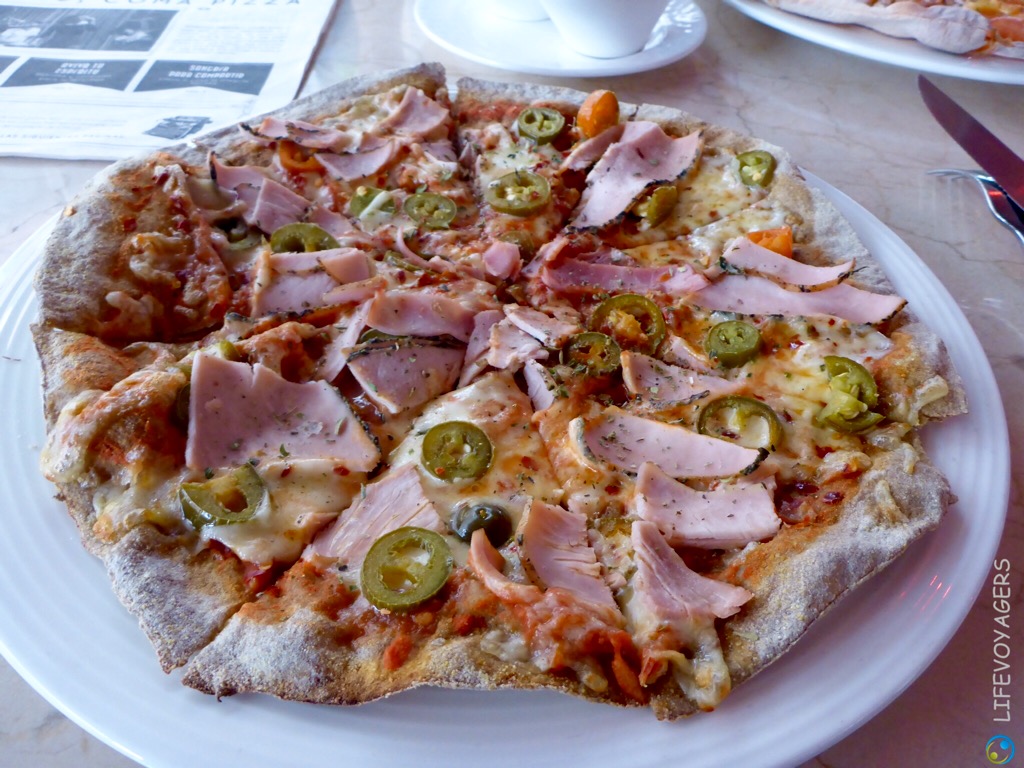
Ah, Circo Restaurante of JW Marriott Hotel Bogotá, once I knew they had gluten free pizza, I could no longer resist, as much as we love Colombian food! I think I’m excused once (or twice ;-))) in two years…
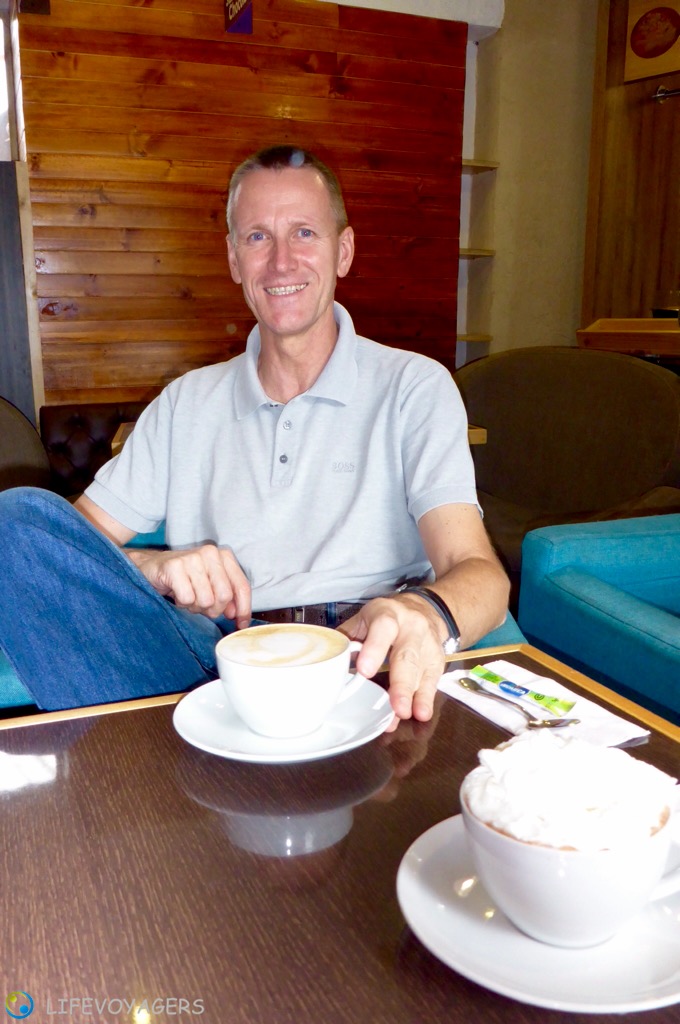
A sight in himself, my husband, even if he seems to sport some sort of halo, but who can resist that smile?
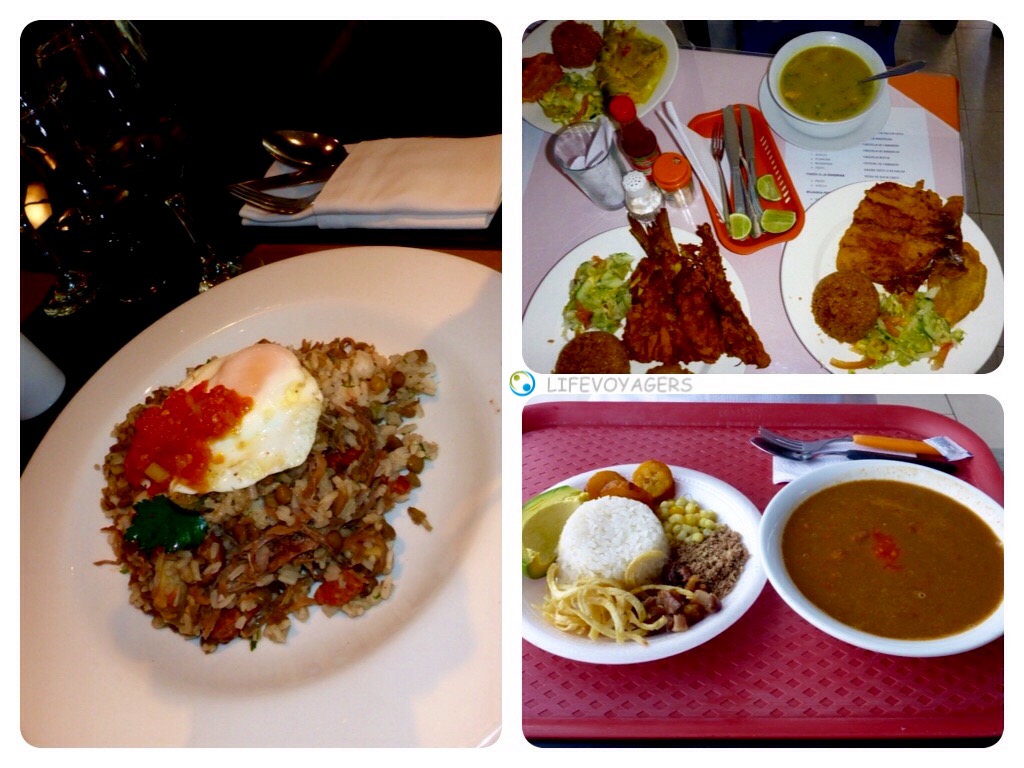
From left, clockwise: yummy food in Restaurante Patria; menu ejecutivo in Pescaderia inc. soup and fresh juice for less than 10 Euro FOR THREE PERSONS, the soup alone would have done, AND all super yummy; first meal in Bogotá: HALF a helping of bean soup with trimmings in a food court…
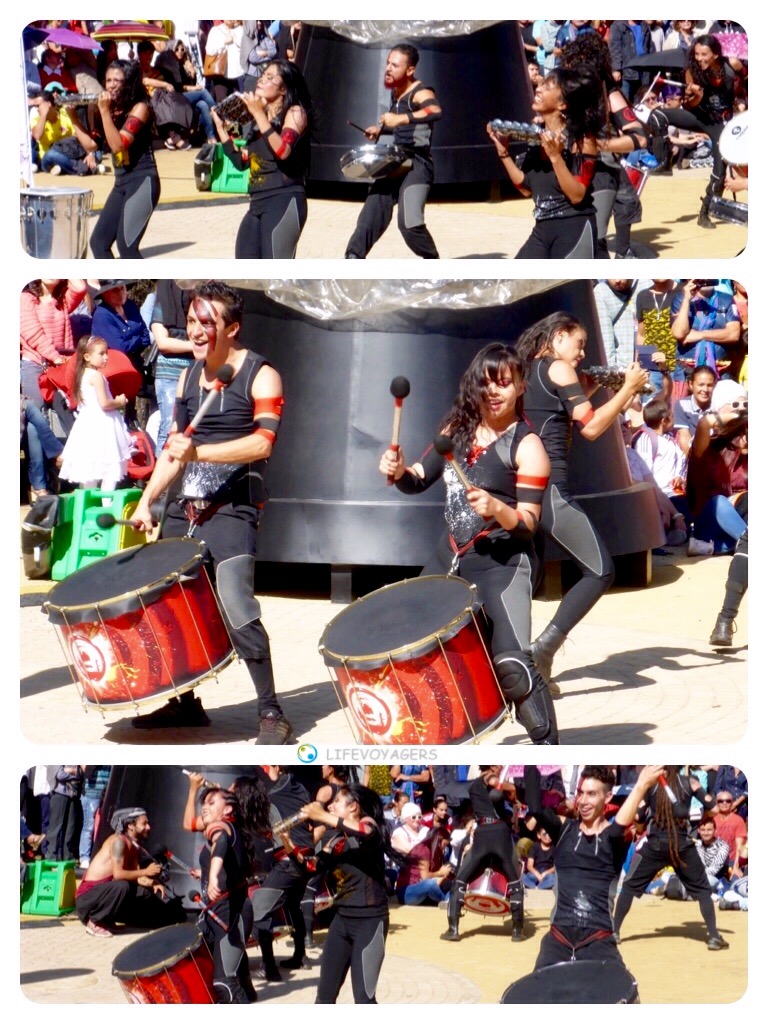
Theatre Festival brought street performances too: AAINJAA (facebook page) with their energetic & energizing performance!
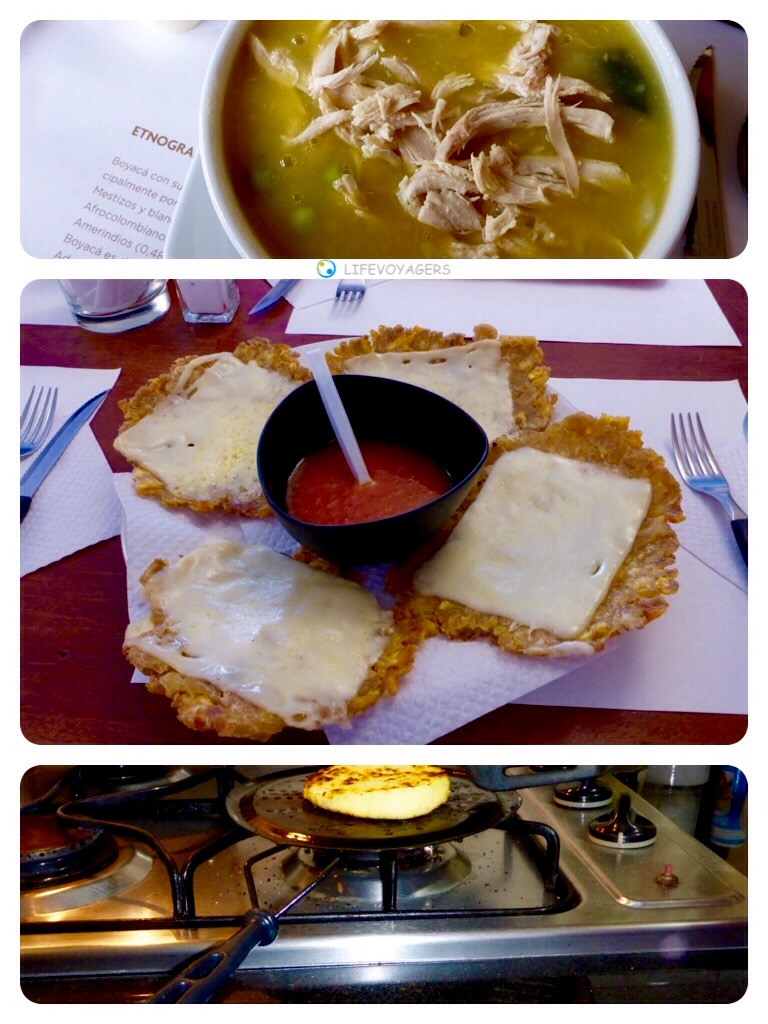
Top to bottom: Ajiaco soup, Patacones: fried plantain ‘cookies’ with melted cheese & hot tomato sauce, self roasted corn Arepa!
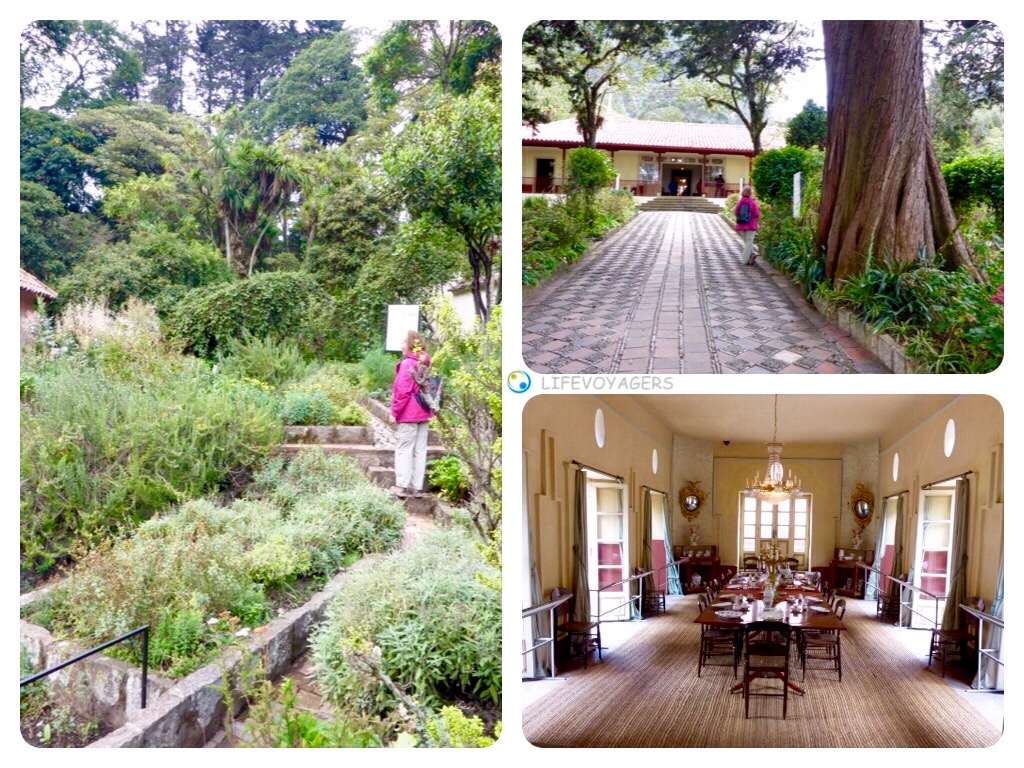
Quinta Simon Bolivar, Great Colombia’s Liberator, lived here a few years in his high time, an enchanting place & garden!
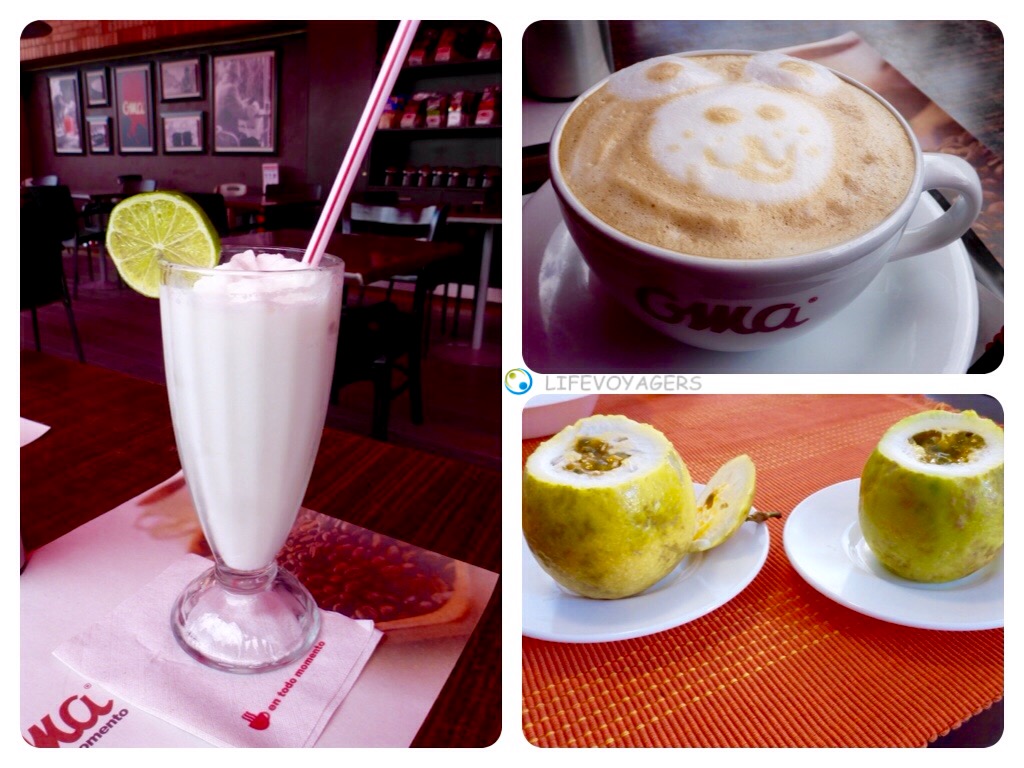
First country where both Carsten AND Claudia are happy with the restaurant food, in Singapore Carsten lacked Steak, in Argentina Claudia lacked everything BUT steak, and here finally both are satisfied, and: Tropical country but moderate temperatures because of Bogotá’s height: No humidity and still all tropical fruit on offer, yeah!! Don’t miss Limonada de Coco!
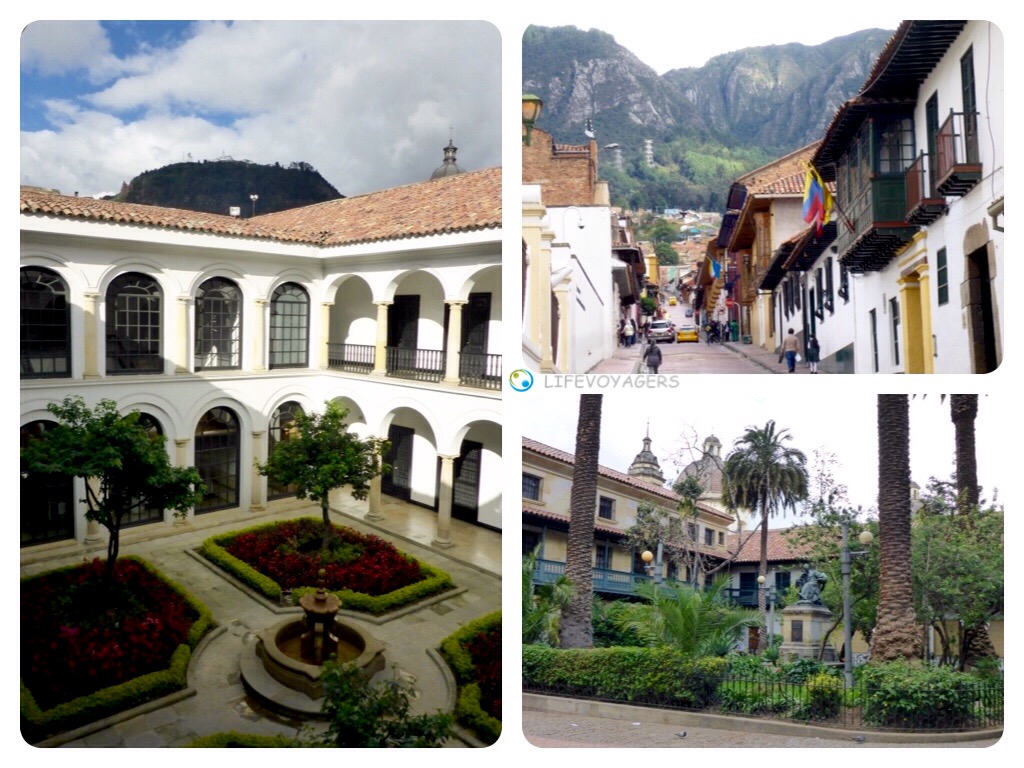
Beautiful patios in Bogotá’s numerous museums: here: Botero Museum and surrounds, but also Gold Museum, Museum of Independence, Museum Santa Clara, National Museum, to name but a few!
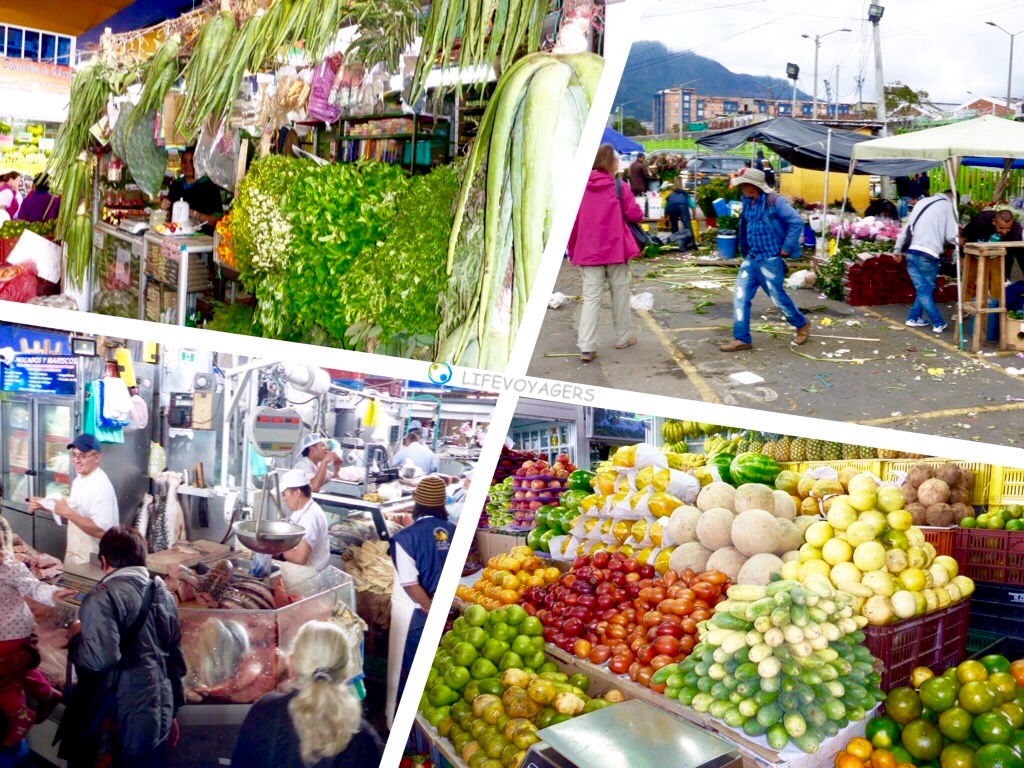
Paloquemao Market, and here they are, the tropical flowers, fruit and ingredients! Aloe leaves can even be bought in the supermarket! This one’s fairly ordered in a non-European sense, we visited another (Plaza Mercado Las Flores) we could only stay at for a few minutes due to the stink of fish and meat, and: the concept of marvelling at products foreign to us is of course unknown to locals, surely we are looking for something in particular?, and this in a completely un-harassing, helpful sense!
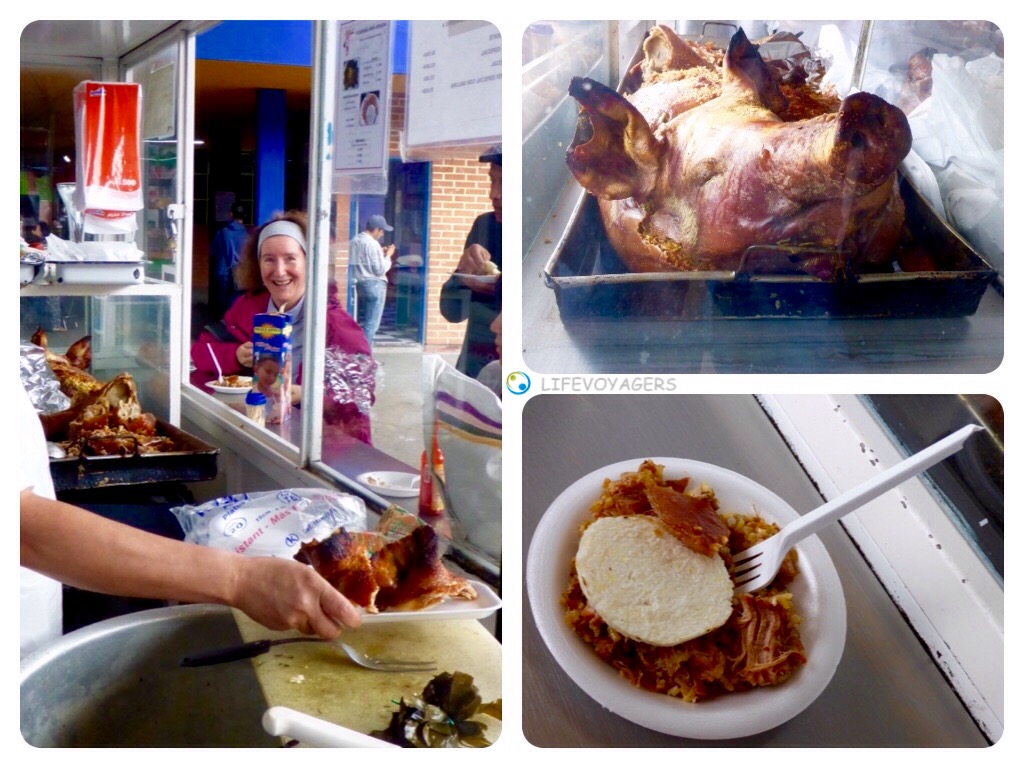
I know, usually we don’t eat any pork, but I just couldn’t resist something that yummy, the whole thing was stuffed with rice and every customer got an extra piece of extra crunchy crust, all served with a corn Arepa!
So, hazard an educated guess, do we like Bogotá, despite all the circumstances? Yes we do!!! We feel absolutely blessed for the chance to get an impression (or hundreds ;-)) of this city and its friendly and helpful people. We got an excellent introduction by Paula, my English Teacher Training Colleague working here, and on our daily walk to the bus station we got friendly with the local street food sellers, despite never having bought anything, and lots of other people, greeting each other and happy to see each other. For safety measures we never venture outside after dark, not even taking taxis, thus we miss a lot of the marvellous music and club scene, but we just don’t want to hazard more than we have to. But for example today we enjoyed a free concert of four youngsters, who won a music contest, and heard a wonderful mix of classical as well as contemporary music, and Colombian rythms, played by piano, violoncello, mandolin, requinto-tiple, and classic guitar in turn in the Auditorium of Bogotá’s University! There is still a lot to discover, but after our 4-day-trip to Caribbean Cartagena from Tuesday there are only three days left of our four weeks in this country in total… As nearly everywhere, we hope to be back some time!
Thanks again for listening to our rambling, we hope you enjoyed it a little! Take care meanwhile, lots of love!
C&C, Lifevoyagers
San Carlos de Bariloche – how to!
Monday, 21/03/2016
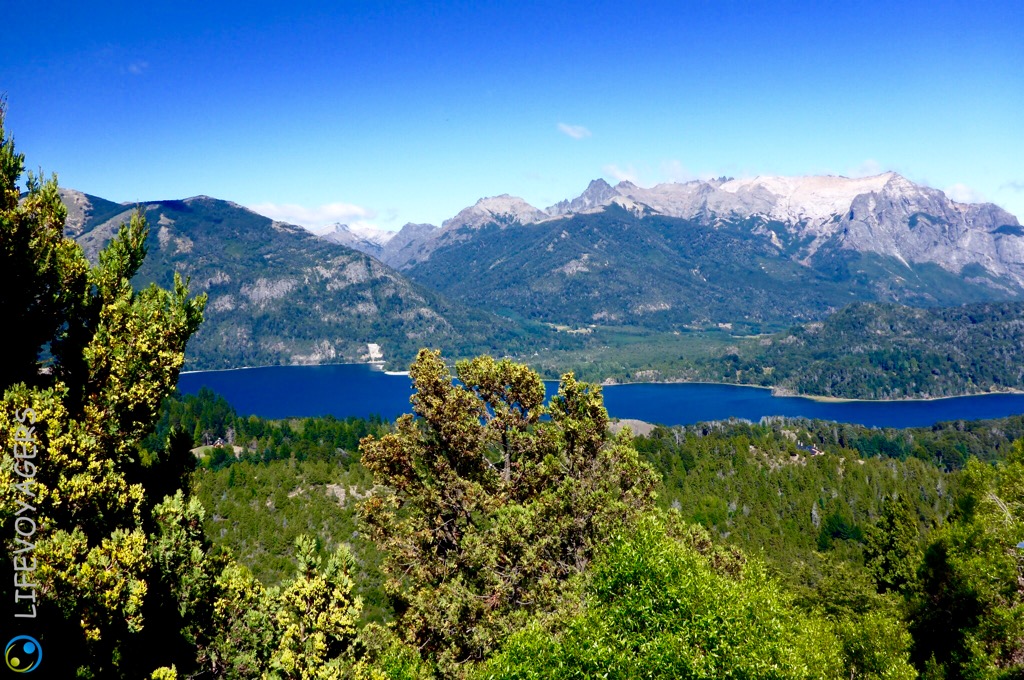
View from Cerro (Hill) Campanario, one of the affordable activities in Bariloche, and well worth doing! Pictures unedited!
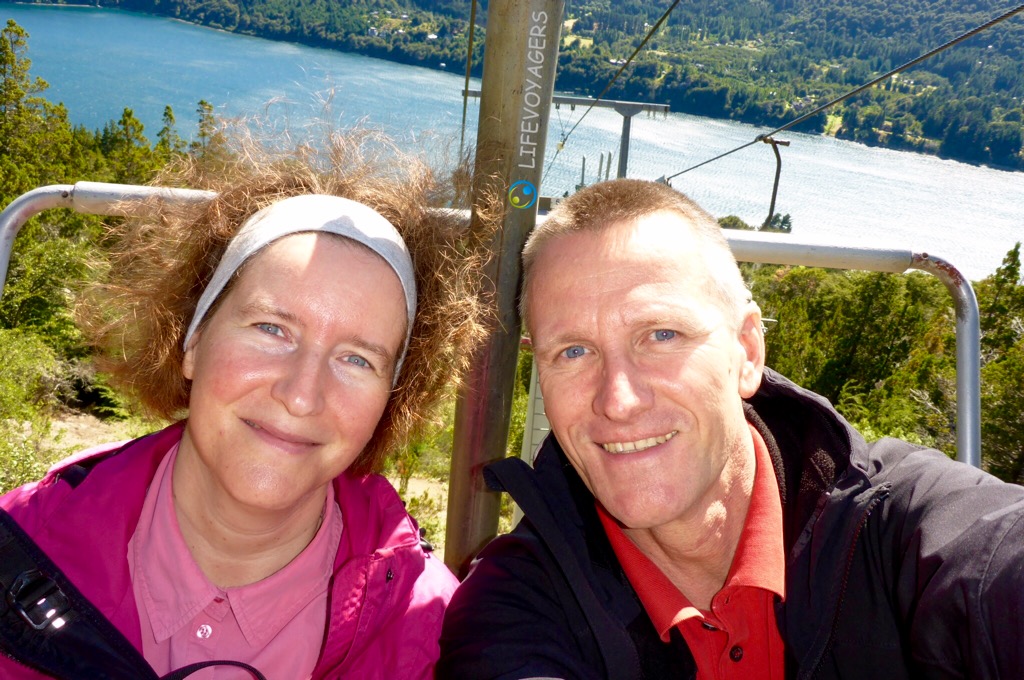
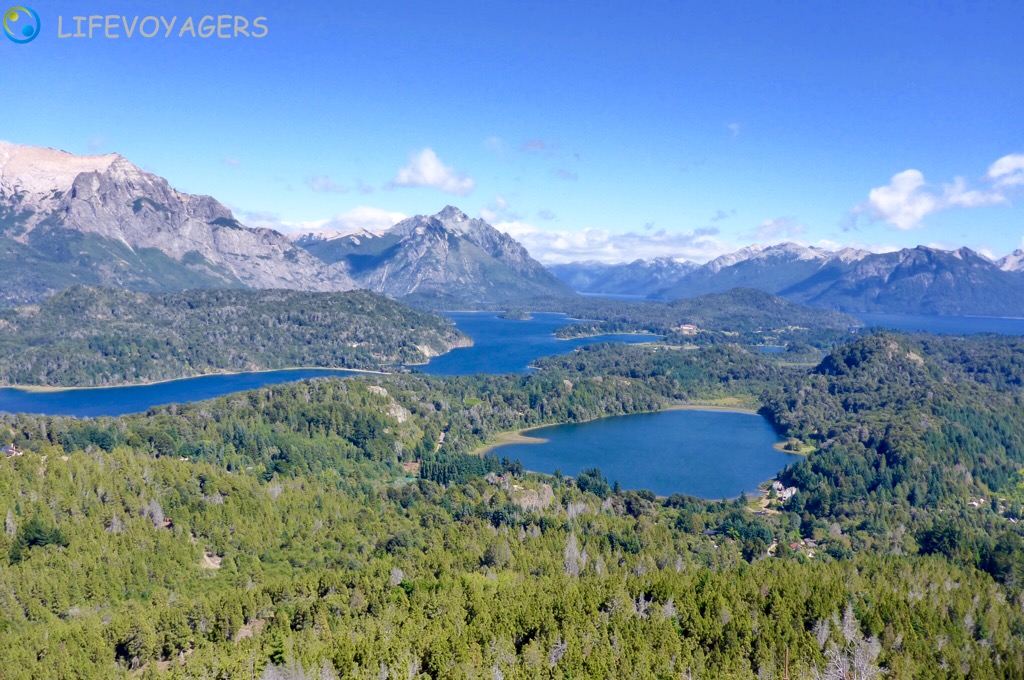
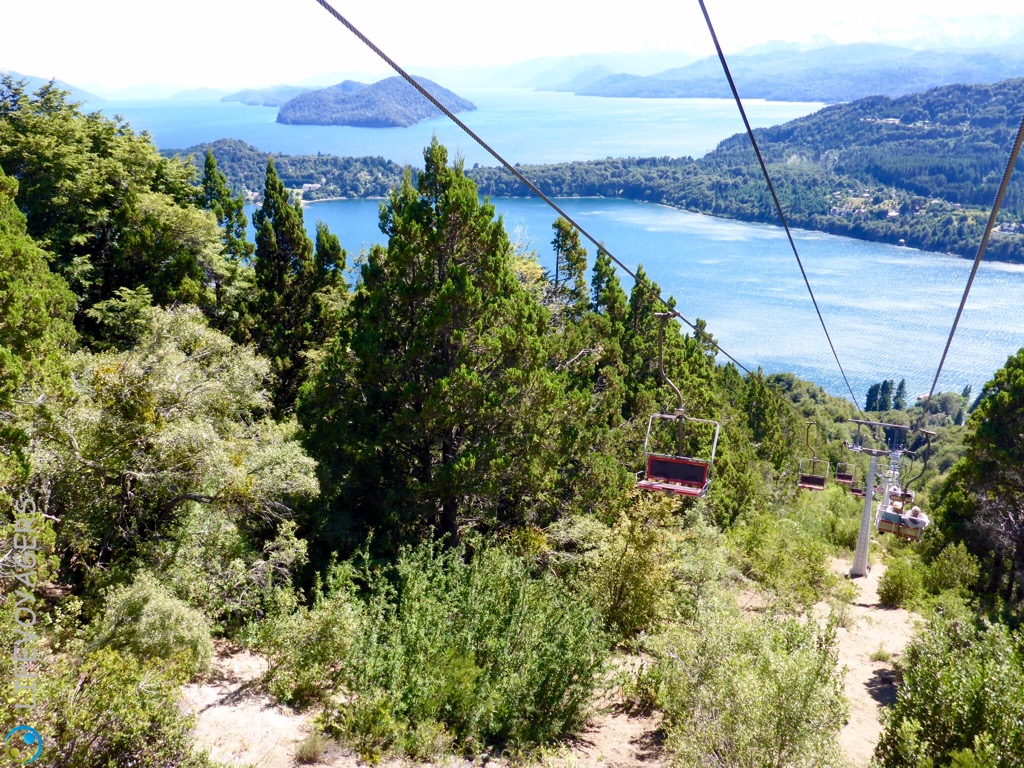
As an alternative to the chair lift, you could have hiked up unmarked dust trails, this was clearly unsupported…
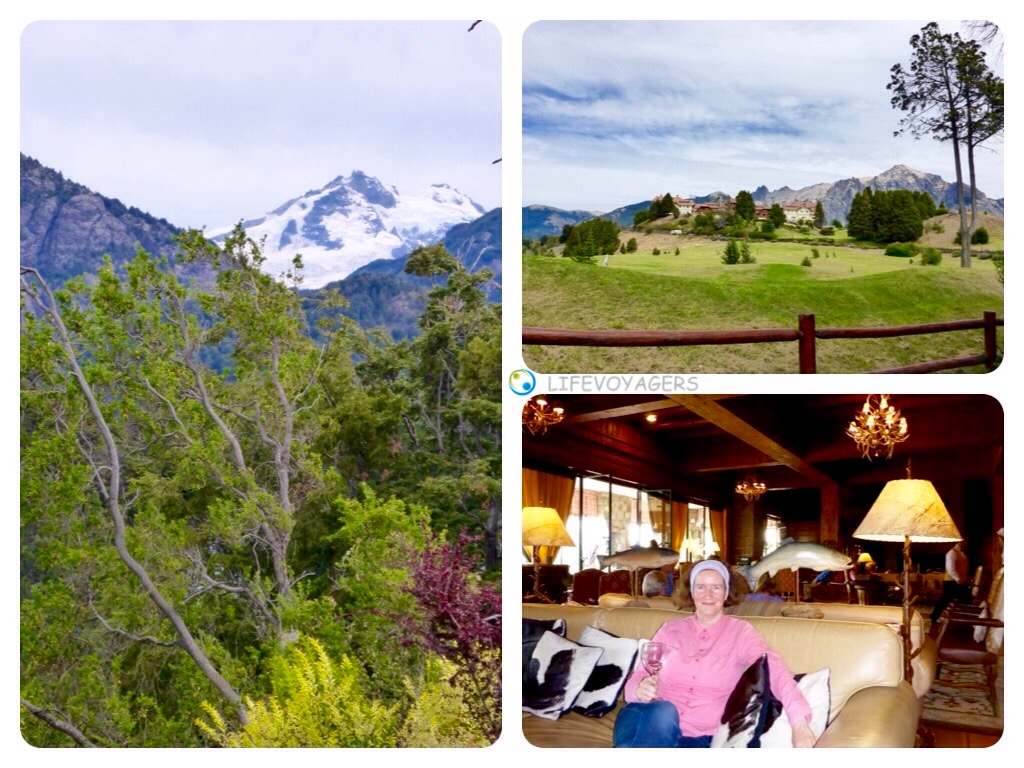
Top right: Five star Llao Llao Resort on the peninsula of the same name, we like to treat ourselves to a shared tonic water in such places, it does the trick to enjoy the surroundings, and well trained waiters don’t bat an eyelid… Highly recommended! ;-)) Left: View of Cerro Tronador in the distance, close to the Argentine/Chile boarder.
San Carlos de Bariloche, located in what’s called ‘Argentina’s Switzerland’. Admittedly so, the landscape surrounding it is very pretty, a pity though its access is restricted to individual drivers with rented cars (the environmental bell hasn’t sounded here yet anyway), mountaineers who booked their transportation in advance, and robable, i.e. highly solvent (package-)tourists by selling them expensive tours, but so far nobody seems to have realised that even the individual tourist on a budget, usually using public transport (also the regularly encountered backbacker, often looking quite confused here), leaves money in and around town, and sometimes tries to do so in vain, and would love to be appreciated by being offered the one or other service (payable of course)…
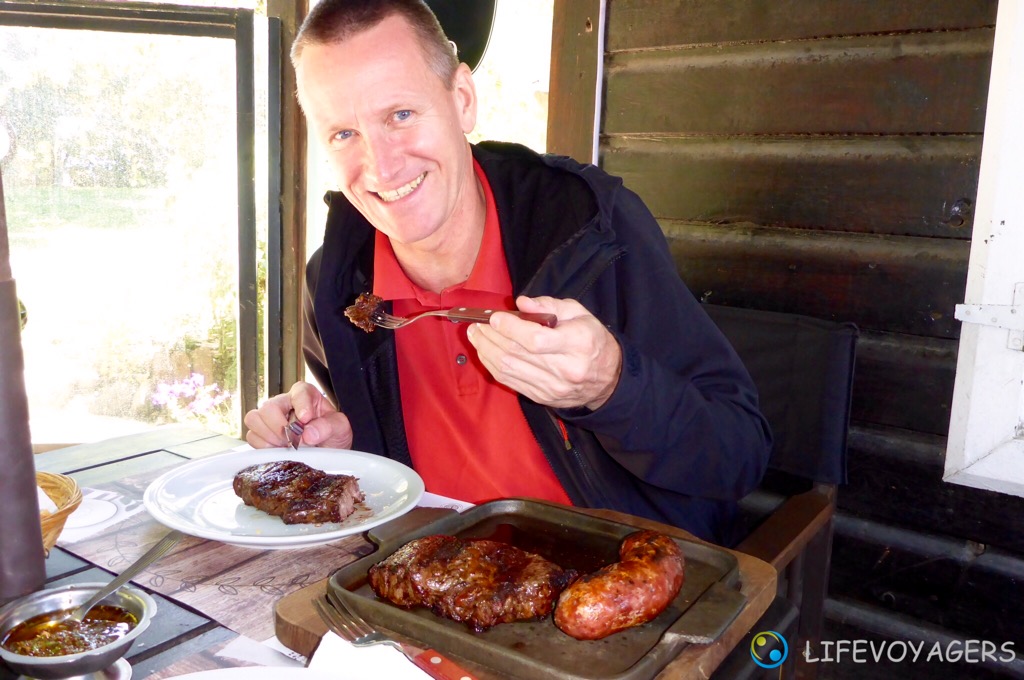
If all else fails, food always helps ;-))! In Alto del Fuego Restaurant in Bariloche all dishes can be shared, here we made the mistake of ordering an additional Chorizo sausage with the steak for one (here conveniently served cut into two pieces for sharing), we didn’t know it would be half a kilo…
Example 1: Finally having achieved, by intense research wide and far, to understand the local busses, their routes, payment systems (three of them, for two different public, but privately run companies), and timetables, then there are no walkways at their destinations in the middle of finest nature, different from European winter sport destinations, who compete for walkers and hikers in summer and therefore at least provide signed or even well maintained paths. But here you have to either walk cross country or else along dangerous dust or cemented roads with big potholes… The busses nearly always go only to places where the local people have a demand, so it’s good there are pupils, as well as staff for example in the Llao Llao Hotel, else as a tourist you wouldn’t get anywhere! Thus you wonder where the tax money from hundreds and hundreds of ‘service providers’ in this city and surrounds goes! Of course locals aren’t motivated to support tourism if they don’t profit from the taxes, when infrastructure doesn’t get invested in (in town there are a lot of still uncovered dust roads, even in places where the more wealthy live), when the burnt down ruins of the public open air swimming pools right on the lake shore have not been dealt with in decades, when Bariloche, despite its location along the most beautiful Nahel Huapi Lake doesn’t have either a shore promenade to speak of, nor walking paths, nor a port with respective leisure activities on offer, and the ‘public beaches’ for locals as well as tourists consist of overflow parking spaces or else can again only be reached via improvised, unmaintained trails, so it doesn’t really surprise that in some of the kiosks supposed to recharge the bus ticket cards they lie to your face, no they didn’t recharge… until we happened to watch some jung, yummy, male backpackers recharging in exactly this kiosk, so from then on Carsten asked them to recharge… and that worked well! ;-))
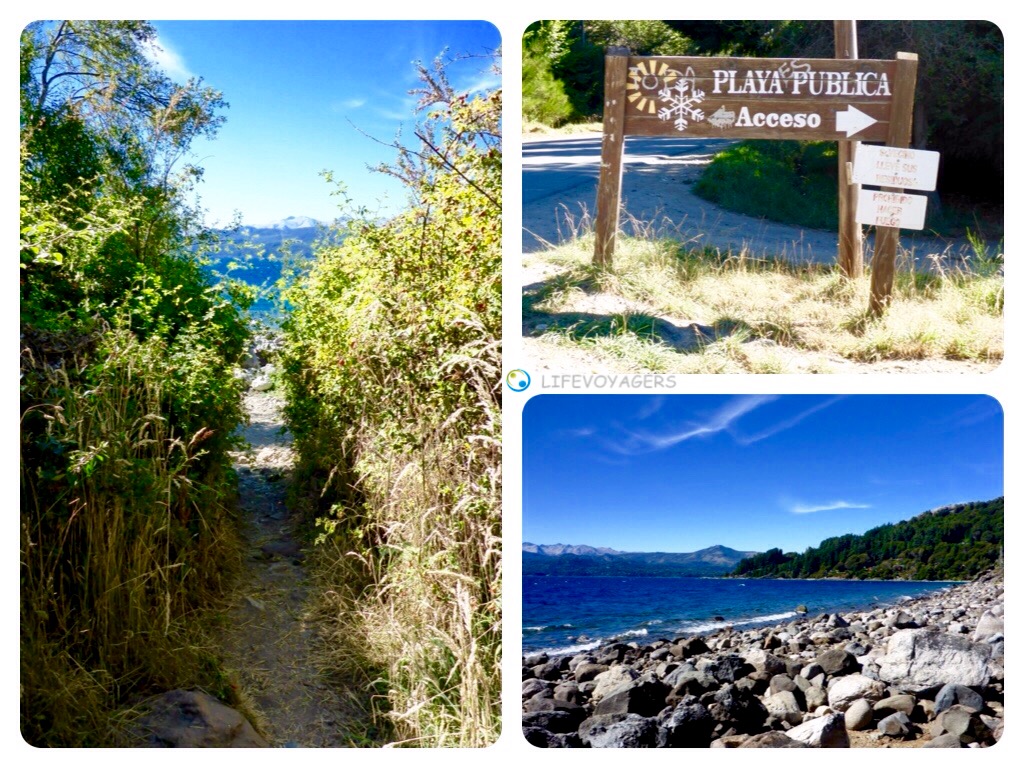
Public access to the lake shore… and that was just the end of the trail…
Example 2: the highly official tourist information in Centro Civico of Bariloche does not provide the local bus schedules (on the net: again zero result for some of the important routes): “Please go to the offices of the two bus companies and ask them yourself!” And this when Bariloche of course doesn’t have close to 400 bus routes as BA does, and the common tourist is only interested in a few anyway. “But since you are here: how many persons does your traveling party consist of? And how did you travel? And where do you stay? And where are you from?” Everything asked and answered in perfect Argentinian Spanish of course… Conclusion: Our ONE question didn’t get answered when the tourist-info’s FIVE questions actually did… Somehow a slight imbalance, if you ask me!
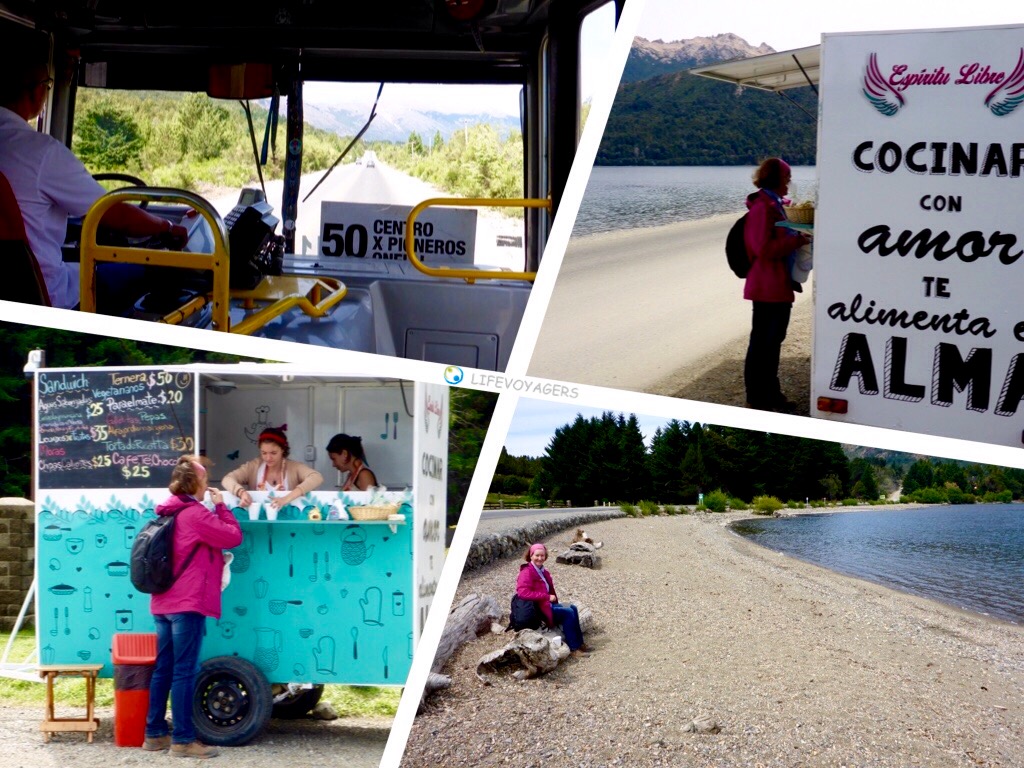
Lonesome Lago Gutierrez… The existing businesses didn’t offer drinks with a view to non-guests, so we were lucky to find the lovely business-minded (in the best sense of the word) ladies of ‘Espiritu Libre – cocinar con amor’, for a coffee on the beach! And on a Sunday too! ;-)))
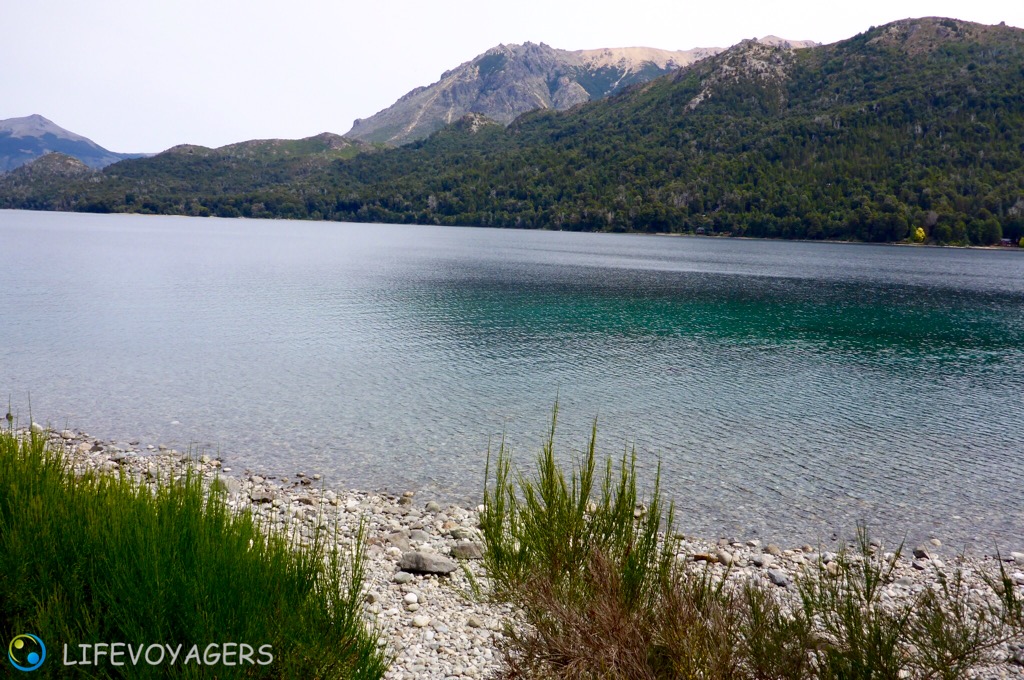
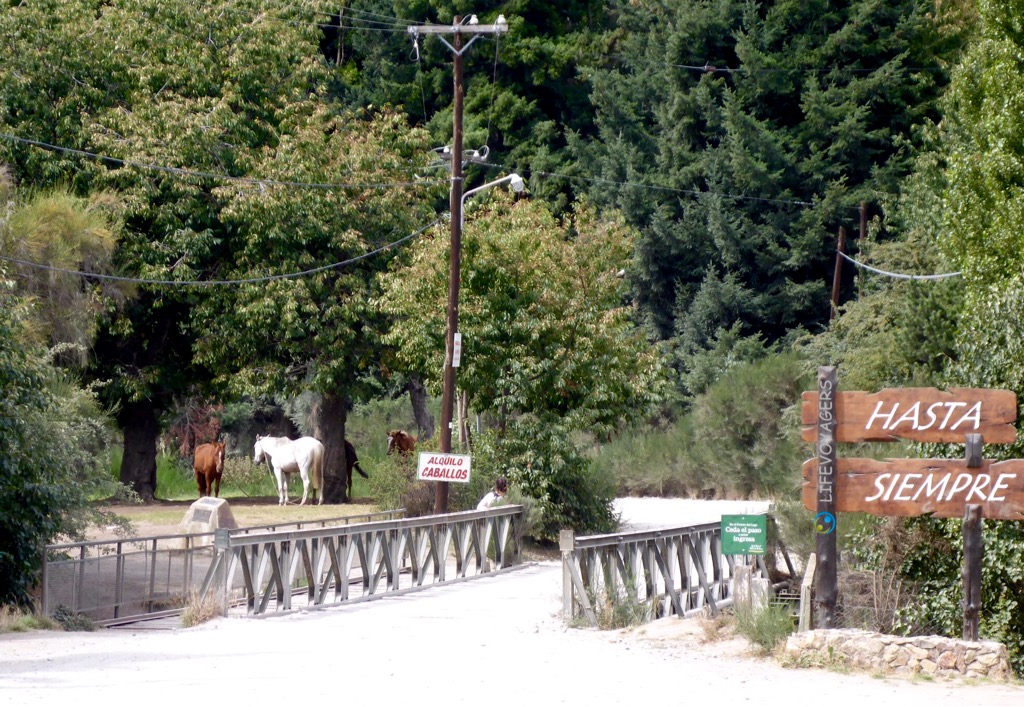
Who needs public transport when horses are for hire? ;-)))
So the wonderful Cabin, reminding us of our stays in Sweden, of our very nice and extraordinarily service oriented AirBnB-Superhost Gloria, proved to be an oasis and recreational space, including Looney the lovely dog, once the improvised collocation that is Bariloche with single curious, indeed alpine looking buildings, as well as the local attitude had once again been getting on our nerves a little too much…
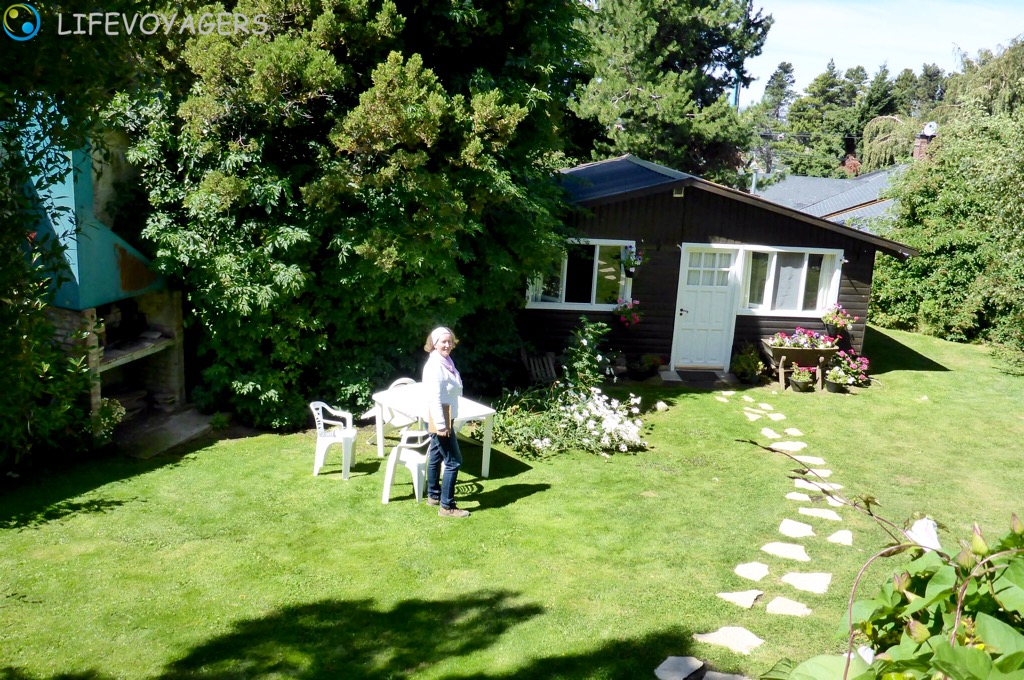
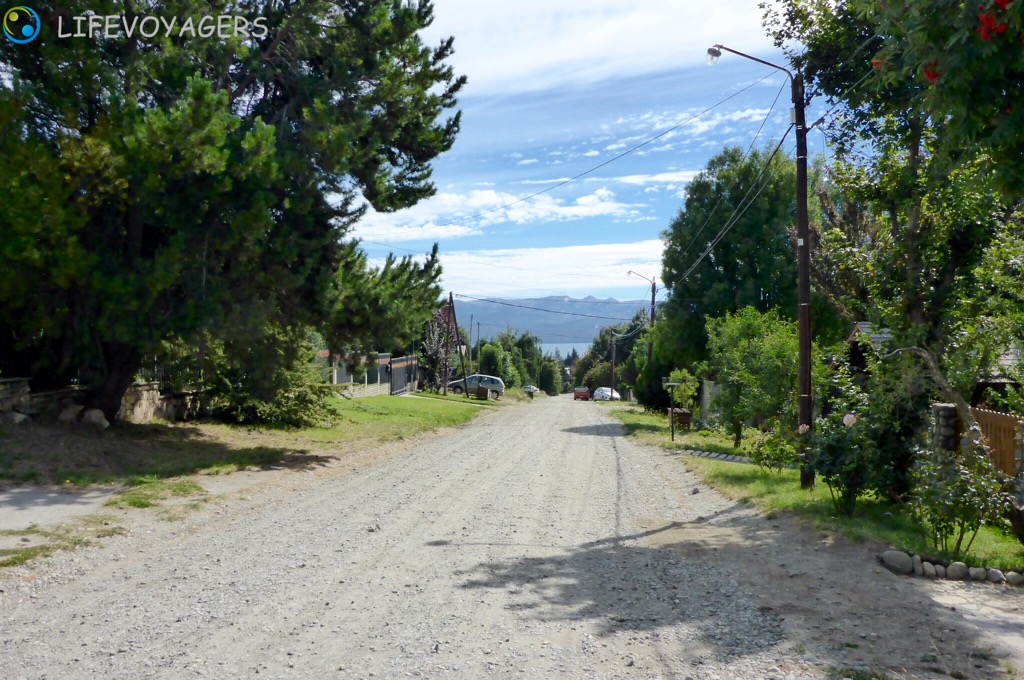
Mostly we made our way downtown on foot, mostly on dust streets like this, our home address. Once a car passes, you’re coated…
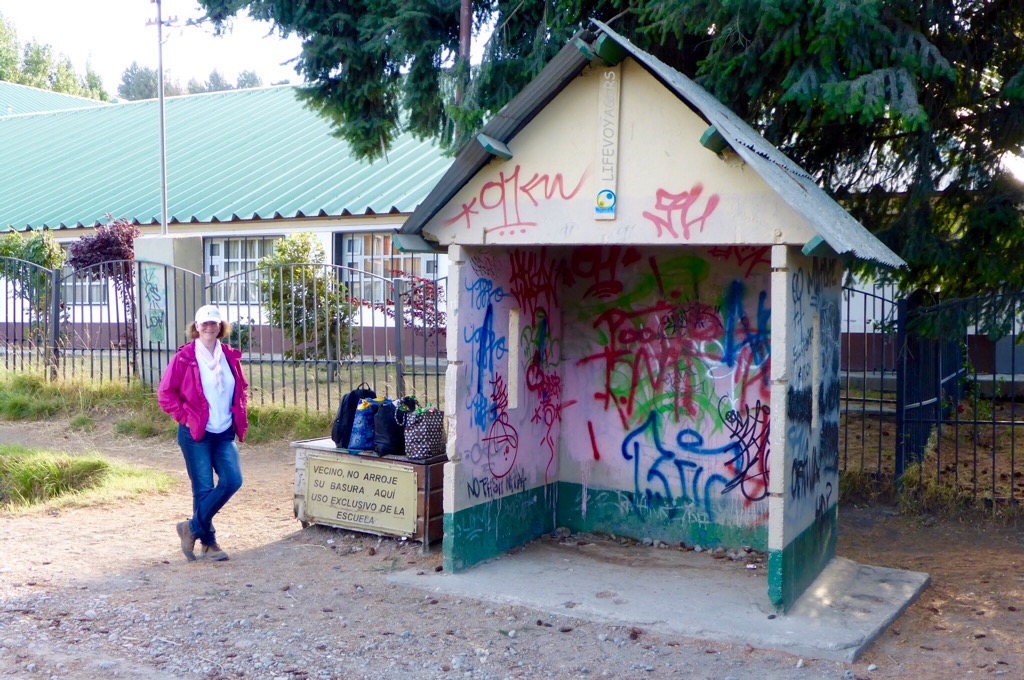
Home uphill, we mostly took the local bus, especially when loaded with groceries, public transport nearly three times more expensive than in Buenos Aires, because transport is under federal responsibility…
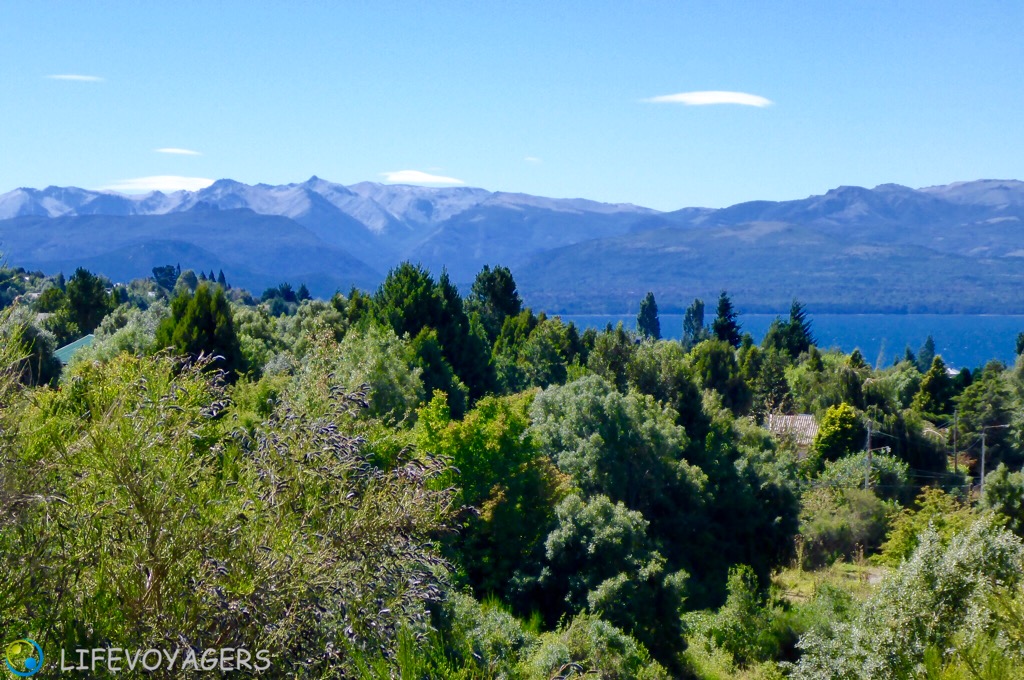
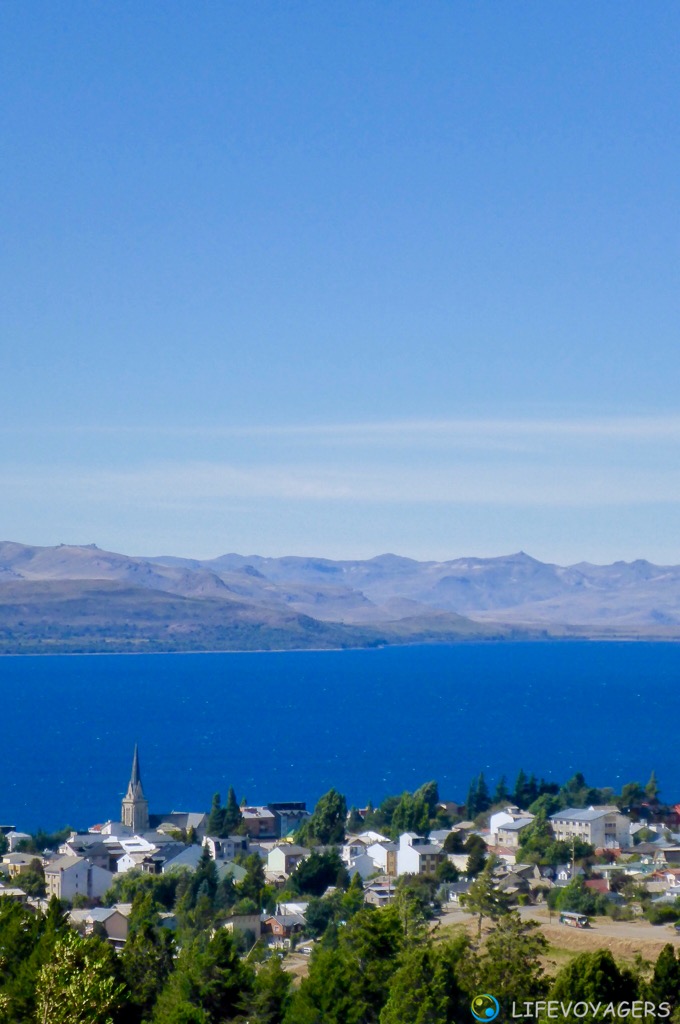
But we had nice views from around our accommodation! This way we spare you the hotchpotch city center vistas…
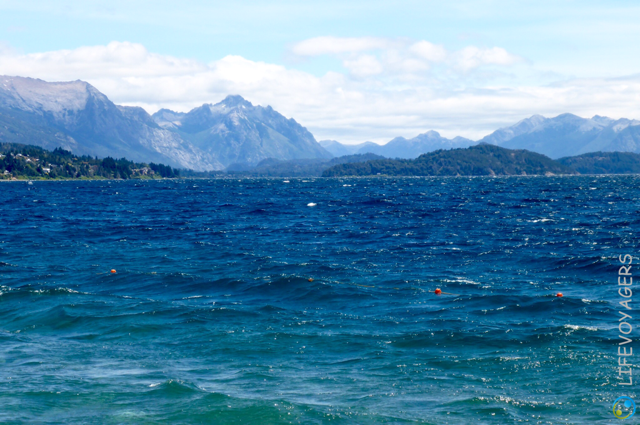
This was done for the beautiful colours… I could have meditated for hours on them, hadn’t the five benches in Bariloche always been occupied! ;-)))
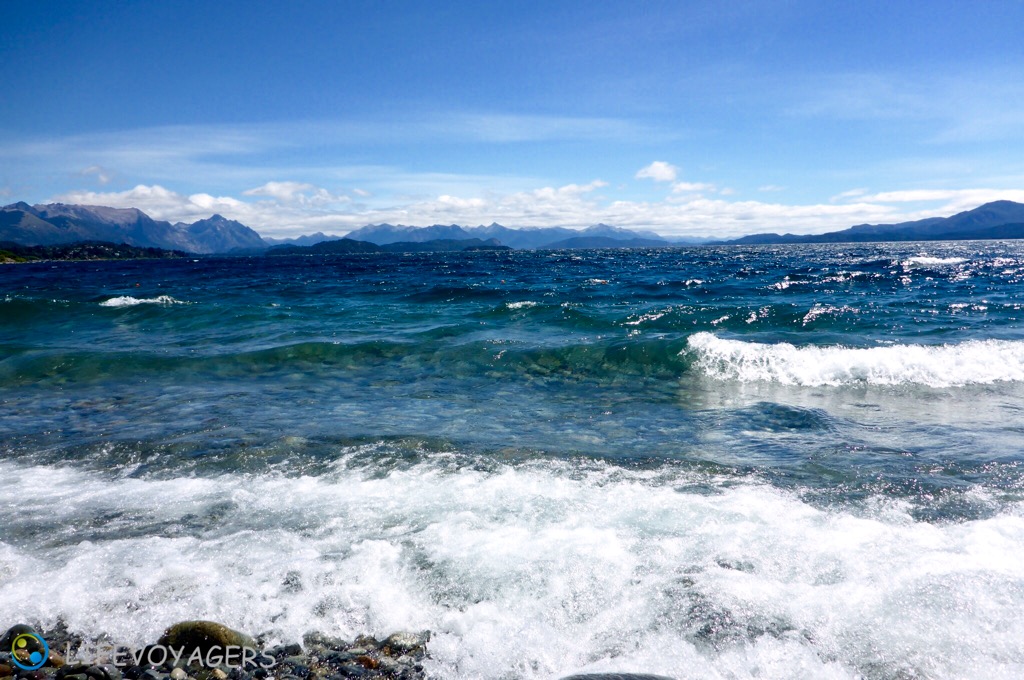
This was done for the amazingly clear (and cold!) water, again we spare you the sight of the overflow parking space in our back that is the ‘beach’ of Bariloche…
Nevertheless we managed to conquer for ourselves some beautiful views, eating a lot of dust in the process, but were too miffed to throw good money after bad to even for one day hire a car or else do a boat trip which would have been even more expensive than the car. We found, again by thorough search, a few providers highly appreciated by us, who literally bent over backwards to offer something to the individual tourist, these of course also wrestle with the circumstances… The conclusion is to visit Bariloche in summer en route to or from Chile, else to choose an accommodation out of town with beautiful views (car necessary) and drive around individually, even then it can be difficult to get access on tour to lonely hotels where you are not a guest but would like to consume a refreshment anyway… Finally you of course can be a 5-star guest of the respective resort and then have everything on site, including the views.
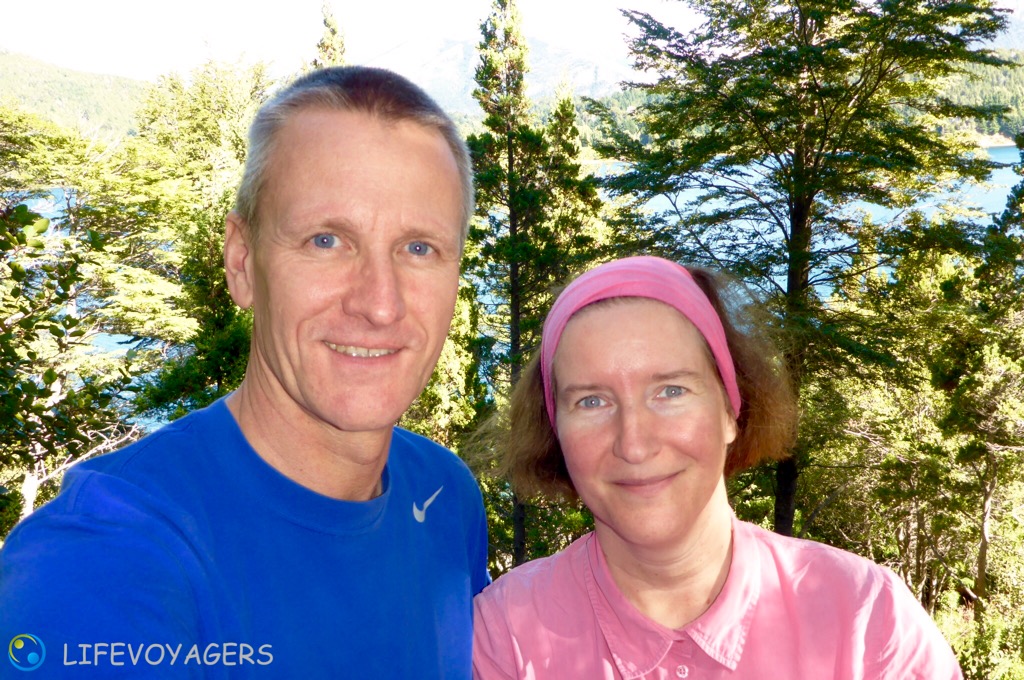
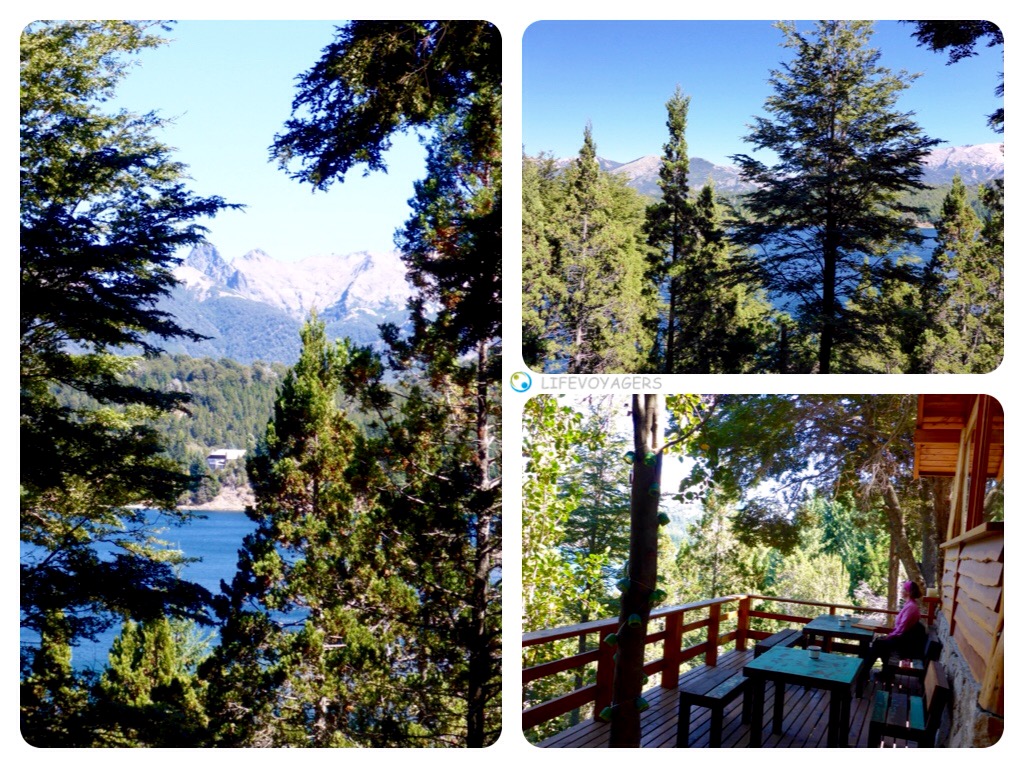
One of the hidden gems: The Peninsula Petit Hotel on Peninsula San Pedro, with their Restaurant AND Café ‘Desde el Sur’, where even non-guests can enjoy a refreshment, AND access the lake front or even take their refreshments there…
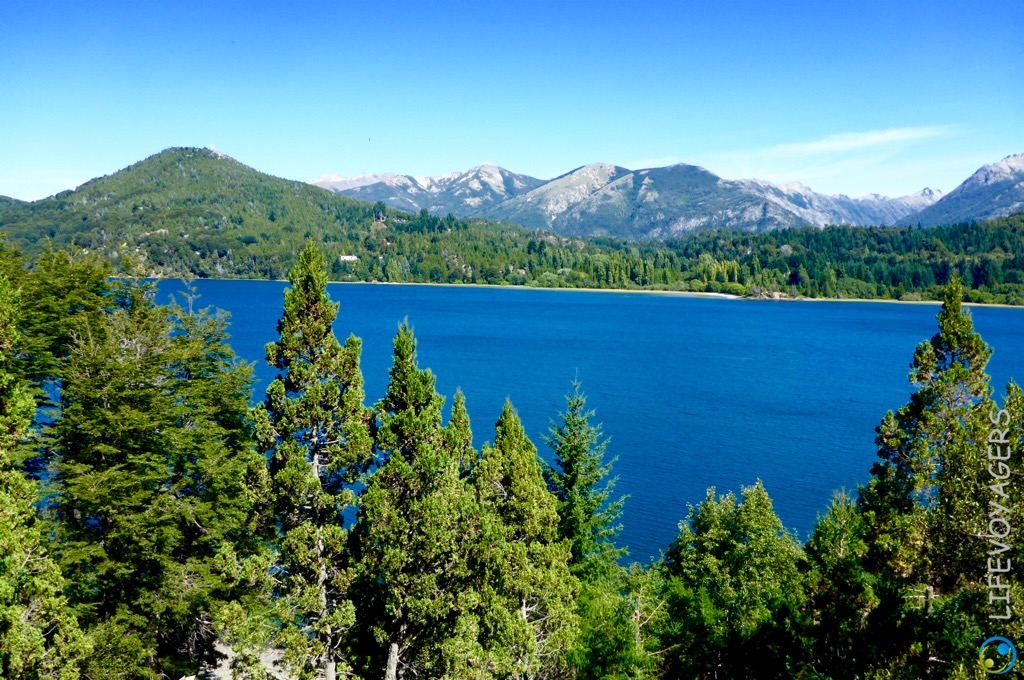
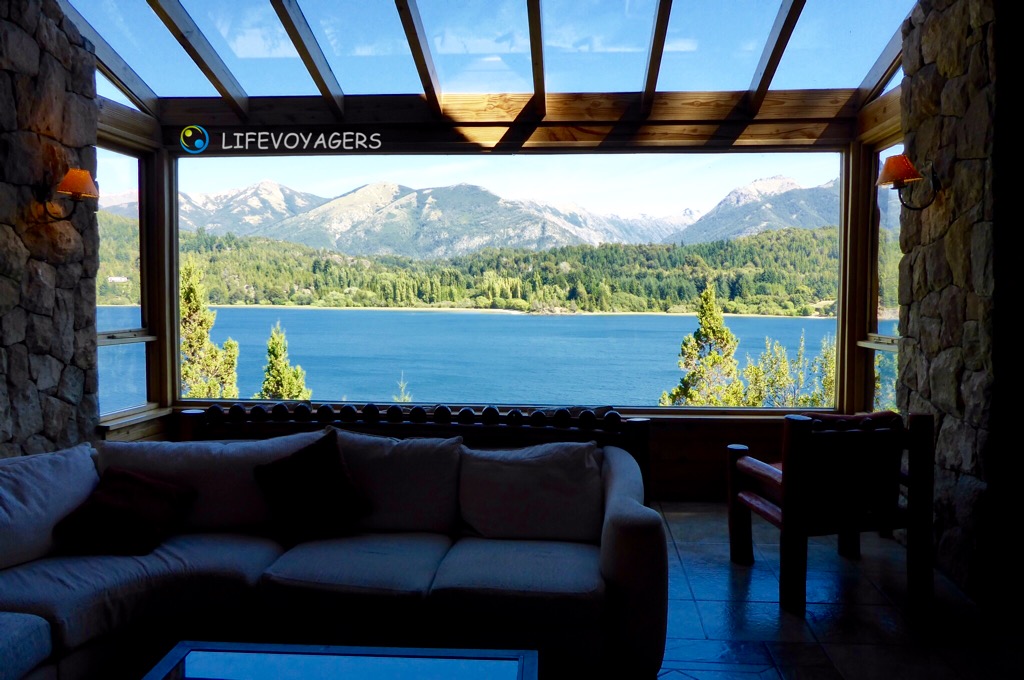
No, it’s not a photo wallpaper! The three following pics are all of Petit Hotel Peninsula and their property. Further down the road we found the smokehouse of Family Weiss, famous for their smoked salmon, deer and boar, and cold smoked trout!
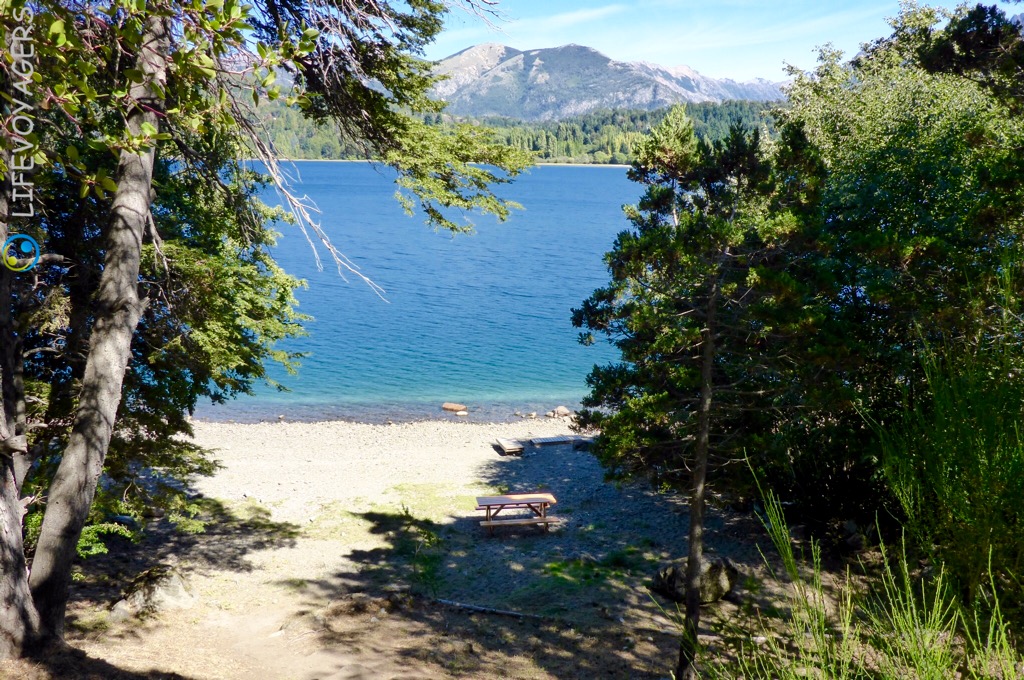
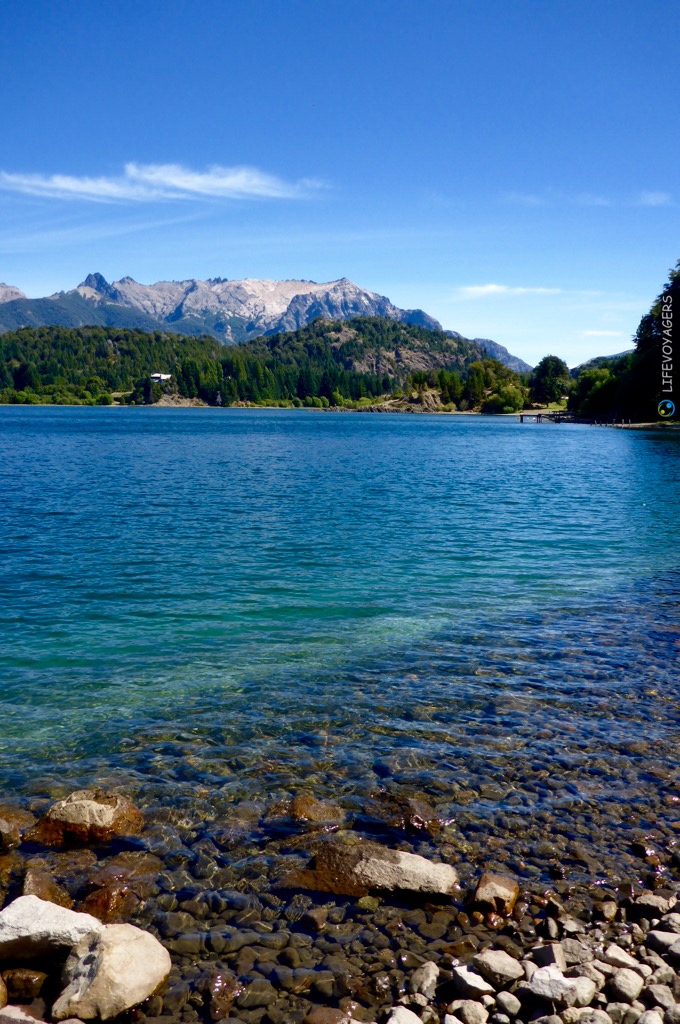
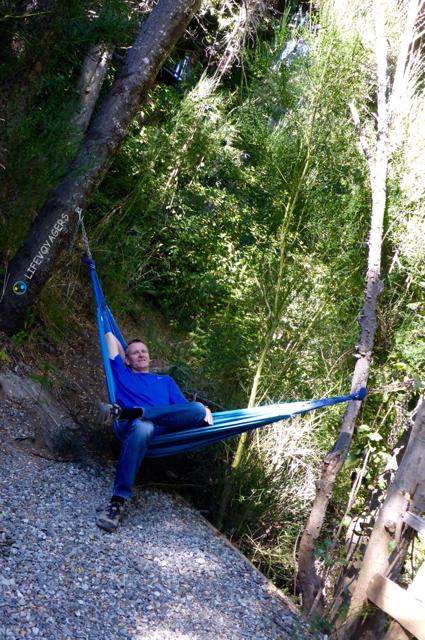
How small the world for travellers can actually be showed this lucky ‘coincidence’: Vickie, who we’d worked alongside in Bahia Bustamante, who afterwards volunteered for bed and board in a one-man-brewery in Chile, contacted us via facebook whether we were still in Buenos Aires, she would be there this weekend for two days before leaving for home. A pity, we answered, but we weren’t in BA at all but in Bariloche, would have loved to meet up! But she was in Bariloche too, came the immediate answer, arrived today, leaving tomorrow for BA at 3pm! What a reunion next morning! Strolled through Bariloche, had a nice lunch, and meanwhile exchanged recent experiences and life philosophies, what a great opportunity!
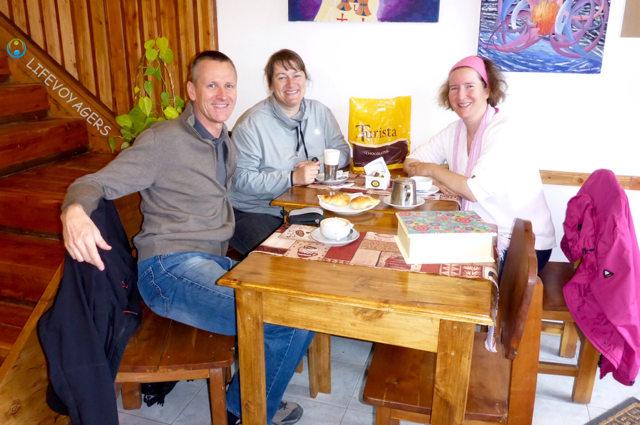
What a happy reunion by ‘accident’! Check out Vickie’s beautiful art here: www.printscilly.com
Not to forget the prolongation of our tourist visa! Conclusion first: to ‘simply’ once exit and re-enter the country again to achieve this is highly recommended, that’s at least less stressful, even if probably a little more expensive than to pay the fee. So we went to Migraciones in Bariloche, yes, no problem at all, here are two tickets for the fee to be paid at the Banco La Nacion, in Argentina staff is rarely trusted with money, neither in shops nor in institutions, mostly there is a central cashier and for public authorities it’s a bank. So off to Banco La Nacion, the world and his wife queuing, took two numbers of two different number groups (of about 8 groups) because not self explicatory, clearly not even for locals: ca. 50 people and 27 people ahead of us in the two groups, that was at 11.30 am when the bank closes at 13.00 pm for the day, on each weekday, obviously few people do online banking, so payment of our tickets only possible on the next day. Our Superhost Gloria offered online banking but the information provided on the tickets was not sufficient for this alternative. New strategy: Started off on foot at 7am from home, at least it was dusk already, arrived at the bank at 7.25am, only 3 people ahead of us in the queue! Bank opens at 8am, took two numbers again, in one of the groups even No 1, been called, paid, receipt received, 8.05am bank business done. Migraciones regrettably ony open at 9am, spent the time free of charge in the Lobby of Hotel Edelweiss, Migraciones then needed 1,5hrs to enter the prolongation into the system and to print a receipt needing a signature by the boss, at 10.30 am it turned out he wasn’t in the building at all and his time of arrival wasn’t known. So we promised to come back on Monday, this was Friday. On Monday we were out after five minutes inc. paper receipts and registered visa prolongation… It only took us five visits to Migraciones and one bank visit, so nobody please complain about German bureaucracy any longer! ;-))

Lifevoyagers’ homemade icecream consisting only of cream and frozen raspberries once some cheap ones were on offer, whipped in our valuable personal blender, no sugar added, extra light treat of course…, in a retro cup ;-))!
Carsten also fetched his new passport once back in Buenos Aires: issuing authority: German Embassy Buenos Aires, all of this went extremely well with automatic information once the passport had arrived, this new one of course not containing the date of the entry into Argentina, but together with the old passport and the payment receipt they finally let him exit the country…
Meanwhile we’ve arrived safely in Bogotá, Colombia, and will report, a very different experience! More soon!
Thanks again for joining us every now and then, hugs & kisses,
Claudia & Carsten, Lifevoyagers
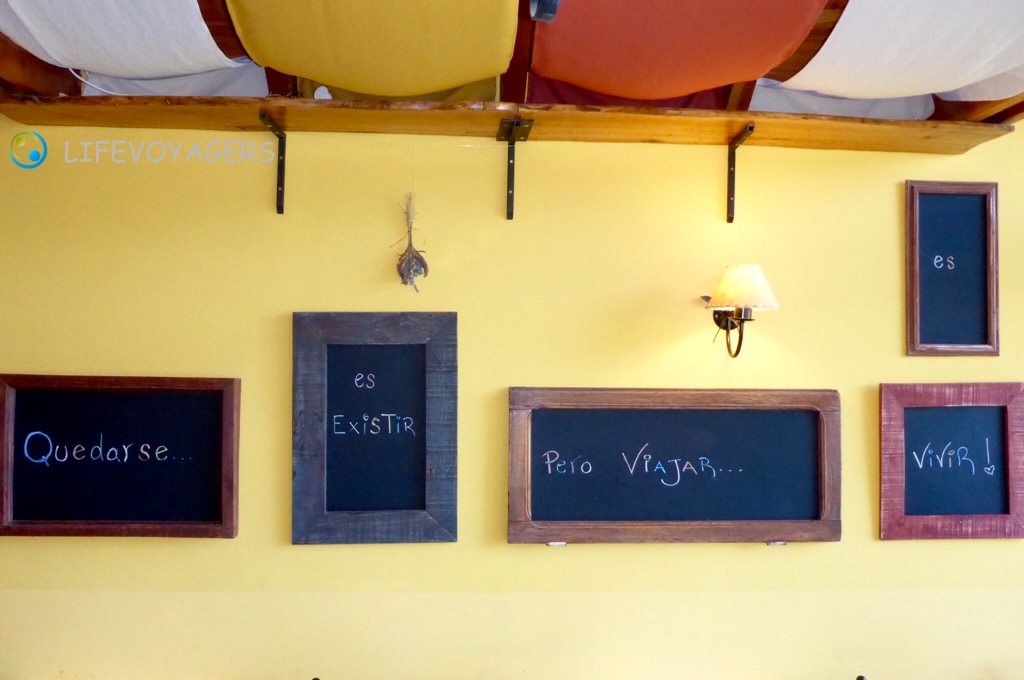
Motto of the Peninsula Petit Hotel we’re living just now: “To stay is to exist, to travel is to live!”
Lifevoyagers – Roadmap 2016!
Saturday, 13/02/2016
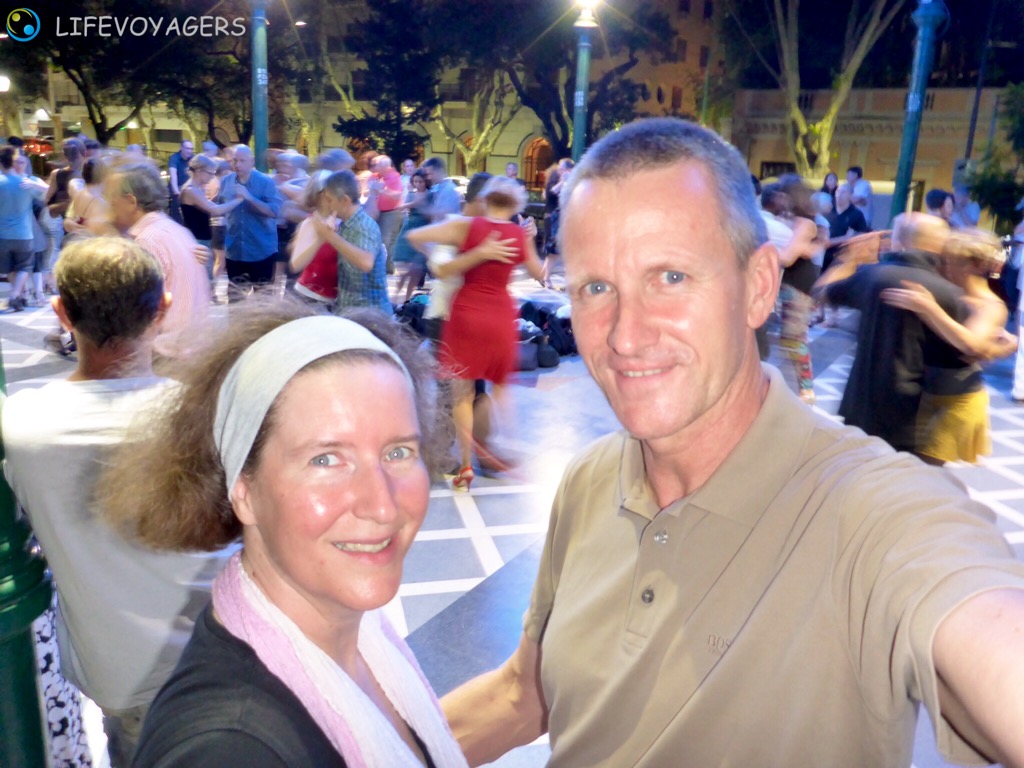
Enjoying our favourite Tango venue, the Glorieta in Belgrano, watching only, of course, foto unedited for you to see and nearly feel the heat of a summer evening in BA! How genuine the dancers’ passion for Tango is, devoid of any showmanship whatsoever, you can derive from the shoes worn at this Milonga: ANY type for the men, including for example Crocs and sandals, and ANY type for the women, even flat shoes, then dancing on tip toes, both can even be observed for highly skilled dancers. All ages are mixed in couples, couples are re-mixing often, any kind of dress can be observed in both men and women, what they all have in common is to enjoy a wonderful open air Milonga!
How to travel from A to B on a budget, not wanting to take on the huge distances of this continent by 24-hour-or-more-bus-trips, because no longer twenty, but one-way-flights of all carriers mostly very expensive, and South-America-Flight-Passes only available when also owning an intercontinental ticket of the same carrier, which we don’t because we’ll move on using Air-Miles?
Find multi-destination-and-carrier-hubs (Bogotá and São Paulo), and if at all possible a Star Alliance (Miles and More) carrier: Colombian Avianca: booked as a multi-destination-bundle, i.e. one-way-flights in sequence, these are at least much more affordable, in the end they cost on average 270 Euro per person and leg, that’s at least much better than nearly 900 USD they were asking for BA to Bogotá alone, and we can even collect Airmiles! But this also means early planning of a rather long period in advance, of course!
On top you’ve got to take into account and cleverly combine the climate and ideal travel times, what do we want to see at all, what cannot even be achieved within two years, and at some destinations even via AirBnB and the like, don’t provide cheap and acceptable accommodation, for example, amazingly so, Panama, of all places, and again, our aimed at budget per night “in a double room” (NOT per person) is about 24 Euros (!!!), a true jigsaw puzzle! A blessing having planned these five weeks in BA after Bahia Bustamante, for recreation and for giving us the time to achieve this in peace rather than on the move!
And here is the result of much wrought heads, fingers, processors, smart devices and credit cards, AirBnB accommodation everywhere booked already:
Carrier Aerolinas Argentinas:
23 days: 16.02. – 10.03.: BA – Bariloche (“Switzerland of Argentina and Lake District”) – BA
5 days: 10.03. – 15.03.: BA
Carrierr Avianca (Star Alliance, collecting Miles!):
28 days: 16.03. – 12.03.: BA – Bogotá, Colombia
35 days: 12.03. – 17.05.: Bogotá – Quito, Ecuador, and surrounding Andes
14 days: 17.05. – 31.05.: Quito – Lima, Peru
30 days: 31.05. – 30.06.: Lima – Cuzco – Ollantaytambo, Sacred Valley, Workaway! (Carrier LAN)
5 days: 30.06. – 05.07.: Lima
19 days: 06.07. – 25.07.: Lima – Sao Paulo, Brazil, and surrounding area
Carrier South African Airways, using Airmiles, Carsten Business, Claudia Eco:
28 days: 26.07. – 23.08.: Sao Paulo -Johannesburg, South Africa – Durban, South Africa, Workaway, position yet to be confirmed!
23.08. – open: probably Gardenroute and Cape Town,
and afterwards most probably Namibia
And here in map format:
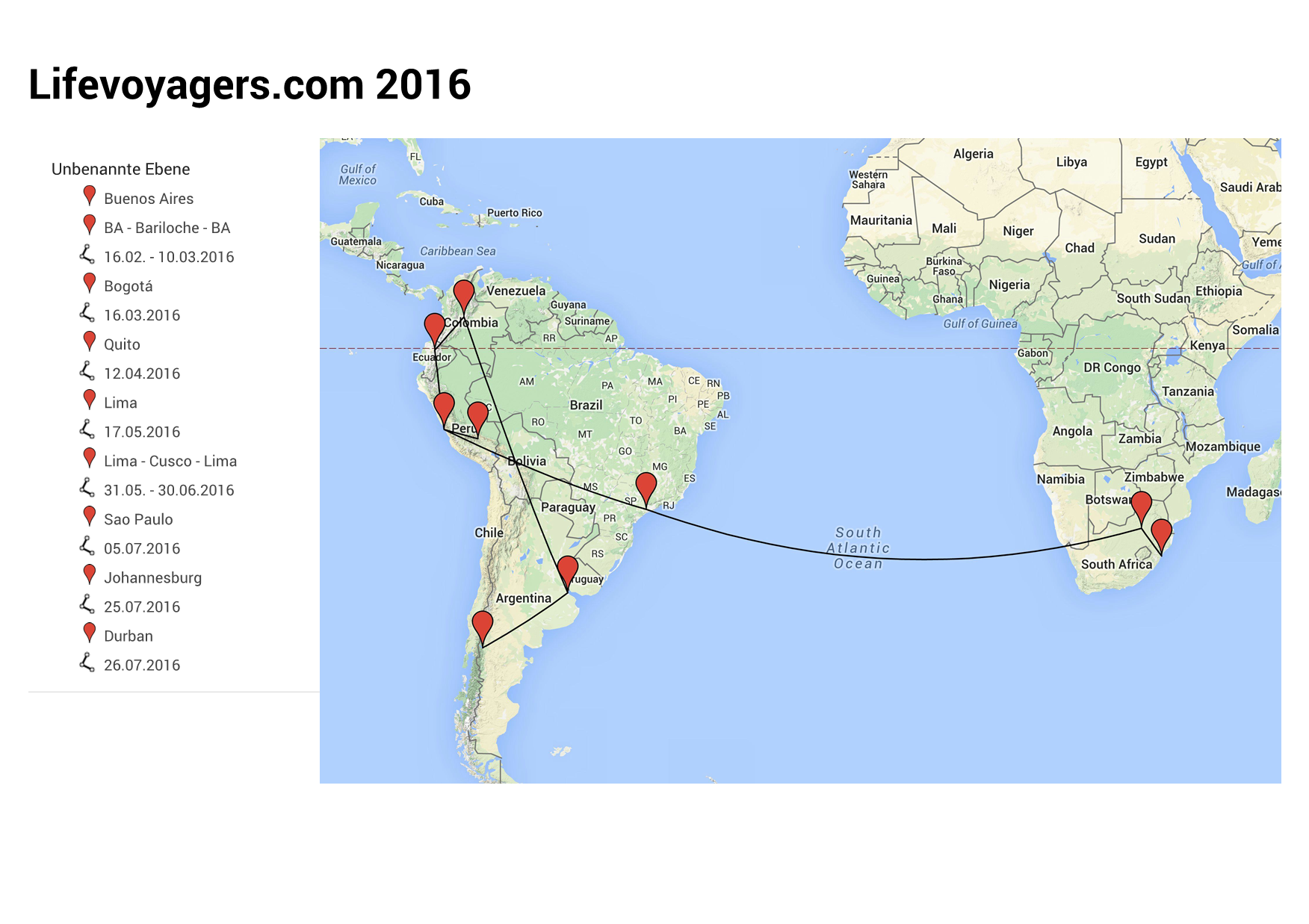
Including the Airmiles-flights to South Africa, which only cost us taxes and fees, every single flight leg now costs us 193 Euros in the average, including the Business-and Eco-Class longhaul flights to Johannesburg, this average is probably going to decrease even further because national flights within South Africa and flights to Namibia are cheaper than said average, so nothing to complain about!
Some more impressions so not to disappoint those of you who want more fotos ;-)), and so you see we still don’t get bored in BA, which of course we’ll leave for good after our short return in March (sniff, sniff), but of course we hope to come back one day…:
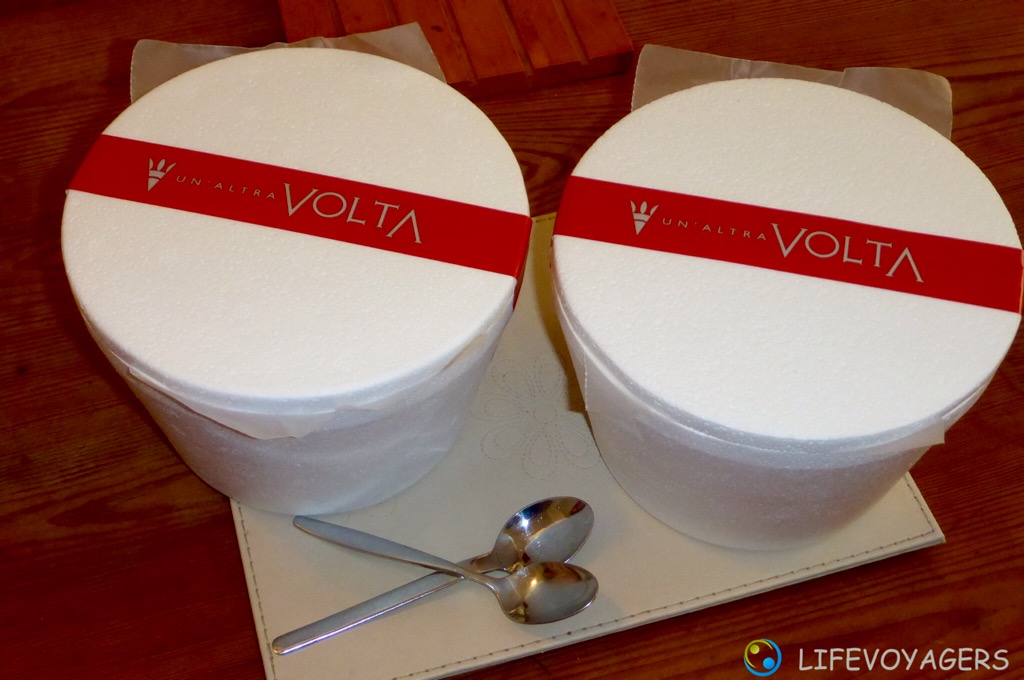

For once used one of the dozens of vouchers received at local Carrefour supermarket for icecream at Volta: two Kilos for the price of one (ca. 9 Euros, gluten free), cocos-dulce-de leche, orange-maracuja, strawberry-cream, and berry-mascarpone, yummy! It lasted two weeks!
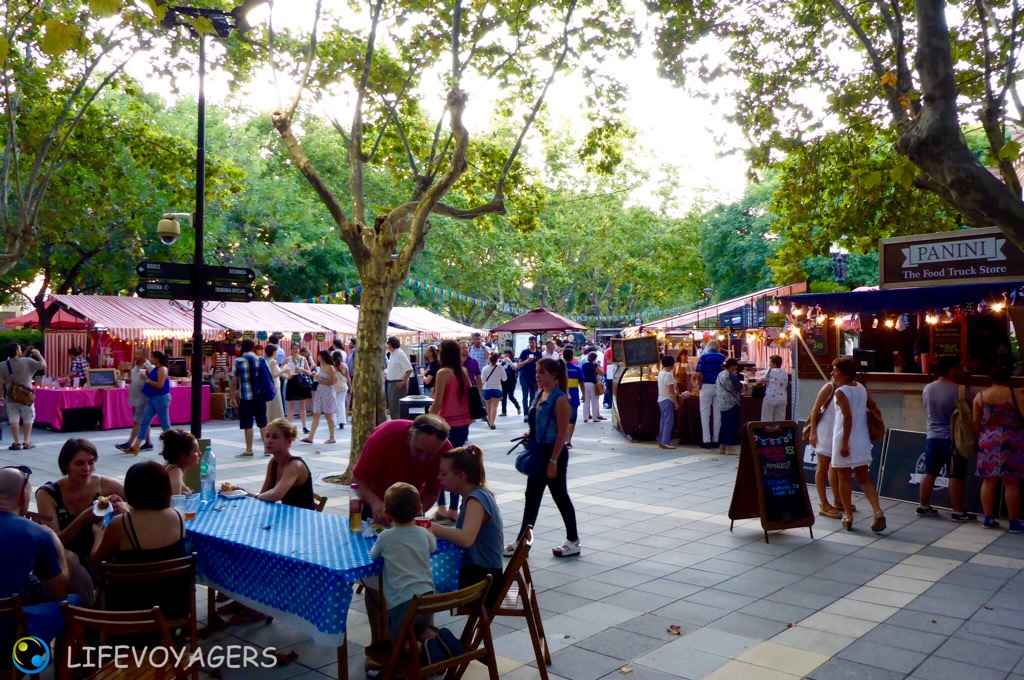
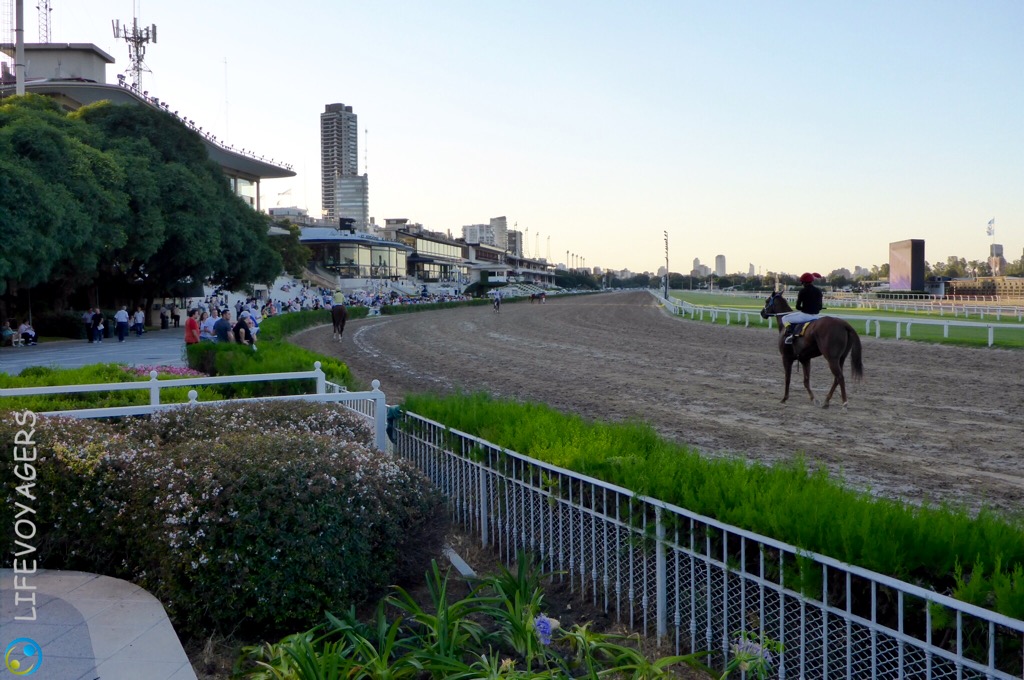
Buenos Aires Market Special Edition, on a Friday evening at the Hipodromo Argentino de Palermo in BA, races still going strong, atmosphere magical with a full moon…
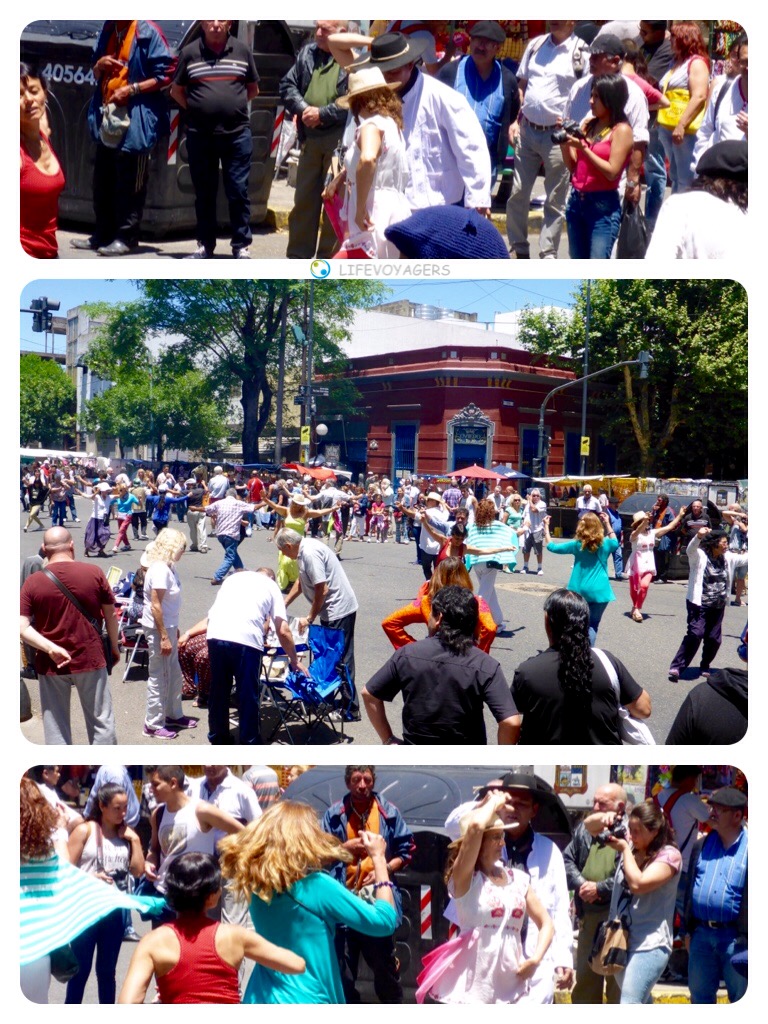
Feria de Mataderos, suburb of BA, a favourite haunt of ours too, with a lot of merry and passionate dancing, look at the Gaucho!
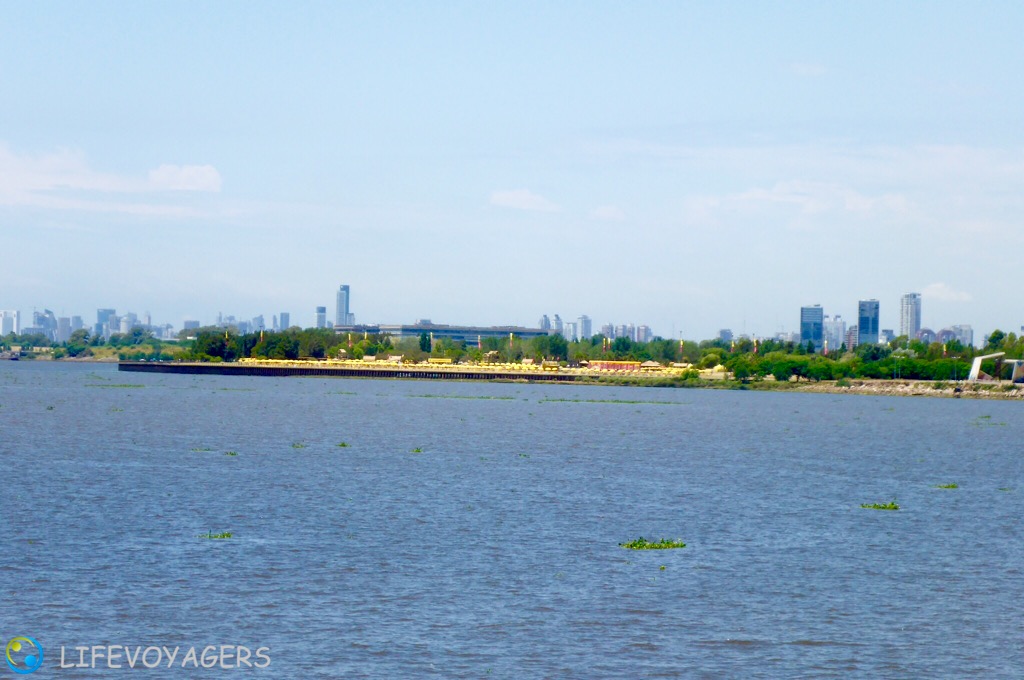
With a magnifying glass you can make out a summer special: Playa de Buenos Aires, yellow sun parasols and loungers at the (concreted) shores of Rio de la Plata, we were slightly off the mark in our search for it, as you can see, Parque de los ninos, it’s location, being so big… ;-))). You can already see the water hyazinths swimming on the river, playing an important role… read on…
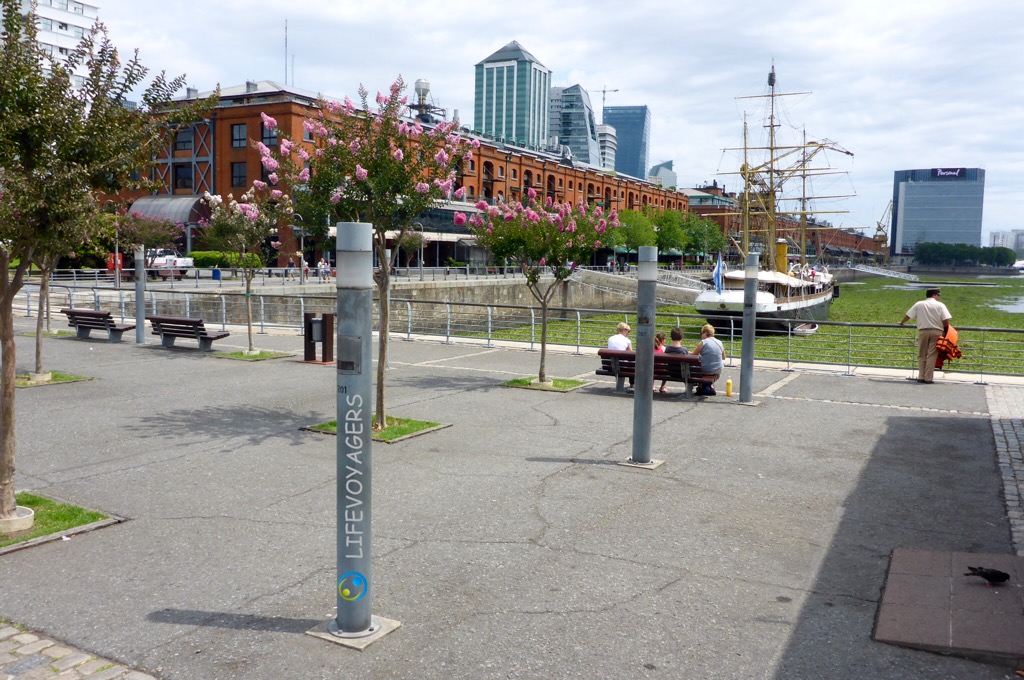
Water hyazinths covering nearly the whole of Puerto Madero, we even saw big birds nesting on them, but they also brought an overpopulation of venomous snakes and rodents with them as we soon discovered on our favourite walk along the coast of the Rio de la Plata in Costanera Sur, luckily just by getting warned by respective signs at cordoned off areas, not by personal encounter…
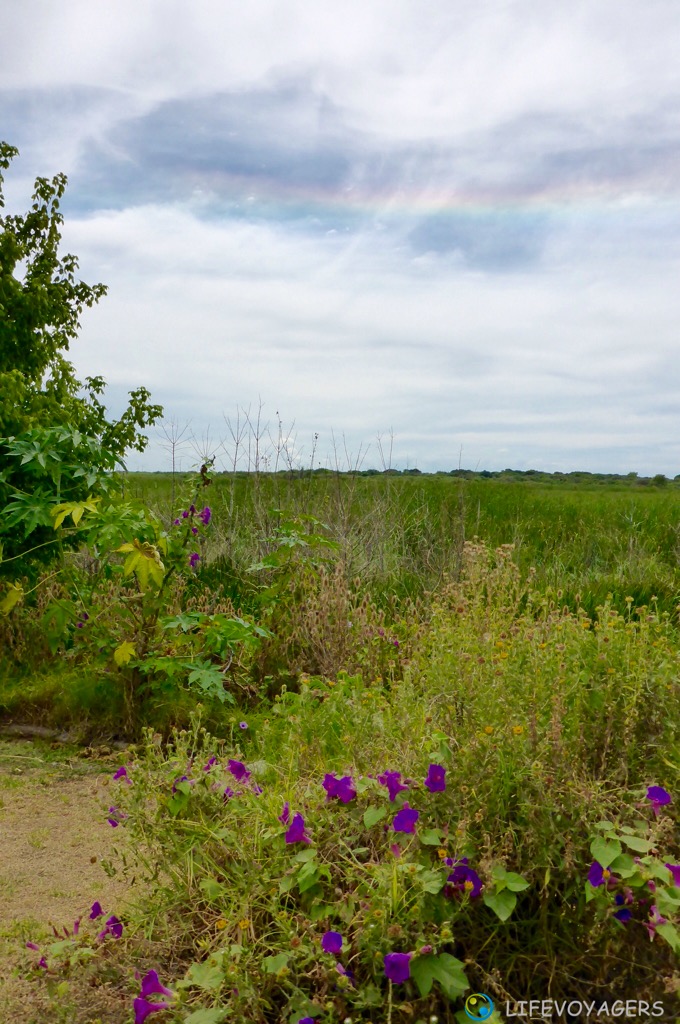
Not being able to use our favourite resting spot alongside Rio de la Plata in Costanera Sur due to the snakes was equalled out by this lovely ‘rainbow’!
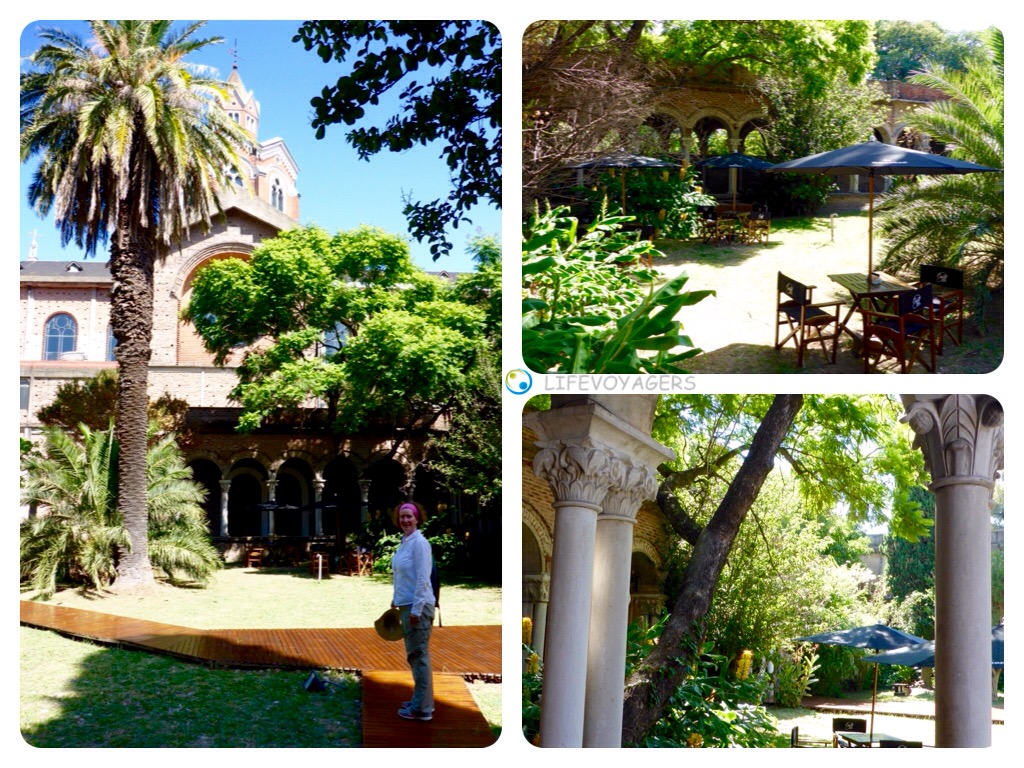
Latest location discovery: Café BA next to Centro Cultural Abadia in Las Canitas in BA, a true oasis!
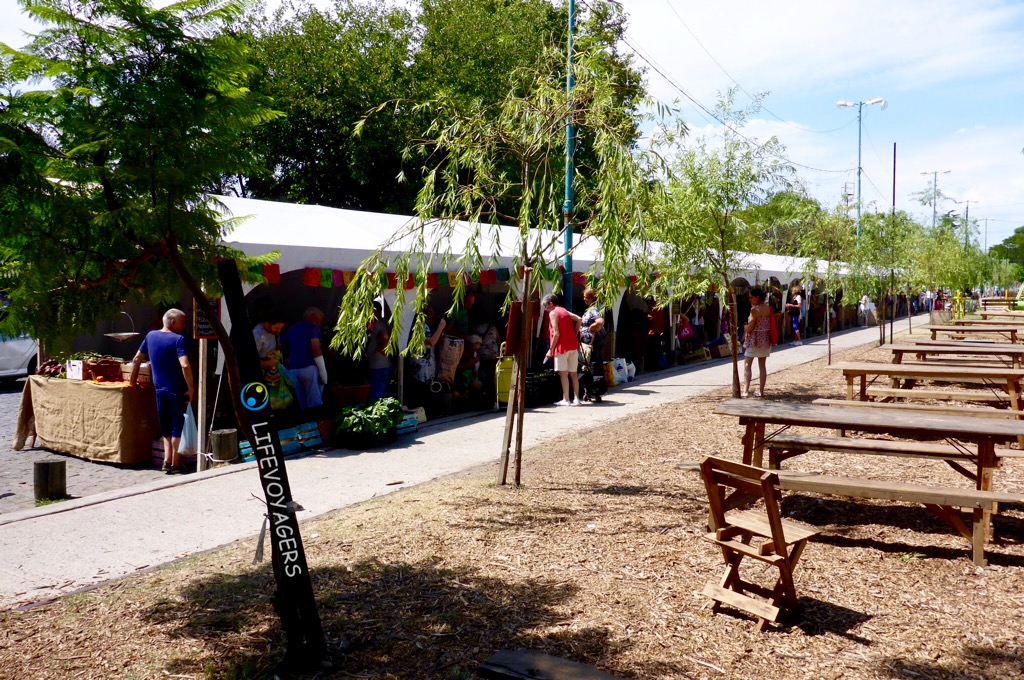
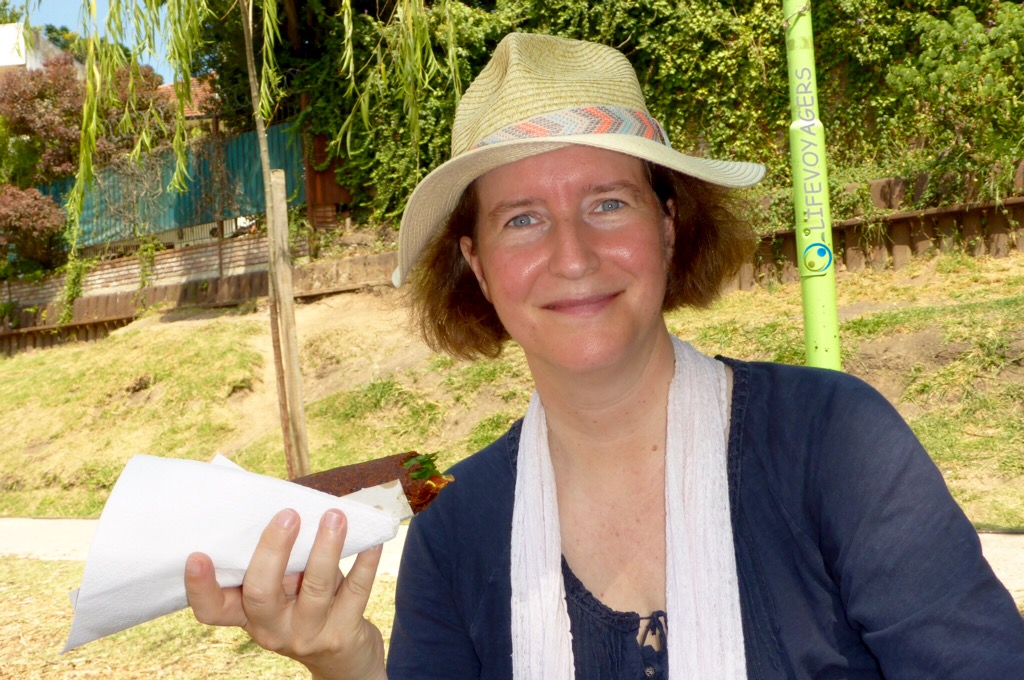
Claudia at the Sabe la Tierra market in Vicente Lopez, a short, cheap, and unpredictable train ride away, neighbouring town of BA but of course fully welded into it meanwhile, a little market (above) which tries to be sustainable, ecologic, vegetarian/vegan, feats even more difficult to achieve in this country… The food is a wrap made of dried tomatos and linseed, a superb idea, delicious including the stuffing, and of course gluten free!
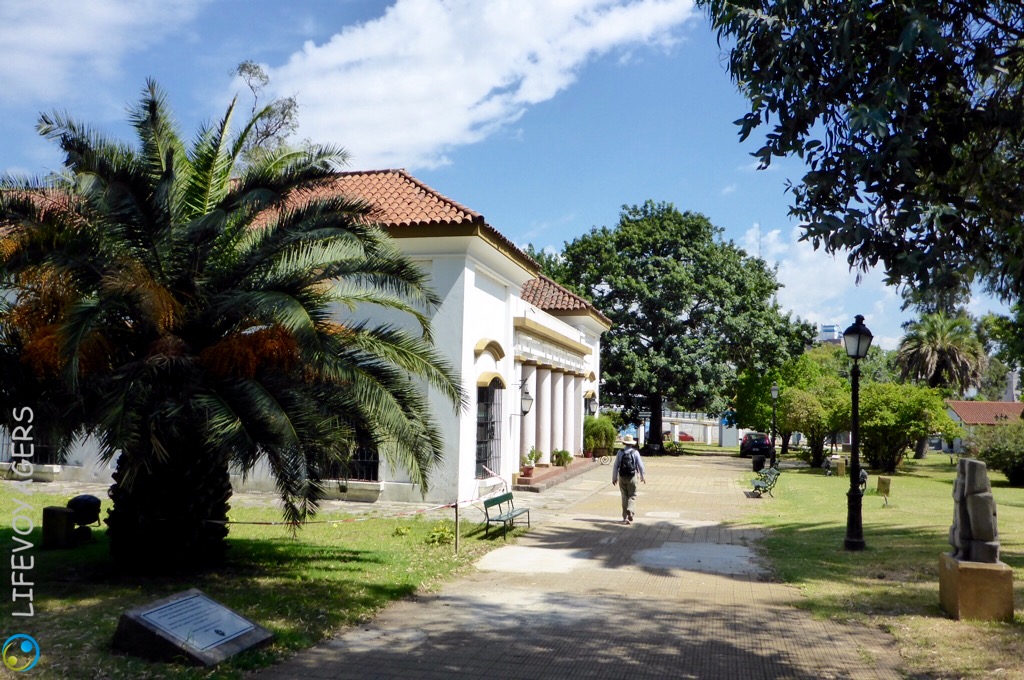
Saavedra Museum at the western outskirts of town, next to Vicente Lopez, a nice little museum in his old palacio, Spanish style, in tranquil gardens, covers Cornelio de Saavedra, Argentinian politician and general end of 18th, beginning of 19th century, as well as memorabilia and furniture of the period.
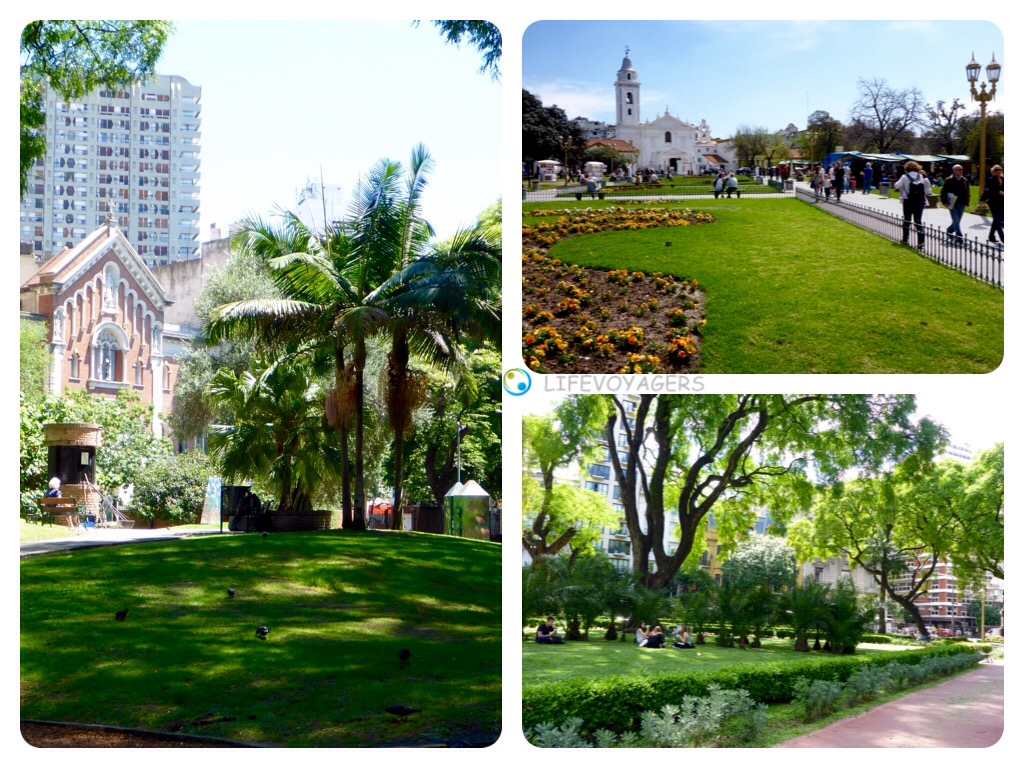
And of course the wonderful array of refreshing BA parks, clockwise: Plaza V. Lopez y Planes, handycraft market on summer weekends in Plaza Francia in front of the Recoleta graveyard, and Plaza Rodriguez Pena, this choice all in Recoleta alone!
Two other pleasures of long term travelling include the prolongation of our 90-days-tourist-visa for Argentina, we will exceed our stay by 16 days, which requires a fee of 600 pesos each, the same, by the way, as the fine you’ve got to pay once you don’t prolong your visa but exceed your stay anyway…., as diligent Germans we of course approached the authorities in time to do this, waited in line for receiving a waiting-number-ticket (??), waited in another line for our number to be called, but were, on our first attempt, told not to come back before 10th of February for expiry on February 27th, so we dutifully returned on February 11th, only to be told the system, by default, would only be able to process the prolongation within ten days before expiry, and could we please return on Febuary 17th?! On that day we’ll already be in Bariloche, so will try again there, needless to say we of course studied the ministry’s website before the whole operation, but it of course doesn’t contain any of this advise… Plan B: If Bariloche fails to prolong our visa, we will exceed it and pay the fine one day prior to our departure in Ezeiza Airport (extra trip there of course…). That said: the civil service office in Germany responsible for registering weddings had wrong information on their website too, asking for a completely different supporting document than the one needed, so there… The even more expensive option would have been to travel to Uruguay, Colonia de Sacramento, for a day, and reenter the country with 90 more days, but even the price of the cheapest carrier was too high compared to our rather low interest in this daytrip… To be continued! ;-)))
The other exciting operation is necessary because Namibia asks for a passport valid until 6 months after departure from their country, Carsten’s fell just short of this although valid until March 2017, but that means getting issued a passport from the Embassy of Germany in BA, who of course isn’t “in charge” for German residents but only for Germans who are residents of Argentina, which increases the price from 80 Euro to 136 Euro, and since the issuing and shipping takes many weeks we would have had to collect it in another country we travel to next, so yes, please, we’d like the express version within three weeks, no problem, so 171 Euros in total, outch, the passport probably flies Business Class… ;-))).
So off to Bariloche next Tuesday, probably we’ll be back with the next post from Colombia!
Take care meanwhile, abrazos (hugs) to all of you!
C&C, Lifevoyagers
